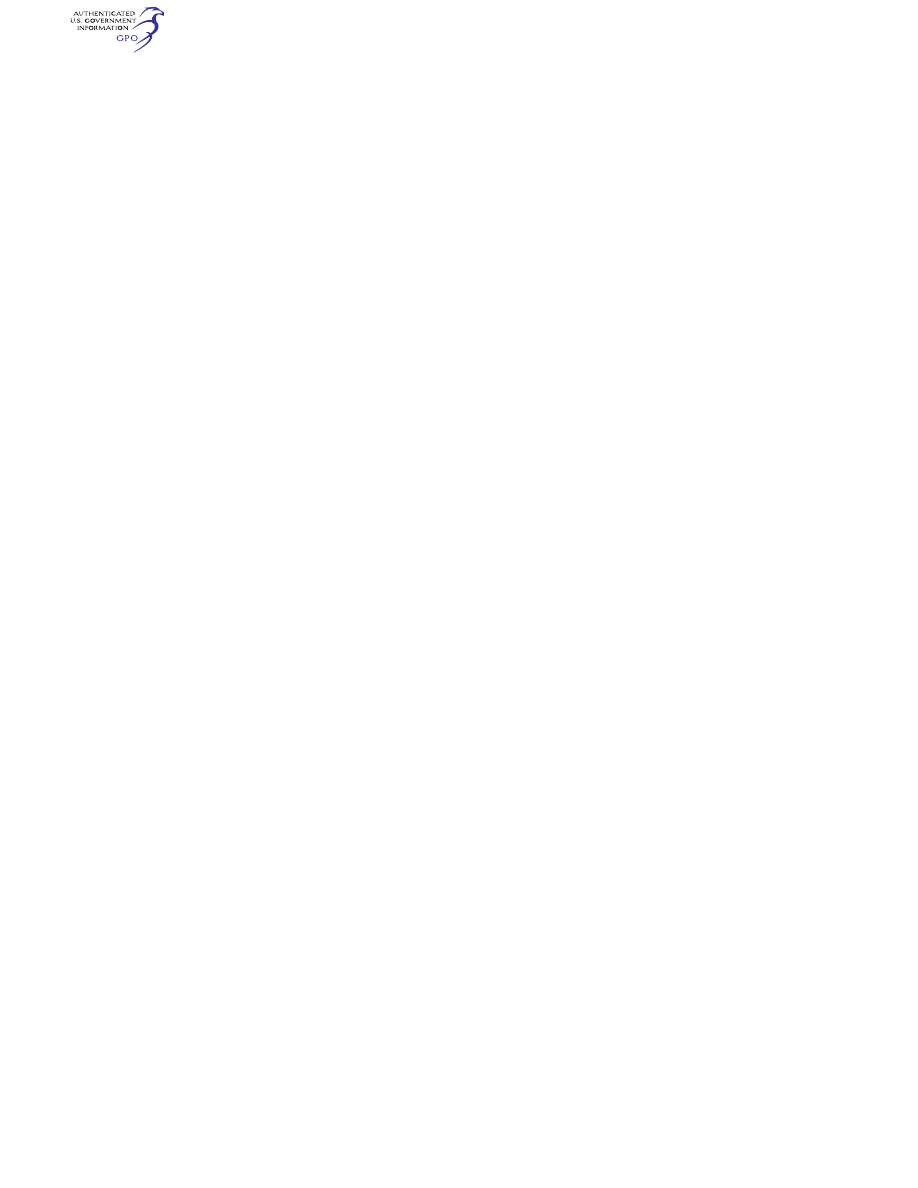
676
14 CFR Ch. I (1–1–24 Edition)
§ 89.545
(2) A petition to reconsider the re-
scission of the Administrator’s accept-
ance of a declaration of compliance
must show that the petitioner is an in-
terested party and has been adversely
affected by the decision of the FAA.
The petition must also demonstrate at
least one of the following:
(i) The petitioner adduces a signifi-
cant additional fact not previously pre-
sented to the FAA.
(ii) The Administrator made a mate-
rial error of fact in the decision to re-
scind acceptance of the declaration of
compliance.
(iii) The Administrator did not cor-
rectly interpret a law, regulation, or
precedent.
(3) Upon consideration of the infor-
mation submitted by the petitioner,
the Administrator will notify the peti-
tioner and the person who submitted
the declaration of compliance (if dif-
ferent) of the decision on whether to
reinstate the Administrator’s accept-
ance of the declaration of compliance.
(c)
Inapplicability of part 13, subpart D,
of this chapter. Part 13, subpart D, of
this chapter does not apply to the pro-
cedures of paragraphs (a) and (b) of this
section.
§ 89.545
Record retention.
A person who submits a declaration
of compliance under this subpart that
is accepted by the Administrator must
retain the following information for as
long as the standard remote identifica-
tion unmanned aircraft or remote iden-
tification broadcast module listed on
that declaration of compliance is pro-
duced plus an additional 24 calendar
months, and must make available for
inspection by the Administrator the
following:
(a) The means of compliance, all doc-
umentation, and substantiating data
related to the means of compliance
used.
(b) Records of all test results.
(c) Any other information necessary
to demonstrate compliance with the
means of compliance so that the stand-
ard remote identification unmanned
aircraft or remote identification broad-
cast module meets the remote identi-
fication requirements and the design
and production requirements of this
part.
PART 91—GENERAL OPERATING
AND FLIGHT RULES
S
PECIAL
F
EDERAL
A
VIATION
R
EGULATION
N
O
.
50–2
S
PECIAL
F
EDERAL
A
VIATION
R
EGULATION
N
O
.
60
S
PECIAL
F
EDERAL
A
VIATION
R
EGULATION
N
O
.
97
S
PECIAL
F
EDERAL
A
VIATION
R
EGULATION
N
O
.
104
Subpart A—General
Sec.
91.1
Applicability.
91.3
Responsibility and authority of the
pilot in command.
91.5
Pilot in command of aircraft requiring
more than one required pilot.
91.7
Civil aircraft airworthiness.
91.9
Civil aircraft flight manual, marking,
and placard requirements.
91.11
Prohibition on interference with crew-
members.
91.13
Careless or reckless operation.
91.15
Dropping objects.
91.17
Alcohol or drugs.
91.19
Carriage of narcotic drugs, marihuana,
and depressant or stimulant drugs or
substances.
91.21
Portable electronic devices.
91.23
Truth-in-leasing clause requirement in
leases and conditional sales contracts.
91.25
Aviation Safety Reporting Program:
Prohibition against use of reports for en-
forcement purposes.
91.27–91.99
[Reserved]
Subpart B—Flight Rules
G
ENERAL
91.101
Applicability.
91.103
Preflight action.
91.105
Flight crewmembers at stations.
91.107
Use of safety belts, shoulder har-
nesses, and child restraint systems.
91.109
Flight instruction; Simulated instru-
ment flight and certain flight tests.
91.111
Operating near other aircraft.
91.113
Right-of-way rules: Except water op-
erations.
91.115
Right-of-way rules: Water operations.
91.117
Aircraft speed.
91.119
Minimum safe altitudes: General.
91.121
Altimeter settings.
91.123
Compliance with ATC clearances and
instructions.
91.125
ATC light signals.
91.126
Operating on or in the vicinity of an
airport in Class G airspace.
91.127
Operating on or in the vicinity of an
airport in Class E airspace.
91.129
Operations in Class D airspace.
91.130
Operations in Class C airspace.
91.131
Operations in Class B airspace.
VerDate Sep<11>2014
14:00 Mar 14, 2024
Jkt 262047
PO 00000
Frm 00686
Fmt 8010
Sfmt 8010
Q:\14\14V2.TXT
PC31
aworley on LAPBH6H6L3 with DISTILLER

677
Federal Aviation Administration, DOT
Pt. 91
91.133
Restricted and prohibited areas.
91.135
Operations in Class A airspace.
91.137
Temporary flight restrictions in the
vicinity of disaster/hazard areas.
91.138
Temporary flight restrictions in na-
tional disaster areas in the State of Ha-
waii.
91.139
Emergency air traffic rules.
91.141
Flight restrictions in the proximity
of the Presidential and other parties.
91.143
Flight limitation in the proximity of
space flight operations.
91.144
Temporary restriction on flight oper-
ations during abnormally high baro-
metric pressure conditions.
91.145
Management of aircraft operations in
the vicinity of aerial demonstrations and
major sporting events.
91.146
Passenger-carrying flights for the
benefit of a charitable, nonprofit, or
community event.
91.147
Passenger carrying flights for com-
pensation or hire.
91.148–91.149
[Reserved]
V
ISUAL
F
LIGHT
R
ULES
91.151
Fuel requirements for flight in VFR
conditions.
91.153
VFR flight plan: Information re-
quired.
91.155
Basic VFR weather minimums.
91.157
Special VFR weather minimums.
91.159
VFR cruising altitude or flight level.
91.161
Special awareness training required
for pilots flying under visual flight rules
within a 60-nautical mile radius of the
Washington, DC VOR/DME.
91.162–91.165
[Reserved]
I
NSTRUMENT
F
LIGHT
R
ULES
91.167
Fuel requirements for flight in IFR
conditions.
91.169
IFR flight plan: Information required.
91.171
VOR equipment check for IFR oper-
ations.
91.173
ATC clearance and flight plan re-
quired.
91.175
Takeoff and landing under IFR.
91.176
Straight-in landing operations below
DA/DH or MDA using an enhanced flight
vision system (EFVS) under IFR.
91.177
Minimum altitudes for IFR oper-
ations.
91.179
IFR cruising altitude or flight level.
91.180
Operations within airspace des-
ignated as Reduced Vertical Separation
Minimum airspace.
91.181
Course to be flown.
91.183
IFR communications.
91.185
IFR operations: Two-way radio com-
munications failure.
91.187
Operation under IFR in controlled
airspace: Malfunction reports.
91.189
Category II and III operations: Gen-
eral operating rules.
91.191
Category II and Category III manual.
91.193
Certificate of authorization for cer-
tain Category II operations.
91.195–91.199
[Reserved]
Subpart C—Equipment, Instrument, and
Certificate Requirements
91.201
[Reserved]
91.203
Civil aircraft: Certifications required.
91.205
Powered civil aircraft with standard
category U.S. airworthiness certificates:
Instrument and equipment requirements.
91.207
Emergency locator transmitters.
91.209
Aircraft lights.
91.211
Supplemental oxygen.
91.213
Inoperative instruments and equip-
ment.
91.215
ATC transponder and altitude report-
ing equipment and use.
91.217
Data correspondence between auto-
matically reported pressure altitude data
and the pilot’s altitude reference.
91.219
Altitude alerting system or device:
Turbojet-powered civil airplanes.
91.221
Traffic alert and collision avoidance
system equipment and use.
91.223
Terrain awareness and warning sys-
tem.
91.225
Automatic Dependent Surveillance-
Broadcast (ADS–B) Out equipment and
use.
91.227
Automatic Dependent Surveillance-
Broadcast (ADS–B) Out equipment per-
formance requirements.
91.228–91.299
[Reserved]
Subpart D—Special Flight Operations
91.301
[Reserved]
91.303
Aerobatic flight.
91.305
Flight test areas.
91.307
Parachutes and parachuting.
91.309
Towing: Gliders and unpowered ultra-
light vehicles.
91.311
Towing: Other than under § 91.309.
91.313
Restricted category civil aircraft: Op-
erating limitations.
91.315
Limited category civil aircraft: Oper-
ating limitations.
91.317
Provisionally certificated civil air-
craft: Operating limitations.
91.319
Aircraft having experimental certifi-
cates: Operating limitations.
91.321
Carriage of candidates in elections.
91.323
Increased maximum certificated
weights for certain airplanes operated in
Alaska.
91.325
Primary category aircraft: Operating
limitations.
91.326
[Reserved]
91.327
Aircraft having a special airworthi-
ness certificate in the light-sport cat-
egory: Operating limitations.
91.328–91.399
[Reserved]
VerDate Sep<11>2014
14:00 Mar 14, 2024
Jkt 262047
PO 00000
Frm 00687
Fmt 8010
Sfmt 8010
Q:\14\14V2.TXT
PC31
aworley on LAPBH6H6L3 with DISTILLER

678
14 CFR Ch. I (1–1–24 Edition)
Pt. 91
Subpart E—Maintenance, Preventive
Maintenance, and Alterations
91.401
Applicability.
91.403
General.
91.405
Maintenance required.
91.407
Operation after maintenance, preven-
tive maintenance, rebuilding, or alter-
ation.
91.409
Inspections.
91.410
[Reserved]
91.411
Altimeter system and altitude report-
ing equipment tests and inspections.
91.413
ATC transponder tests and inspec-
tions.
91.415
Changes to aircraft inspection pro-
grams.
91.417
Maintenance records.
91.419
Transfer of maintenance records.
91.421
Rebuilt engine maintenance records.
91.423–91.499
[Reserved]
Subpart F—Large and Turbine-Powered
Multiengine Airplanes and Fractional
Ownership Program Aircraft
91.501
Applicability.
91.503
Flying equipment and operating in-
formation.
91.505
Familiarity with operating limita-
tions and emergency equipment.
91.507
Equipment requirements: Over-the-
top or night VFR operations.
91.509
Survival equipment for overwater op-
erations.
91.511
Communication and navigation
equipment for overwater operations.
91.513
Emergency equipment.
91.515
Flight altitude rules.
91.517
Passenger information.
91.519
Passenger briefing.
91.521
Shoulder harness.
91.523
Carry-on baggage.
91.525
Carriage of cargo.
91.527
Operating in icing conditions.
91.529
Flight engineer requirements.
91.531
Second in command requirements.
91.533
Flight attendant requirements.
91.535
Stowage of food, beverage, and pas-
senger service equipment during aircraft
movement on the surface, takeoff, and
landing.
91.537–91.599
[Reserved]
Subpart G—Additional Equipment and Op-
erating Requirements for Large and
Transport Category Aircraft
91.601
Applicability.
91.603
Aural speed warning device.
91.605
Transport category civil airplane
weight limitations.
91.607
Emergency exits for airplanes car-
rying passengers for hire.
91.609
Flight data recorders and cockpit
voice recorders.
91.611
Authorization for ferry flight with
one engine inoperative.
91.613
Materials for compartment interiors.
91.615–91.699
[Reserved]
Subpart H—Foreign Aircraft Operations
and Operations of U.S.-Registered Civil
Aircraft Outside of the United States;
and Rules Governing Persons on Board
Such Aircraft
91.701
Applicability.
91.702
Persons on board.
91.703
Operations of civil aircraft of U.S.
registry outside of the United States.
91.705
[Reserved]
91.706
Operations within airspace designed
as Reduced Vertical Separation Min-
imum Airspace.
91.707
Flights between Mexico or Canada
and the United States.
91.709
Operations to Cuba.
91.711
Special rules for foreign civil air-
craft.
91.713
Operation of civil aircraft of Cuban
registry.
91.715
Special flight authorizations for for-
eign civil aircraft.
91.717–91.799
[Reserved]
Subpart I—Operating Noise Limits
91.801
Applicability: Relation to part 36.
91.803
Part 125 operators: Designation of ap-
plicable regulations.
91.805
Final compliance: Subsonic airplanes.
91.807–91.813
[Reserved]
91.815
Agricultural and fire fighting air-
planes: Noise operating limitations.
91.817
Civil aircraft sonic boom.
91.818
Special flight authorization to exceed
Mach 1.
91.819
Civil supersonic airplanes that do not
comply with part 36.
91.821
Civil supersonic airplanes: Noise lim-
its.
91.823–91.849
[Reserved]
91.851
Definitions.
91.853
Final compliance: Civil subsonic air-
planes.
91.855
Entry and nonaddition rule.
91.857
Stage 2 operations outside of the 48
contiguous United States.
91.858
Special flight authorizations for non-
revenue Stage 2 operations.
91.859
Modification to meet Stage 3, Stage
4, or Stage 5 noise levels.
91.861
Base level.
91.863
Transfers of Stage 2 airplanes with
base level.
91.865
Phased compliance for operators with
base level.
91.867
Phased compliance for new entrants.
91.869
Carry-forward compliance.
91.871
Waivers from interim compliance re-
quirements.
91.873
Waivers from final compliance.
VerDate Sep<11>2014
14:00 Mar 14, 2024
Jkt 262047
PO 00000
Frm 00688
Fmt 8010
Sfmt 8010
Q:\14\14V2.TXT
PC31
aworley on LAPBH6H6L3 with DISTILLER

679
Federal Aviation Administration, DOT
Pt. 91
91.875
Annual progress reports.
91.877
Annual reporting of Hawaiian oper-
ations.
91.879–91.880
[Reserved]
91.881
Final compliance: Civil subsonic jet
airplanes weighing 75,000 pounds or less.
91.883
Special flight authorizations for jet
airplanes weighing 75,000 pounds or less.
91.884–91.899
[Reserved]
Subpart J—Waivers
91.901
[Reserved]
91.903
Policy and procedures.
91.905
List of rules subject to waivers.
91.907–91.999
[Reserved]
Subpart K—Fractional Ownership
Operations
91.1001
Applicability.
91.1002
Compliance date.
91.1003
Management contract between
owner and program manager.
91.1005
Prohibitions and limitations.
91.1007
Flights conducted under part 121 or
part 135 of this chapter.
91.1009
Clarification of operational control.
91.1011
Operational control responsibilities
and delegation.
91.1013
Operational control briefing and ac-
knowledgment.
91.1014
Issuing or denying management
specifications.
91.1015
Management specifications.
91.1017
Amending program manager’s man-
agement specifications.
91.1019
Conducting tests and inspections.
91.1021
Internal safety reporting and inci-
dent/accident response.
91.1023
Program operating manual require-
ments.
91.1025
Program operating manual contents.
91.1027
Recordkeeping.
91.1029
Flight scheduling and locating re-
quirements.
91.1031
Pilot in command or second in com-
mand: Designation required.
91.1033
Operating information required.
91.1035
Passenger awareness.
91.1037
Large transport category airplanes:
Turbine engine powered; Limitations;
Destination and alternate airports.
91.1039
IFR takeoff, approach and landing
minimums.
91.1041
Aircraft proving and validation
tests.
91.1043
[Reserved]
91.1045
Additional equipment requirements.
91.1047
Drug and alcohol misuse education
program.
91.1049
Personnel.
91.1050
Employment of former FAA employ-
ees.
91.1051
Pilot safety background check.
91.1053
Crewmember experience.
91.1055
Pilot operating limitations and pair-
ing requirement.
91.1057
Flight, duty and rest time require-
ments; All crewmembers.
91.1059
Flight time limitations and rest re-
quirements: One or two pilot crews.
91.1061
Augmented flight crews.
91.1062
Duty periods and rest requirements:
Flight attendants.
91.1063
Testing and training: Applicability
and terms used.
91.1065
Initial and recurrent pilot testing
requirements.
91.1067
Initial and recurrent flight attend-
ant crewmember testing requirements.
91.1069
Flight crew: Instrument proficiency
check requirements.
91.1071
Crewmember: Tests and checks,
grace provisions, training to accepted
standards.
91.1073
Training program: General.
91.1075
Training program: Special rules.
91.1077
Training program and revision: Ini-
tial and final approval.
91.1079
Training program: Curriculum.
91.1081
Crewmember training requirements.
91.1083
Crewmember emergency training.
91.1085
Hazardous materials recognition
training.
91.1087
Approval of aircraft simulators and
other training device.
91.1089
Qualifications: Check pilots (air-
craft) and check pilots (simulator).
91.1091
Qualifications: Flight instructors
(aircraft) and flight instructors (simu-
lator).
91.1093
Initial and transition training and
checking: Check pilots (aircraft), check
pilots (simulator).
91.1095
Initial and transition training and
checking: Flight instructors (aircraft),
flight instructors (simulator).
91.1097
Pilot and flight attendant crew-
member training programs.
91.1099
Crewmember initial and recurrent
training requirements.
91.1101
Pilots: Initial, transition, and up-
grade ground training.
91.1103
Pilots: Initial, transition, upgrade,
requalification, and differences flight
training.
91.1105
Flight attendants: Initial and transi-
tion ground training.
91.1107
Recurrent training.
91.1109
Aircraft maintenance: Inspection
program.
91.1111
Maintenance training.
91.1113
Maintenance recordkeeping.
91.1115
Inoperable instruments and equip-
ment.
91.1411
Continuous airworthiness mainte-
nance program use by fractional owner-
ship program manager.
91.1413
CAMP: Responsibility for airworthi-
ness.
91.1415
CAMP: Mechanical reliability re-
ports.
91.1417
CAMP: Mechanical interruption
summary report.
VerDate Sep<11>2014
14:00 Mar 14, 2024
Jkt 262047
PO 00000
Frm 00689
Fmt 8010
Sfmt 8010
Q:\14\14V2.TXT
PC31
aworley on LAPBH6H6L3 with DISTILLER

680
14 CFR Ch. I (1–1–24 Edition)
Pt. 91, SFAR No. 50–2
91.1423
CAMP: Maintenance organization.
91.1425
CAMP: Maintenance, preventive
maintenance, and alteration programs.
91.1427
CAMP: Manual requirements.
91.1429
CAMP: Required inspection per-
sonnel.
91.1431
CAMP: Continuing analysis and sur-
veillance.
91.1433
CAMP: Maintenance and preventive
maintenance training program.
91.1435
CAMP: Certificate requirements.
91.1437
CAMP: Authority to perform and ap-
prove maintenance.
91.1439
CAMP: Maintenance recording re-
quirements.
91.1441
CAMP: Transfer of maintenance
records.
91.1443
CAMP: Airworthiness release or air-
craft maintenance log entry.
Subpart L—Continued Airworthiness and
Safety Improvements
91.1501
Purpose and definition.
91.1503
[Reserved]
91.1505
Repairs assessment for pressurized
fuselages.
91.1507
Fuel tank system inspection pro-
gram.
Subpart M—Special Federal Aviation
Regulations
91.1603
Special Federal Aviation Regulation
No. 112—Prohibition Against Certain
Flights in the Territory and Airspace of
Libya.
91.1605
Special Federal Aviation Regulation
No. 77—Prohibition Against Certain
Flights in the Baghdad Flight Informa-
tion Region (FIR) (ORBB).
91.1607
[Reserved]
§ 91.1609
Special Federal Aviation Regula-
tion No. 114—Prohibition Against Cer-
tain Flights in the Damascus Flight In-
formation Region (FIR) (OSTT).
91.1611
Special Federal Aviation Regulation
No. 115—Prohibition Against Certain
Flights in Specified Areas of the Sanaa
Flight Information Region (FIR) (OYSC).
91.1613
Special Federal Aviation Regulation
No. 107—Prohibition Against Certain
Flights in the Territory and Airspace of
Somalia.
91.1615
Special Federal Aviation Regulation
No. 79—Prohibition Against Certain
Flights in the Pyongyang Flight Infor-
mation Region (FIR) (ZKKP).
91.1617
Special Federal Aviation Regulation
No. 117—Prohibition Against Certain
Flights in the Tehran Flight Information
Region (FIR) (OIIX).
91.1619
Special Federal Aviation Regulation
No. 119—Prohibition Against Certain
Flights in the Kabul Flight Information
Region (FIR) (OAKX).
Subpart N—Mitsubishi MU–2B Series Spe-
cial Training, Experience, and Oper-
ating Requirements
91.1701
Applicability.
91.1703
Compliance and eligibility.
91.1705
Required pilot training.
91.1707
Training program hours.
91.1709
Training program approval.
91.1711
Aeronautical experience.
91.1713
Instruction, checking, and evalua-
tion.
91.1715
Currency requirements and flight re-
view.
91.1717
Operating requirements.
91.1719
Credit for prior training.
91.1721
Incorporation by reference.
A
PPENDIX
A
TO
P
ART
91—C
ATEGORY
II O
PER
-
ATIONS
: M
ANUAL
, I
NSTRUMENTS
, E
QUIP
-
MENT
,
AND
M
AINTENANCE
A
PPENDIXES
B—C
TO
P
ART
91 [R
ESERVED
]
A
PPENDIX
D
TO
P
ART
91—A
IRPORTS
/L
OCA
-
TIONS
: S
PECIAL
O
PERATING
R
ESTRICTIONS
A
PPENDIX
E
TO
P
ART
91—A
IRPLANE
F
LIGHT
R
ECORDER
S
PECIFICATIONS
A
PPENDIX
F
TO
P
ART
91—H
ELICOPTER
F
LIGHT
R
ECORDER
S
PECIFICATIONS
A
PPENDIX
G
TO
P
ART
91—O
PERATIONS IN
R
E
-
DUCED
V
ERTICAL
S
EPARATION
M
INIMUM
(RVSM) A
IRSPACE
A
UTHORITY
: 49 U.S.C. 106(f), 106(g), 40101,
40103, 40105, 40113, 40120, 44101, 44111, 44701,
44704, 44709, 44711, 44712, 44715, 44716, 44717,
44722, 46306, 46315, 46316, 46504, 46506–46507,
47122, 47508, 47528–47531, 47534, Pub. L. 114–190,
130 Stat. 615 (49 U.S.C. 44703 note); articles 12
and 29 of the Convention on International
Civil Aviation (61 Stat. 1180), (126 Stat. 11).
S
PECIAL
F
EDERAL
A
VIATION
R
EGULATION
N
O
. 50–2—S
PECIAL
F
LIGHT
R
ULES IN
THE
V
ICINITY OF THE
G
RAND
C
ANYON
N
ATIONAL
P
ARK
, AZ
Section 1. Applicability. This rule prescribes
special operating rules for all persons oper-
ating aircraft in the following airspace, des-
ignated as the Grand Canyon National Park
Special Flight Rules Area:
That airspace extending upward from the
surface up to but not including 14,500 feet
MSL within an area bounded by a line begin-
ning at lat. 36
°
09
′
30
″
N., long. 114
°
03
′
00
″
W.;
northeast to lat. 36
°
14
′
00
″
N., long. 113
°
09
′
50
″
W.; thence northeast along the boundary of
the Grand Canyon National Park to lat.
36
°
24
′
47
″
N., long. 112
°
52
′
00
″
W.; to lat. 36
°
30
′
30
″
N., long. 112
°
36
′
15
″
W. to lat. 36
°
21
′
30
″
N., long.
112
°
00
′
00
″
W. to lat. 36
°
35
′
30
″
N., long. 111
°
53
′
10
″
W., to lat. 36
°
53
′
00
″
N., long. 111
°
36
′
45
″
W. to
lat. 36
°
53
′
00
″
N., long. 111
°
33
′
00
″
W.; to lat.
36
°
19
′
00
″
N., long. 111
°
50
′
50
″
W.; to lat. 36
°
17
′
00
″
N., long. 111
°
42
′
00
″
W.; to lat. 35
°
59
′
30
″
N.,
VerDate Sep<11>2014
14:00 Mar 14, 2024
Jkt 262047
PO 00000
Frm 00690
Fmt 8010
Sfmt 8002
Q:\14\14V2.TXT
PC31
aworley on LAPBH6H6L3 with DISTILLER

681
Federal Aviation Administration, DOT
Pt. 91, SFAR No. 50–2
long. 111
°
42
′
00
″
W.; to lat. 35
°
57
′
30
″
N., long.
112
°
03
′
55
″
W.; thence counterclockwise via the
5 statute mile radius of the Grand Canyon
Airport airport reference point (lat. 35
°
57
′
09
″
N., long. 112
°
08
′
47
″
W.) to lat. 35
°
57
′
30
″
N.,
long. 112
°
14
′
00
″
W.; to lat. 35
°
57
′
30
″
N., long.
113
°
11
′
00
″
W.; to lat. 35
°
42
′
30
″
N., long.
113
°
11
′
00
″
W.; to 35
°
38
′
30
″
N.; long. 113
°
27
′
30
″
W.; thence counterclockwise via the 5 stat-
ute mile radius of the Peach Springs
VORTAC to lat. 35
°
41
′
20
″
N., long. 113
°
36
′
00
″
W.; to lat. 35
°
55
′
25
″
N., long. 113
°
49
′
10
″
W.; to
lat. 35
°
57
′
45
″
N., 113
°
45
′
20
″
W.; thence north-
west along the park boundary to lat. 36
°
02
′
20
″
N., long. 113
°
50
′
15
″
W.; to 36
°
00
′
10
″
N., long.
113
°
53
′
45
″
W.; thence to the point of begin-
ning.
Section 3. Aircraft operations: general. Ex-
cept in an emergency, no person may operate
an aircraft in the Special Flight Rules, Area
under VFR on or after September 22, 1988, or
under IFR on or after April 6, 1989, unless the
operation—
(a) Is conducted in accordance with the fol-
lowing procedures:
N
OTE
: The following procedures do not re-
lieve the pilot from see-and-avoid responsi-
bility or compliance with FAR 91.119.
(1) Unless necessary to maintain a safe dis-
tance from other aircraft or terrain—
(i) Remain clear of the areas described in
Section 4; and
(ii) Remain at or above the following alti-
tudes in each sector of the canyon:
Eastern section from Lees Ferry to North
Canyon and North Canyon to Boundary
Ridge: as prescribed in Section 5.
Boundary Ridge to Supai Point
(Yumtheska Point): 10,000 feet MSL.
Western section from Diamond Creek to
the Grant Wash Cliffs: 8,000 feet MSL.
(2) Proceed through the four flight cor-
ridors describe in Section 4 at the following
altitudes unless otherwise authorized in
writing by the responsible Flight Standards
office:
Northbound
11,500 or
13,500 feet MSL
Southbound
>10,500 or
>12,500 feet MSL
(b) Is authorized in writing by the respon-
sible Flight Standards office and is con-
ducted in compliance with the conditions
contained in that authorization. Normally
authorization will be granted for operation
in the areas described in Section 4 or below
the altitudes listed in Section 5 only for op-
erations of aircraft necessary for law en-
forcement, firefighting, emergency medical
treatment/evacuation of persons in the vicin-
ity of the Park; for support of Park mainte-
nance or activities; or for aerial access to
and maintenance of other property located
within the Special Flight Rules Area. Au-
thorization may be issued on a continuing
basis.
(c)(1) Prior to November 1, 1988, is con-
ducted in accordance with a specific author-
ization to operate in that airspace incor-
porated in the operator’s part 135 operations
specifications in accordance with the provi-
sions of SFAR 50–1, notwithstanding the pro-
visions of Sections 4 and 5; and
(2) On or after November 1, 1988, is con-
ducted in accordance with a specific author-
ization to operate in that airspace incor-
porated in the operated in the operator’s op-
erations specifications and approved by the
responsible Flight Standards office in ac-
cordance with the provisions of SFAR 50–2.
(d) Is a search and rescue mission directed
by the U.S. Air Force Rescue Coordination
Center.
(e) Is conducted within 3 nautical miles of
Whitmore Airstrip, Pearce Ferry Airstrip,
North Rim Airstrip, Cliff Dwellers Airstrip,
or Marble Canyon Airstrip at an altitudes
less than 3,000 feet above airport elevation,
for the purpose of landing at or taking off
from that facility. Or
(f) Is conducted under an IFR clearance
and the pilot is acting in accordance with
ATC instructions. An IFR flight plan may
not be filed on a route or at an altitude that
would require operation in an area described
in Section 4.
Section 4. Flight-free zones. Except in an
emergency or if otherwise necessary for safe-
ty of flight, or unless otherwise authorized
by the responsible Flight Standards office
for a purpose listed in Section 3(b), no person
may operate an aircraft in the Special Flight
Rules Area within the following areas:
(a) Desert View Flight-Free Zone. Within
an area bounded by a line beginning at Lat.
35
°
59
′
30
″
N., Long. 111
°
46
′
20
″
W. to 35
°
59
′
30
″
N.,
Long. 111
°
52
′
45
″
W.; to Lat. 36
°
04
′
50
″
N., Long.
111
°
52
′
00
″
W.; to Lat. 36
°
06
′
00
″
N., Long.
111
°
46
′
20
″
W.; to the point of origin; but not
including the airspace at and above 10,500
feet MSL within 1 mile of the western bound-
ary of the zone. The area between the Desert
View and Bright Angel Flight-Free Zones is
designated the ‘‘Zuni Point Corridor.’’
(b) Bright Angel Flight-Free Zone. Within
an area bounded by a line beginning at Lat.
35
°
59
′
30
″
N., Long. 111
°
55
′
30
″
W.; to Lat.
35
°
59
′
30
″
N., Long. 112
°
04
′
00
″
W.; thence coun-
terclockwise via the 5 statute mile radius of
the Grand Canyon Airport point (Lat.
35
°
57
′
09
″
N., Long. 112
°
08
′
47
″
W.) to Lat.
36
°
01
′
30
″
N., Long. 112
°
11
′
00
″
W.; to Lat.
36
°
06
′
15
″
N., Long. 112
°
12
′
50
″
W.; to Lat.
36
°
14
′
40
″
N., Long. 112
°
08
′
50
″
W.; to Lat.
36
°
14
′
40
″
N., Long. 111
°
57
′
30
″
W.; to Lat.
36
°
12
′
30
″
N., Long. 111
°
53
′
50
″
W.; to the point
of origin; but not including the airspace at
and above 10,500 feet MSL within 1 mile of
the eastern boundary between the southern
VerDate Sep<11>2014
14:00 Mar 14, 2024
Jkt 262047
PO 00000
Frm 00691
Fmt 8010
Sfmt 8002
Q:\14\14V2.TXT
PC31
aworley on LAPBH6H6L3 with DISTILLER

682
14 CFR Ch. I (1–1–24 Edition)
Pt. 91, SFAR No. 60
boundary and Lat. 36
°
04
′
50
″
N. or the airspace
at and above 10,500 feet MSL within 2 miles
of the northwest boundary. The area bounded
by the Bright Angel and Shinumo Flight-
Free Zones is designated the ‘‘Dragon Cor-
ridor.’’
(c) Shinumo Flight-Free Zone. Within an
area bounded by a line beginning at Lat.
36
°
04
′
00
″
N., Long. 112
°
16
′
40
″
W.; northwest
along the park boundary to a point at Lat.
36
°
12
′
47
″
N., Long. 112
°
30
′
53
″
W.; to Lat.
36
°
21
′
15
″
N., Long. 112
°
20
′
20
″
W.; east along the
park boundary to Lat. 36
°
21
′
15
″
N., Long.
112
°
13
′
55
″
W.; to Lat. 36
°
14
′
40
″
N., Long.
112
°
11
′
25
″
W.; to the point of origin. The area
between the Thunder River/Toroweap and
Shinumo Flight Free Zones is designated the
‘‘Fossil Canyon Corridor.’’
(d) Toroweap/Thunder River Flight-Free
Zone. Within an area bounded by a line be-
ginning at Lat. 36
°
22
′
45
″
N., Long. 112
°
20
′
35
″
W.; thence northwest along the boundary of
the Grand Canyon National Park to Lat.
36
°
17
′
48
″
N., Long. 113
°
03
′
15
″
W.; to Lat.
36
°
15
′
00
″
N., Long. 113
°
07
′
10
″
W.; to Lat.
36
°
10
′
30
″
N., Long. 113
°
07
′
10
″
W.; thence east
along the Colorado River to the confluence
of Havasu Canyon (Lat. 36
°
18
′
40
″
N., Long.
112
°
45
′
45
″
W.;) including that area within a 1.5
nautical mile radius of Toroweap Overlook
(Lat. 36
°
12
′
45
″
N., Long. 113
°
03
′
30
″
W.); to the
point of origin; but not including the fol-
lowing airspace designated as the ‘‘Tuckup
Corridor’’: at or above 10,500 feet MSL within
2 nautical miles either side of a line extend-
ing between Lat. 36
°
24
′
47
″
N., Long. 112
°
48
′
50
″
W. and Lat. 36
°
17
′
10
″
N., Long. 112
°
48
′
50
″
W.; to
the point of origin.
Section 5. Minimum flight altitudes. Except
in an emergency or if otherwise necessary
for safety of flight, or unless otherwise au-
thorized by the responsible Flight Standards
office for a purpose listed in Section 3(b), no
person may operate an aircraft in the Spe-
cial Flight Rules Area at an altitude lower
than the following:
(a) Eastern section from Lees Ferry to
North Canyon: 5,000 feet MSL.
(b) Eastern section from North Canyon to
Boundary Ridge: 6,000 feet MSL.
(c) Boundary Ridge to Supai (Yumtheska)
Point: 7,500 feet MSL.
(d) Supai Point to Diamond Creek: 6,500
feet MSL.
(e) Western section from Diamond Creek to
the Grand Wash Cliffs: 5,000 feet MSL.
Section 9. Termination date. Section 1. Ap-
plicability, Section 4, Flight-free zones, and
Section 5. Minimum flight altitudes, expire
on April 19, 2001.
N
OTE
: [Removed]
[66 FR 1003, Jan. 4, 2001, as amended at 66 FR
16584, Mar. 26, 2001; 72 FR 9846, Mar. 6, 2007;
Docket FAA–2018–0119, Amdt. 91–350, 83 FR
9171, Mar. 5, 2018]
S
PECIAL
F
EDERAL
A
VIATION
R
EGULATION
N
O
. 60—A
IR
T
RAFFIC
C
ONTROL
S
YS
-
TEM
E
MERGENCY
O
PERATION
1. Each person shall, before conducting any
operation under the Federal Aviation Regu-
lations (14 CFR chapter I), be familiar with
all available information concerning that op-
eration, including Notices to Airmen issued
under § 91.139 and, when activated, the provi-
sions of the National Air Traffic Reduced
Complement Operations Plan available for
inspection at operating air traffic facilities
and Regional air traffic division offices, and
the General Aviation Reservation Program.
No operator may change the designated air-
port of intended operation for any flight con-
tained in the October 1, 1990, OAG.
2. Notwithstanding any provision of the
Federal Aviation Regulations to the con-
trary, no person may operate an aircraft in
the Air Traffic Control System:
a. Contrary to any restriction, prohibition,
procedure or other action taken by the Di-
rector of the Office of Air Traffic Systems
Management (Director) pursuant to para-
graph 3 of this regulation and announced in
a Notice to Airmen pursuant to § 91.139 of the
Federal Aviation Regulations.
b. When the National Air Traffic Reduced
Complement Operations Plan is activated
pursuant to paragraph 4 of this regulation,
except in accordance with the pertinent pro-
visions of the National Air Traffic Reduced
Complement Operations Plan.
3. Prior to or in connection with the imple-
mentation of the RCOP, and as conditions
warrant, the Director is authorized to:
a. Restrict, prohibit, or permit VFR and/or
IFR operations at any airport, Class B air-
space area, Class C airspace area, or other
class of controlled airspace.
b. Give priority at any airport to flights
that are of military necessity, or are medical
emergency flights, Presidential flights, and
flights transporting critical Government em-
ployees.
c. Implement, at any airport, traffic man-
agement procedures, that may include reduc-
tion of flight operations. Reduction of flight
operations will be accomplished, to the ex-
tent practical, on a pro rata basis among and
between air carrier, commercial operator,
and general aviation operations. Flights can-
celled under this SFAR at a high density
traffic airport will be considered to have
been operated for purposes of part 93 of the
Federal Aviation Regulations.
4. The Director may activate the National
Air Traffic Reduced Complement Operations
Plan at any time he finds that it is necessary
for the safety and efficiency of the National
Airspace System. Upon activation of the
RCOP and notwithstanding any provision of
the FAR to the contrary, the Director is au-
thorized to suspend or modify any airspace
designation.
VerDate Sep<11>2014
14:00 Mar 14, 2024
Jkt 262047
PO 00000
Frm 00692
Fmt 8010
Sfmt 8002
Q:\14\14V2.TXT
PC31
aworley on LAPBH6H6L3 with DISTILLER

683
Federal Aviation Administration, DOT
Pt. 91, SFAR No. 97
5. Notice of restrictions, prohibitions, pro-
cedures and other actions taken by the Di-
rector under this regulation with respect to
the operation of the Air Traffic Control sys-
tem will be announced in Notices to Airmen
issued pursuant to § 91.139 of the Federal
Aviation Regulations.
6. The Director may delegate his authority
under this regulation to the extent he con-
siders necessary for the safe and efficient op-
eration of the National Air Traffic Control
System.
(Authority: 49 U.S.C. app. 1301(7), 1303, 1344,
1348, 1352 through 1355, 1401, 1421 through
1431, 1471, 1472, 1502, 1510, 1522, and 2121
through 2125; articles 12, 29, 31, and 32(a) of
the Convention on International Civil Avia-
tion (61 stat. 1180); 42 U.S.C. 4321
et seq.; E.O.
11514, 35 FR 4247, 3 CFR, 1966–1970 Comp., p.
902; 49 U.S.C. 106(g))
[Doc. No. 26351, 55 FR 40760, Oct. 4, 1990, as
amended by Amdt. 91–227, 56 FR 65652, Dec.
17, 1991]
S
PECIAL
F
EDERAL
A
VIATION
R
EGULATION
N
O
. 97—S
PECIAL
O
PERATING
R
ULES
FOR
THE
C
ONDUCT
OF
I
NSTRUMENT
F
LIGHT
R
ULES
(IFR) A
REA
N
AVIGA
-
TION
(RNAV) O
PERATIONS
USING
G
LOBAL
P
OSITIONING
S
YSTEMS
(GPS)
IN
A
LASKA
Those persons identified in Section 1 may
conduct IFR en route RNAV operations in
the State of Alaska and its airspace on pub-
lished air traffic routes using TSO C145a/
C146a navigation systems as the only means
of IFR navigation. Despite contrary provi-
sions of parts 71, 91, 95, 121, 125, and 135 of
this chapter, a person may operate aircraft
in accordance with this SFAR if the fol-
lowing requirements are met.
Section 1.
Purpose, use, and limitations
a. This SFAR permits TSO C145a/C146a
GPS (RNAV) systems to be used for IFR en
route operations in the United States air-
space over and near Alaska (as set forth in
paragraph c of this section) at Special Min-
imum En Route Altitudes (MEA) that are
outside the operational service volume of
ground-based navigation aids, if the aircraft
operation also meets the requirements of
sections 3 and 4 of this SFAR.
b. Certificate holders and part 91 operators
may operate aircraft under this SFAR pro-
vided that they comply with the require-
ments of this SFAR.
c. Operations conducted under this SFAR
are limited to United States Airspace within
and near the State of Alaska as defined in
the following area description:
From 62
°
00
′
00.000
″
N, Long. 141
°
00
′
00.00
″
W.;
to Lat. 59
°
47
′
54.11
″
N., Long. 135
°
28
′
38.34
″
W.;
to Lat. 56
°
00
′
04.11
″
N., Long. 130
°
00
′
07.80
″
W.;
to Lat. 54
°
43
′
00.00
″
N., Long. 130
°
37
′
00.00
″
W.;
to Lat. 51
°
24
′
00.00
″
N., Long. 167
°
49
′
00.00
″
W.;
to Lat. 50
°
08
′
00.00
″
N., Long. 176
°
34
′
00.00
″
W.;
to Lat. 45
°
42
′
00.00
″
N., Long.
¥
162
°
55
′
00.00
″
E.;
to Lat. 50
°
05
′
00.00
″
N., Long.
¥
159
°
00
′
00.00
″
E.;
to Lat. 54
°
00
′
00.00
″
N., Long.
¥
169
°
00
′
00.00
″
E.;
to Lat. 60
°
00 00.00
″
N., Long.
¥
180
°
00
′
00.00
″
E;
to Lat. 65
°
00
′
00.00
″
N., Long. 168
°
58
′
23.00
″
W.;
to Lat. 90
°
00
′
00.00
″
N., Long. 00
°
00
′
0.00
″
W.; to
Lat. 62
°
00
′
00.000
″
N, Long. 141
°
00
′
00.00
″
W.
(d) No person may operate an aircraft
under IFR during the en route portion of
flight below the standard MEA or at the spe-
cial MEA unless the operation is conducted
in accordance with sections 3 and 4 of this
SFAR.
Section 2.
Definitions and abbreviations
For the purposes of this SFAR, the fol-
lowing definitions and abbreviations apply.
Area navigation (RNAV). RNAV is a method
of navigation that permits aircraft oper-
ations on any desired flight path.
Area navigation (RNAV) route. RNAV route
is a published route based on RNAV that can
be used by suitably equipped aircraft.
Certificate holder. A certificate holder
means a person holding a certificate issued
under part 119 or part 125 of this chapter or
holding operations specifications issued
under part 129 of this chapter.
Global Navigation Satellite System (GNSS).
GNSS is a world-wide position and time de-
termination system that uses satellite rang-
ing signals to determine user location. It en-
compasses all satellite ranging technologies,
including GPS and additional satellites.
Components of the GNSS include GPS, the
Global Orbiting Navigation Satellite Sys-
tem, and WAAS satellites.
Global Positioning System (GPS). GPS is a
satellite-based radio navigational, posi-
tioning, and time transfer system. The sys-
tem provides highly accurate position and
velocity information and precise time on a
continuous global basis to properly equipped
users.
Minimum crossing altitude (MCA). The min-
imum crossing altitude (MCA) applies to the
operation of an aircraft proceeding to a high-
er minimum en route altitude when crossing
specified fixes.
Required navigation system. Required navi-
gation system means navigation equipment
that meets the performance requirements of
TSO C145a/C146a navigation systems certified
for IFR en route operations.
Route segment. Route segment is a portion
of a route bounded on each end by a fix or
NAVAID.
Special MEA. Special MEA refers to the
minimum en route altitudes, using required
navigation systems, on published routes out-
side the operational service volume of
ground-based navigation aids and are de-
picted on the published Low Altitude and
High Altitude En Route Charts using the
VerDate Sep<11>2014
14:00 Mar 14, 2024
Jkt 262047
PO 00000
Frm 00693
Fmt 8010
Sfmt 8002
Q:\14\14V2.TXT
PC31
aworley on LAPBH6H6L3 with DISTILLER

684
14 CFR Ch. I (1–1–24 Edition)
Pt. 91, SFAR No. 104
color blue and with the suffix ‘‘G.’’ For ex-
ample, a GPS MEA of 4000 feet MSL would be
depicted using the color blue, as 4000G.
Standard MEA. Standard MEA refers to the
minimum en route IFR altitude on published
routes that uses ground-based navigation
aids and are depicted on the published Low
Altitude and High Altitude En Route Charts
using the color black.
Station referenced. Station referenced refers
to radio navigational aids or fixes that are
referenced by ground based navigation facili-
ties such as VOR facilities.
Wide Area Augmentation System (WAAS).
WAAS is an augmentation to GPS that cal-
culates GPS integrity and correction data on
the ground and uses geo-stationary satellites
to broadcast GPS integrity and correction
data to GPS/WAAS users and to provide
ranging signals. It is a safety critical system
consisting of a ground network of reference
and integrity monitor data processing sites
to assess current GPS performance, as well
as a space segment that broadcasts that as-
sessment to GNSS users to support en route
through precision approach navigation.
Users of the system include all aircraft ap-
plying the WAAS data and ranging signal.
Section 3.
Operational Requirements
To operate an aircraft under this SFAR,
the following requirements must be met:
a. Training and qualification for oper-
ations and maintenance personnel on re-
quired navigation equipment used under this
SFAR.
b. Use authorized procedures for normal,
abnormal, and emergency situations unique
to these operations, including degraded navi-
gation capabilities, and satellite system out-
ages.
c. For certificate holders, training of flight
crewmembers and other personnel authorized
to exercise operational control on the use of
those procedures specified in paragraph b of
this section.
d. Part 129 operators must have approval
from the State of the operator to conduct op-
erations in accordance with this SFAR.
e. In order to operate under this SFAR, a
certificate holder must be authorized in op-
erations specifications.
Section 4.
Equipment Requirements
a. The certificate holder must have prop-
erly installed, certificated, and functional
dual required navigation systems as defined
in section 2 of this SFAR for the en route op-
erations covered under this SFAR.
b. When the aircraft is being operated
under part 91, the aircraft must be equipped
with at least one properly installed, certifi-
cated, and functional required navigation
system as defined in section 2 of this SFAR
for the en route operations covered under
this SFAR.
Section 5.
Expiration date
This Special Federal Aviation Regulation
will remain in effect until rescinded.
[Doc. No. FAA–2003–14305, 68 FR 14077, Mar.
21, 2003]
S
PECIAL
F
EDERAL
A
VIATION
R
EGULATION
N
O
. 104—P
ROHIBITION
A
GAINST
C
ER
-
TAIN
F
LIGHTS BY
S
YRIAN
A
IR
C
AR
-
RIERS TO THE
U
NITED
S
TATES
1.
Applicability. This Special Federal Avia-
tion Regulation (SFAR) No. 104 applies to
any air carrier owned or controlled by Syria
that is engaged in scheduled international
air services.
2.
Special flight restrictions. Except as pro-
vided in paragraphs 3 and 4 of this SFAR No.
104, no air carrier described in paragraph 1
may take off from or land in the territory of
the United States.
3.
Permitted operations. This SFAR does not
prohibit overflights of the territory of the
United States by any air carrier described in
paragraph 1.
4.
Emergency situations. In an emergency
that requires immediate decision and action
for the safety of the flight, the pilot in com-
mand of an aircraft of any air carrier de-
scribed in paragraph 1 may deviate from this
SFAR to the extent required by that emer-
gency. Each person who deviates from this
rule must, within 10 days of the deviation,
excluding Saturdays, Sundays, and Federal
holidays, submit to the responsible Flight
Standards office a complete report of the op-
erations or the aircraft involved in the devi-
ation, including a description of the devi-
ation and the reasons therefor.
5.
Duration. This SFAR No. 104 will remain
in effect until further notice.
[Doc. No. FAA–2004–17763, 69 FR 31719, June 4,
2004, as amended by Docket FAA–2018–0119,
Amdt. 91–350, 83 FR 9171, Mar. 5, 2018]
Subpart A—General
S
OURCE
: Docket No. 18334, 54 FR 34292, Aug.
18, 1989, unless otherwise noted.
§ 91.1
Applicability.
(a) Except as provided in paragraphs
(b), (c), (e), and (f) of this section and
§§ 91.701 and 91.703, this part prescribes
rules governing the operation of air-
craft within the United States, includ-
ing the waters within 3 nautical miles
of the U.S. coast.
(b) Each person operating an aircraft
in the airspace overlying the waters be-
tween 3 and 12 nautical miles from the
VerDate Sep<11>2014
14:00 Mar 14, 2024
Jkt 262047
PO 00000
Frm 00694
Fmt 8010
Sfmt 8002
Q:\14\14V2.TXT
PC31
aworley on LAPBH6H6L3 with DISTILLER

685
Federal Aviation Administration, DOT
§ 91.9
coast of the United States must com-
ply with §§ 91.1 through 91.21; §§ 91.101
through 91.143; §§ 91.151 through 91.159;
§§ 91.167 through 91.193; § 91.203; § 91.205;
§§ 91.209 through 91.217; § 91.221, § 91.225;
§§ 91.303 through 91.319; §§ 91.323 through
91.327; § 91.605; § 91.609; §§ 91.703 through
91.715; and § 91.903.
(c) This part applies to each person
on board an aircraft being operated
under this part, unless otherwise speci-
fied.
(d) This part also establishes require-
ments for operators to take actions to
support the continued airworthiness of
each airplane.
(e) This part does not apply to any
aircraft or vehicle governed by part 103
of this chapter, or subparts B, C, or D
of part 101 of this chapter.
(f) Except as provided in §§ 107.13,
107.27, 107.47, 107.57, and 107.59 of this
chapter, this part does not apply to any
aircraft governed by part 107 of this
chapter.
[Doc. No. 18334, 54 FR 34292, Aug. 18, 1989, as
amended by Amdt. 91–257, 64 FR 1079, Jan. 7,
1999; Amdt. 91–282, 69 FR 44880, July 27, 2004;
Amdt. 91–297, 72 FR 63410, Nov. 8, 2007; Amdt.
91–314, 75 FR 30193, May 28, 2010; Docket
FAA–2015–0150, Amdt. 91–343, 81 FR 42208,
June 28, 2016]
§ 91.3
Responsibility and authority of
the pilot in command.
(a) The pilot in command of an air-
craft is directly responsible for, and is
the final authority as to, the operation
of that aircraft.
(b) In an in-flight emergency requir-
ing immediate action, the pilot in com-
mand may deviate from any rule of
this part to the extent required to
meet that emergency.
(c) Each pilot in command who devi-
ates from a rule under paragraph (b) of
this section shall, upon the request of
the Administrator, send a written re-
port of that deviation to the Adminis-
trator.
(Approved by the Office of Management and
Budget under control number 2120–0005)
§ 91.5
Pilot in command of aircraft re-
quiring more than one required
pilot.
No person may operate an aircraft
that is type certificated for more than
one required pilot flight crewmember
unless the pilot in command meets the
requirements of § 61.58 of this chapter.
§ 91.7
Civil aircraft airworthiness.
(a) No person may operate a civil air-
craft unless it is in an airworthy condi-
tion.
(b) The pilot in command of a civil
aircraft is responsible for determining
whether that aircraft is in condition
for safe flight. The pilot in command
shall discontinue the flight when un-
airworthy mechanical, electrical, or
structural conditions occur.
§ 91.9
Civil aircraft flight manual,
marking, and placard requirements.
(a) Except as provided in paragraph
(d) of this section, no person may oper-
ate a civil aircraft without complying
with the operating limitations speci-
fied in the approved Airplane or Rotor-
craft Flight Manual, markings, and
placards, or as otherwise prescribed by
the certificating authority of the coun-
try of registry.
(b) No person may operate a U.S.-reg-
istered civil aircraft—
(1) For which an Airplane or Rotor-
craft Flight Manual is required by § 21.5
of this chapter unless there is available
in the aircraft a current, approved Air-
plane or Rotorcraft Flight Manual or
the manual provided for in § 121.141(b);
and
(2) For which an Airplane or Rotor-
craft Flight Manual is not required by
§ 21.5 of this chapter, unless there is
available in the aircraft a current ap-
proved Airplane or Rotorcraft Flight
Manual, approved manual material,
markings, and placards, or any com-
bination thereof.
(c) No person may operate a U.S.-reg-
istered civil aircraft unless that air-
craft is identified in accordance with
part 45 or 48of this chapter.
(d) Any person taking off or landing
a helicopter certificated under part 29
of this chapter at a heliport con-
structed over water may make such
momentary flight as is necessary for
takeoff or landing through the prohib-
ited range of the limiting height-speed
envelope established for the helicopter
if that flight through the prohibited
range takes place over water on which
a safe ditching can be accomplished
and if the helicopter is amphibious or
VerDate Sep<11>2014
14:00 Mar 14, 2024
Jkt 262047
PO 00000
Frm 00695
Fmt 8010
Sfmt 8002
Q:\14\14V2.TXT
PC31
aworley on LAPBH6H6L3 with DISTILLER

686
14 CFR Ch. I (1–1–24 Edition)
§ 91.11
is equipped with floats or other emer-
gency flotation gear adequate to ac-
complish a safe emergency ditching on
open water.
[Docket No. 18334, 54 FR 34292, Aug. 18, 1989,
as amended by ; Docket No. FAA–2022–1355,
Amdt. No. 91–366, 87 FR 75846, Dec. 9, 2022]
§ 91.11
Prohibition on interference
with crewmembers.
No person may assault, threaten, in-
timidate, or interfere with a crew-
member in the performance of the
crewmember’s duties aboard an air-
craft being operated.
§ 91.13
Careless or reckless operation.
(a)
Aircraft operations for the purpose
of air navigation. No person may oper-
ate an aircraft in a careless or reckless
manner so as to endanger the life or
property of another.
(b)
Aircraft operations other than for
the purpose of air navigation. No person
may operate an aircraft, other than for
the purpose of air navigation, on any
part of the surface of an airport used
by aircraft for air commerce (including
areas used by those aircraft for receiv-
ing or discharging persons or cargo), in
a careless or reckless manner so as to
endanger the life or property of an-
other.
§ 91.15
Dropping objects.
No pilot in command of a civil air-
craft may allow any object to be
dropped from that aircraft in flight
that creates a hazard to persons or
property. However, this section does
not prohibit the dropping of any object
if reasonable precautions are taken to
avoid injury or damage to persons or
property.
§ 91.17
Alcohol or drugs.
(a) No person may act or attempt to
act as a crewmember of a civil air-
craft—
(1) Within 8 hours after the consump-
tion of any alcoholic beverage;
(2) While under the influence of alco-
hol;
(3) While using any drug that affects
the person’s faculties in any way con-
trary to safety; or
(4) While having an alcohol con-
centration of 0.04 or greater in a blood
or breath specimen. Alcohol concentra-
tion means grams of alcohol per deci-
liter of blood or grams of alcohol per
210 liters of breath.
(b) Except in an emergency, no pilot
of a civil aircraft may allow a person
who appears to be intoxicated or who
demonstrates by manner or physical
indications that the individual is under
the influence of drugs (except a med-
ical patient under proper care) to be
carried in that aircraft.
(c) A crewmember shall do the fol-
lowing:
(1) On request of a law enforcement
officer, submit to a test to indicate the
alcohol concentration in the blood or
breath, when—
(i) The law enforcement officer is au-
thorized under State or local law to
conduct the test or to have the test
conducted; and
(ii) The law enforcement officer is re-
questing submission to the test to in-
vestigate a suspected violation of State
or local law governing the same or sub-
stantially similar conduct prohibited
by paragraph (a)(1), (a)(2), or (a)(4) of
this section.
(2) Whenever the FAA has a reason-
able basis to believe that a person may
have violated paragraph (a)(1), (a)(2), or
(a)(4) of this section, on request of the
FAA, that person must furnish to the
FAA the results, or authorize any clin-
ic, hospital, or doctor, or other person
to release to the FAA, the results of
each test taken within 4 hours after
acting or attempting to act as a crew-
member that indicates an alcohol con-
centration in the blood or breath speci-
men.
(d) Whenever the Administrator has a
reasonable basis to believe that a per-
son may have violated paragraph (a)(3)
of this section, that person shall, upon
request by the Administrator, furnish
the Administrator, or authorize any
clinic, hospital, doctor, or other person
to release to the Administrator, the re-
sults of each test taken within 4 hours
after acting or attempting to act as a
crewmember that indicates the pres-
ence of any drugs in the body.
(e) Any test information obtained by
the Administrator under paragraph (c)
or (d) of this section may be evaluated
in determining a person’s qualifica-
tions for any airman certificate or pos-
sible violations of this chapter and
VerDate Sep<11>2014
14:00 Mar 14, 2024
Jkt 262047
PO 00000
Frm 00696
Fmt 8010
Sfmt 8002
Q:\14\14V2.TXT
PC31
aworley on LAPBH6H6L3 with DISTILLER

687
Federal Aviation Administration, DOT
§ 91.23
may be used as evidence in any legal
proceeding under section 602, 609, or 901
of the Federal Aviation Act of 1958.
[Doc. No. 18334, 54 FR 34292, Aug. 18, 1989, as
amended by Amdt. 91–291, June 21, 2006]
§ 91.19
Carriage of narcotic drugs,
marihuana, and depressant or stim-
ulant drugs or substances.
(a) Except as provided in paragraph
(b) of this section, no person may oper-
ate a civil aircraft within the United
States with knowledge that narcotic
drugs, marihuana, and depressant or
stimulant drugs or substances as de-
fined in Federal or State statutes are
carried in the aircraft.
(b) Paragraph (a) of this section does
not apply to any carriage of narcotic
drugs, marihuana, and depressant or
stimulant drugs or substances author-
ized by or under any Federal or State
statute or by any Federal or State
agency.
§ 91.21
Portable electronic devices.
(a) Except as provided in paragraph
(b) of this section, no person may oper-
ate, nor may any operator or pilot in
command of an aircraft allow the oper-
ation of, any portable electronic device
on any of the following U.S.-registered
civil aircraft:
(1) Aircraft operated by a holder of
an air carrier operating certificate or
an operating certificate; or
(2) Any other aircraft while it is op-
erated under IFR.
(b) Paragraph (a) of this section does
not apply to—
(1) Portable voice recorders;
(2) Hearing aids;
(3) Heart pacemakers;
(4) Electric shavers; or
(5) Any other portable electronic de-
vice that the operator of the aircraft
has determined will not cause inter-
ference with the navigation or commu-
nication system of the aircraft on
which it is to be used.
(c) In the case of an aircraft operated
by a holder of an air carrier operating
certificate or an operating certificate,
the determination required by para-
graph (b)(5) of this section shall be
made by that operator of the aircraft
on which the particular device is to be
used. In the case of other aircraft, the
determination may be made by the
pilot in command or other operator of
the aircraft.
§ 91.23
Truth-in-leasing clause require-
ment in leases and conditional sales
contracts.
(a) Except as provided in paragraph
(b) of this section, the parties to a
lease or contract of conditional sale in-
volving a U.S.-registered large civil
aircraft and entered into after January
2, 1973, shall execute a written lease or
contract and include therein a written
truth-in-leasing clause as a concluding
paragraph in large print, immediately
preceding the space for the signature of
the parties, which contains the fol-
lowing with respect to each such air-
craft:
(1) Identification of the Federal Avia-
tion Regulations under which the air-
craft has been maintained and in-
spected during the 12 months preceding
the execution of the lease or contract
of conditional sale, and certification by
the parties thereto regarding the air-
craft’s status of compliance with appli-
cable maintenance and inspection re-
quirements in this part for the oper-
ation to be conducted under the lease
or contract of conditional sale.
(2) The name and address (printed or
typed) and the signature of the person
responsible for operational control of
the aircraft under the lease or contract
of conditional sale, and certification
that each person understands that per-
son’s responsibilities for compliance
with applicable Federal Aviation Regu-
lations.
(3) A statement that an explanation
of factors bearing on operational con-
trol and pertinent Federal Aviation
Regulations can be obtained from the
responsible Flight Standards office.
(b) The requirements of paragraph (a)
of this section do not apply—
(1) To a lease or contract of condi-
tional sale when—
(i) The party to whom the aircraft is
furnished is a foreign air carrier or cer-
tificate holder under part 121, 125, 135,
or 141 of this chapter, or
(ii) The party furnishing the aircraft
is a foreign air carrier or a person oper-
ating under part 121, 125, and 141 of this
chapter, or a person operating under
VerDate Sep<11>2014
14:00 Mar 14, 2024
Jkt 262047
PO 00000
Frm 00697
Fmt 8010
Sfmt 8002
Q:\14\14V2.TXT
PC31
aworley on LAPBH6H6L3 with DISTILLER

688
14 CFR Ch. I (1–1–24 Edition)
§ 91.25
part 135 of this chapter having author-
ity to engage in on-demand operations
with large aircraft.
(2) To a contract of conditional sale,
when the aircraft involved has not been
registered anywhere prior to the execu-
tion of the contract, except as a new
aircraft under a dealer’s aircraft reg-
istration certificate issued in accord-
ance with § 47.61 of this chapter.
(c) No person may operate a large
civil aircraft of U.S. registry that is
subject to a lease or contract of condi-
tional sale to which paragraph (a) of
this section applies, unless—
(1) The lessee or conditional buyer, or
the registered owner if the lessee is not
a citizen of the United States, has
mailed a copy of the lease or contract
that complies with the requirements of
paragraph (a) of this section, within 24
hours of its execution, to the Aircraft
Registration Branch, Attn: Technical
Section, P.O. Box 25724, Oklahoma
City, OK 73125;
(2) A copy of the lease or contract
that complies with the requirements of
paragraph (a) of this section is carried
in the aircraft. The copy of the lease or
contract shall be made available for re-
view upon request by the Adminis-
trator, and
(3) The lessee or conditional buyer, or
the registered owner if the lessee is not
a citizen of the United States, has noti-
fied by telephone or in person the re-
sponsible Flight Standards office. Un-
less otherwise authorized by that of-
fice, the notification shall be given at
least 48 hours before takeoff in the case
of the first flight of that aircraft under
that lease or contract and inform the
FAA of—
(i) The location of the airport of de-
parture;
(ii) The departure time; and
(iii) The registration number of the
aircraft involved.
(d) The copy of the lease or contract
furnished to the FAA under paragraph
(c) of this section is commercial or fi-
nancial information obtained from a
person. It is, therefore, privileged and
confidential and will not be made
available by the FAA for public inspec-
tion or copying under 5 U.S.C. 552(b)(4)
unless recorded with the FAA under
part 49 of this chapter.
(e) For the purpose of this section, a
lease means any agreement by a person
to furnish an aircraft to another person
for compensation or hire, whether with
or without flight crewmembers, other
than an agreement for the sale of an
aircraft and a contract of conditional
sale under section 101 of the Federal
Aviation Act of 1958. The person fur-
nishing the aircraft is referred to as
the lessor, and the person to whom it is
furnished the lessee.
(Approved by the Office of Management and
Budget under control number 2120–0005)
[Doc. No. 18334, 54 FR 34292, Aug. 18, 1989, as
amended by Amdt. 91–212, 54 FR 39293, Sept.
25, 1989; Amdt. 91–253, 62 FR 13253, Mar. 19,
1997; Amdt. 91–267, 66 FR 21066, Apr. 27, 2001;
Docket FAA–2018–0119, Amdt. 91–350, 83 FR
9171, Mar. 5, 2018]
§ 91.25
Aviation Safety Reporting Pro-
gram: Prohibition against use of re-
ports for enforcement purposes.
The Administrator of the FAA will
not use reports submitted to the Na-
tional Aeronautics and Space Adminis-
tration under the Aviation Safety Re-
porting Program (or information de-
rived therefrom) in any enforcement
action except information concerning
accidents or criminal offenses which
are wholly excluded from the Program.
§§ 91.27–91.99
[Reserved]
Subpart B—Flight Rules
S
OURCE
: Docket No. 18334, 54 FR 34294, Aug.
18, 1989, unless otherwise noted.
G
ENERAL
§ 91.101
Applicability.
This subpart prescribes flight rules
governing the operation of aircraft
within the United States and within 12
nautical miles from the coast of the
United States.
§ 91.103
Preflight action.
Each pilot in command shall, before
beginning a flight, become familiar
with all available information con-
cerning that flight. This information
must include—
(a) For a flight under IFR or a flight
not in the vicinity of an airport,
VerDate Sep<11>2014
14:00 Mar 14, 2024
Jkt 262047
PO 00000
Frm 00698
Fmt 8010
Sfmt 8010
Q:\14\14V2.TXT
PC31
aworley on LAPBH6H6L3 with DISTILLER

689
Federal Aviation Administration, DOT
§ 91.107
weather reports and forecasts, fuel re-
quirements, alternatives available if
the planned flight cannot be com-
pleted, and any known traffic delays of
which the pilot in command has been
advised by ATC;
(b) For any flight, runway lengths at
airports of intended use, and the fol-
lowing takeoff and landing distance in-
formation:
(1) For civil aircraft for which an ap-
proved Airplane or Rotorcraft Flight
Manual containing takeoff and landing
distance data is required, the takeoff
and landing distance data contained
therein; and
(2) For civil aircraft other than those
specified in paragraph (b)(1) of this sec-
tion, other reliable information appro-
priate to the aircraft, relating to air-
craft performance under expected val-
ues of airport elevation and runway
slope, aircraft gross weight, and wind
and temperature.
§ 91.105
Flight crewmembers at sta-
tions.
(a) During takeoff and landing, and
while en route, each required flight
crewmember shall—
(1) Be at the crewmember station un-
less the absence is necessary to per-
form duties in connection with the op-
eration of the aircraft or in connection
with physiological needs; and
(2) Keep the safety belt fastened
while at the crewmember station.
(b) Each required flight crewmember
of a U.S.-registered civil aircraft shall,
during takeoff and landing, keep his or
her shoulder harness fastened while at
his or her assigned duty station. This
paragraph does not apply if—
(1) The seat at the crewmember’s sta-
tion is not equipped with a shoulder
harness; or
(2) The crewmember would be unable
to perform required duties with the
shoulder harness fastened.
[Doc. No. 18334, 54 FR 34294, Aug. 18, 1989, as
amended by Amdt. 91–231, 57 FR 42671, Sept.
15, 1992]
§ 91.107
Use of safety belts, shoulder
harnesses, and child restraint sys-
tems.
(a) Unless otherwise authorized by
the Administrator—
(1) No pilot may take off a U.S.-reg-
istered civil aircraft (except a free bal-
loon that incorporates a basket or gon-
dola, or an airship type certificated be-
fore November 2, 1987) unless the pilot
in command of that aircraft ensures
that each person on board is briefed on
how to fasten and unfasten that per-
son’s safety belt and, if installed,
shoulder harness.
(2) No pilot may cause to be moved
on the surface, take off, or land a U.S.-
registered civil aircraft (except a free
balloon that incorporates a basket or
gondola, or an airship type certificated
before November 2, 1987) unless the
pilot in command of that aircraft en-
sures that each person on board has
been notified to fasten his or her safety
belt and, if installed, his or her shoul-
der harness.
(3) Except as provided in this para-
graph, each person on board a U.S.-reg-
istered civil aircraft (except a free bal-
loon that incorporates a basket or gon-
dola or an airship type certificated be-
fore November 2, 1987) must occupy an
approved seat or berth with a safety
belt and, if installed, shoulder harness,
properly secured about him or her dur-
ing movement on the surface, takeoff,
and landing. For seaplane and float
equipped rotorcraft operations during
movement on the surface, the person
pushing off the seaplane or rotorcraft
from the dock and the person mooring
the seaplane or rotorcraft at the dock
are excepted from the preceding seat-
ing and safety belt requirements. Not-
withstanding the preceding require-
ments of this paragraph, a person may:
(i) Be held by an adult who is occu-
pying an approved seat or berth, pro-
vided that the person being held has
not reached his or her second birthday
and does not occupy or use any re-
straining device;
(ii) Use the floor of the aircraft as a
seat, provided that the person is on
board for the purpose of engaging in
sport parachuting; or
(iii) Notwithstanding any other re-
quirement of this chapter, occupy an
approved child restraint system fur-
nished by the operator or one of the
persons described in paragraph
(a)(3)(iii)(A) of this section provided
that:
VerDate Sep<11>2014
14:00 Mar 14, 2024
Jkt 262047
PO 00000
Frm 00699
Fmt 8010
Sfmt 8010
Q:\14\14V2.TXT
PC31
aworley on LAPBH6H6L3 with DISTILLER

690
14 CFR Ch. I (1–1–24 Edition)
§ 91.109
(A) The child is accompanied by a
parent, guardian, or attendant des-
ignated by the child’s parent or guard-
ian to attend to the safety of the child
during the flight;
(B) Except as provided in paragraph
(a)(3)(iii)(B)(
4) of this action, the ap-
proved child restraint system bears one
or more labels as follows:
(
1) Seats manufactured to U.S. stand-
ards between January 1, 1981, and Feb-
ruary 25, 1985, must bear the label:
‘‘This child restraint system conforms
to all applicable Federal motor vehicle
safety standards’’;
(
2) Seats manufactured to U.S. stand-
ards on or after February 26, 1985, must
bear two labels:
(
i) ‘‘This child restraint system con-
forms to all applicable Federal motor
vehicle safety standards’’; and
(
ii) ‘‘THIS RESTRAINT IS CER-
TIFIED FOR USE IN MOTOR VEHI-
CLES AND AIRCRAFT’’ in red let-
tering;
(
3) Seats that do not qualify under
paragraphs (a)(3)(iii)(B)(
1) and
(a)(3)(iii)(B)(
2) of this section must
bear a label or markings showing:
(
ii) That the seat was manufactured
under the standards of the United Na-
tions;
(
iii) That the seat or child restraint
device furnished by the operator was
approved by the FAA through Type
Certificate or Supplemental Type Cer-
tificate; or
(
iv) That the seat or child restraint
device furnished by the operator, or
one of the persons described in para-
graph (a)(3)(iii)(A) of this section, was
approved by the FAA in accordance
with § 21.8(d) of this chapter or Tech-
nical Standard Order C–100b or a later
version. The child restraint device
manufactured by AmSafe, Inc.
(CARES, Part No. 4082) and approved
by the FAA in accordance with
§ 21.305(d) (2010 ed.) of this chapter may
continue to bear a label or markings
showing FAA approval in accordance
with § 21.305(d) (2010 ed.) of this chapter.
(
4) Except as provided in
§ 91.107(a)(3)(iii)(B)(
3)(iii) and
§ 91.107(a)(3)(iii)(B)(
3)(iv), booster-type
child restraint systems (as defined in
Federal Motor Vehicle Safety Standard
No. 213 (49 CFR 571.213)), vest- and har-
ness-type child restraint systems, and
lap held child restraints are not ap-
proved for use in aircraft; and
(C) The operator complies with the
following requirements:
(
1) The restraint system must be
properly secured to an approved for-
ward-facing seat or berth;
(
2) The child must be properly se-
cured in the restraint system and must
not exceed the specified weight limit
for the restraint system; and
(
3) The restraint system must bear
the appropriate label(s).
(b) Unless otherwise stated, this sec-
tion does not apply to operations con-
ducted under part 121, 125, or 135 of this
chapter. Paragraph (a)(3) of this sec-
tion does not apply to persons subject
to § 91.105.
[Doc. No. 26142, 57 FR 42671, Sept. 15, 1992, as
amended by Amdt. 91–250, 61 FR 28421, June
4, 1996; Amdt. 91–289, 70 FR 50906, Aug. 26,
2005; Amdt. 91–292, 71 FR 40009, July 14, 2006;
Amdt. 91–317, 75 FR 48857, Aug. 12, 2010;
Amdt. 91–332, 79 FR 28812, May 20, 2014]
§ 91.109
Flight instruction; Simulated
instrument flight and certain flight
tests.
(a) No person may operate a civil air-
craft (except a manned free balloon)
that is being used for flight instruction
unless that aircraft has fully func-
tioning dual controls. However, instru-
ment flight instruction may be given
in an airplane that is equipped with a
single, functioning throwover control
wheel that controls the elevator and
ailerons, in place of fixed, dual con-
trols, when—
(1) The instructor has determined
that the flight can be conducted safely;
and
(2) The person manipulating the con-
trols has at least a private pilot certifi-
cate with appropriate category and
class ratings.
(b) An airplane equipped with a sin-
gle, functioning throwover control
wheel that controls the elevator and
ailerons, in place of fixed, dual controls
may be used for flight instruction to
conduct a flight review required by
§ 61.56 of this chapter, or to obtain re-
cent flight experience or an instrument
proficiency check required by § 61.57
when—
(1) The airplane is equipped with op-
erable rudder pedals at both pilot sta-
tions;
VerDate Sep<11>2014
14:00 Mar 14, 2024
Jkt 262047
PO 00000
Frm 00700
Fmt 8010
Sfmt 8010
Q:\14\14V2.TXT
PC31
aworley on LAPBH6H6L3 with DISTILLER

691
Federal Aviation Administration, DOT
§ 91.113
(2) The pilot manipulating the con-
trols is qualified to serve and serves as
pilot in command during the entire
flight;
(3) The instructor is current and
qualified to serve as pilot in command
of the airplane, meets the requirements
of § 61.195(b), and has logged at least 25
hours of pilot-in-command flight time
in the make and model of airplane; and
(4) The pilot in command and the in-
structor have determined the flight can
be conducted safely.
(c) No person may operate a civil air-
craft in simulated instrument flight
unless—
(1) The other control seat is occupied
by a safety pilot who possesses at least:
(i) A private pilot certificate with
category and class ratings appropriate
to the aircraft being flown; or
(ii) For purposes of providing train-
ing for a solo cross-country endorse-
ment under § 61.93 of this chapter, a
flight instructor certificate with an ap-
propriate sport pilot rating and meets
the requirements of § 61.412 of this
chapter.
(2) The safety pilot has adequate vi-
sion forward and to each side of the
aircraft, or a competent observer in the
aircraft adequately supplements the vi-
sion of the safety pilot; and
(3) Except in the case of lighter-than-
air aircraft, that aircraft is equipped
with fully functioning dual controls.
However, simulated instrument flight
may be conducted in a single-engine
airplane, equipped with a single, func-
tioning, throwover control wheel, in
place of fixed, dual controls of the ele-
vator and ailerons, when—
(i) The safety pilot has determined
that the flight can be conducted safely;
and
(ii) The person manipulating the con-
trols has at least a private pilot certifi-
cate with appropriate category and
class ratings.
(d) No person may operate a civil air-
craft that is being used for a flight test
for an airline transport pilot certifi-
cate or a class or type rating on that
certificate, or for a part 121 proficiency
flight test, unless the pilot seated at
the controls, other than the pilot being
checked, is fully qualified to act as
pilot in command of the aircraft.
[Doc. No. 18334, 54 FR 34294, Aug. 18, 1989, as
amended by Amdt. 91–324, 76 FR 54107, Aug.
31, 2011; Amdt. 61–142, 83 FR 30281, June 27,
2018]
§ 91.111
Operating near other aircraft.
(a) No person may operate an aircraft
so close to another aircraft as to create
a collision hazard.
(b) No person may operate an aircraft
in formation flight except by arrange-
ment with the pilot in command of
each aircraft in the formation.
(c) No person may operate an air-
craft, carrying passengers for hire, in
formation flight.
§ 91.113
Right-of-way rules: Except
water operations.
(a)
Inapplicability. This section does
not apply to the operation of an air-
craft on water.
(b)
General. When weather conditions
permit, regardless of whether an oper-
ation is conducted under instrument
flight rules or visual flight rules, vigi-
lance shall be maintained by each per-
son operating an aircraft so as to see
and avoid other aircraft. When a rule of
this section gives another aircraft the
right-of-way, the pilot shall give way
to that aircraft and may not pass over,
under, or ahead of it unless well clear.
(c)
In distress. An aircraft in distress
has the right-of-way over all other air
traffic.
(d)
Converging. When aircraft of the
same category are converging at ap-
proximately the same altitude (except
head-on, or nearly so), the aircraft to
the other’s right has the right-of-way.
If the aircraft are of different cat-
egories—
(1) A balloon has the right-of-way
over any other category of aircraft;
(2) A glider has the right-of-way over
an airship, powered parachute, weight-
shift-control aircraft, airplane, or
rotorcraft.
(3) An airship has the right-of-way
over a powered parachute, weight-shift-
control aircraft, airplane, or rotor-
craft.
However, an aircraft towing or re-
fueling other aircraft has the right-of-
way over all other engine-driven air-
craft.
VerDate Sep<11>2014
14:00 Mar 14, 2024
Jkt 262047
PO 00000
Frm 00701
Fmt 8010
Sfmt 8010
Q:\14\14V2.TXT
PC31
aworley on LAPBH6H6L3 with DISTILLER

692
14 CFR Ch. I (1–1–24 Edition)
§ 91.115
(e)
Approaching head-on. When air-
craft are approaching each other head-
on, or nearly so, each pilot of each air-
craft shall alter course to the right.
(f)
Overtaking. Each aircraft that is
being overtaken has the right-of-way
and each pilot of an overtaking aircraft
shall alter course to the right to pass
well clear.
(g)
Landing. Aircraft, while on final
approach to land or while landing, have
the right-of-way over other aircraft in
flight or operating on the surface, ex-
cept that they shall not take advan-
tage of this rule to force an aircraft off
the runway surface which has already
landed and is attempting to make way
for an aircraft on final approach. When
two or more aircraft are approaching
an airport for the purpose of landing,
the aircraft at the lower altitude has
the right-of-way, but it shall not take
advantage of this rule to cut in front of
another which is on final approach to
land or to overtake that aircraft.
[Doc. No. 18334, 54 FR 34294, Aug. 18, 1989, as
amended by Amdt. 91–282, 69 FR 44880, July
27, 2004]
§ 91.115
Right-of-way rules: Water op-
erations.
(a)
General. Each person operating an
aircraft on the water shall, insofar as
possible, keep clear of all vessels and
avoid impeding their navigation, and
shall give way to any vessel or other
aircraft that is given the right-of-way
by any rule of this section.
(b)
Crossing. When aircraft, or an air-
craft and a vessel, are on crossing
courses, the aircraft or vessel to the
other’s right has the right-of-way.
(c)
Approaching head-on. When air-
craft, or an aircraft and a vessel, are
approaching head-on, or nearly so, each
shall alter its course to the right to
keep well clear.
(d)
Overtaking. Each aircraft or vessel
that is being overtaken has the right-
of-way, and the one overtaking shall
alter course to keep well clear.
(e)
Special circumstances. When air-
craft, or an aircraft and a vessel, ap-
proach so as to involve risk of colli-
sion, each aircraft or vessel shall pro-
ceed with careful regard to existing
circumstances, including the limita-
tions of the respective craft.
§ 91.117
Aircraft speed.
(a) Unless otherwise authorized by
the Administrator, no person may op-
erate an aircraft below 10,000 feet MSL
at an indicated airspeed of more than
250 knots (288 m.p.h.).
(b) Unless otherwise authorized or re-
quired by ATC, no person may operate
an aircraft at or below 2,500 feet above
the surface within 4 nautical miles of
the primary airport of a Class C or
Class D airspace area at an indicated
airspeed of more than 200 knots (230
mph.). This paragraph (b) does not
apply to any operations within a Class
B airspace area. Such operations shall
comply with paragraph (a) of this sec-
tion.
(c) No person may operate an aircraft
in the airspace underlying a Class B
airspace area designated for an airport
or in a VFR corridor designated
through such a Class B airspace area,
at an indicated airspeed of more than
200 knots (230 mph).
(d) If the minimum safe airspeed for
any particular operation is greater
than the maximum speed prescribed in
this section, the aircraft may be oper-
ated at that minimum speed.
[Doc. No. 18334, 54 FR 34292, Aug. 18, 1989, as
amended by Amdt. 91–219, 55 FR 34708, Aug.
24, 1990; Amdt. 91–227, 56 FR 65657, Dec. 17,
1991; Amdt. 91–233, 58 FR 43554, Aug. 17, 1993]
§ 91.119
Minimum safe altitudes: Gen-
eral.
Except when necessary for takeoff or
landing, no person may operate an air-
craft below the following altitudes:
(a)
Anywhere. An altitude allowing, if
a power unit fails, an emergency land-
ing without undue hazard to persons or
property on the surface.
(b)
Over congested areas. Over any
congested area of a city, town, or set-
tlement, or over any open air assembly
of persons, an altitude of 1,000 feet
above the highest obstacle within a
horizontal radius of 2,000 feet of the
aircraft.
(c)
Over other than congested areas. An
altitude of 500 feet above the surface,
except over open water or sparsely pop-
ulated areas. In those cases, the air-
craft may not be operated closer than
500 feet to any person, vessel, vehicle,
or structure.
VerDate Sep<11>2014
14:00 Mar 14, 2024
Jkt 262047
PO 00000
Frm 00702
Fmt 8010
Sfmt 8010
Q:\14\14V2.TXT
PC31
aworley on LAPBH6H6L3 with DISTILLER
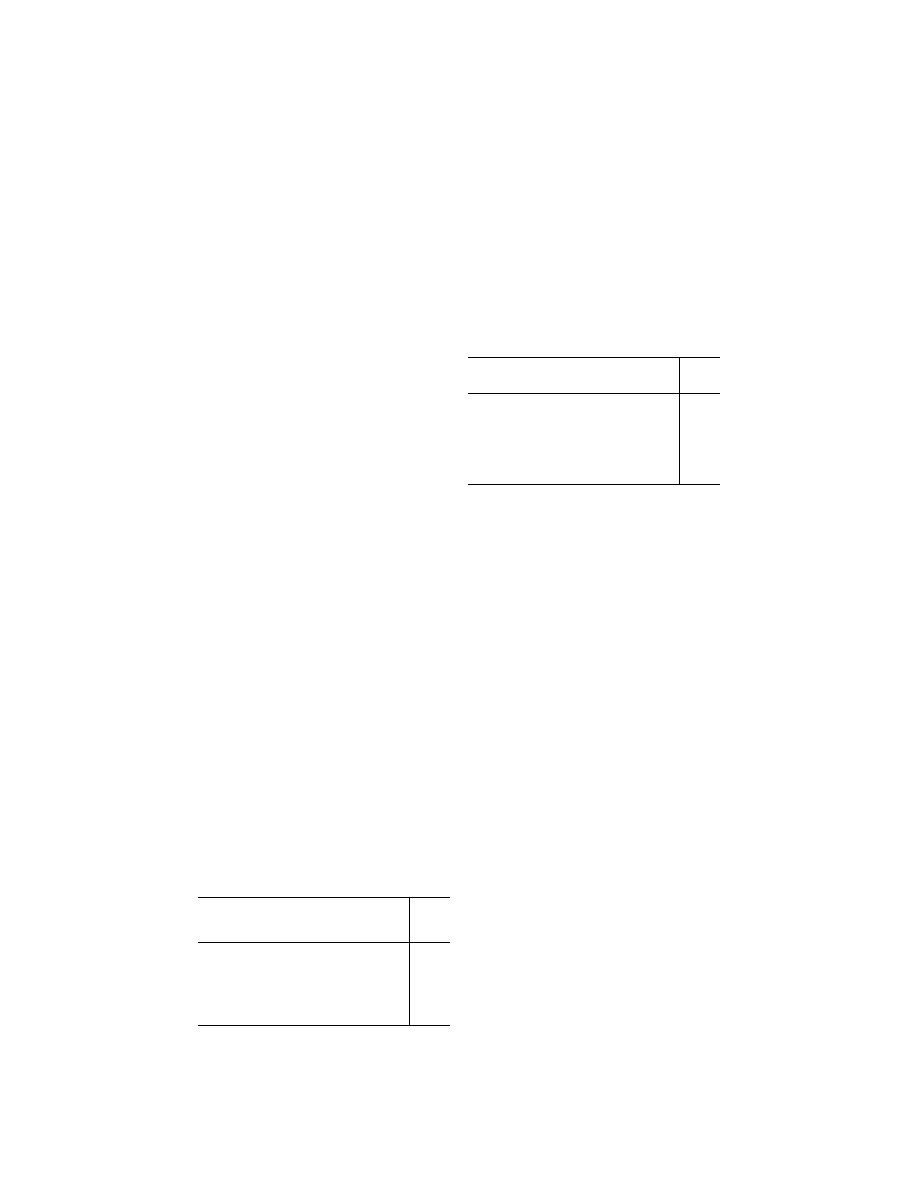
693
Federal Aviation Administration, DOT
§ 91.123
(d)
Helicopters, powered parachutes,
and weight-shift-control aircraft. If the
operation is conducted without hazard
to persons or property on the surface—
(1) A helicopter may be operated at
less than the minimums prescribed in
paragraph (b) or (c) of this section, pro-
vided each person operating the heli-
copter complies with any routes or al-
titudes specifically prescribed for heli-
copters by the FAA; and
(2) A powered parachute or weight-
shift-control aircraft may be operated
at less than the minimums prescribed
in paragraph (c) of this section.
[Doc. No. 18334, 54 FR 34294, Aug. 18, 1989, as
amended by Amdt. 91–311, 75 FR 5223, Feb. 1,
2010]
§ 91.121
Altimeter settings.
(a) Each person operating an aircraft
shall maintain the cruising altitude or
flight level of that aircraft, as the case
may be, by reference to an altimeter
that is set, when operating—
(1) Below 18,000 feet MSL, to—
(i) The current reported altimeter
setting of a station along the route and
within 100 nautical miles of the air-
craft;
(ii) If there is no station within the
area prescribed in paragraph (a)(1)(i) of
this section, the current reported al-
timeter setting of an appropriate avail-
able station; or
(iii) In the case of an aircraft not
equipped with a radio, the elevation of
the departure airport or an appropriate
altimeter setting available before de-
parture; or
(2) At or above 18,000 feet MSL, to
29.92
″
Hg.
(b) The lowest usable flight level is
determined by the atmospheric pres-
sure in the area of operation as shown
in the following table:
Current altimeter setting
Lowest
usable
flight
level
29.92 (or higher) ......................................................
180
29.91 through 29.42 ................................................
185
29.41 through 28.92 ................................................
190
28.91 through 28.42 ................................................
195
28.41 through 27.92 ................................................
200
27.91 through 27.42 ................................................
205
27.41 through 26.92 ................................................
210
(c) To convert minimum altitude pre-
scribed under §§ 91.119 and 91.177 to the
minimum flight level, the pilot shall
take the flight level equivalent of the
minimum altitude in feet and add the
appropriate number of feet specified
below, according to the current re-
ported altimeter setting:
Current altimeter setting
Adjust-
ment
factor
29.92 (or higher) ......................................................
None
29.91 through 29.42 ................................................
500
29.41 through 28.92 ................................................
1,000
28.91 through 28.42 ................................................
1,500
28.41 through 27.92 ................................................
2,000
27.91 through 27.42 ................................................
2,500
27.41 through 26.92 ................................................
3,000
§ 91.123
Compliance with ATC clear-
ances and instructions.
(a) When an ATC clearance has been
obtained, no pilot in command may de-
viate from that clearance unless an
amended clearance is obtained, an
emergency exists, or the deviation is in
response to a traffic alert and collision
avoidance system resolution advisory.
However, except in Class A airspace, a
pilot may cancel an IFR flight plan if
the operation is being conducted in
VFR weather conditions. When a pilot
is uncertain of an ATC clearance, that
pilot shall immediately request clari-
fication from ATC.
(b) Except in an emergency, no per-
son may operate an aircraft contrary
to an ATC instruction in an area in
which air traffic control is exercised.
(c) Each pilot in command who, in an
emergency, or in response to a traffic
alert and collision avoidance system
resolution advisory, deviates from an
ATC clearance or instruction shall no-
tify ATC of that deviation as soon as
possible.
(d) Each pilot in command who
(though not deviating from a rule of
this subpart) is given priority by ATC
in an emergency, shall submit a de-
tailed report of that emergency within
48 hours to the manager of that ATC
facility, if requested by ATC.
(e) Unless otherwise authorized by
ATC, no person operating an aircraft
may operate that aircraft according to
any clearance or instruction that has
VerDate Sep<11>2014
14:00 Mar 14, 2024
Jkt 262047
PO 00000
Frm 00703
Fmt 8010
Sfmt 8010
Q:\14\14V2.TXT
PC31
aworley on LAPBH6H6L3 with DISTILLER
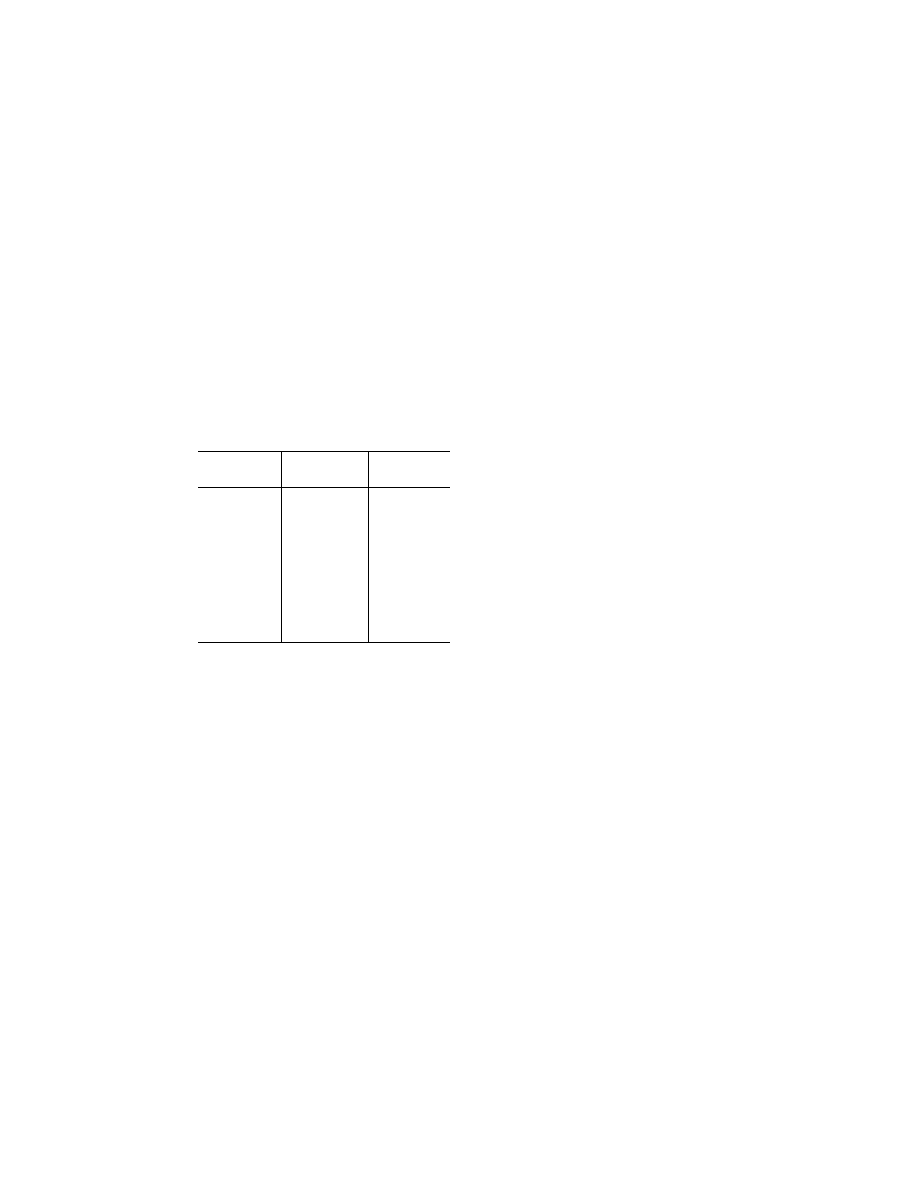
694
14 CFR Ch. I (1–1–24 Edition)
§ 91.125
been issued to the pilot of another air-
craft for radar air traffic control pur-
poses.
(Approved by the Office of Management and
Budget under control number 2120–0005)
[Doc. No. 18834, 54 FR 34294, Aug. 18, 1989, as
amended by Amdt. 91–227, 56 FR 65658, Dec.
17, 1991; Amdt. 91–244, 60 FR 50679, Sept. 29,
1995]
§ 91.125
ATC light signals.
ATC light signals have the meaning
shown in the following table:
Color and type of
signal
Meaning with re-
spect to aircraft on
the surface
Meaning with re-
spect to aircraft in
flight
Steady green ........
Cleared for takeoff
Cleared to land.
Flashing green ......
Cleared to taxi ......
Return for landing
(to be followed
by steady green
at proper time).
Steady red ............
Stop ......................
Give way to other
aircraft and con-
tinue circling.
Flashing red ..........
Taxi clear of run-
way in use.
Airport unsafe—do
not land.
Flashing white ......
Return to starting
point on airport.
Not applicable.
Alternating red and
green.
Exercise extreme
caution.
Exercise extreme
caution.
§ 91.126
Operating on or in the vicinity
of an airport in Class G airspace.
(a)
General. Unless otherwise author-
ized or required, each person operating
an aircraft on or in the vicinity of an
airport in a Class G airspace area must
comply with the requirements of this
section.
(b)
Direction of turns. When approach-
ing to land at an airport without an op-
erating control tower in Class G air-
space—
(1) Each pilot of an airplane must
make all turns of that airplane to the
left unless the airport displays ap-
proved light signals or visual markings
indicating that turns should be made
to the right, in which case the pilot
must make all turns to the right; and
(2) Each pilot of a helicopter or a
powered parachute must avoid the flow
of fixed-wing aircraft.
(c)
Flap settings. Except when nec-
essary for training or certification, the
pilot in command of a civil turbojet-
powered aircraft must use, as a final
flap setting, the minimum certificated
landing flap setting set forth in the ap-
proved performance information in the
Airplane Flight Manual for the appli-
cable conditions. However, each pilot
in command has the final authority
and responsibility for the safe oper-
ation of the pilot’s airplane, and may
use a different flap setting for that air-
plane if the pilot determines that it is
necessary in the interest of safety.
(d)
Communications with control tow-
ers. Unless otherwise authorized or re-
quired by ATC, no person may operate
an aircraft to, from, through, or on an
airport having an operational control
tower unless two-way radio commu-
nications are maintained between that
aircraft and the control tower. Commu-
nications must be established prior to 4
nautical miles from the airport, up to
and including 2,500 feet AGL. However,
if the aircraft radio fails in flight, the
pilot in command may operate that
aircraft and land if weather conditions
are at or above basic VFR weather
minimums, visual contact with the
tower is maintained, and a clearance to
land is received. If the aircraft radio
fails while in flight under IFR, the
pilot must comply with § 91.185.
[Doc. No. 24458, 56 FR 65658, Dec. 17, 1991, as
amended by Amdt. 91–239, 59 FR 11693, Mar.
11, 1994; Amdt. 91–282, 69 FR 44880, July 27,
2004]
§ 91.127
Operating on or in the vicinity
of an airport in Class E airspace.
(a) Unless otherwise required by part
93 of this chapter or unless otherwise
authorized or required by the ATC fa-
cility having jurisdiction over the
Class E airspace area, each person op-
erating an aircraft on or in the vicinity
of an airport in a Class E airspace area
must comply with the requirements of
§ 91.126.
(b)
Departures. Each pilot of an air-
craft must comply with any traffic pat-
terns established for that airport in
part 93 of this chapter.
(c)
Communications with control tow-
ers. Unless otherwise authorized or re-
quired by ATC, no person may operate
an aircraft to, from, through, or on an
airport having an operational control
tower unless two-way radio commu-
nications are maintained between that
aircraft and the control tower. Commu-
nications must be established prior to 4
nautical miles from the airport, up to
and including 2,500 feet AGL. However,
if the aircraft radio fails in flight, the
VerDate Sep<11>2014
14:00 Mar 14, 2024
Jkt 262047
PO 00000
Frm 00704
Fmt 8010
Sfmt 8010
Q:\14\14V2.TXT
PC31
aworley on LAPBH6H6L3 with DISTILLER

695
Federal Aviation Administration, DOT
§ 91.129
pilot in command may operate that
aircraft and land if weather conditions
are at or above basic VFR weather
minimums, visual contact with the
tower is maintained, and a clearance to
land is received. If the aircraft radio
fails while in flight under IFR, the
pilot must comply with § 91.185.
[Doc. No. 24458, 56 FR 65658, Dec. 17, 1991, as
amended by Amdt. 91–239, 59 FR 11693, Mar.
11, 1994]
§ 91.129
Operations in Class D air-
space.
(a)
General. Unless otherwise author-
ized or required by the ATC facility
having jurisdiction over the Class D
airspace area, each person operating an
aircraft in Class D airspace must com-
ply with the applicable provisions of
this section. In addition, each person
must comply with §§ 91.126 and 91.127.
For the purpose of this section, the pri-
mary airport is the airport for which
the Class D airspace area is designated.
A satellite airport is any other airport
within the Class D airspace area.
(b)
Deviations. An operator may devi-
ate from any provision of this section
under the provisions of an ATC author-
ization issued by the ATC facility hav-
ing jurisdiction over the airspace con-
cerned. ATC may authorize a deviation
on a continuing basis or for an indi-
vidual flight, as appropriate.
(c)
Communications. Each person oper-
ating an aircraft in Class D airspace
must meet the following two-way radio
communications requirements:
(1)
Arrival or through flight. Each per-
son must establish two-way radio com-
munications with the ATC facility (in-
cluding foreign ATC in the case of for-
eign airspace designated in the United
States) providing air traffic services
prior to entering that airspace and
thereafter maintain those communica-
tions while within that airspace.
(2)
Departing flight. Each person—
(i) From the primary airport or sat-
ellite airport with an operating control
tower must establish and maintain
two-way radio communications with
the control tower, and thereafter as in-
structed by ATC while operating in the
Class D airspace area; or
(ii) From a satellite airport without
an operating control tower, must es-
tablish and maintain two-way radio
communications with the ATC facility
having jurisdiction over the Class D
airspace area as soon as practicable
after departing.
(d)
Communications failure. Each per-
son who operates an aircraft in a Class
D airspace area must maintain two-
way radio communications with the
ATC facility having jurisdiction over
that area.
(1) If the aircraft radio fails in flight
under IFR, the pilot must comply with
§ 91.185 of the part.
(2) If the aircraft radio fails in flight
under VFR, the pilot in command may
operate that aircraft and land if—
(i) Weather conditions are at or
above basic VFR weather minimums;
(ii) Visual contact with the tower is
maintained; and
(iii) A clearance to land is received.
(e)
Minimum altitudes when operating
to an airport in Class D airspace. (1) Un-
less required by the applicable dis-
tance-from-cloud criteria, each pilot
operating a large or turbine-powered
airplane must enter the traffic pattern
at an altitude of at least 1,500 feet
above the elevation of the airport and
maintain at least 1,500 feet until fur-
ther descent is required for a safe land-
ing.
(2) Each pilot operating a large or
turbine-powered airplane approaching
to land on a runway served by an in-
strument approach procedure with
vertical guidance, if the airplane is so
equipped, must:
(i) Operate that airplane at an alti-
tude at or above the glide path between
the published final approach fix and
the decision altitude (DA), or decision
height (DH), as applicable; or
(ii) If compliance with the applicable
distance-from-cloud criteria requires
glide path interception closer in, oper-
ate that airplane at or above the glide
path, between the point of interception
of glide path and the DA or the DH.
(3) Each pilot operating an airplane
approaching to land on a runway
served by a visual approach slope indi-
cator must maintain an altitude at or
above the glide path until a lower alti-
tude is necessary for a safe landing.
(4) Paragraphs (e)(2) and (e)(3) of this
section do not prohibit normal brack-
eting maneuvers above or below the
VerDate Sep<11>2014
14:00 Mar 14, 2024
Jkt 262047
PO 00000
Frm 00705
Fmt 8010
Sfmt 8010
Q:\14\14V2.TXT
PC31
aworley on LAPBH6H6L3 with DISTILLER

696
14 CFR Ch. I (1–1–24 Edition)
§ 91.130
glide path that are conducted for the
purpose of remaining on the glide path.
(f)
Approaches. Except when con-
ducting a circling approach under part
97 of this chapter or unless otherwise
required by ATC, each pilot must—
(1) Circle the airport to the left, if op-
erating an airplane; or
(2) Avoid the flow of fixed-wing air-
craft, if operating a helicopter.
(g)
Departures. No person may oper-
ate an aircraft departing from an air-
port except in compliance with the fol-
lowing:
(1) Each pilot must comply with any
departure procedures established for
that airport by the FAA.
(2) Unless otherwise required by the
prescribed departure procedure for that
airport or the applicable distance from
clouds criteria, each pilot of a turbine-
powered airplane and each pilot of a
large airplane must climb to an alti-
tude of 1,500 feet above the surface as
rapidly as practicable.
(h)
Noise abatement. Where a formal
runway use program has been estab-
lished by the FAA, each pilot of a large
or turbine-powered airplane assigned a
noise abatement runway by ATC must
use that runway. However, consistent
with the final authority of the pilot in
command concerning the safe oper-
ation of the aircraft as prescribed in
§ 91.3(a), ATC may assign a different
runway if requested by the pilot in the
interest of safety.
(i)
Takeoff, landing, taxi clearance. No
person may, at any airport with an op-
erating control tower, operate an air-
craft on a runway or taxiway, or take
off or land an aircraft, unless an appro-
priate clearance is received from ATC.
[Doc. No. 24458, 56 FR 65658, Dec. 17, 1991, as
amended by Amdt. 91–234, 58 FR 48793, Sept.
20, 1993; Amdt. 91–296, 72 FR 31678, June 7,
2007; 77 FR 28250, May 14, 2012]
§ 91.130
Operations in Class C air-
space.
(a)
General. Unless otherwise author-
ized by ATC, each aircraft operation in
Class C airspace must be conducted in
compliance with this section and
§ 91.129. For the purpose of this section,
the primary airport is the airport for
which the Class C airspace area is des-
ignated. A satellite airport is any other
airport within the Class C airspace
area.
(b)
Traffic patterns. No person may
take off or land an aircraft at a sat-
ellite airport within a Class C airspace
area except in compliance with FAA
arrival and departure traffic patterns.
(c)
Communications. Each person oper-
ating an aircraft in Class C airspace
must meet the following two-way radio
communications requirements:
(1)
Arrival or through flight. Each per-
son must establish two-way radio com-
munications with the ATC facility (in-
cluding foreign ATC in the case of for-
eign airspace designated in the United
States) providing air traffic services
prior to entering that airspace and
thereafter maintain those communica-
tions while within that airspace.
(2)
Departing flight. Each person—
(i) From the primary airport or sat-
ellite airport with an operating control
tower must establish and maintain
two-way radio communications with
the control tower, and thereafter as in-
structed by ATC while operating in the
Class C airspace area; or
(ii) From a satellite airport without
an operating control tower, must es-
tablish and maintain two-way radio
communications with the ATC facility
having jurisdiction over the Class C
airspace area as soon as practicable
after departing.
(d)
Equipment requirements. Unless
otherwise authorized by the ATC hav-
ing jurisdiction over the Class C air-
space area, no person may operate an
aircraft within a Class C airspace area
designated for an airport unless that
aircraft is equipped with the applicable
equipment specified in § 91.215, and
after January 1, 2020, § 91.225.
(e)
Deviations. An operator may devi-
ate from any provision of this section
under the provisions of an ATC author-
ization issued by the ATC facility hav-
ing jurisdiction over the airspace con-
cerned. ATC may authorize a deviation
on a continuing basis or for an indi-
vidual flight, as appropriate.
[Doc. No. 24458, 56 FR 65659, Dec. 17, 1991, as
amended by Amdt. 91–232, 58 FR 40736, July
30, 1993; Amdt. 91–239, 59 FR 11693, Mar. 11,
1994; Amdt. 91–314, 75 FR 30193, May 28, 2010]
VerDate Sep<11>2014
14:00 Mar 14, 2024
Jkt 262047
PO 00000
Frm 00706
Fmt 8010
Sfmt 8010
Q:\14\14V2.TXT
PC31
aworley on LAPBH6H6L3 with DISTILLER

697
Federal Aviation Administration, DOT
§ 91.135
§ 91.131
Operations in Class B air-
space.
(a)
Operating rules. No person may op-
erate an aircraft within a Class B air-
space area except in compliance with
§ 91.129 and the following rules:
(1) The operator must receive an ATC
clearance from the ATC facility having
jurisdiction for that area before oper-
ating an aircraft in that area.
(2) Unless otherwise authorized by
ATC, each person operating a large tur-
bine engine-powered airplane to or
from a primary airport for which a
Class B airspace area is designated
must operate at or above the des-
ignated floors of the Class B airspace
area while within the lateral limits of
that area.
(3) Any person conducting pilot
training operations at an airport with-
in a Class B airspace area must comply
with any procedures established by
ATC for such operations in that area.
(b)
Pilot requirements. (1) No person
may take off or land a civil aircraft at
an airport within a Class B airspace
area or operate a civil aircraft within a
Class B airspace area unless—
(i) The pilot in command holds at
least a private pilot certificate;
(ii) The pilot in command holds a
recreational pilot certificate and has
met—
(A) The requirements of § 61.101(d) of
this chapter; or
(B) The requirements for a student
pilot seeking a recreational pilot cer-
tificate in § 61.94 of this chapter;
(iii) The pilot in command holds a
sport pilot certificate and has met—
(A) The requirements of § 61.325 of
this chapter; or
(B) The requirements for a student
pilot seeking a recreational pilot cer-
tificate in § 61.94 of this chapter; or
(iv) The aircraft is operated by a stu-
dent pilot who has met the require-
ments of § 61.94 or § 61.95 of this chapter,
as applicable.
(2) Notwithstanding the provisions of
paragraphs (b)(1)(ii), (b)(1)(iii) and
(b)(1)(iv) of this section, no person may
take off or land a civil aircraft at those
airports listed in section 4 of appendix
D to this part unless the pilot in com-
mand holds at least a private pilot cer-
tificate.
(c)
Communications and navigation
equipment requirements. Unless other-
wise authorized by ATC, no person may
operate an aircraft within a Class B
airspace area unless that aircraft is
equipped with—
(1)
For IFR operation. An operable
VOR or TACAN receiver or an operable
and suitable RNAV system; and
(2)
For all operations. An operable
two-way radio capable of communica-
tions with ATC on appropriate fre-
quencies for that Class B airspace area.
(d)
Other equipment requirements. No
person may operate an aircraft in a
Class B airspace area unless the air-
craft is equipped with—
(1) The applicable operating trans-
ponder and automatic altitude report-
ing equipment specified in § 91.215 (a),
except as provided in § 91.215 (e), and
(2) After January 1, 2020, the applica-
ble Automatic Dependent Surveillance-
Broadcast Out equipment specified in
§ 91.225.
[Doc. No. 24458, 56 FR 65658, Dec. 17, 1991, as
amended by Amdt. 91–282, 69 FR 44880, July
27, 2004; Amdt. 91–296, 72 FR 31678, June 7,
2007; Amdt. 91–314, 75 FR 30193, May 28, 2010]
§ 91.133
Restricted and prohibited
areas.
(a) No person may operate an aircraft
within a restricted area (designated in
part 73) contrary to the restrictions
imposed, or within a prohibited area,
unless that person has the permission
of the using or controlling agency, as
appropriate.
(b) Each person conducting, within a
restricted area, an aircraft operation
(approved by the using agency) that
creates the same hazards as the oper-
ations for which the restricted area
was designated may deviate from the
rules of this subpart that are not com-
patible with the operation of the air-
craft.
§ 91.135
Operations in Class A air-
space.
Except as provided in paragraph (d)
of this section, each person operating
an aircraft in Class A airspace must
conduct that operation under instru-
ment flight rules (IFR) and in compli-
ance with the following:
VerDate Sep<11>2014
14:00 Mar 14, 2024
Jkt 262047
PO 00000
Frm 00707
Fmt 8010
Sfmt 8010
Q:\14\14V2.TXT
PC31
aworley on LAPBH6H6L3 with DISTILLER

698
14 CFR Ch. I (1–1–24 Edition)
§ 91.137
(a)
Clearance. Operations may be con-
ducted only under an ATC clearance re-
ceived prior to entering the airspace.
(b)
Communications. Unless otherwise
authorized by ATC, each aircraft oper-
ating in Class A airspace must be
equipped with a two-way radio capable
of communicating with ATC on a fre-
quency assigned by ATC. Each pilot
must maintain two-way radio commu-
nications with ATC while operating in
Class A airspace.
(c)
Equipment requirements. Unless
otherwise authorized by ATC, no per-
son may operate an aircraft within
Class A airspace unless that aircraft is
equipped with the applicable equip-
ment specified in § 91.215, and after Jan-
uary 1, 2020, § 91.225.
(d)
ATC authorizations. An operator
may deviate from any provision of this
section under the provisions of an ATC
authorization issued by the ATC facil-
ity having jurisdiction of the airspace
concerned. In the case of an inoper-
ative transponder, ATC may imme-
diately approve an operation within a
Class A airspace area allowing flight to
continue, if desired, to the airport of
ultimate destination, including any in-
termediate stops, or to proceed to a
place where suitable repairs can be
made, or both. Requests for deviation
from any provision of this section must
be submitted in writing, at least 4 days
before the proposed operation. ATC
may authorize a deviation on a con-
tinuing basis or for an individual
flight.
[Doc. No. 24458, 56 FR 65659, Dec. 17, 1991, as
amended by Amdt. 91–314, 75 FR 30193, May
28, 2010]
§ 91.137
Temporary flight restrictions
in the vicinity of disaster/hazard
areas.
(a) The Administrator will issue a
Notice to Airmen (NOTAM) desig-
nating an area within which temporary
flight restrictions apply and specifying
the hazard or condition requiring their
imposition, whenever he determines it
is necessary in order to—
(1) Protect persons and property on
the surface or in the air from a hazard
associated with an incident on the sur-
face;
(2) Provide a safe environment for
the operation of disaster relief aircraft;
or
(3) Prevent an unsafe congestion of
sightseeing and other aircraft above an
incident or event which may generate a
high degree of public interest.
The Notice to Airmen will specify the
hazard or condition that requires the
imposition of temporary flight restric-
tions.
(b) When a NOTAM has been issued
under paragraph (a)(1) of this section,
no person may operate an aircraft
within the designated area unless that
aircraft is participating in the hazard
relief activities and is being operated
under the direction of the official in
charge of on scene emergency response
activities.
(c) When a NOTAM has been issued
under paragraph (a)(2) of this section,
no person may operate an aircraft
within the designated area unless at
least one of the following conditions
are met:
(1) The aircraft is participating in
hazard relief activities and is being op-
erated under the direction of the offi-
cial in charge of on scene emergency
response activities.
(2) The aircraft is carrying law en-
forcement officials.
(3) The aircraft is operating under
the ATC approved IFR flight plan.
(4) The operation is conducted di-
rectly to or from an airport within the
area, or is necessitated by the imprac-
ticability of VFR flight above or
around the area due to weather, or ter-
rain; notification is given to the Flight
Service Station (FSS) or ATC facility
specified in the NOTAM to receive
advisories concerning disaster relief
aircraft operations; and the operation
does not hamper or endanger relief ac-
tivities and is not conducted for the
purpose of observing the disaster.
(5) The aircraft is carrying properly
accredited news representatives, and,
prior to entering the area, a flight plan
is filed with the appropriate FAA or
ATC facility specified in the Notice to
Airmen and the operation is conducted
above the altitude used by the disaster
relief aircraft, unless otherwise author-
ized by the official in charge of on
scene emergency response activities.
VerDate Sep<11>2014
14:00 Mar 14, 2024
Jkt 262047
PO 00000
Frm 00708
Fmt 8010
Sfmt 8010
Q:\14\14V2.TXT
PC31
aworley on LAPBH6H6L3 with DISTILLER

699
Federal Aviation Administration, DOT
§ 91.139
(d) When a NOTAM has been issued
under paragraph (a)(3) of this section,
no person may operate an aircraft
within the designated area unless at
least one of the following conditions is
met:
(1) The operation is conducted di-
rectly to or from an airport within the
area, or is necessitated by the imprac-
ticability of VFR flight above or
around the area due to weather or ter-
rain, and the operation is not con-
ducted for the purpose of observing the
incident or event.
(2) The aircraft is operating under an
ATC approved IFR flight plan.
(3) The aircraft is carrying incident
or event personnel, or law enforcement
officials.
(4) The aircraft is carrying properly
accredited news representatives and,
prior to entering that area, a flight
plan is filed with the appropriate FSS
or ATC facility specified in the
NOTAM.
(e) Flight plans filed and notifica-
tions made with an FSS or ATC facil-
ity under this section shall include the
following information:
(1) Aircraft identification, type and
color.
(2) Radio communications fre-
quencies to be used.
(3) Proposed times of entry of, and
exit from, the designated area.
(4) Name of news media or organiza-
tion and purpose of flight.
(5) Any other information requested
by ATC.
§ 91.138
Temporary flight restrictions
in national disaster areas in the
State of Hawaii.
(a) When the Administrator has de-
termined, pursuant to a request and
justification provided by the Governor
of the State of Hawaii, or the Gov-
ernor’s designee, that an inhabited
area within a declared national dis-
aster area in the State of Hawaii is in
need of protection for humanitarian
reasons, the Administrator will issue a
Notice to Airmen (NOTAM) desig-
nating an area within which temporary
flight restrictions apply. The Adminis-
trator will designate the extent and du-
ration of the temporary flight restric-
tions necessary to provide for the pro-
tection of persons and property on the
surface.
(b) When a NOTAM has been issued in
accordance with this section, no person
may operate an aircraft within the des-
ignated area unless at least one of the
following conditions is met:
(1) That person has obtained author-
ization from the official in charge of
associated emergency or disaster relief
response activities, and is operating
the aircraft under the conditions of
that authorization.
(2) The aircraft is carrying law en-
forcement officials.
(3) The aircraft is carrying persons
involved in an emergency or a legiti-
mate scientific purpose.
(4) The aircraft is carrying properly
accredited newspersons, and that prior
to entering the area, a flight plan is
filed with the appropriate FAA or ATC
facility specified in the NOTAM and
the operation is conducted in compli-
ance with the conditions and restric-
tions established by the official in
charge of on-scene emergency response
activities.
(5) The aircraft is operating in ac-
cordance with an ATC clearance or in-
struction.
(c) A NOTAM issued under this sec-
tion is effective for 90 days or until the
national disaster area designation is
terminated, whichever comes first, un-
less terminated by notice or extended
by the Administrator at the request of
the Governor of the State of Hawaii or
the Governor’s designee.
[Doc. No. 26476, 56 FR 23178, May 20, 1991, as
amended by Amdt. 91–270, 66 FR 47377, Sept.
11, 2001]
§ 91.139
Emergency air traffic rules.
(a) This section prescribes a process
for utilizing Notices to Airmen
(NOTAMs) to advise of the issuance
and operations under emergency air
traffic rules and regulations and des-
ignates the official who is authorized
to issue NOTAMs on behalf of the Ad-
ministrator in certain matters under
this section.
(b) Whenever the Administrator de-
termines that an emergency condition
exists, or will exist, relating to the
FAA’s ability to operate the air traffic
VerDate Sep<11>2014
14:00 Mar 14, 2024
Jkt 262047
PO 00000
Frm 00709
Fmt 8010
Sfmt 8010
Q:\14\14V2.TXT
PC31
aworley on LAPBH6H6L3 with DISTILLER

700
14 CFR Ch. I (1–1–24 Edition)
§ 91.141
control system and during which nor-
mal flight operations under this chap-
ter cannot be conducted consistent
with the required levels of safety and
efficiency—
(1) The Administrator issues an im-
mediately effective air traffic rule or
regulation in response to that emer-
gency condition; and
(2) The Administrator or the Asso-
ciate Administrator for Air Traffic
may utilize the NOTAM system to pro-
vide notification of the issuance of the
rule or regulation.
Those NOTAMs communicate informa-
tion concerning the rules and regula-
tions that govern flight operations, the
use of navigation facilities, and des-
ignation of that airspace in which the
rules and regulations apply.
(c) When a NOTAM has been issued
under this section, no person may oper-
ate an aircraft, or other device gov-
erned by the regulation concerned,
within the designated airspace except
in accordance with the authorizations,
terms, and conditions prescribed in the
regulation covered by the NOTAM.
§ 91.141
Flight restrictions in the prox-
imity of the Presidential and other
parties.
No person may operate an aircraft
over or in the vicinity of any area to be
visited or traveled by the President,
the Vice President, or other public fig-
ures contrary to the restrictions estab-
lished by the Administrator and pub-
lished in a Notice to Airmen (NOTAM).
§ 91.143
Flight limitation in the prox-
imity of space flight operations.
When a Notice to Airmen (NOTAM) is
issued in accordance with this section,
no person may operate any aircraft of
U.S. registry, or pilot any aircraft
under the authority of an airman cer-
tificate issued by the Federal Aviation
Administration, within areas des-
ignated in a NOTAM for space flight
operation except when authorized by
ATC.
[Doc. No. FAA–2004–19246, 69 FR 59753, Oct. 5,
2004]
§ 91.144
Temporary restriction on
flight operations during abnormally
high barometric pressure condi-
tions.
(a)
Special flight restrictions. When any
information indicates that barometric
pressure on the route of flight cur-
rently exceeds or will exceed 31 inches
of mercury, no person may operate an
aircraft or initiate a flight contrary to
the requirements established by the
Administrator and published in a No-
tice to Airmen issued under this sec-
tion.
(b)
Waivers. The Administrator is au-
thorized to waive any restriction
issued under paragraph (a) of this sec-
tion to permit emergency supply,
transport, or medical services to be de-
livered to isolated communities, where
the operation can be conducted with an
acceptable level of safety.
[Amdt. 91–240, 59 FR 17452, Apr. 12, 1994; 59 FR
37669, July 25, 1994]
§ 91.145
Management of aircraft oper-
ations in the vicinity of aerial dem-
onstrations and major sporting
events.
(a) The FAA will issue a Notice to
Airmen (NOTAM) designating an area
of airspace in which a temporary flight
restriction applies when it determines
that a temporary flight restriction is
necessary to protect persons or prop-
erty on the surface or in the air, to
maintain air safety and efficiency, or
to prevent the unsafe congestion of air-
craft in the vicinity of an aerial dem-
onstration or major sporting event.
These demonstrations and events may
include:
(1) United States Naval Flight Dem-
onstration Team (Blue Angels);
(2) United States Air Force Air Dem-
onstration Squadron (Thunderbirds);
(3) United States Army Parachute
Team (Golden Knights);
(4) Summer/Winter Olympic Games;
(5) Annual Tournament of Roses
Football Game;
(6) World Cup Soccer;
(7) Major League Baseball All-Star
Game;
(8) World Series;
(9) Kodak Albuquerque International
Balloon Fiesta;
(10) Sandia Classic Hang Gliding
Competition;
VerDate Sep<11>2014
14:00 Mar 14, 2024
Jkt 262047
PO 00000
Frm 00710
Fmt 8010
Sfmt 8010
Q:\14\14V2.TXT
PC31
aworley on LAPBH6H6L3 with DISTILLER

701
Federal Aviation Administration, DOT
§ 91.146
(11) Indianapolis 500 Mile Race;
(12) Any other aerial demonstration
or sporting event the FAA determines
to need a temporary flight restriction
in accordance with paragraph (b) of
this section.
(b) In deciding whether a temporary
flight restriction is necessary for an
aerial demonstration or major sporting
event not listed in paragraph (a) of this
section, the FAA considers the fol-
lowing factors:
(1) Area where the event will be held.
(2) Effect flight restrictions will have
on known aircraft operations.
(3) Any existing ATC airspace traffic
management restrictions.
(4) Estimated duration of the event.
(5) Degree of public interest.
(6) Number of spectators.
(7) Provisions for spectator safety.
(8) Number and types of participating
aircraft.
(9) Use of mixed high and low per-
formance aircraft.
(10) Impact on non-participating air-
craft.
(11) Weather minimums.
(12) Emergency procedures that will
be in effect.
(c) A NOTAM issued under this sec-
tion will state the name of the aerial
demonstration or sporting event and
specify the effective dates and times,
the geographic features or coordinates,
and any other restrictions or proce-
dures governing flight operations in
the designated airspace.
(d) When a NOTAM has been issued in
accordance with this section, no person
may operate an aircraft or device, or
engage in any activity within the des-
ignated airspace area, except in accord-
ance with the authorizations, terms,
and conditions of the temporary flight
restriction published in the NOTAM,
unless otherwise authorized by:
(1) Air traffic control; or
(2) A Flight Standards Certificate of
Waiver or Authorization issued for the
demonstration or event.
(e) For the purpose of this section:
(1)
Flight restricted airspace area for an
aerial demonstration—The amount of
airspace needed to protect persons and
property on the surface or in the air, to
maintain air safety and efficiency, or
to prevent the unsafe congestion of air-
craft will vary depending on the aerial
demonstration and the factors listed in
paragraph (b) of this section. The re-
stricted airspace area will normally be
limited to a 5 nautical mile radius
from the center of the demonstration
and an altitude 17000 mean sea level
(for high performance aircraft) or 13000
feet above the surface (for certain
parachute operations), but will be no
greater than the minimum airspace
necessary for the management of air-
craft operations in the vicinity of the
specified area.
(2)
Flight restricted area for a major
sporting event—The amount of airspace
needed to protect persons and property
on the surface or in the air, to main-
tain air safety and efficiency, or to pre-
vent the unsafe congestion of aircraft
will vary depending on the size of the
event and the factors listed in para-
graph (b) of this section. The restricted
airspace will normally be limited to a
3 nautical mile radius from the center
of the event and 2500 feet above the
surface but will not be greater than the
minimum airspace necessary for the
management of aircraft operations in
the vicinity of the specified area.
(f) A NOTAM issued under this sec-
tion will be issued at least 30 days in
advance of an aerial demonstration or
a major sporting event, unless the FAA
finds good cause for a shorter period
and explains this in the NOTAM.
(g) When warranted, the FAA Admin-
istrator may exclude the following
flights from the provisions of this sec-
tion:
(1) Essential military.
(2) Medical and rescue.
(3) Presidential and Vice Presi-
dential.
(4) Visiting heads of state.
(5) Law enforcement and security.
(6) Public health and welfare.
[Doc. No. FAA–2000–8274, 66 FR 47378, Sept.
11, 2001]
§ 91.146
Passenger-carrying flights for
the benefit of a charitable, non-
profit, or community event.
(a)
Definitions. For purposes of this
section, the following definitions
apply:
Charitable event means an event that
raises funds for the benefit of a chari-
table organization recognized by the
VerDate Sep<11>2014
14:00 Mar 14, 2024
Jkt 262047
PO 00000
Frm 00711
Fmt 8010
Sfmt 8010
Q:\14\14V2.TXT
PC31
aworley on LAPBH6H6L3 with DISTILLER

702
14 CFR Ch. I (1–1–24 Edition)
§ 91.146
Department of the Treasury whose do-
nors may deduct contributions under
section 170 of the Internal Revenue
Code (26 U.S.C. Section 170).
Community event means an event that
raises funds for the benefit of any local
or community cause that is not a char-
itable event or non-profit event.
Non-profit event means an event that
raises funds for the benefit of a non-
profit organization recognized under
State or Federal law, as long as one of
the organization’s purposes is the pro-
motion of aviation safety.
(b) Passenger-carrying flights in air-
planes, powered-lift, or rotorcraft for
the benefit of a charitable, nonprofit,
or community event identified in para-
graph (c) of this section are not subject
to the certification requirements of
part 119 of this chapter or the drug and
alcohol testing requirements in part
120 of this chapter, provided the fol-
lowing conditions are satisfied and the
limitations in paragraphs (c) and (d) of
this section are not exceeded:
(1) The flight is nonstop and begins
and ends at the same airport and is
conducted within a 25-statute mile ra-
dius of that airport;
(2) The flight is conducted from a
public airport that is adequate for the
aircraft used, or from another location
the FAA approves for the operation;
(3) The aircraft has a maximum of 30
seats, excluding each crewmember
seat, and a maximum payload capacity
of 7,500 pounds;
(4) The flight is not an aerobatic or a
formation flight;
(5) Each aircraft holds a standard air-
worthiness certificate, is airworthy,
and is operated in compliance with the
applicable requirements of subpart E of
this part;
(6) Each flight is made during day
VFR conditions;
(7) Reimbursement of the operator of
the aircraft is limited to that portion
of the passenger payment for the flight
that does not exceed the pro rata cost
of owning, operating, and maintaining
the aircraft for that flight, which may
include fuel, oil, airport expenditures,
and rental fees;
(8) The beneficiary of the funds raised
is not in the business of transportation
by air;
(9) A private pilot acting as pilot in
command has at least 500 hours of
flight time;
(10) Each flight is conducted in ac-
cordance with the safety provisions of
part 136, subpart A of this chapter; and
(11) Flights are not conducted over a
national park, unit of a national park,
or abutting tribal lands, unless the op-
erator has secured a letter of agree-
ment from the FAA, as specified under
subpart B of part 136 of this chapter,
and is operating in accordance with
that agreement during the flights.
(c) (1) Passenger-carrying flights or
series of flights are limited to a total
of four charitable events or non-profit
events per year, with no event lasting
more than three consecutive days.
(2) Passenger-carrying flights or se-
ries of flights are limited to one com-
munity event per year, with no event
lasting more than three consecutive
days.
(d) Pilots and sponsors of events de-
scribed in this section are limited to no
more than 4 events per calendar year.
(e) At least seven days before the
event, each sponsor of an event de-
scribed in this section must furnish to
the responsible Flight Standards office
for the area where the event is sched-
uled:
(1) A signed letter detailing the name
of the sponsor, the purpose of the
event, the date and time of the event,
the location of the event, all prior
events under this section participated
in by the sponsor in the current cal-
endar year;
(2) A photocopy of each pilot in com-
mand’s pilot certificate, medical cer-
tificate, and logbook entries that show
the pilot is current in accordance with
§§ 61.56 and 61.57 of this chapter and
that any private pilot has at least 500
hours of flight time; and
(3) A signed statement from each
pilot that lists all prior events under
this section in which the pilot has par-
ticipated during the current calendar
year.
[Doc. No. FAA–1998–4521, 72 FR 6910, Feb. 13,
2007, as amended by Amdt. 91–308, 74 FR
32804, July 9, 2009; Docket FAA–2018–0119,
Amdt. 91–350, 83 FR 9171, Mar. 5, 2018; Docket
No. FAA–2022–1563; Amdt. Nos. 91–370, 88 FR
48087, July 26, 2023]
VerDate Sep<11>2014
14:00 Mar 14, 2024
Jkt 262047
PO 00000
Frm 00712
Fmt 8010
Sfmt 8010
Q:\14\14V2.TXT
PC31
aworley on LAPBH6H6L3 with DISTILLER

703
Federal Aviation Administration, DOT
§ 91.153
§ 91.147
Passenger carrying flights for
compensation or hire.
Each Operator conducting passenger-
carrying flights for compensation or
hire must meet the following require-
ments unless all flights are conducted
under § 91.146.
(a) For the purposes of this section
and for drug and alcohol testing,
Oper-
ator means any person conducting non-
stop passenger-carrying flights in an
airplane, powered-lift, or rotorcraft for
compensation or hire in accordance
with § 119.1(e)(2), § 135.1(a)(5), or
§ 121.1(d) of this chapter that begin and
end at the same airport and are con-
ducted within a 25-statute mile radius
of that airport.
(b) An Operator must comply with
the safety provisions of part 136, sub-
part A of this chapter, and apply for
and receive a Letter of Authorization
from the responsible Flight Standards
office.
(c) Each application for a Letter of
Authorization must include the fol-
lowing information:
(1) Name of Operator, agent, and any
d/b/a (doing-business-as) under which
that Operator does business;
(2) Principal business address and
mailing address;
(3) Principal place of business (if dif-
ferent from business address);
(4) Name of person responsible for
management of the business;
(5) Name of person responsible for
aircraft maintenance;
(6) Type of aircraft, registration
number(s), and make/model/series; and
(7) An Antidrug and Alcohol Misuse
Prevention Program registration.
(d) The Operator must register and
implement its drug and alcohol testing
programs in accordance with part 120
of this chapter.
(e) The Operator must comply with
the provisions of the Letter of Author-
ization received.
[Doc. No. FAA–1998–4521, 72 FR 6911, Feb. 13,
2007, as amended by Amdt. 91–307, 74 FR
22652, May 14, 2009; Amdt. 91–320, 76 FR 8893,
Feb. 16, 2011; Docket FAA–2018–0119, Amdt.
91–350, 83 FR 9171, Mar. 5, 2018; Docket No.
FAA–2022–1563; Amdt. Nos. 91–370, 88 FR
48087, July 26, 2023]
§§ 91.148–91.149
[Reserved]
V
ISUAL
F
LIGHT
R
ULES
§ 91.151
Fuel requirements for flight in
VFR conditions.
(a) No person may begin a flight in
an airplane under VFR conditions un-
less (considering wind and forecast
weather conditions) there is enough
fuel to fly to the first point of intended
landing and, assuming normal cruising
speed—
(1) During the day, to fly after that
for at least 30 minutes; or
(2) At night, to fly after that for at
least 45 minutes.
(b) No person may begin a flight in a
rotorcraft under VFR conditions unless
(considering wind and forecast weather
conditions) there is enough fuel to fly
to the first point of intended landing
and, assuming normal cruising speed,
to fly after that for at least 20 minutes.
§ 91.153
VFR flight plan: Information
required.
(a)
Information required. Unless other-
wise authorized by ATC, each person
filing a VFR flight plan shall include in
it the following information:
(1) The aircraft identification num-
ber and, if necessary, its radio call
sign.
(2) The type of the aircraft or, in the
case of a formation flight, the type of
each aircraft and the number of air-
craft in the formation.
(3) The full name and address of the
pilot in command or, in the case of a
formation flight, the formation com-
mander.
(4) The point and proposed time of de-
parture.
(5) The proposed route, cruising alti-
tude (or flight level), and true airspeed
at that altitude.
(6) The point of first intended landing
and the estimated elapsed time until
over that point.
(7) The amount of fuel on board (in
hours).
(8) The number of persons in the air-
craft, except where that information is
otherwise readily available to the FAA.
(9) Any other information the pilot in
command or ATC believes is necessary
for ATC purposes.
VerDate Sep<11>2014
14:00 Mar 14, 2024
Jkt 262047
PO 00000
Frm 00713
Fmt 8010
Sfmt 8010
Q:\14\14V2.TXT
PC31
aworley on LAPBH6H6L3 with DISTILLER
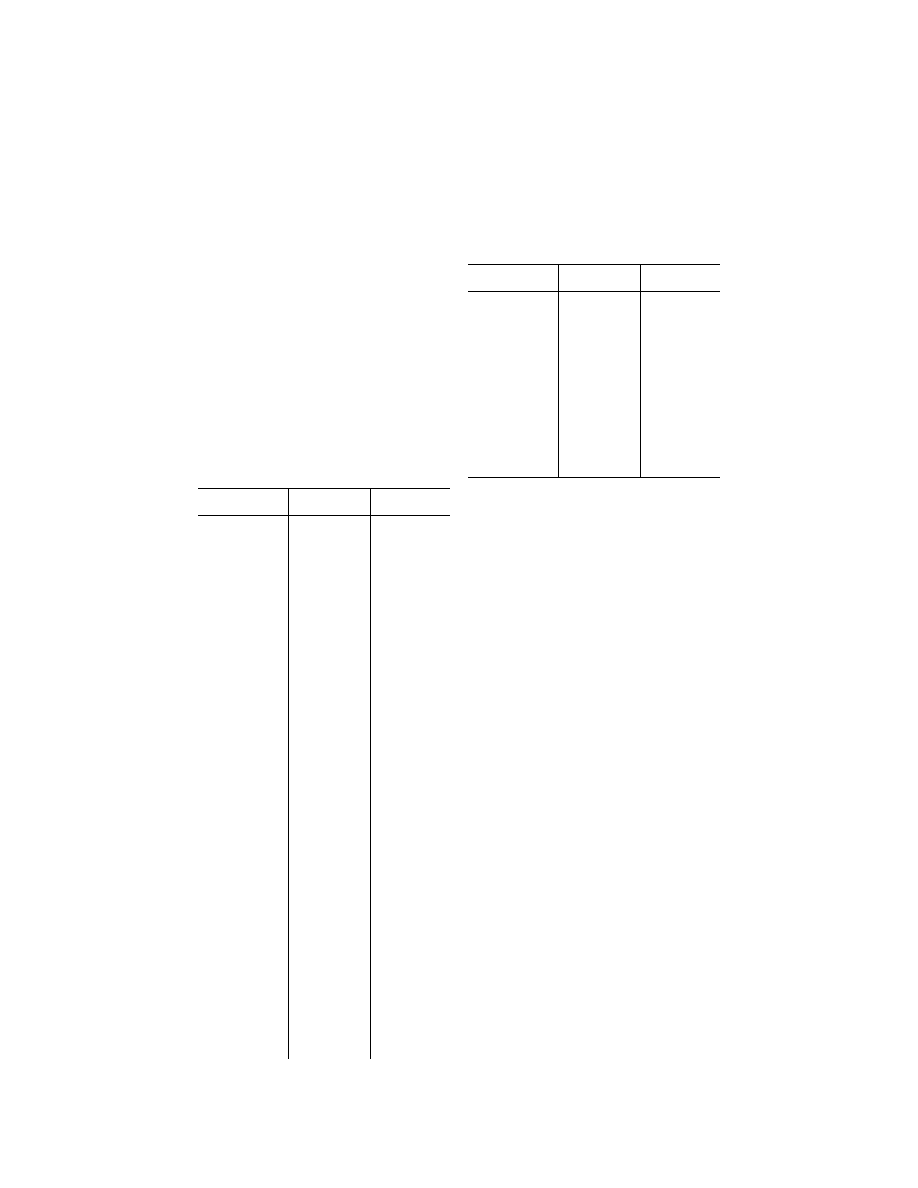
704
14 CFR Ch. I (1–1–24 Edition)
§ 91.155
(b)
Cancellation. When a flight plan
has been activated, the pilot in com-
mand, upon canceling or completing
the flight under the flight plan, shall
notify an FAA Flight Service Station
or ATC facility.
§ 91.155
Basic VFR weather minimums.
(a) Except as provided in paragraph
(b) of this section and § 91.157, no per-
son may operate an aircraft under VFR
when the flight visibility is less, or at
a distance from clouds that is less,
than that prescribed for the cor-
responding altitude and class of air-
space in the following table:
Airspace Flight
visibility
Distance from
clouds
Class A ....................
Not Applicable ....
Not Applicable.
Class B ....................
3 statute miles ....
Clear of Clouds.
Class C ....................
3 statute miles ....
500 feet below.
.............................
1,000 feet above.
.............................
2,000 feet hori-
zontal.
Class D ....................
3 statute miles ....
500 feet below.
.............................
1,000 feet above.
.............................
2,000 feet hori-
zontal.
Class E:
Less than
10,000 feet
MSL.
3 statute miles ....
500 feet below.
.............................
1,000 feet above.
.............................
2,000 feet hori-
zontal.
At or above
10,000 feet
MSL.
5 statute miles ....
1,000 feet below.
.............................
1,000 feet above.
.............................
1 statute mile hor-
izontal.
Class G:
1,200 feet or
less above
the surface
(regardless of
MSL altitude)
For aircraft other
than helicopters:
Day, except as
provided in
§ 91.155(b).
1 statute mile ......
Clear of clouds.
Night, except as
provided in
§ 91.155(b).
3 statute miles ....
500 feet below.
.............................
1,000 feet above.
.............................
2,000 feet hori-
zontal.
For helicopters:
Day ...................
1
⁄
2
statute mile ....
Clear of clouds
Night, except as
provided in
§ 91.155(b).
1 statute mile ......
Clear of clouds.
More than 1,200
feet above the
surface but
less than
10,000 feet
MSL
Day ............
1 statute mile ......
500 feet below.
Airspace Flight
visibility
Distance from
clouds
.............................
1,000 feet above.
.............................
2,000 feet hori-
zontal.
Night ..........
3 statute miles ....
500 feet below.
.............................
1,000 feet above.
.............................
2,000 feet hori-
zontal.
More than 1,200
feet above the
surface and at
or above
10,000 feet
MSL.
5 statute miles ....
1,000 feet below.
.............................
1,000 feet above.
.............................
1 statute mile hor-
izontal.
(b)
Class G Airspace. Notwithstanding
the provisions of paragraph (a) of this
section, the following operations may
be conducted in Class G airspace below
1,200 feet above the surface:
(1)
Helicopter. A helicopter may be op-
erated clear of clouds in an airport
traffic pattern within
1
⁄
2
mile of the
runway or helipad of intended landing
if the flight visibility is not less than
1
⁄
2
statute mile.
(2)
Airplane, powered parachute, or
weight-shift-control aircraft. If the visi-
bility is less than 3 statute miles but
not less than 1 statute mile during
night hours and you are operating in
an airport traffic pattern within
1
⁄
2
mile of the runway, you may operate
an airplane, powered parachute, or
weight-shift-control aircraft clear of
clouds.
(c) Except as provided in § 91.157, no
person may operate an aircraft beneath
the ceiling under VFR within the lat-
eral boundaries of controlled airspace
designated to the surface for an airport
when the ceiling is less than 1,000 feet.
(d) Except as provided in § 91.157 of
this part, no person may take off or
land an aircraft, or enter the traffic
pattern of an airport, under VFR, with-
in the lateral boundaries of the surface
areas of Class B, Class C, Class D, or
Class E airspace designated for an air-
port—
(1) Unless ground visibility at that
airport is at least 3 statute miles; or
(2) If ground visibility is not reported
at that airport, unless flight visibility
during landing or takeoff, or while op-
erating in the traffic pattern is at least
3 statute miles.
VerDate Sep<11>2014
14:00 Mar 14, 2024
Jkt 262047
PO 00000
Frm 00714
Fmt 8010
Sfmt 8010
Q:\14\14V2.TXT
PC31
aworley on LAPBH6H6L3 with DISTILLER

705
Federal Aviation Administration, DOT
§ 91.161
(e) For the purpose of this section, an
aircraft operating at the base altitude
of a Class E airspace area is considered
to be within the airspace directly
below that area.
[Doc. No. 24458, 56 FR 65660, Dec. 17, 1991, as
amended by Amdt. 91–235, 58 FR 51968, Oct. 5,
1993; Amdt. 91–282, 69 FR 44880, July 27, 2004;
Amdt. 91–330, 79 FR 9972, Feb. 21, 2014; Amdt.
91–330A, 79 FR 41125, July 15, 2014]
§ 91.157
Special VFR weather mini-
mums.
(a) Except as provided in appendix D,
section 3, of this part, special VFR op-
erations may be conducted under the
weather minimums and requirements
of this section, instead of those con-
tained in § 91.155, below 10,000 feet MSL
within the airspace contained by the
upward extension of the lateral bound-
aries of the controlled airspace des-
ignated to the surface for an airport.
(b) Special VFR operations may only
be conducted—
(1) With an ATC clearance;
(2) Clear of clouds;
(3) Except for helicopters, when flight
visibility is at least 1 statute mile; and
(4) Except for helicopters, between
sunrise and sunset (or in Alaska, when
the sun is 6 degrees or less below the
horizon) unless—
(i) The person being granted the ATC
clearance meets the applicable require-
ments for instrument flight under part
61 of this chapter; and
(ii) The aircraft is equipped as re-
quired in § 91.205(d).
(c) No person may take off or land an
aircraft (other than a helicopter) under
special VFR—
(1) Unless ground visibility is at least
1 statute mile; or
(2) If ground visibility is not re-
ported, unless flight visibility is at
least 1 statute mile. For the purposes
of this paragraph, the term flight visi-
bility includes the visibility from the
cockpit of an aircraft in takeoff posi-
tion if:
(i) The flight is conducted under this
part 91; and
(ii) The airport at which the aircraft
is located is a satellite airport that
does not have weather reporting capa-
bilities.
(d) The determination of visibility by
a pilot in accordance with paragraph
(c)(2) of this section is not an official
weather report or an official ground
visibility report.
[Amdt. 91–235, 58 FR 51968, Oct. 5, 1993, as
amended by Amdt. 91–247, 60 FR 66874, Dec.
27, 1995; Amdt. 91–262, 65 FR 16116, Mar. 24,
2000; Docket No. FAA–2022–1355, Amdt. No.
91–366, 87 FR 75846, Dec. 9, 2022]
§ 91.159
VFR cruising altitude or flight
level.
Except while holding in a holding
pattern of 2 minutes or less, or while
turning, each person operating an air-
craft under VFR in level cruising flight
more than 3,000 feet above the surface
shall maintain the appropriate altitude
or flight level prescribed below, unless
otherwise authorized by ATC:
(a) When operating below 18,000 feet
MSL and—
(1) On a magnetic course of zero de-
grees through 179 degrees, any odd
thousand foot MSL altitude + 500 feet
(such as 3,500, 5,500, or 7,500); or
(2) On a magnetic course of 180 de-
grees through 359 degrees, any even
thousand foot MSL altitude + 500 feet
(such as 4,500, 6,500, or 8,500).
(b) When operating above 18,000 feet
MSL, maintain the altitude or flight
level assigned by ATC.
[Doc. No. 18334, 54 FR 34294, Aug. 18, 1989, as
amended by Amdt. 91–276, 68 FR 61321, Oct.
27, 2003; 68 FR 70133, Dec. 17, 2003]
§ 91.161
Special awareness training re-
quired for pilots flying under visual
flight rules within a 60-nautical
mile radius of the Washington, DC
VOR/DME.
(a)
Operations within a 60-nautical mile
radius of the Washington, DC VOR/DME
under visual flight rules (VFR). Except
as provided under paragraph (e) of this
section, no person may serve as a pilot
in command or as second in command
of an aircraft while flying within a 60-
nautical mile radius of the DCA VOR/
DME, under VFR, unless that pilot has
completed Special Awareness Training
and holds a certificate of training com-
pletion.
(b)
Special Awareness Training. The
Special Awareness Training consists of
information to educate pilots about the
procedures for flying in the Wash-
ington, DC area and, more generally, in
other types of special use airspace.
VerDate Sep<11>2014
14:00 Mar 14, 2024
Jkt 262047
PO 00000
Frm 00715
Fmt 8010
Sfmt 8010
Q:\14\14V2.TXT
PC31
aworley on LAPBH6H6L3 with DISTILLER

706
14 CFR Ch. I (1–1–24 Edition)
§§ 91.162–91.165
This free training is available on the
FAA’s Web site. Upon completion of
the training, each person will need to
print out a copy of the certificate of
training completion.
(c)
Inspection of certificate of training
completion. Each person who holds a
certificate for completing the Special
Awareness Training must present it for
inspection upon request from:
(1) An authorized representative of
the FAA;
(2) An authorized representative of
the National Transportation Safety
Board;
(3) Any Federal, State, or local law
enforcement officer; or
(4) An authorized representative of
the Transportation Security Adminis-
tration.
(d)
Emergency declared. The failure to
complete the Special Awareness Train-
ing course on flying in and around the
Washington, DC Metropolitan Area is
not a violation of this section if an
emergency is declared by the pilot, as
described under § 91.3(b), or there was a
failure of two-way radio communica-
tions when operating under IFR as de-
scribed under § 91.185.
(e)
Exceptions. The requirements of
this section do not apply if the flight is
being performed in an aircraft of an air
ambulance operator certificated to
conduct part 135 operations under this
chapter, the U.S. Armed Forces, or a
law enforcement agency.
[Doc. No. FAA–2006–25250, 73 FR 46803, Aug.
12, 2008]
§§ 91.162–91.165
[Reserved]
I
NSTRUMENT
F
LIGHT
R
ULES
§ 91.167
Fuel requirements for flight in
IFR conditions.
(a) No person may operate a civil air-
craft in IFR conditions unless it car-
ries enough fuel (considering weather
reports and forecasts and weather con-
ditions) to—
(1) Complete the flight to the first
airport of intended landing;
(2) Except as provided in paragraph
(b) of this section, fly from that airport
to the alternate airport; and
(3) Fly after that for 45 minutes at
normal cruising speed or, for heli-
copters, fly after that for 30 minutes at
normal cruising speed.
(b) Paragraph (a)(2) of this section
does not apply if:
(1) Part 97 of this chapter prescribes
a standard instrument approach proce-
dure to, or a special instrument ap-
proach procedure has been issued by
the Administrator to the operator for,
the first airport of intended landing;
and
(2) Appropriate weather reports or
weather forecasts, or a combination of
them, indicate the following:
(i)
For aircraft other than helicopters.
For at least 1 hour before and for 1
hour after the estimated time of ar-
rival, the ceiling will be at least 2,000
feet above the airport elevation and
the visibility will be at least 3 statute
miles.
(ii)
For helicopters. At the estimated
time of arrival and for 1 hour after the
estimated time of arrival, the ceiling
will be at least 1,000 feet above the air-
port elevation, or at least 400 feet
above the lowest applicable approach
minima, whichever is higher, and the
visibility will be at least 2 statute
miles.
[Doc. No. 98–4390, 65 FR 3546, Jan. 21, 2000]
§ 91.169
IFR flight plan: Information
required.
(a)
Information required. Unless other-
wise authorized by ATC, each person
filing an IFR flight plan must include
in it the following information:
(1) Information required under § 91.153
(a) of this part;
(2) Except as provided in paragraph
(b) of this section, an alternate airport.
(b) Paragraph (a)(2) of this section
does not apply if :
(1) Part 97 of this chapter prescribes
a standard instrument approach proce-
dure to, or a special instrument ap-
proach procedure has been issued by
the Administrator to the operator for,
the first airport of intended landing;
and
(2) Appropriate weather reports or
weather forecasts, or a combination of
them, indicate the following:
(i)
For aircraft other than helicopters.
For at least 1 hour before and for 1
hour after the estimated time of ar-
rival, the ceiling will be at least 2,000
feet above the airport elevation and
VerDate Sep<11>2014
14:00 Mar 14, 2024
Jkt 262047
PO 00000
Frm 00716
Fmt 8010
Sfmt 8010
Q:\14\14V2.TXT
PC31
aworley on LAPBH6H6L3 with DISTILLER

707
Federal Aviation Administration, DOT
§ 91.171
the visibility will be at least 3 statute
miles.
(ii)
For helicopters. At the estimated
time of arrival and for 1 hour after the
estimated time of arrival, the ceiling
will be at least 1,000 feet above the air-
port elevation, or at least 400 feet
above the lowest applicable approach
minima, whichever is higher, and the
visibility will be at least 2 statute
miles.
(c)
IFR alternate airport weather mini-
ma. Unless otherwise authorized by the
Administrator, no person may include
an alternate airport in an IFR flight
plan unless appropriate weather re-
ports or weather forecasts, or a com-
bination of them, indicate that, at the
estimated time of arrival at the alter-
nate airport, the ceiling and visibility
at that airport will be at or above the
following weather minima:
(1) If an instrument approach proce-
dure has been published in part 97 of
this chapter, or a special instrument
approach procedure has been issued by
the Administrator to the operator, for
that airport, the following minima:
(i)
For aircraft other than helicopters:
The alternate airport minima specified
in that procedure, or if none are speci-
fied the following standard approach
minima:
(A)
For a precision approach procedure.
Ceiling 600 feet and visibility 2 statute
miles.
(B)
For a nonprecision approach proce-
dure. Ceiling 800 feet and visibility 2
statute miles.
(ii)
For helicopters: Ceiling 200 feet
above the minimum for the approach
to be flown, and visibility at least 1
statute mile but never less than the
minimum visibility for the approach to
be flown, and
(2) If no instrument approach proce-
dure has been published in part 97 of
this chapter and no special instrument
approach procedure has been issued by
the Administrator to the operator, for
the alternate airport, the ceiling and
visibility minima are those allowing
descent from the MEA, approach, and
landing under basic VFR.
(d)
Cancellation. When a flight plan
has been activated, the pilot in com-
mand, upon canceling or completing
the flight under the flight plan, shall
notify an FAA Flight Service Station
or ATC facility.
[Doc. No. 18334, 54 FR 34294, Aug. 18, 1989, as
amended by Amdt. 91–259, 65 FR 3546, Jan. 21,
2000]
§ 91.171
VOR equipment check for IFR
operations.
(a) No person may operate a civil air-
craft under IFR using the VOR system
of radio navigation unless the VOR
equipment of that aircraft—
(1) Is maintained, checked, and in-
spected under an approved procedure;
or
(2) Has been operationally checked
within the preceding 30 days, and was
found to be within the limits of the
permissible indicated bearing error set
forth in paragraph (b) or (c) of this sec-
tion.
(b) Except as provided in paragraph
(c) of this section, each person con-
ducting a VOR check under paragraph
(a)(2) of this section shall—
(1) Use, at the airport of intended de-
parture, an FAA-operated or approved
test signal or a test signal radiated by
a certificated and appropriately rated
radio repair station or, outside the
United States, a test signal operated or
approved by an appropriate authority
to check the VOR equipment (the max-
imum permissible indicated bearing
error is plus or minus 4 degrees); or
(2) Use, at the airport of intended de-
parture, a point on the airport surface
designated as a VOR system check-
point by the Administrator, or, outside
the United States, by an appropriate
authority (the maximum permissible
bearing error is plus or minus 4 de-
grees);
(3) If neither a test signal nor a des-
ignated checkpoint on the surface is
available, use an airborne checkpoint
designated by the Administrator or,
outside the United States, by an appro-
priate authority (the maximum per-
missible bearing error is plus or minus
6 degrees); or
(4) If no check signal or point is
available, while in flight—
(i) Select a VOR radial that lies
along the centerline of an established
VOR airway;
(ii) Select a prominent ground point
along the selected radial preferably
more than 20 nautical miles from the
VerDate Sep<11>2014
14:00 Mar 14, 2024
Jkt 262047
PO 00000
Frm 00717
Fmt 8010
Sfmt 8010
Q:\14\14V2.TXT
PC31
aworley on LAPBH6H6L3 with DISTILLER

708
14 CFR Ch. I (1–1–24 Edition)
§ 91.173
VOR ground facility and maneuver the
aircraft directly over the point at a
reasonably low altitude; and
(iii) Note the VOR bearing indicated
by the receiver when over the ground
point (the maximum permissible vari-
ation between the published radial and
the indicated bearing is 6 degrees).
(c) If dual system VOR (units inde-
pendent of each other except for the
antenna) is installed in the aircraft,
the person checking the equipment
may check one system against the
other in place of the check procedures
specified in paragraph (b) of this sec-
tion. Both systems shall be tuned to
the same VOR ground facility and note
the indicated bearings to that station.
The maximum permissible variation
between the two indicated bearings is 4
degrees.
(d) Each person making the VOR
operational check, as specified in para-
graph (b) or (c) of this section, shall
enter the date, place, bearing error,
and sign the aircraft log or other
record. In addition, if a test signal ra-
diated by a repair station, as specified
in paragraph (b)(1) of this section, is
used, an entry must be made in the air-
craft log or other record by the repair
station certificate holder or the certifi-
cate holder’s representative certifying
to the bearing transmitted by the re-
pair station for the check and the date
of transmission.
(Approved by the Office of Management and
Budget under control number 2120–0005)
§ 91.173
ATC clearance and flight plan
required.
No person may operate an aircraft in
controlled airspace under IFR unless
that person has—
(a) Filed an IFR flight plan; and
(b) Received an appropriate ATC
clearance.
§ 91.175
Takeoff and landing under
IFR.
(a)
Instrument approaches to civil air-
ports. Unless otherwise authorized by
the FAA, when it is necessary to use an
instrument approach to a civil airport,
each person operating an aircraft must
use a standard instrument approach
procedure prescribed in part 97 of this
chapter for that airport. This para-
graph does not apply to United States
military aircraft.
(b)
Authorized DA/DH or MDA. For the
purpose of this section, when the ap-
proach procedure being used provides
for and requires the use of a DA/DH or
MDA, the authorized DA/DH or MDA is
the highest of the following:
(1) The DA/DH or MDA prescribed by
the approach procedure.
(2) The DA/DH or MDA prescribed for
the pilot in command.
(3) The DA/DH or MDA appropriate
for the aircraft equipment available
and used during the approach.
(c)
Operation below DA/DH or MDA.
Except as provided in § 91.176 of this
chapter, where a DA/DH or MDA is ap-
plicable, no pilot may operate an air-
craft, except a military aircraft of the
United States, below the authorized
MDA or continue an approach below
the authorized DA/DH unless—
(1) The aircraft is continuously in a
position from which a descent to a
landing on the intended runway can be
made at a normal rate of descent using
normal maneuvers, and for operations
conducted under part 121 or part 135 un-
less that descent rate will allow touch-
down to occur within the touchdown
zone of the runway of intended landing;
(2) The flight visibility is not less
than the visibility prescribed in the
standard instrument approach being
used; and
(3) Except for a Category II or Cat-
egory III approach where any necessary
visual reference requirements are spec-
ified by the Administrator, at least one
of the following visual references for
the intended runway is distinctly visi-
ble and identifiable to the pilot:
(i) The approach light system, except
that the pilot may not descend below
100 feet above the touchdown zone ele-
vation using the approach lights as a
reference unless the red terminating
bars or the red side row bars are also
distinctly visible and identifiable.
(ii) The threshold.
(iii) The threshold markings.
(iv) The threshold lights.
(v) The runway end identifier lights.
(vi) The visual glideslope indicator.
(vii) The touchdown zone or touch-
down zone markings.
(viii) The touchdown zone lights.
(ix) The runway or runway markings.
VerDate Sep<11>2014
14:00 Mar 14, 2024
Jkt 262047
PO 00000
Frm 00718
Fmt 8010
Sfmt 8010
Q:\14\14V2.TXT
PC31
aworley on LAPBH6H6L3 with DISTILLER

709
Federal Aviation Administration, DOT
§ 91.175
(x) The runway lights.
(d)
Landing. No pilot operating an
aircraft, except a military aircraft of
the United States, may land that air-
craft when—
(1) For operations conducted under
§ 91.176 of this part, the requirements of
paragraphs (a)(3)(iii) or (b)(3)(iii), as
applicable, of that section are not met;
or
(2) For all other operations under
this part and parts 121, 125, 129, and 135,
the flight visibility is less than the vis-
ibility prescribed in the standard in-
strument approach procedure being
used.
(e)
Missed approach procedures. Each
pilot operating an aircraft, except a
military aircraft of the United States,
shall immediately execute an appro-
priate missed approach procedure when
either of the following conditions exist:
(1) Whenever operating an aircraft
pursuant to paragraph (c) of this sec-
tion or § 91.176 of this part, and the re-
quirements of that paragraph or sec-
tion are not met at either of the fol-
lowing times:
(i) When the aircraft is being oper-
ated below MDA; or
(ii) Upon arrival at the missed ap-
proach point, including a DA/DH where
a DA/DH is specified and its use is re-
quired, and at any time after that until
touchdown.
(2) Whenever an identifiable part of
the airport is not distinctly visible to
the pilot during a circling maneuver at
or above MDA, unless the inability to
see an identifiable part of the airport
results only from a normal bank of the
aircraft during the circling approach.
(f)
Civil airport takeoff minimums. This
paragraph applies to persons operating
an aircraft under part 121, 125, 129, or
135 of this chapter.
(1) Unless otherwise authorized by
the FAA, no pilot may takeoff from a
civil airport under IFR unless the
weather conditions at time of takeoff
are at or above the weather minimums
for IFR takeoff prescribed for that air-
port under part 97 of this chapter.
(2) If takeoff weather minimums are
not prescribed under part 97 of this
chapter for a particular airport, the
following weather minimums apply to
takeoffs under IFR:
(i) For aircraft, other than heli-
copters, having two engines or less—1
statute mile visibility.
(ii) For aircraft having more than
two engines—
1
⁄
2
statute mile visibility.
(iii) For helicopters—
1
⁄
2
statute mile
visibility.
(3) Except as provided in paragraph
(f)(4) of this section, no pilot may take-
off under IFR from a civil airport hav-
ing published obstacle departure proce-
dures (ODPs) under part 97 of this
chapter for the takeoff runway to be
used, unless the pilot uses such ODPs
or an alternative procedure or route as-
signed by air traffic control.
(4) Notwithstanding the requirements
of paragraph (f)(3) of this section, no
pilot may takeoff from an airport
under IFR unless:
(i) For part 121 and part 135 opera-
tors, the pilot uses a takeoff obstacle
clearance or avoidance procedure that
ensures compliance with the applicable
airplane performance operating limita-
tions requirements under part 121, sub-
part I or part 135, subpart I for takeoff
at that airport; or
(ii) For part 129 operators, the pilot
uses a takeoff obstacle clearance or
avoidance procedure that ensures com-
pliance with the airplane performance
operating limitations prescribed by the
State of the operator for takeoff at
that airport.
(g)
Military airports. Unless otherwise
prescribed by the Administrator, each
person operating a civil aircraft under
IFR into or out of a military airport
shall comply with the instrument ap-
proach procedures and the takeoff and
landing minimum prescribed by the
military authority having jurisdiction
of that airport.
(h)
Comparable values of RVR and
ground visibility. (1) Except for Category
II or Category III minimums, if RVR
minimums for takeoff or landing are
prescribed in an instrument approach
procedure, but RVR is not reported for
the runway of intended operation, the
RVR minimum shall be converted to
ground visibility in accordance with
the table in paragraph (h)(2) of this sec-
tion and shall be the visibility min-
imum for takeoff or landing on that
runway.
(2)
VerDate Sep<11>2014
14:00 Mar 14, 2024
Jkt 262047
PO 00000
Frm 00719
Fmt 8010
Sfmt 8010
Q:\14\14V2.TXT
PC31
aworley on LAPBH6H6L3 with DISTILLER
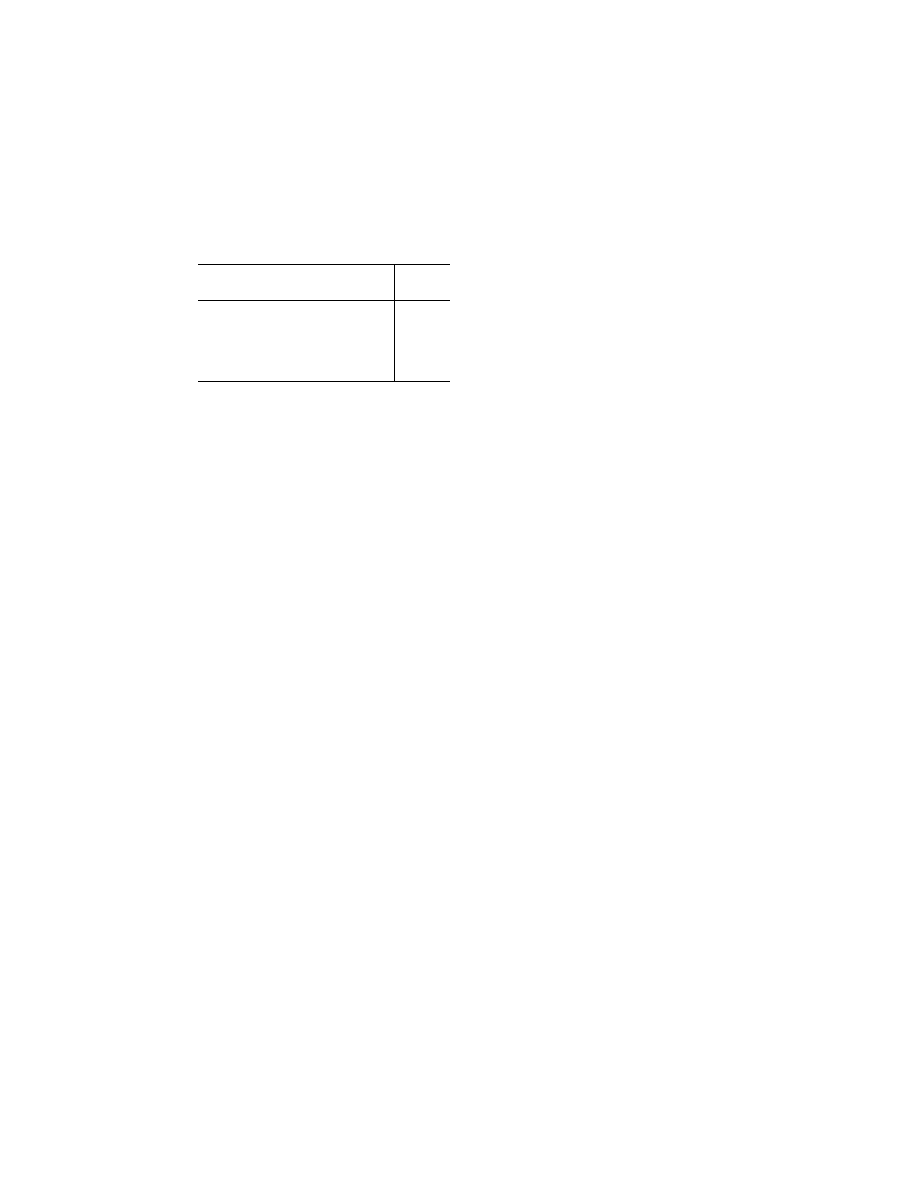
710
14 CFR Ch. I (1–1–24 Edition)
§ 91.176
RVR (feet)
Visibility
(statute
miles)
1,600 ..................................................................
1
⁄
4
2,400 ..................................................................
1
⁄
2
3,200 ..................................................................
5
⁄
8
4,000 ..................................................................
3
⁄
4
4,500 ..................................................................
7
⁄
8
5,000 ..................................................................
1
6,000 ..................................................................
1
1
⁄
4
(i)
Operations on unpublished routes
and use of radar in instrument approach
procedures. When radar is approved at
certain locations for ATC purposes, it
may be used not only for surveillance
and precision radar approaches, as ap-
plicable, but also may be used in con-
junction with instrument approach
procedures predicated on other types of
radio navigational aids. Radar vectors
may be authorized to provide course
guidance through the segments of an
approach to the final course or fix.
When operating on an unpublished
route or while being radar vectored,
the pilot, when an approach clearance
is received, shall, in addition to com-
plying with § 91.177, maintain the last
altitude assigned to that pilot until the
aircraft is established on a segment of
a published route or instrument ap-
proach procedure unless a different al-
titude is assigned by ATC. After the
aircraft is so established, published al-
titudes apply to descent within each
succeeding route or approach segment
unless a different altitude is assigned
by ATC. Upon reaching the final ap-
proach course or fix, the pilot may ei-
ther complete the instrument approach
in accordance with a procedure ap-
proved for the facility or continue a
surveillance or precision radar ap-
proach to a landing.
(j)
Limitation on procedure turns. In
the case of a radar vector to a final ap-
proach course or fix, a timed approach
from a holding fix, or an approach for
which the procedure specifies ‘‘No PT,’’
no pilot may make a procedure turn
unless cleared to do so by ATC.
(k)
ILS components. The basic compo-
nents of an ILS are the localizer, glide
slope, and outer marker, and, when in-
stalled for use with Category II or Cat-
egory III instrument approach proce-
dures, an inner marker. The following
means may be used to substitute for
the outer marker: Compass locator;
precision approach radar (PAR) or air-
port surveillance radar (ASR); DME,
VOR, or nondirectional beacon fixes
authorized in the standard instrument
approach procedure; or a suitable
RNAV system in conjunction with a fix
identified in the standard instrument
approach procedure. Applicability of,
and substitution for, the inner marker
for a Category II or III approach is de-
termined by the appropriate 14 CFR
part 97 approach procedure, letter of
authorization, or operations specifica-
tions issued to an operator.
[Doc. No. 18334, 54 FR 34294, Aug. 18, 1989, as
amended by Amdt. 91–267, 66 FR 21066, Apr.
27, 2001; Amdt. 91–281, 69 FR 1640, Jan. 9, 2004;
Amdt. 91–296, 72 FR 31678, June 7, 2007; Amdt.
91–306, 74 FR 20205, May 1, 2009; Docket FAA–
2013–0485, Amdt. 91–345, 81 FR 90172, Dec. 13,
2016; Amdt. 91–345B, 83 FR 10568, Mar. 12, 2018]
§ 91.176
Straight-in landing operations
below DA/DH or MDA using an en-
hanced flight vision system (EFVS)
under IFR.
(a)
EFVS operations to touchdown and
rollout. Unless otherwise authorized by
the Administrator to use an MDA as a
DA/DH with vertical navigation on an
instrument approach procedure, or un-
less paragraph (d) of this section ap-
plies, no person may conduct an EFVS
operation in an aircraft, except a mili-
tary aircraft of the United States, at
any airport below the authorized DA/
DH to touchdown and rollout unless
the minimums used for the particular
approach procedure being flown include
a DA or DH, and the following require-
ments are met:
(1)
Equipment. (i) The aircraft must
be equipped with an operable EFVS
that meets the applicable airworthi-
ness requirements. The EFVS must:
(A) Have an electronic means to pro-
vide a display of the forward external
scene topography (the applicable nat-
ural or manmade features of a place or
region especially in a way to show
their relative positions and elevation)
through the use of imaging sensors, in-
cluding but not limited to forward-
looking infrared, millimeter wave
radiometry, millimeter wave radar, or
low-light level image intensification.
(B) Present EFVS sensor imagery,
aircraft flight information, and flight
symbology on a head up display, or an
equivalent display, so that the im-
agery, information and symbology are
VerDate Sep<11>2014
14:00 Mar 14, 2024
Jkt 262047
PO 00000
Frm 00720
Fmt 8010
Sfmt 8010
Q:\14\14V2.TXT
PC31
aworley on LAPBH6H6L3 with DISTILLER

711
Federal Aviation Administration, DOT
§ 91.176
clearly visible to the pilot flying in his
or her normal position with the line of
vision looking forward along the flight
path. Aircraft flight information and
flight symbology must consist of at
least airspeed, vertical speed, aircraft
attitude, heading, altitude, height
above ground level such as that pro-
vided by a radio altimeter or other de-
vice capable of providing equivalent
performance, command guidance as ap-
propriate for the approach to be flown,
path deviation indications, flight path
vector, and flight path angle reference
cue. Additionally, for aircraft other
than rotorcraft, the EFVS must dis-
play flare prompt or flare guidance.
(C) Present the displayed EFVS sen-
sor imagery, attitude symbology, flight
path vector, and flight path angle ref-
erence cue, and other cues, which are
referenced to the EFVS sensor imagery
and external scene topography, so that
they are aligned with, and scaled to,
the external view.
(D) Display the flight path angle ref-
erence cue with a pitch scale. The
flight path angle reference cue must be
selectable by the pilot to the desired
descent angle for the approach and be
sufficient to monitor the vertical flight
path of the aircraft.
(E) Display the EFVS sensor im-
agery, aircraft flight information, and
flight symbology such that they do not
adversely obscure the pilot’s outside
view or field of view through the cock-
pit window.
(F) Have display characteristics, dy-
namics, and cues that are suitable for
manual control of the aircraft to
touchdown in the touchdown zone of
the runway of intended landing and
during rollout.
(ii) When a minimum flightcrew of
more than one pilot is required, the
aircraft must be equipped with a dis-
play that provides the pilot monitoring
with EFVS sensor imagery. Any sym-
bology displayed may not adversely ob-
scure the sensor imagery of the runway
environment.
(2)
Operations. (i) The pilot con-
ducting the EFVS operation may not
use circling minimums.
(ii) Each required pilot flightcrew
member must have adequate knowl-
edge of, and familiarity with, the air-
craft, the EFVS, and the procedures to
be used.
(iii) The aircraft must be equipped
with, and the pilot flying must use, an
operable EFVS that meets the equip-
ment requirements of paragraph (a)(1)
of this section.
(iv) When a minimum flightcrew of
more than one pilot is required, the
pilot monitoring must use the display
specified in paragraph (a)(1)(ii) to mon-
itor and assess the safe conduct of the
approach, landing, and rollout.
(v) The aircraft must continuously be
in a position from which a descent to a
landing on the intended runway can be
made at a normal rate of descent using
normal maneuvers.
(vi) The descent rate must allow
touchdown to occur within the touch-
down zone of the runway of intended
landing.
(vii) Each required pilot flightcrew
member must meet the following re-
quirements—
(A) A person exercising the privileges
of a pilot certificate issued under this
chapter, any person serving as a re-
quired pilot flightcrew member of a
U.S.-registered aircraft, or any person
serving as a required pilot flightcrew
member for a part 121, 125, or 135 oper-
ator, must be qualified in accordance
with part 61 and, as applicable, the
training, testing, and qualification pro-
visions of subpart K of this part, part
121, 125, or 135 of this chapter that
apply to the operation; or
(B) Each person acting as a required
pilot flightcrew member for a foreign
air carrier subject to part 129, or any
person serving as a required pilot
flightcrew member of a foreign reg-
istered aircraft, must be qualified in
accordance with the training require-
ments of the civil aviation authority of
the State of the operator for the EFVS
operation to be conducted.
(viii) A person conducting operations
under this part must conduct the oper-
ation in accordance with a letter of au-
thorization for the use of EFVS unless
the operation is conducted in an air-
craft that has been issued an experi-
mental certificate under § 21.191 of this
chapter for the purpose of research and
development or showing compliance
with regulations, or the operation is
being conducted by a person otherwise
VerDate Sep<11>2014
14:00 Mar 14, 2024
Jkt 262047
PO 00000
Frm 00721
Fmt 8010
Sfmt 8010
Q:\14\14V2.TXT
PC31
aworley on LAPBH6H6L3 with DISTILLER

712
14 CFR Ch. I (1–1–24 Edition)
§ 91.176
authorized to conduct EFVS operations
under paragraphs (a)(2)(ix) through
(xii) of this section. A person applying
to the FAA for a letter of authoriza-
tion must submit an application in a
form and manner prescribed by the Ad-
ministrator.
(ix) A person conducting operations
under subpart K of this part must con-
duct the operation in accordance with
management specifications authorizing
the use of EFVS.
(x) A person conducting operations
under part 121, 129, or 135 of this chap-
ter must conduct the operation in ac-
cordance with operations specifications
authorizing the use of EFVS.
(xi) A person conducting operations
under part 125 of this chapter must
conduct the operation in accordance
with operations specifications author-
izing the use of EFVS or, for a holder
of a part 125 letter of deviation author-
ity, a letter of authorization for the
use of EFVS.
(xii) A person conducting an EFVS
operation during an authorized Cat-
egory II or Category III operation must
conduct the operation in accordance
with operations specifications, man-
agement specifications, or a letter of
authorization authorizing EFVS oper-
ations during authorized Category II or
Category III operations.
(3)
Visibility and visual reference re-
quirements. No pilot operating under
this section or §§ 121.651, 125.381, or
135.225 of this chapter may continue an
approach below the authorized DA/DH
and land unless:
(i) The pilot determines that the en-
hanced flight visibility observed by use
of an EFVS is not less than the visi-
bility prescribed in the instrument ap-
proach procedure being used.
(ii) From the authorized DA/DH to
100 feet above the touchdown zone ele-
vation of the runway of intended land-
ing, any approach light system or both
the runway threshold and the touch-
down zone are distinctly visible and
identifiable to the pilot using an
EFVS.
(A) The pilot must identify the run-
way threshold using at least one of the
following visual references—
(
1) The beginning of the runway land-
ing surface;
(
2) The threshold lights; or
(
3) The runway end identifier lights.
(B) The pilot must identify the
touchdown zone using at least one of
the following visual references—
(
1) The runway touchdown zone land-
ing surface;
(
2) The touchdown zone lights;
(
3) The touchdown zone markings; or
(
4) The runway lights.
(iii) At 100 feet above the touchdown
zone elevation of the runway of in-
tended landing and below that altitude,
the enhanced flight visibility using
EFVS must be sufficient for one of the
following visual references to be dis-
tinctly visible and identifiable to the
pilot—
(A) The runway threshold;
(B) The lights or markings of the
threshold;
(C) The runway touchdown zone land-
ing surface; or
(D) The lights or markings of the
touchdown zone.
(4)
Additional requirements. The Ad-
ministrator may prescribe additional
equipment, operational, and visibility
and visual reference requirements to
account for specific equipment charac-
teristics, operational procedures, or ap-
proach characteristics. These require-
ments will be specified in an operator’s
operations specifications, management
specifications, or letter of authoriza-
tion authorizing the use of EFVS.
(b)
EFVS operations to 100 feet above
the touchdown zone elevation. Except as
specified in paragraph (d) of this sec-
tion, no person may conduct an EFVS
operation in an aircraft, except a mili-
tary aircraft of the United States, at
any airport below the authorized DA/
DH or MDA to 100 feet above the touch-
down zone elevation unless the fol-
lowing requirements are met:
(1)
Equipment. (i) The aircraft must
be equipped with an operable EFVS
that meets the applicable airworthi-
ness requirements.
(ii) The EFVS must meet the require-
ments of paragraph (a)(1)(i)(A) through
(F) of this section, but need not present
flare prompt, flare guidance, or height
above ground level.
(2)
Operations. (i) The pilot con-
ducting the EFVS operation may not
use circling minimums.
VerDate Sep<11>2014
14:00 Mar 14, 2024
Jkt 262047
PO 00000
Frm 00722
Fmt 8010
Sfmt 8010
Q:\14\14V2.TXT
PC31
aworley on LAPBH6H6L3 with DISTILLER

713
Federal Aviation Administration, DOT
§ 91.176
(ii) Each required pilot flightcrew
member must have adequate knowl-
edge of, and familiarity with, the air-
craft, the EFVS, and the procedures to
be used.
(iii) The aircraft must be equipped
with, and the pilot flying must use, an
operable EFVS that meets the equip-
ment requirements of paragraph (b)(1)
of this section.
(iv) The aircraft must continuously
be in a position from which a descent
to a landing on the intended runway
can be made at a normal rate of de-
scent using normal maneuvers.
(v) For operations conducted under
part 121 or part 135 of this chapter, the
descent rate must allow touchdown to
occur within the touchdown zone of the
runway of intended landing.
(vi) Each required pilot flightcrew
member must meet the following re-
quirements—
(A) A person exercising the privileges
of a pilot certificate issued under this
chapter, any person serving as a re-
quired pilot flightcrew member of a
U.S.-registered aircraft, or any person
serving as a required pilot flightcrew
member for a part 121, 125, or 135 oper-
ator, must be qualified in accordance
with part 61 and, as applicable, the
training, testing, and qualification pro-
visions of subpart K of this part, part
121, 125, or 135 of this chapter that
apply to the operation; or
(B) Each person acting as a required
pilot flightcrew member for a foreign
air carrier subject to part 129, or any
person serving as a required pilot
flightcrew member of a foreign reg-
istered aircraft, must be qualified in
accordance with the training require-
ments of the civil aviation authority of
the State of the operator for the EFVS
operation to be conducted.
(vii) A person conducting operations
under subpart K of this part must con-
duct the operation in accordance with
management specifications authorizing
the use of EFVS.
(viii) A person conducting operations
under part 121, 129, or 135 of this chap-
ter must conduct the operation in ac-
cordance with operations specifications
authorizing the use of EFVS.
(ix) A person conducting operations
under part 125 of this chapter must
conduct the operation in accordance
with operations specifications author-
izing the use of EFVS or, for a holder
of a part 125 letter of deviation author-
ity, a letter of authorization for the
use of EFVS.
(x) A person conducting an EFVS op-
eration during an authorized Category
II or Category III operation must con-
duct the operation in accordance with
operations specifications, management
specifications, or a letter of authoriza-
tion authorizing EFVS operations dur-
ing authorized Category II or Category
III operations.
(3)
Visibility and Visual Reference Re-
quirements. No pilot operating under
this section or § 121.651, § 125.381, or
§ 135.225 of this chapter may continue
an approach below the authorized MDA
or continue an approach below the au-
thorized DA/DH and land unless:
(i) The pilot determines that the en-
hanced flight visibility observed by use
of an EFVS is not less than the visi-
bility prescribed in the instrument ap-
proach procedure being used.
(ii) From the authorized MDA or DA/
DH to 100 feet above the touchdown
zone elevation of the runway of in-
tended landing, any approach light sys-
tem or both the runway threshold and
the touchdown zone are distinctly visi-
ble and identifiable to the pilot using
an EFVS.
(A) The pilot must identify the run-
way threshold using at least one of the
following visual references–
(
1) The beginning of the runway land-
ing surface;
(
2) The threshold lights; or
(
3) The runway end identifier lights.
(B) The pilot must identify the
touchdown zone using at least one of
the following visual references—
(
1) The runway touchdown zone land-
ing surface;
(
2) The touchdown zone lights;
(
3) The touchdown zone markings; or
(
4) The runway lights.
(iii) At 100 feet above the touchdown
zone elevation of the runway of in-
tended landing and below that altitude,
the flight visibility must be sufficient
for one of the following visual ref-
erences to be distinctly visible and
identifiable to the pilot without reli-
ance on the EFVS—
(A) The runway threshold;
VerDate Sep<11>2014
14:00 Mar 14, 2024
Jkt 262047
PO 00000
Frm 00723
Fmt 8010
Sfmt 8010
Q:\14\14V2.TXT
PC31
aworley on LAPBH6H6L3 with DISTILLER

714
14 CFR Ch. I (1–1–24 Edition)
§ 91.177
(B) The lights or markings of the
threshold;
(C) The runway touchdown zone land-
ing surface; or
(D) The lights or markings of the
touchdown zone.
(4) Compliance Date. Beginning on
March 13, 2018, a person conducting an
EFVS operation to 100 feet above the
touchdown zone elevation must comply
with the requirements of paragraph (b)
of this section.
(c)
Public aircraft certification and
training requirements. A public aircraft
operator, other than the U.S. military,
may conduct an EFVS operation under
paragraph (a) or (b) of this section only
if:
(1) The aircraft meets all of the civil
certification and airworthiness re-
quirements of paragraph (a)(1) or (b)(1)
of this section, as applicable to the
EFVS operation to be conducted; and
(2) The pilot flightcrew member, or
any other person who manipulates the
controls of an aircraft during an EFVS
operation, meets the training, recent
flight experience and refresher training
requirements of § 61.66 of this chapter
applicable to EFVS operations.
(d)
Exception for Experimental Aircraft.
The requirement to use an EFVS that
meets the applicable airworthiness re-
quirements specified in paragraphs
(a)(1)(i), (a)(2)(iii), (b)(1)(i), and
(b)(2)(iii) of this section does not apply
to operations conducted in an aircraft
issued an experimental certificate
under § 21.191 of this chapter for the
purpose of research and development or
showing compliance with regulations,
provided the Administrator has deter-
mined that the operations can be con-
ducted safely in accordance with oper-
ating limitations issued for that pur-
pose.
[Docket FAA–2013–0485, Amdt. 91–345, 81 FR
90172, Dec. 13, 2016; 82 FR 2193, Jan. 9, 2017]
§ 91.177
Minimum altitudes for IFR op-
erations.
(a)
Operation of aircraft at minimum al-
titudes. Except when necessary for
takeoff or landing, or unless otherwise
authorized by the FAA, no person may
operate an aircraft under IFR below—
(1) The applicable minimum altitudes
prescribed in parts 95 and 97 of this
chapter. However, if both a MEA and a
MOCA are prescribed for a particular
route or route segment, a person may
operate an aircraft below the MEA
down to, but not below, the MOCA, pro-
vided the applicable navigation signals
are available. For aircraft using VOR
for navigation, this applies only when
the aircraft is within 22 nautical miles
of that VOR (based on the reasonable
estimate by the pilot operating the air-
craft of that distance); or
(2) If no applicable minimum altitude
is prescribed in parts 95 and 97 of this
chapter, then—
(i) In the case of operations over an
area designated as a mountainous area
in part 95 of this chapter, an altitude of
2,000 feet above the highest obstacle
within a horizontal distance of 4 nau-
tical miles from the course to be flown;
or
(ii) In any other case, an altitude of
1,000 feet above the highest obstacle
within a horizontal distance of 4 nau-
tical miles from the course to be flown.
(b)
Climb. Climb to a higher minimum
IFR altitude shall begin immediately
after passing the point beyond which
that minimum altitude applies, except
that when ground obstructions inter-
vene, the point beyond which that
higher minimum altitude applies shall
be crossed at or above the applicable
MCA.
[Doc. No. 18334, 54 FR 34294, Aug. 18, 1989, as
amended by Amdt. 91–296, 72 FR 31678, June
7, 2007; Amdt. 91–315, 75 FR 30690, June 2, 2010]
§ 91.179
IFR cruising altitude or flight
level.
Unless otherwise authorized by ATC,
the following rules apply—
(a)
In controlled airspace. Each person
operating an aircraft under IFR in
level cruising flight in controlled air-
space shall maintain the altitude or
flight level assigned that aircraft by
ATC. However, if the ATC clearance as-
signs ‘‘VFR conditions on-top,’’ that
person shall maintain an altitude or
flight level as prescribed by § 91.159.
(b)
In uncontrolled airspace. Except
while in a holding pattern of 2 minutes
or less or while turning, each person
operating an aircraft under IFR in
level cruising flight in uncontrolled
airspace shall maintain an appropriate
altitude as follows:
VerDate Sep<11>2014
14:00 Mar 14, 2024
Jkt 262047
PO 00000
Frm 00724
Fmt 8010
Sfmt 8010
Q:\14\14V2.TXT
PC31
aworley on LAPBH6H6L3 with DISTILLER

715
Federal Aviation Administration, DOT
§ 91.183
(1) When operating below 18,000 feet
MSL and—
(i) On a magnetic course of zero de-
grees through 179 degrees, any odd
thousand foot MSL altitude (such as
3,000, 5,000, or 7,000); or
(ii) On a magnetic course of 180 de-
grees through 359 degrees, any even
thousand foot MSL altitude (such as
2,000, 4,000, or 6,000).
(2) When operating at or above 18,000
feet MSL but below flight level 290,
and—
(i) On a magnetic course of zero de-
grees through 179 degrees, any odd
flight level (such as 190, 210, or 230); or
(ii) On a magnetic course of 180 de-
grees through 359 degrees, any even
flight level (such as 180, 200, or 220).
(3) When operating at flight level 290
and above in non-RVSM airspace, and—
(i) On a magnetic course of zero de-
grees through 179 degrees, any flight
level, at 4,000-foot intervals, beginning
at and including flight level 290 (such
as flight level 290, 330, or 370); or
(ii) On a magnetic course of 180 de-
grees through 359 degrees, any flight
level, at 4,000-foot intervals, beginning
at and including flight level 310 (such
as flight level 310, 350, or 390).
(4) When operating at flight level 290
and above in airspace designated as Re-
duced Vertical Separation Minimum
(RVSM) airspace and—
(i) On a magnetic course of zero de-
grees through 179 degrees, any odd
flight level, at 2,000-foot intervals be-
ginning at and including flight level 290
(such as flight level 290, 310, 330, 350,
370, 390, 410); or
(ii) On a magnetic course of 180 de-
grees through 359 degrees, any even
flight level, at 2000-foot intervals be-
ginning at and including flight level 300
(such as 300, 320, 340, 360, 380, 400).
[Doc. No. 18334, 54 FR 34294, Aug. 18, 1989, as
amended by Amdt. 91–276, 68 FR 61321, Oct.
27, 2003; 68 FR 70133, Dec. 17, 2003; Amdt. 91–
296, 72 FR 31679, June 7, 2007]
§ 91.180
Operations within airspace
designated as Reduced Vertical
Separation Minimum airspace.
(a) Except as provided in paragraph
(b) of this section, no person may oper-
ate a civil aircraft in airspace des-
ignated as Reduced Vertical Separa-
tion Minimum (RVSM) airspace unless:
(1) The operator and the operator’s
aircraft comply with the minimum
standards of appendix G of this part;
and
(2) The operator is authorized by the
Administrator or the country of reg-
istry to conduct such operations.
(b) The Administrator may authorize
a deviation from the requirements of
this section.
[Amdt. 91–276, 68 FR 70133, Dec. 17, 2003]
§ 91.181
Course to be flown.
Unless otherwise authorized by ATC,
no person may operate an aircraft
within controlled airspace under IFR
except as follows:
(a) On an ATS route, along the cen-
terline of that airway.
(b) On any other route, along the di-
rect course between the navigational
aids or fixes defining that route. How-
ever, this section does not prohibit ma-
neuvering the aircraft to pass well
clear of other air traffic or the maneu-
vering of the aircraft in VFR condi-
tions to clear the intended flight path
both before and during climb or de-
scent.
[Doc. No. 18334, 54 FR 34294, Aug. 18, 1989, as
amended by Amdt. 91–296, 72 FR 31679, June
7, 2007]
§ 91.183
IFR communications.
Unless otherwise authorized by ATC,
the pilot in command of each aircraft
operated under IFR in controlled air-
space must ensure that a continuous
watch is maintained on the appropriate
frequency and must report the fol-
lowing as soon as possible—
(a) The time and altitude of passing
each designated reporting point, or the
reporting points specified by ATC, ex-
cept that while the aircraft is under
radar control, only the passing of those
reporting points specifically requested
by ATC need be reported;
(b) Any unforecast weather condi-
tions encountered; and
(c) Any other information relating to
the safety of flight.
[Doc. No. 18334, 54 FR 34294, Aug. 18, 1989, as
amended by Amdt. 91–296, 72 FR 31679, June
7, 2007]
VerDate Sep<11>2014
14:00 Mar 14, 2024
Jkt 262047
PO 00000
Frm 00725
Fmt 8010
Sfmt 8010
Q:\14\14V2.TXT
PC31
aworley on LAPBH6H6L3 with DISTILLER

716
14 CFR Ch. I (1–1–24 Edition)
§ 91.185
§ 91.185
IFR operations: Two-way
radio communications failure.
(a)
General. Unless otherwise author-
ized by ATC, each pilot who has two-
way radio communications failure
when operating under IFR shall comply
with the rules of this section.
(b)
VFR conditions. If the failure oc-
curs in VFR conditions, or if VFR con-
ditions are encountered after the fail-
ure, each pilot shall continue the flight
under VFR and land as soon as prac-
ticable.
(c)
IFR conditions. If the failure oc-
curs in IFR conditions, or if paragraph
(b) of this section cannot be complied
with, each pilot shall continue the
flight according to the following:
(1)
Route. (i) By the route assigned in
the last ATC clearance received;
(ii) If being radar vectored, by the di-
rect route from the point of radio fail-
ure to the fix, route, or airway speci-
fied in the vector clearance;
(iii) In the absence of an assigned
route, by the route that ATC has ad-
vised may be expected in a further
clearance; or
(iv) In the absence of an assigned
route or a route that ATC has advised
may be expected in a further clearance,
by the route filed in the flight plan.
(2)
Altitude. At the highest of the fol-
lowing altitudes or flight levels for the
route segment being flown:
(i) The altitude or flight level as-
signed in the last ATC clearance re-
ceived;
(ii) The minimum altitude (con-
verted, if appropriate, to minimum
flight level as prescribed in § 91.121(c))
for IFR operations; or
(iii) The altitude or flight level ATC
has advised may be expected in a fur-
ther clearance.
(3)
Leave clearance limit. (i) When the
clearance limit is a fix from which an
approach begins, commence descent or
descent and approach as close as pos-
sible to the expect-further-clearance
time if one has been received, or if one
has not been received, as close as pos-
sible to the estimated time of arrival
as calculated from the filed or amended
(with ATC) estimated time en route.
(ii) If the clearance limit is not a fix
from which an approach begins, leave
the clearance limit at the expect-fur-
ther-clearance time if one has been re-
ceived, or if none has been received,
upon arrival over the clearance limit,
and proceed to a fix from which an ap-
proach begins and commence descent
or descent and approach as close as
possible to the estimated time of ar-
rival as calculated from the filed or
amended (with ATC) estimated time en
route.
[Doc. No. 18334, 54 FR 34294, Aug. 18, 1989;
Amdt. 91–211, 54 FR 41211, Oct. 5, 1989]
§ 91.187
Operation under IFR in con-
trolled airspace: Malfunction re-
ports.
(a) The pilot in command of each air-
craft operated in controlled airspace
under IFR shall report as soon as prac-
tical to ATC any malfunctions of navi-
gational, approach, or communication
equipment occurring in flight.
(b) In each report required by para-
graph (a) of this section, the pilot in
command shall include the—
(1) Aircraft identification;
(2) Equipment affected;
(3) Degree to which the capability of
the pilot to operate under IFR in the
ATC system is impaired; and
(4) Nature and extent of assistance
desired from ATC.
§ 91.189
Category II and III operations:
General operating rules.
(a) No person may operate a civil air-
craft in a Category II or III operation
unless—
(1) The flight crew of the aircraft
consists of a pilot in command and a
second in command who hold the ap-
propriate authorizations and ratings
prescribed in § 61.3 of this chapter;
(2) Each flight crewmember has ade-
quate knowledge of, and familiarity
with, the aircraft and the procedures to
be used; and
(3) The instrument panel in front of
the pilot who is controlling the aircraft
has appropriate instrumentation for
the type of flight control guidance sys-
tem that is being used.
(b) Unless otherwise authorized by
the Administrator, no person may op-
erate a civil aircraft in a Category II or
Category III operation unless each
ground component required for that op-
eration and the related airborne equip-
ment is installed and operating.
VerDate Sep<11>2014
14:00 Mar 14, 2024
Jkt 262047
PO 00000
Frm 00726
Fmt 8010
Sfmt 8010
Q:\14\14V2.TXT
PC31
aworley on LAPBH6H6L3 with DISTILLER

717
Federal Aviation Administration, DOT
§ 91.191
(c)
Authorized DA/DH. For the pur-
pose of this section, when the approach
procedure being used provides for and
requires the use of a DA/DH, the au-
thorized DA/DH is the highest of the
following:
(1) The DA/DH prescribed by the ap-
proach procedure.
(2) The DA/DH prescribed for the
pilot in command.
(3) The DA/DH for which the aircraft
is equipped.
(d) Except as provided in § 91.176 of
this part or unless otherwise author-
ized by the Administrator, no pilot op-
erating an aircraft in a Category II or
Category III approach that provides
and requires the use of a DA/DH may
continue the approach below the au-
thorized decision height unless the fol-
lowing conditions are met:
(1) The aircraft is in a position from
which a descent to a landing on the in-
tended runway can be made at a nor-
mal rate of descent using normal ma-
neuvers, and where that descent rate
will allow touchdown to occur within
the touchdown zone of the runway of
intended landing.
(2) At least one of the following vis-
ual references for the intended runway
is distinctly visible and identifiable to
the pilot:
(i) The approach light system, except
that the pilot may not descend below
100 feet above the touchdown zone ele-
vation using the approach lights as a
reference unless the red terminating
bars or the red side row bars are also
distinctly visible and identifiable.
(ii) The threshold.
(iii) The threshold markings.
(iv) The threshold lights.
(v) The touchdown zone or touch-
down zone markings.
(vi) The touchdown zone lights.
(e) Except as provided in § 91.176 of
this part or unless otherwise author-
ized by the Administrator, each pilot
operating an aircraft shall imme-
diately execute an appropriate missed
approach whenever, prior to touch-
down, the requirements of paragraph
(d) of this section are not met.
(f) No person operating an aircraft
using a Category III approach without
decision height may land that aircraft
except in accordance with the provi-
sions of the letter of authorization
issued by the Administrator.
(g) Paragraphs (a) through (f) of this
section do not apply to operations con-
ducted by certificate holders operating
under part 121, 125, 129, or 135 of this
chapter, or holders of management
specifications issued in accordance
with subpart K of this part. Holders of
operations specifications or manage-
ment specifications may operate a civil
aircraft in a Category II or Category
III operation only in accordance with
their operations specifications or man-
agement specifications, as applicable.
[Doc. No. 18334, 54 FR 34294, Aug. 18, 1989, as
amended by Amdt. 91–280, 68 FR 54560, Sept.
17, 2003; Amdt. 91–296, 72 FR 31679, June 7,
2007; Docket FAA–2013–0485, Amdt. 91–345, 81
FR 90175, Dec. 13, 2016]
§ 91.191
Category II and Category III
manual.
(a) Except as provided in paragraph
(c) of this section, after August 4, 1997,
no person may operate a U.S.-reg-
istered civil aircraft in a Category II or
a Category III operation unless—
(1) There is available in the aircraft a
current and approved Category II or
Category III manual, as appropriate,
for that aircraft;
(2) The operation is conducted in ac-
cordance with the procedures, instruc-
tions, and limitations in the appro-
priate manual; and
(3) The instruments and equipment
listed in the manual that are required
for a particular Category II or Cat-
egory III operation have been inspected
and maintained in accordance with the
maintenance program contained in the
manual.
(b) Each operator must keep a cur-
rent copy of each approved manual at
its principal base of operations and
must make each manual available for
inspection upon request by the Admin-
istrator.
(c) This section does not apply to op-
erations conducted by a certificate
holder operating under part 121 or part
135 of this chapter or a holder of man-
agement specifications issued in ac-
cordance with subpart K of this part.
[Doc. No. 26933, 61 FR 34560, July 2, 1996, as
amended by Amdt. 91–280, 68 FR 54560, Sept.
17, 2003]
VerDate Sep<11>2014
14:00 Mar 14, 2024
Jkt 262047
PO 00000
Frm 00727
Fmt 8010
Sfmt 8010
Q:\14\14V2.TXT
PC31
aworley on LAPBH6H6L3 with DISTILLER

718
14 CFR Ch. I (1–1–24 Edition)
§ 91.193
§ 91.193
Certificate of authorization
for certain Category II operations.
The Administrator may issue a cer-
tificate of authorization authorizing
deviations from the requirements of
§§ 91.189, 91.191, and 91.205(f) for the op-
eration of small aircraft identified as
Category A aircraft in § 97.3 of this
chapter in Category II operations if the
Administrator finds that the proposed
operation can be safely conducted
under the terms of the certificate.
Such authorization does not permit op-
eration of the aircraft carrying persons
or property for compensation or hire.
§§ 91.195–91.199
[Reserved]
Subpart C—Equipment, Instru-
ment, and Certificate Re-
quirements
S
OURCE
: Docket No. 18334, 54 FR 34304, Aug.
18, 1989, unless otherwise noted.
§ 91.201
[Reserved]
§ 91.203
Civil aircraft: Certifications
required.
(a) Except as provided in § 91.715, no
person may operate a civil aircraft un-
less it has within it the following:
(1) An appropriate and current air-
worthiness certificate. Each U.S. air-
worthiness certificate used to comply
with this subparagraph (except a spe-
cial flight permit, a copy of the appli-
cable operations specifications issued
under § 21.197(c) of this chapter, appro-
priate sections of the air carrier man-
ual required by parts 121 and 135 of this
chapter containing that portion of the
operations specifications issued under
§ 21.197(c), or an authorization under
§ 91.611) must have on it the registra-
tion number assigned to the aircraft
under part 47 or 48 of this chapter.
However, the airworthiness certificate
need not have on it an assigned special
identification number before 10 days
after that number is first affixed to the
aircraft. A revised airworthiness cer-
tificate having on it an assigned spe-
cial identification number, that has
been affixed to an aircraft, may only be
obtained upon application to the re-
sponsible Flight Standards office.
(2) An effective U.S. registration cer-
tificate issued to its owner or, for oper-
ation within the United States, the
second copy of the Aircraft registra-
tion Application as provided for in
§ 47.31(c), a Certificate of Aircraft reg-
istration as provided in part 48, or a
registration certification issued under
the laws of a foreign country.
(b) No person may operate a civil air-
craft unless the airworthiness certifi-
cate required by paragraph (a) of this
section or a special flight authoriza-
tion issued under § 91.715 is displayed at
the cabin or cockpit entrance so that it
is legible to passengers or crew.
(c) No person may operate an aircraft
with a fuel tank installed within the
passenger compartment or a baggage
compartment unless the installation
was accomplished pursuant to part 43
of this chapter, and a copy of FAA
Form 337 authorizing that installation
is on board the aircraft.
(d) No person may operate a civil air-
plane (domestic or foreign) into or out
of an airport in the United States un-
less it complies with the fuel venting
and exhaust emissions requirements of
part 34 of this chapter.
[Doc. No. 18334, 54 FR 34292, Aug. 18, 1989, as
amended by Amdt. 91–218, 55 FR 32861, Aug.
10, 1990; Amdt. 91–318, 75 FR 41983, July 20,
2010; Amdt. 91–338, 80 FR 78648, Dec. 16, 2015;
Docket FAA–2018–0119, Amdt. 91–350, 83 FR
9171, Mar. 5, 2018; Docket No. FAA–2022–1355,
Amdt. No. 91–366, 87 FR 75846, Dec. 9, 2022]
§ 91.205
Powered civil aircraft with
standard category U.S. airworthi-
ness certificates: Instrument and
equipment requirements.
(a)
General. Except as provided in
paragraphs (c)(3) and (e) of this section,
no person may operate a powered civil
aircraft with a standard category U.S.
airworthiness certificate in any oper-
ation described in paragraphs (b)
through (f) of this section unless that
aircraft contains the instruments and
equipment specified in those para-
graphs (or FAA-approved equivalents)
for that type of operation, and those
instruments and items of equipment
are in operable condition.
(b)
Visual-flight rules (day). For VFR
flight during the day, the following in-
struments and equipment are required:
(1) Airspeed indicator.
(2) Altimeter.
(3) Magnetic direction indicator.
(4) Tachometer for each engine.
VerDate Sep<11>2014
14:00 Mar 14, 2024
Jkt 262047
PO 00000
Frm 00728
Fmt 8010
Sfmt 8010
Q:\14\14V2.TXT
PC31
aworley on LAPBH6H6L3 with DISTILLER

719
Federal Aviation Administration, DOT
§ 91.205
(5) Oil pressure gauge for each engine
using pressure system.
(6) Temperature gauge for each liq-
uid-cooled engine.
(7) Oil temperature gauge for each
air-cooled engine.
(8) Manifold pressure gauge for each
altitude engine.
(9) Fuel gauge indicating the quan-
tity of fuel in each tank.
(10) Landing gear position indicator,
if the aircraft has a retractable landing
gear.
(11) For small civil airplanes certifi-
cated after March 11, 1996, in accord-
ance with part 23 of this chapter, an
approved aviation red or aviation white
anticollision light system. In the event
of failure of any light of the anti-
collision light system, operation of the
aircraft may continue to a location
where repairs or replacement can be
made.
(12) If the aircraft is operated for hire
over water and beyond power-off glid-
ing distance from shore, approved flo-
tation gear readily available to each
occupant and, unless the aircraft is op-
erating under part 121 of this sub-
chapter, at least one pyrotechnic sig-
naling device. As used in this section,
‘‘shore’’ means that area of the land
adjacent to the water which is above
the high water mark and excludes land
areas which are intermittently under
water.
(13) An approved safety belt with an
approved metal-to-metal latching de-
vice, or other approved restraint sys-
tem for each occupant 2 years of age or
older.
(14) For small civil airplanes manu-
factured after July 18, 1978, an ap-
proved shoulder harness or restraint
system for each front seat. For small
civil airplanes manufactured after De-
cember 12, 1986, an approved shoulder
harness or restraint system for all
seats. Shoulder harnesses installed at
flightcrew stations must permit the
flightcrew member, when seated and
with the safety belt and shoulder har-
ness fastened, to perform all functions
necessary for flight operations. For
purposes of this paragraph—
(i) The date of manufacture of an air-
plane is the date the inspection accept-
ance records reflect that the airplane is
complete and meets the FAA-approved
type design data; and
(ii) A front seat is a seat located at a
flightcrew member station or any seat
located alongside such a seat.
(15) An emergency locator trans-
mitter, if required by § 91.207.
(16) [Reserved]
(17) For rotorcraft manufactured
after September 16, 1992, a shoulder
harness for each seat that meets the
requirements of § 27.2 or § 29.2 of this
chapter in effect on September 16, 1991.
(c)
Visual flight rules (night). For VFR
flight at night, the following instru-
ments and equipment are required:
(1) Instruments and equipment speci-
fied in paragraph (b) of this section.
(2) Approved position lights.
(3) An approved aviation red or avia-
tion white anticollision light system
on all U.S.-registered civil aircraft.
Anticollision light systems initially in-
stalled after August 11, 1971, on aircraft
for which a type certificate was issued
or applied for before August 11, 1971,
must at least meet the anticollision
light standards of part 23, 25, 27, or 29
of this chapter, as applicable, that were
in effect on August 10, 1971, except that
the color may be either aviation red or
aviation white. In the event of failure
of any light of the anticollision light
system, operations with the aircraft
may be continued to a stop where re-
pairs or replacement can be made.
(4) If the aircraft is operated for hire,
one electric landing light.
(5) An adequate source of electrical
energy for all installed electrical and
radio equipment.
(6) One spare set of fuses, or three
spare fuses of each kind required, that
are accessible to the pilot in flight.
(d)
Instrument flight rules. For IFR
flight, the following instruments and
equipment are required:
(1) Instruments and equipment speci-
fied in paragraph (b) of this section,
and, for night flight, instruments and
equipment specified in paragraph (c) of
this section.
(2) Two-way radio communication
and navigation equipment suitable for
the route to be flown.
(3) Gyroscopic rate-of-turn indicator,
except on the following aircraft:
(i) Airplanes with a third attitude in-
strument system usable through flight
VerDate Sep<11>2014
14:00 Mar 14, 2024
Jkt 262047
PO 00000
Frm 00729
Fmt 8010
Sfmt 8010
Q:\14\14V2.TXT
PC31
aworley on LAPBH6H6L3 with DISTILLER

720
14 CFR Ch. I (1–1–24 Edition)
§ 91.207
attitudes of 360 degrees of pitch and
roll and installed in accordance with
the instrument requirements pre-
scribed in § 121.305(j) of this chapter;
and
(ii) Rotorcraft with a third attitude
instrument system usable through
flight attitudes of
±
80 degrees of pitch
and
±
120 degrees of roll and installed in
accordance with § 29.1303(g) of this
chapter.
(4) Slip-skid indicator.
(5) Sensitive altimeter adjustable for
barometric pressure.
(6) A clock displaying hours, min-
utes, and seconds with a sweep-second
pointer or digital presentation.
(7) Generator or alternator of ade-
quate capacity.
(8) Gyroscopic pitch and bank indi-
cator (artificial horizon).
(9) Gyroscopic direction indicator (di-
rectional gyro or equivalent).
(e)
Flight at and above 24,000 feet MSL
(FL 240). If VOR navigation equipment
is required under paragraph (d)(2) of
this section, no person may operate a
U.S.-registered civil aircraft within the
50 states and the District of Columbia
at or above FL 240 unless that aircraft
is equipped with approved DME or a
suitable RNAV system. When the DME
or RNAV system required by this para-
graph fails at and above FL 240, the
pilot in command of the aircraft must
notify ATC immediately, and then may
continue operations at and above FL
240 to the next airport of intended
landing where repairs or replacement
of the equipment can be made.
(f)
Category II operations. The require-
ments for Category II operations are
the instruments and equipment speci-
fied in—
(1) Paragraph (d) of this section; and
(2) Appendix A to this part.
(g)
Category III operations. The instru-
ments and equipment required for Cat-
egory III operations are specified in
paragraph (d) of this section.
(h)
Night vision goggle operations. For
night vision goggle operations, the fol-
lowing instruments and equipment
must be installed in the aircraft, func-
tioning in a normal manner, and ap-
proved for use by the FAA:
(1) Instruments and equipment speci-
fied in paragraph (b) of this section, in-
struments and equipment specified in
paragraph (c) of this section;
(2) Night vision goggles;
(3) Interior and exterior aircraft
lighting system required for night vi-
sion goggle operations;
(4) Two-way radio communications
system;
(5) Gyroscopic pitch and bank indi-
cator (artificial horizon);
(6) Generator or alternator of ade-
quate capacity for the required instru-
ments and equipment; and
(7) Radar altimeter.
(i)
Exclusions. Paragraphs (f) and (g)
of this section do not apply to oper-
ations conducted by a holder of a cer-
tificate issued under part 121 or part
135 of this chapter.
[Doc. No. 18334, 54 FR 34292, Aug. 18, 1989, as
amended by Amdt. 91–220, 55 FR 43310, Oct.
26, 1990; Amdt. 91–223, 56 FR 41052, Aug. 16,
1991; Amdt. 91–231, 57 FR 42672, Sept. 15, 1992;
Amdt. 91–248, 61 FR 5171, Feb. 9, 1996; Amdt.
91–251, 61 FR 34560, July 2, 1996; Amdt. 91–285,
69 FR 77599, Dec. 27, 2004; Amdt. 91–296, 72 FR
31679, June 7, 2007; Amdt. 91–309, 74 FR 42563,
Aug. 21, 2009; Docket FAA–2015–1621, Amdt.
91–346, 81 FR 96700, Dec. 30, 2016]
§ 91.207
Emergency locator transmit-
ters.
(a) Except as provided in paragraphs
(e) and (f) of this section, no person
may operate a U.S.-registered civil air-
plane unless—
(1) There is attached to the airplane
an approved automatic type emergency
locator transmitter that is in operable
condition for the following operations,
except that after June 21, 1995, an
emergency locator transmitter that
meets the requirements of TSO-C91
may not be used for new installations:
(i) Those operations governed by the
supplemental air carrier and commer-
cial operator rules of parts 121 and 125;
(ii) Charter flights governed by the
domestic and flag air carrier rules of
part 121 of this chapter; and
(iii) Operations governed by part 135
of this chapter; or
(2) For operations other than those
specified in paragraph (a)(1) of this sec-
tion, there must be attached to the air-
plane an approved personal type or an
approved automatic type emergency
locator transmitter that is in operable
condition, except that after June 21,
1995, an emergency locator transmitter
VerDate Sep<11>2014
14:00 Mar 14, 2024
Jkt 262047
PO 00000
Frm 00730
Fmt 8010
Sfmt 8010
Q:\14\14V2.TXT
PC31
aworley on LAPBH6H6L3 with DISTILLER

721
Federal Aviation Administration, DOT
§ 91.207
that meets the requirements of TSO-
C91 may not be used for new installa-
tions.
(b) Each emergency locator trans-
mitter required by paragraph (a) of this
section must be attached to the air-
plane in such a manner that the prob-
ability of damage to the transmitter in
the event of crash impact is minimized.
Fixed and deployable automatic type
transmitters must be attached to the
airplane as far aft as practicable.
(c) Batteries used in the emergency
locator transmitters required by para-
graphs (a) and (b) of this section must
be replaced (or recharged, if the bat-
teries are rechargeable)—
(1) When the transmitter has been in
use for more than 1 cumulative hour;
or
(2) When 50 percent of their useful
life (or, for rechargeable batteries, 50
percent of their useful life of charge)
has expired, as established by the
transmitter manufacturer under its ap-
proval.
The new expiration date for replacing
(or recharging) the battery must be
legibly marked on the outside of the
transmitter and entered in the aircraft
maintenance record. Paragraph (c)(2)
of this section does not apply to bat-
teries (such as water-activated bat-
teries) that are essentially unaffected
during probable storage intervals.
(d) Each emergency locator trans-
mitter required by paragraph (a) of this
section must be inspected within 12
calendar months after the last inspec-
tion for—
(1) Proper installation;
(2) Battery corrosion;
(3) Operation of the controls and
crash sensor; and
(4) The presence of a sufficient signal
radiated from its antenna.
(e) Notwithstanding paragraph (a) of
this section, a person may—
(1) Ferry a newly acquired airplane
from the place where possession of it
was taken to a place where the emer-
gency locator transmitter is to be in-
stalled; and
(2) Ferry an airplane with an inoper-
ative emergency locator transmitter
from a place where repairs or replace-
ments cannot be made to a place where
they can be made.
No person other than required crew-
members may be carried aboard an air-
plane being ferried under paragraph (e)
of this section.
(f) Paragraph (a) of this section does
not apply to—
(1) Before January 1, 2004, turbojet-
powered aircraft;
(2) Aircraft while engaged in sched-
uled flights by scheduled air carriers;
(3) Aircraft while engaged in training
operations conducted entirely within a
50-nautical mile radius of the airport
from which such local flight operations
began;
(4) Aircraft while engaged in flight
operations incident to design and test-
ing;
(5) New aircraft while engaged in
flight operations incident to their man-
ufacture, preparation, and delivery;
(6) Aircraft while engaged in flight
operations incident to the aerial appli-
cation of chemicals and other sub-
stances for agricultural purposes;
(7) Aircraft certificated by the Ad-
ministrator for research and develop-
ment purposes;
(8) Aircraft while used for showing
compliance with regulations, crew
training, exhibition, air racing, or mar-
ket surveys;
(9) Aircraft equipped to carry not
more than one person.
(10) An aircraft during any period for
which the transmitter has been tempo-
rarily removed for inspection, repair,
modification, or replacement, subject
to the following:
(i) No person may operate the air-
craft unless the aircraft records con-
tain an entry which includes the date
of initial removal, the make, model, se-
rial number, and reason for removing
the transmitter, and a placard located
in view of the pilot to show ‘‘ELT not
installed.’’
(ii) No person may operate the air-
craft more than 90 days after the ELT
is initially removed from the aircraft;
and
VerDate Sep<11>2014
14:00 Mar 14, 2024
Jkt 262047
PO 00000
Frm 00731
Fmt 8010
Sfmt 8010
Q:\14\14V2.TXT
PC31
aworley on LAPBH6H6L3 with DISTILLER

722
14 CFR Ch. I (1–1–24 Edition)
§ 91.209
(11) On and after January 1, 2004, air-
craft with a maximum payload capac-
ity of more than 18,000 pounds when
used in air transportation.
[Doc. No. 18334, 54 FR 34304, Aug. 18, 1989, as
amended by Amdt. 91–242, 59 FR 32057, June
21, 1994; 59 FR 34578, July 6, 1994; Amdt. 91–
265, 65 FR 81319, Dec. 22, 2000; 66 FR 16316,
Mar. 23, 2001]
§ 91.209
Aircraft lights.
No person may:
(a) During the period from sunset to
sunrise (or, in Alaska, during the pe-
riod a prominent unlighted object can-
not be seen from a distance of 3 statute
miles or the sun is more than 6 degrees
below the horizon)—
(1) Operate an aircraft unless it has
lighted position lights;
(2) Park or move an aircraft in, or in
dangerous proximity to, a night flight
operations area of an airport unless the
aircraft—
(i) Is clearly illuminated;
(ii) Has lighted position lights; or
(iii) is in an area that is marked by
obstruction lights;
(3) Anchor an aircraft unless the air-
craft—
(i) Has lighted anchor lights; or
(ii) Is in an area where anchor lights
are not required on vessels; or
(b) Operate an aircraft that is
equipped with an anticollision light
system, unless it has lighted anti-
collision lights. However, the anti-
collision lights need not be lighted
when the pilot-in-command determines
that, because of operating conditions,
it would be in the interest of safety to
turn the lights off.
[Doc. No. 27806, 61 FR 5171, Feb. 9, 1996]
§ 91.211
Supplemental oxygen.
(a)
General. No person may operate a
civil aircraft of U.S. registry—
(1) At cabin pressure altitudes above
12,500 feet (MSL) up to and including
14,000 feet (MSL) unless the required
minimum flight crew is provided with
and uses supplemental oxygen for that
part of the flight at those altitudes
that is of more than 30 minutes dura-
tion;
(2) At cabin pressure altitudes above
14,000 feet (MSL) unless the required
minimum flight crew is provided with
and uses supplemental oxygen during
the entire flight time at those alti-
tudes; and
(3) At cabin pressure altitudes above
15,000 feet (MSL) unless each occupant
of the aircraft is provided with supple-
mental oxygen.
(b)
Pressurized cabin aircraft. (1) No
person may operate a civil aircraft of
U.S. registry with a pressurized cabin—
(i) At flight altitudes above flight
level 250 unless at least a 10-minute
supply of supplemental oxygen, in addi-
tion to any oxygen required to satisfy
paragraph (a) of this section, is avail-
able for each occupant of the aircraft
for use in the event that a descent is
necessitated by loss of cabin pressur-
ization; and
(ii) At flight altitudes above flight
level 350 unless one pilot at the con-
trols of the airplane is wearing and
using an oxygen mask that is secured
and sealed and that either supplies ox-
ygen at all times or automatically sup-
plies oxygen whenever the cabin pres-
sure altitude of the airplane exceeds
14,000 feet (MSL), except that the one
pilot need not wear and use an oxygen
mask while at or below flight level 410
if there are two pilots at the controls
and each pilot has a quick-donning
type of oxygen mask that can be placed
on the face with one hand from the
ready position within 5 seconds, sup-
plying oxygen and properly secured and
sealed.
(2) Notwithstanding paragraph
(b)(1)(ii) of this section, if for any rea-
son at any time it is necessary for one
pilot to leave the controls of the air-
craft when operating at flight altitudes
above flight level 350, the remaining
pilot at the controls shall put on and
use an oxygen mask until the other
pilot has returned to that crew-
member’s station.
§ 91.213
Inoperative instruments and
equipment.
(a) Except as provided in paragraph
(d) of this section, no person may take
off an aircraft with inoperative instru-
ments or equipment installed unless
the following conditions are met:
(1) An approved Minimum Equipment
List exists for that aircraft.
VerDate Sep<11>2014
14:00 Mar 14, 2024
Jkt 262047
PO 00000
Frm 00732
Fmt 8010
Sfmt 8010
Q:\14\14V2.TXT
PC31
aworley on LAPBH6H6L3 with DISTILLER

723
Federal Aviation Administration, DOT
§ 91.213
(2) The aircraft has within it a letter
of authorization, issued by the respon-
sible Flight Standards office, author-
izing operation of the aircraft under
the Minimum Equipment List. The let-
ter of authorization may be obtained
by written request of the airworthiness
certificate holder. The Minimum
Equipment List and the letter of au-
thorization constitute a supplemental
type certificate for the aircraft.
(3) The approved Minimum Equip-
ment List must—
(i) Be prepared in accordance with
the limitations specified in paragraph
(b) of this section; and
(ii) Provide for the operation of the
aircraft with the instruments and
equipment in an inoperable condition.
(4) The aircraft records available to
the pilot must include an entry de-
scribing the inoperable instruments
and equipment.
(5) The aircraft is operated under all
applicable conditions and limitations
contained in the Minimum Equipment
List and the letter authorizing the use
of the list.
(b) The following instruments and
equipment may not be included in a
Minimum Equipment List:
(1) Instruments and equipment that
are either specifically or otherwise re-
quired by the airworthiness require-
ments under which the aircraft is type
certificated and which are essential for
safe operations under all operating
conditions.
(2) Instruments and equipment re-
quired by an airworthiness directive to
be in operable condition unless the air-
worthiness directive provides other-
wise.
(3) Instruments and equipment re-
quired for specific operations by this
part.
(c) A person authorized to use an ap-
proved Minimum Equipment List
issued for a specific aircraft under sub-
part K of this part, part 121, 125, or 135
of this chapter must use that Minimum
Equipment List to comply with the re-
quirements in this section.
(d) Except for operations conducted
in accordance with paragraph (a) or (c)
of this section, a person may takeoff an
aircraft in operations conducted under
this part with inoperative instruments
and equipment without an approved
Minimum Equipment List provided—
(1) The flight operation is conducted
in a—
(i) Rotorcraft, non-turbine-powered
airplane, glider, lighter-than-air air-
craft, powered parachute, or weight-
shift-control aircraft, for which a mas-
ter minimum equipment list has not
been developed; or
(ii) Small rotorcraft, nonturbine-
powered small airplane, glider, or
lighter-than-air aircraft for which a
Master Minimum Equipment List has
been developed; and
(2) The inoperative instruments and
equipment are not—
(i) Part of the VFR-day type certifi-
cation instruments and equipment pre-
scribed in the applicable airworthiness
regulations under which the aircraft
was type certificated;
(ii) Indicated as required on the air-
craft’s equipment list, or on the Kinds
of Operations Equipment List for the
kind of flight operation being con-
ducted;
(iii) Required by § 91.205 or any other
rule of this part for the specific kind of
flight operation being conducted; or
(iv) Required to be operational by an
airworthiness directive; and
(3) The inoperative instruments and
equipment are—
(i) Removed from the aircraft, the
cockpit control placarded, and the
maintenance recorded in accordance
with § 43.9 of this chapter; or
(ii) Deactivated and placarded ‘‘In-
operative.’’ If deactivation of the inop-
erative instrument or equipment in-
volves maintenance, it must be accom-
plished and recorded in accordance
with part 43 of this chapter; and
(4) A determination is made by a
pilot, who is certificated and appro-
priately rated under part 61 of this
chapter, or by a person, who is certifi-
cated and appropriately rated to per-
form maintenance on the aircraft, that
the inoperative instrument or equip-
ment does not constitute a hazard to
the aircraft.
An aircraft with inoperative instru-
ments or equipment as provided in
paragraph (d) of this section is consid-
ered to be in a properly altered condi-
tion acceptable to the Administrator.
VerDate Sep<11>2014
14:00 Mar 14, 2024
Jkt 262047
PO 00000
Frm 00733
Fmt 8010
Sfmt 8010
Q:\14\14V2.TXT
PC31
aworley on LAPBH6H6L3 with DISTILLER

724
14 CFR Ch. I (1–1–24 Edition)
§ 91.215
(e) Notwithstanding any other provi-
sion of this section, an aircraft with in-
operable instruments or equipment
may be operated under a special flight
permit issued in accordance with
§§ 21.197 and 21.199 of this chapter.
[Doc. No. 18334, 54 FR 34304, Aug. 18, 1989, as
amended by Amdt. 91–280, 68 FR 54560, Sept.
17, 2003; Amdt. 91–282, 69 FR 44880, July 27,
2004; Docket FAA–2018–0119, Amdt. 91–350, 83
FR 9171, Mar. 5, 2018]
§ 91.215
ATC transponder and altitude
reporting equipment and use.
(a)
All airspace: U.S.-registered civil
aircraft. For operations not conducted
under part 121 or 135 of this chapter,
ATC transponder equipment installed
must meet the performance and envi-
ronmental requirements of any class of
TSO-C74b (Mode A) or any class of
TSO-C74c (Mode A with altitude report-
ing capability) as appropriate, or the
appropriate class of TSO-C112 (Mode S).
(b)
All airspace. Unless otherwise au-
thorized or directed by ATC, and ex-
cept as provided in paragraph (e)(1) of
this section, no person may operate an
aircraft in the airspace described in
paragraphs (b)(1) through (5) of this
section, unless that aircraft is equipped
with an operable coded radar beacon
transponder having either Mode A 4096
code capability, replying to Mode A in-
terrogations with the code specified by
ATC, or a Mode S capability, replying
to Mode A interrogations with the code
specified by ATC and Mode S interroga-
tions in accordance with the applicable
provisions specified in TSO–C112, and
that aircraft is equipped with auto-
matic pressure altitude reporting
equipment having a Mode C capability
that automatically replies to Mode C
interrogations by transmitting pres-
sure altitude information in 100-foot
increments. The requirements of this
paragraph (b) apply to—
(1)
All aircraft. In Class A, Class B,
and Class C airspace areas;
(2)
All aircraft. In all airspace within
30 nautical miles of an airport listed in
appendix D, section 1 of this part from
the surface upward to 10,000 feet MSL;
(3) Notwithstanding paragraph (b)(2)
of this section, any aircraft which was
not originally certificated with an en-
gine-driven electrical system or which
has not subsequently been certified
with such a system installed, balloon
or glider may conduct operations in
the airspace within 30 nautical miles of
an airport listed in appendix D, section
1 of this part provided such operations
are conducted—
(i) Outside any Class A, Class B, or
Class C airspace area; and
(ii) Below the altitude of the ceiling
of a Class B or Class C airspace area
designated for an airport or 10,000 feet
MSL, whichever is lower; and
(4) All aircraft in all airspace above
the ceiling and within the lateral
boundaries of a Class B or Class C air-
space area designated for an airport up-
ward to 10,000 feet MSL; and
(5) All aircraft except any aircraft
which was not originally certificated
with an engine-driven electrical sys-
tem or which has not subsequently
been certified with such a system in-
stalled, balloon, or glider—
(i) In all airspace of the 48 contiguous
states and the District of Columbia at
and above 10,000 feet MSL, excluding
the airspace at and below 2,500 feet
above the surface; and
(ii) In the airspace from the surface
to 10,000 feet MSL within a 10-nautical-
mile radius of any airport listed in ap-
pendix D, section 2 of this part, exclud-
ing the airspace below 1,200 feet outside
of the lateral boundaries of the surface
area of the airspace designated for that
airport.
(c)
Transponder-on operation. Except
as provided in paragraph (e)(2) of this
section, while in the airspace as speci-
fied in paragraph (b) of this section or
in all controlled airspace, each person
operating an aircraft equipped with an
operable ATC transponder maintained
in accordance with § 91.413 shall operate
the transponder, including Mode C
equipment if installed, and shall reply
on the appropriate code or as assigned
by ATC, unless otherwise directed by
ATC when transmitting would jeop-
ardize the safe execution of air traffic
control functions.
(d)
ATC authorized deviations. Re-
quests for ATC authorized deviations
must be made to the ATC facility hav-
ing jurisdiction over the concerned air-
space within the time periods specified
as follows:
(1) For operation of an aircraft with
an operating transponder but without
VerDate Sep<11>2014
14:00 Mar 14, 2024
Jkt 262047
PO 00000
Frm 00734
Fmt 8010
Sfmt 8010
Q:\14\14V2.TXT
PC31
aworley on LAPBH6H6L3 with DISTILLER

725
Federal Aviation Administration, DOT
§ 91.219
operating automatic pressure altitude
reporting equipment having a Mode C
capability, the request may be made at
any time.
(2) For operation of an aircraft with
an inoperative transponder to the air-
port of ultimate destination, including
any intermediate stops, or to proceed
to a place where suitable repairs can be
made or both, the request may be made
at any time.
(3) For operation of an aircraft that
is not equipped with a transponder, the
request must be made at least one hour
before the proposed operation.
(e)
Unmanned aircraft. (1) The require-
ments of paragraph (b) of this section
do not apply to a person operating an
unmanned aircraft under this part un-
less the operation is conducted under a
flight plan and the person operating
the unmanned aircraft maintains two-
way communication with ATC.
(2) No person may operate an un-
manned aircraft under this part with a
transponder on unless:
(i) The operation is conducted under
a flight plan and the person operating
the unmanned aircraft maintains two-
way communication with ATC; or
(ii) The use of a transponder is other-
wise authorized by the Administrator.
(Approved by the Office of Management and
Budget under control number 2120–0005)
[Doc. No. 18334, 54 FR 34304, Aug. 18, 1989, as
amended by Amdt. 91–221, 56 FR 469, Jan. 4,
1991; Amdt. 91–227, 56 FR 65660, Dec. 17, 1991;
Amdt. 91–227, 7 FR 328, Jan. 3, 1992; Amdt. 91–
229, 57 FR 34618, Aug. 5, 1992; Amdt. 91–267, 66
FR 21066, Apr. 27, 2001; Amdt. 91–355, 84 FR
34287, July 18, 2019; Amdt. No. 91–361, 86 FR
4512, Jan. 15, 2021; Docket No. FAA–2023–1836;
Amdt. No. 91–371, 88 FR 71476, Oct. 17, 2023]
§ 91.217
Data correspondence between
automatically reported pressure al-
titude data and the pilot’s altitude
reference.
(a) No person may operate any auto-
matic pressure altitude reporting
equipment associated with a radar bea-
con transponder—
(1) When deactivation of that equip-
ment is directed by ATC;
(2) Unless, as installed, that equip-
ment was tested and calibrated to
transmit altitude data corresponding
within 125 feet (on a 95 percent prob-
ability basis) of the indicated or cali-
brated datum of the altimeter nor-
mally used to maintain flight altitude,
with that altimeter referenced to 29.92
inches of mercury for altitudes from
sea level to the maximum operating al-
titude of the aircraft; or
(3) Unless the altimeters and
digitizers in that equipment meet the
standards of TSO-C10b and TSO-C88, re-
spectively.
(b) No person may operate any auto-
matic pressure altitude reporting
equipment associated with a radar bea-
con transponder or with ADS–B Out
equipment unless the pressure altitude
reported for ADS–B Out and Mode C/S
is derived from the same source for air-
craft equipped with both a transponder
and ADS–B Out.
[Doc. No. 18334, 54 FR 34304, Aug. 18, 1989, as
amended by Amdt. 91–314, 75 FR 30193, May
28, 2010]
§ 91.219
Altitude alerting system or de-
vice: Turbojet-powered civil air-
planes.
(a) Except as provided in paragraph
(d) of this section, no person may oper-
ate a turbojet-powered U.S.-registered
civil airplane unless that airplane is
equipped with an approved altitude
alerting system or device that is in op-
erable condition and meets the require-
ments of paragraph (b) of this section.
(b) Each altitude alerting system or
device required by paragraph (a) of this
section must be able to—
(1) Alert the pilot—
(i) Upon approaching a preselected
altitude in either ascent or descent, by
a sequence of both aural and visual sig-
nals in sufficient time to establish
level flight at that preselected alti-
tude; or
(ii) Upon approaching a preselected
altitude in either ascent or descent, by
a sequence of visual signals in suffi-
cient time to establish level flight at
that preselected altitude, and when de-
viating above and below that
preselected altitude, by an aural sig-
nal;
(2) Provide the required signals from
sea level to the highest operating alti-
tude approved for the airplane in which
it is installed;
(3) Preselect altitudes in increments
that are commensurate with the alti-
tudes at which the aircraft is operated;
VerDate Sep<11>2014
14:00 Mar 14, 2024
Jkt 262047
PO 00000
Frm 00735
Fmt 8010
Sfmt 8010
Q:\14\14V2.TXT
PC31
aworley on LAPBH6H6L3 with DISTILLER

726
14 CFR Ch. I (1–1–24 Edition)
§ 91.221
(4) Be tested without special equip-
ment to determine proper operation of
the alerting signals; and
(5) Accept necessary barometric pres-
sure settings if the system or device
operates on barometric pressure. How-
ever, for operation below 3,000 feet
AGL, the system or device need only
provide one signal, either visual or
aural, to comply with this paragraph.
A radio altimeter may be included to
provide the signal if the operator has
an approved procedure for its use to de-
termine DA/DH or MDA, as appro-
priate.
(c) Each operator to which this sec-
tion applies must establish and assign
procedures for the use of the altitude
alerting system or device and each
flight crewmember must comply with
those procedures assigned to him.
(d) Paragraph (a) of this section does
not apply to any operation of an air-
plane that has an experimental certifi-
cate or to the operation of any airplane
for the following purposes:
(1) Ferrying a newly acquired air-
plane from the place where possession
of it was taken to a place where the al-
titude alerting system or device is to
be installed.
(2) Continuing a flight as originally
planned, if the altitude alerting system
or device becomes inoperative after the
airplane has taken off; however, the
flight may not depart from a place
where repair or replacement can be
made.
(3) Ferrying an airplane with any in-
operative altitude alerting system or
device from a place where repairs or re-
placements cannot be made to a place
where it can be made.
(4) Conducting an airworthiness
flight test of the airplane.
(5) Ferrying an airplane to a place
outside the United States for the pur-
pose of registering it in a foreign coun-
try.
(6) Conducting a sales demonstration
of the operation of the airplane.
(7) Training foreign flight crews in
the operation of the airplane before
ferrying it to a place outside the
United States for the purpose of reg-
istering it in a foreign country.
[Doc. No. 18334, 54 FR 34304, Aug. 18, 1989, as
amended by Amdt. 91–296, 72 FR 31679, June
7, 2007]
§ 91.221
Traffic alert and collision
avoidance system equipment and
use.
(a)
All airspace: U.S.-registered civil
aircraft. Any traffic alert and collision
avoidance system installed in a U.S.-
registered civil aircraft must be ap-
proved by the Administrator.
(b)
Traffic alert and collision avoidance
system, operation required. Each person
operating an aircraft equipped with an
operable traffic alert and collision
avoidance system shall have that sys-
tem on and operating.
§ 91.223
Terrain awareness and warn-
ing system.
(a)
Airplanes manufactured after March
29, 2002. Except as provided in para-
graph (d) of this section, no person may
operate a turbine-powered U.S.-reg-
istered airplane configured with six or
more passenger seats, excluding any
pilot seat, unless that airplane is
equipped with an approved terrain
awareness and warning system that as
a minimum meets the requirements for
Class B equipment in Technical Stand-
ard Order (TSO)–C151.
(b)
Airplanes manufactured on or before
March 29, 2002. Except as provided in
paragraph (d) of this section, no person
may operate a turbine-powered U.S.-
registered airplane configured with six
or more passenger seats, excluding any
pilot seat, after March 29, 2005, unless
that airplane is equipped with an ap-
proved terrain awareness and warning
system that as a minimum meets the
requirements for Class B equipment in
Technical Standard Order (TSO)–C151.
(Approved by the Office of Management and
Budget under control number 2120–0631)
(c)
Airplane Flight Manual. The Air-
plane Flight Manual shall contain ap-
propriate procedures for—
(1) The use of the terrain awareness
and warning system; and
(2) Proper flight crew reaction in re-
sponse to the terrain awareness and
warning system audio and visual warn-
ings.
(d)
Exceptions. Paragraphs (a) and (b)
of this section do not apply to—
(1) Parachuting operations when con-
ducted entirely within a 50 nautical
mile radius of the airport from which
such local flight operations began.
VerDate Sep<11>2014
14:00 Mar 14, 2024
Jkt 262047
PO 00000
Frm 00736
Fmt 8010
Sfmt 8010
Q:\14\14V2.TXT
PC31
aworley on LAPBH6H6L3 with DISTILLER

727
Federal Aviation Administration, DOT
§ 91.225
(2) Firefighting operations.
(3) Flight operations when incident
to the aerial application of chemicals
and other substances.
[Doc. No. 29312, 65 FR 16755, Mar. 29, 2000]
§ 91.225
Automatic Dependent Surveil-
lance-Broadcast (ADS–B) Out equip-
ment and use.
(a) After January 1, 2020, unless oth-
erwise authorized by ATC, no person
may operate an aircraft in Class A air-
space unless the aircraft has equipment
installed that—
(1) Meets the performance require-
ments in–
(i) TSO–C166b and Section 2 of RTCA
DO–260B (as referenced in TSO–C166b);
or
(ii) TSO–C166c and Section 2 of RTCA
DO–260C as modified by DO–260C—
Change 1 (as referenced in TSO–C166c);
and
(2) Meets the requirements of § 91.227.
(b) After January 1, 2020, except as
prohibited in paragraph (h)(2) of this
section or unless otherwise authorized
by ATC, no person may operate an air-
craft below 18,000 feet MSL and in air-
space described in paragraph (d) of this
section unless the aircraft has equip-
ment installed that—
(1) Meets the performance require-
ments in—
(i) TSO–C166b and Section 2 of RTCA
DO–260B (as referenced in TSO–C166b);
(ii) TSO–C166c and Section 2 of RTCA
DO–260C as modified by DO–260C—
Change 1 (as referenced in TSO–C166c);
(iii) TSO–C154c and Section 2 of
RTCA DO–282B (as referenced in TSO–
C154c); or
(iv) TSO–C154d and Section 2 of
RTCA DO–282C (as referenced in TSO–
C154d);
(2) Meets the requirements of § 91.227.
(c) Operators with equipment in-
stalled with an approved deviation
under § 21.618 of this chapter also are in
compliance with this section.
(d) After January 1, 2020, except as
prohibited in paragraph (i)(2) of this
section or unless otherwise authorized
by ATC, no person may operate an air-
craft in the following airspace unless
the aircraft has equipment installed
that meets the requirements in para-
graph (b) of this section:
(1) Class B and Class C airspace areas;
(2) Except as provided for in para-
graph (e) of this section, within 30 nau-
tical miles of an airport listed in ap-
pendix D, section 1 to this part from
the surface upward to 10,000 feet MSL;
(3) Above the ceiling and within the
lateral boundaries of a Class B or Class
C airspace area designated for an air-
port upward to 10,000 feet MSL;
(4) Except as provided in paragraph
(e) of this section, Class E airspace
within the 48 contiguous states and the
District of Columbia at and above
10,000 feet MSL, excluding the airspace
at and below 2,500 feet above the sur-
face; and
(5) Class E airspace at and above 3,000
feet MSL over the Gulf of Mexico from
the coastline of the United States out
to 12 nautical miles.
(e) The requirements of paragraph (b)
of this section do not apply to any air-
craft that was not originally certifi-
cated with an engine-driven electrical
system, or that has not subsequently
been certified with such a system in-
stalled, including balloons and gliders.
These aircraft may conduct operations
without ADS–B Out in the airspace
specified in paragraph (d)(4) of this sec-
tion. These aircraft may also conduct
operations in the airspace specified in
paragraph (d)(2) of this section if those
operations are conducted—
(1) Outside any Class B or Class C air-
space area; and
(2) Below the altitude of the ceiling
of a Class B or Class C airspace area
designated for an airport, or 10,000 feet
MSL, whichever is lower.
(f) Except as prohibited in paragraph
(i)(2) of this section, each person oper-
ating an aircraft equipped with ADS–B
Out must operate this equipment in
the transmit mode at all times unless—
(1) Otherwise authorized by the FAA
when the aircraft is performing a sen-
sitive government mission for national
defense, homeland security, intel-
ligence or law enforcement purposes
and transmitting would compromise
the operations security of the mission
or pose a safety risk to the aircraft,
crew, or people and property in the air
or on the ground; or
(2) Otherwise directed by ATC when
transmitting would jeopardize the safe
execution of air traffic control func-
tions.
VerDate Sep<11>2014
14:00 Mar 14, 2024
Jkt 262047
PO 00000
Frm 00737
Fmt 8010
Sfmt 8010
Q:\14\14V2.TXT
PC31
aworley on LAPBH6H6L3 with DISTILLER

728
14 CFR Ch. I (1–1–24 Edition)
§ 91.225
(g) Requests for ATC authorized devi-
ations from the requirements of this
section must be made to the ATC facil-
ity having jurisdiction over the con-
cerned airspace within the time periods
specified as follows:
(1) For operation of an aircraft with
an inoperative ADS–B Out, to the air-
port of ultimate destination, including
any intermediate stops, or to proceed
to a place where suitable repairs can be
made or both, the request may be made
at any time.
(2) For operation of an aircraft that
is not equipped with ADS–B Out, the
request must be made at least 1 hour
before the proposed operation.
(h) For unmanned aircraft:
(1) No person may operate an un-
manned aircraft under a flight plan and
in two way communication with ATC
unless:
(i) That aircraft has equipment in-
stalled that meets the performance re-
quirements in TSO–C166b (including
Section 2 of RTCA DO–260B, as ref-
erenced in TSO–C166b), TSO–C166c (in-
cluding Section 2 of RTCA DO–260C as
modified by DO–260C—Change 1, as ref-
erenced in TSO–C166c), TSO–C154c (in-
cluding Section 2 of RTCA DO–282B, as
referenced in TSO–C154c), or TSO–C154d
(including Section 2 of RTCA DO–282C,
as referenced in TSO–C154d); and
(ii) The equipment meets the require-
ments of § 91.227.
(2) No person may operate an un-
manned aircraft under this part with
Automatic Dependent Surveillance-
Broadcast Out equipment in transmit
mode unless:
(i) The operation is conducted under
a flight plan and the person operating
that unmanned aircraft maintains two-
way communication with ATC; or
(ii) The use of ADS–B Out is other-
wise authorized by the Administrator.
(i) The standards required in this sec-
tion are incorporated by reference with
the approval of the Director of the Of-
fice of the Federal Register under 5
U.S.C. 552(a) and 1 CFR part 51. This in-
corporation by reference (IBR) mate-
rial is available for inspection at the
FAA and the National Archives and
Records Administration (NARA). Con-
tact the FAA at: Office of Rulemaking
(ARM–1), 800 Independence Avenue SW,
Washington, DC 20590 (telephone 202–
267–9677). For information on the avail-
ability of this material at NARA, visit
https://www.archives.gov/federal-register/
cfr/ibr-locations.html
or email
fr.inspection@nara.gov. This material is
also available from the following
sources in this paragraph (i).
(1) U.S. Department of Transpor-
tation, Subsequent Distribution Office,
DOT Warehouse M30, Ardmore East
Business Center, 3341 Q 75th Avenue,
Landover, MD 20785; telephone (301)
322–5377; website:
www.faa.gov/aircraft/
air
l
cert/design
l
approvals/tso/
(select
the link ‘‘Search Technical Standard
Orders’’).
(i) TSO–C166b, Extended Squitter
Automatic Dependent Surveillance-
Broadcast (ADS–B) and Traffic Infor-
mation Service-Broadcast (TIS–B)
Equipment Operating on the Radio
Frequency of 1090 Megahertz (MHz),
December 2, 2009.
(ii) TSO–C166c, Extended Squitter
Automatic Dependent Surveillance-
Broadcast (ADS–B) and Traffic Infor-
mation Service-Broadcast (TIS–B)
Equipment Operating on the Radio
Frequency of 1090 Megahertz (MHz),
March 10, 2023.
(iii) TSO–C154c, Universal Access
Transceiver (UAT) Automatic Depend-
ent Surveillance-Broadcast (ADS–B)
Equipment Operating on the Frequency
of 978 MHz, December 2, 2009.
(iv) TSO–C154d, Universal Access
Transceiver (UAT) Automatic Depend-
ent Surveillance-Broadcast (ADS–B)
Equipment Operating on the Radio
Frequency of 978 Megahertz (MHz),
March 10, 2023.
(2) RTCA, Inc., 1150 18th St. NW,
Suite 910, Washington, DC 20036; tele-
phone (202) 833–9339; website:
www.rtca.org/products.
(i) RTCA DO–260B, Minimum Oper-
ational Performance Standards for 1090
MHz Extended Squitter Automatic De-
pendent Surveillance-Broadcast (ADS–
B) and Traffic Information Services-
Broadcast (TIS–B), Section 2, Equip-
ment Performance Requirements and
Test Procedures, December 2, 2009.
(ii) RTCA DO–260C, Minimum Oper-
ational Performance Standards for 1090
MHz Extended Squitter Automatic De-
pendent Surveillance-Broadcast (ADS–
B) and Traffic Information Services-
VerDate Sep<11>2014
14:00 Mar 14, 2024
Jkt 262047
PO 00000
Frm 00738
Fmt 8010
Sfmt 8010
Q:\14\14V2.TXT
PC31
aworley on LAPBH6H6L3 with DISTILLER

729
Federal Aviation Administration, DOT
§ 91.227
Broadcast (TIS–B), Section 2, Equip-
ment Performance Requirements and
Test Procedures, December 17, 2020.
(iii) RTCA DO–260C, Minimum Oper-
ational Performance Standards for 1090
MHz Extended Squitter Automatic De-
pendent Surveillance—Broadcast
(ADS–B) and Traffic Information Serv-
ices—Broadcast (TIS–B), Change 1,
January 25, 2022.
(iv) RTCA DO–282B, Minimum Oper-
ational Performance Standards for
Universal Access Transceiver (UAT)
Automatic Dependent Surveillance-
Broadcast (ADS–B), Section 2, Equip-
ment Performance Requirements and
Test Procedures, December 2, 2009.
(v) RTCA DO–282C, Minimum Oper-
ational Performance Standards
(MOPS) for Universal Access Trans-
ceiver (UAT) Automatic Dependent
Surveillance-Broadcast (ADS–B), Sec-
tion 2, Equipment Performance Re-
quirements and Test Procedures, June
23, 2022.
[Doc. No. FAA–2007–29305, 75 FR 30193, May
28, 2010; Amdt. 91–314–A, 75 FR 37712, June 30,
2010, as amended at Amdt. 91–316, 75 FR 37712,
June 30, 2010; Amdt. 91–336, 80 FR 6900, Feb.
9, 2015; Amdt. 91–336A, 80 FR 11537, Mar. 4,
2015; Amdt. 91–355, 84 FR 34287, July 18, 2019;
Amdt. No. 91–361, 86 FR 4513, Jan. 15, 2021;
Docket No. FAA–2023–1836; Amdt. No. 91–371,
88 FR 71476, Oct. 17, 2023]
§ 91.227
Automatic Dependent Surveil-
lance-Broadcast (ADS–B) Out equip-
ment performance requirements.
(a)
Definitions. For the purposes of
this section:
ADS–B Out is a function of an air-
craft’s onboard avionics that periodi-
cally broadcasts the aircraft’s state
vector (3-dimensional position and 3-di-
mensional velocity) and other required
information as described in this sec-
tion.
Navigation Accuracy Category for Posi-
tion (NAC
P
) specifies the accuracy of a
reported aircraft’s position.
Navigation Accuracy Category for Ve-
locity (NAC
V
) specifies the accuracy of a
reported aircraft’s velocity.
Navigation Integrity Category (NIC)
specifies an integrity containment ra-
dius around an aircraft’s reported posi-
tion.
Position Source refers to the equip-
ment installed onboard an aircraft used
to process and provide aircraft position
(for example, latitude, longitude, and
velocity) information.
Source Integrity Level (SIL) indicates
the probability of the reported hori-
zontal position exceeding the contain-
ment radius defined by the NIC on a
per sample or per hour basis.
System Design Assurance (SDA) indi-
cates the probability of an aircraft
malfunction causing false or mis-
leading information to be transmitted.
Total latency is the total time be-
tween when the position is measured
and when the position is transmitted
by the aircraft.
Uncompensated latency is the time for
which the aircraft does not compensate
for latency.
(b)
1090 MHz ES and UAT Broadcast
Links and Power Requirements—
(1) Aircraft operating in Class A air-
space must have equipment installed
that meets the antenna and power out-
put requirements of Class A1S, A1, A2,
A3, B1S, or B1 equipment as defined in
TSO–C166b and Section 2 of RTCA DO–
260B (as referenced in TSO–C166b), or
TSO–C166c and Section 2 of RTCA DO–
260C as modified by DO–260C—Change 1
(as referenced in TSO–C166c).
(2) Aircraft operating in airspace des-
ignated for ADS–B Out, but outside of
Class A airspace, must have equipment
installed that meets the antenna and
output power requirements of either:
(i) Class A1S, A1, A2, A3, B1S, or B1
as defined in TSO–C166b and Section 2
of RTCA DO–260B (as referenced in
TSO–C166b) or TSO–C166c and Section 2
of RTCA DO–260C as modified by DO–
260C—Change 1 (as referenced in TSO–
C166c); or
(ii) Class A1S, A1H, A2, A3, B1S, or B1
equipment as defined in TSO–C154c and
Section 2 of RTCA DO–282B (as ref-
erenced in TSO–C154c), or TSO–C154d
and Section 2 of RTCA DO–282C (as ref-
erenced in TSO–C154d).
(c)
ADS–B Out Performance Require-
ments for NAC
P,
NAC
V
, NIC, SDA, and
SIL—
(1) For aircraft broadcasting ADS–B
Out as required under § 91.225 (a) and
(b)—
(i) The aircraft’s NAC
P
must be less
than 0.05 nautical miles;
(ii) The aircraft’s NAC
V
must be less
than 10 meters per second;
VerDate Sep<11>2014
14:00 Mar 14, 2024
Jkt 262047
PO 00000
Frm 00739
Fmt 8010
Sfmt 8010
Q:\14\14V2.TXT
PC31
aworley on LAPBH6H6L3 with DISTILLER

730
14 CFR Ch. I (1–1–24 Edition)
§ 91.227
(iii) The aircraft’s NIC must be less
than 0.2 nautical miles;
(iv) The aircraft’s SDA must be less
than or equal to 10
¥
5
per flight hour;
and
(v) The aircraft’s SIL must be less
than or equal to 10
¥
7
per flight hour or
per sample.
(2) Changes in NAC
P
, NAC
V
, SDA, and
SIL must be broadcast within 10 sec-
onds.
(3) Changes in NIC must be broadcast
within 12 seconds.
(d)
Minimum Broadcast Message Ele-
ment Set for ADS–B Out. Each aircraft
must broadcast the following informa-
tion, as defined in TSO–C166b (includ-
ing Section 2 of RTCA DO–260B, as ref-
erenced in TSO–C166b), TSO–C166c (in-
cluding Section 2 of RTCA DO–260C as
modified by DO–260C—Change 1, as ref-
erenced in TSO–C166c), TSO–C154c (in-
cluding Section 2 of RTCA DO–282B, as
referenced in TSO–C154c), or TSO–C154d
(including Section 2 of RTCA DO–282C,
as referenced in TSO–C154d). The pilot
must enter information for message
elements listed in paragraphs (d)(7)
through (10) of this section during the
appropriate phase of flight.
(1) The length and width of the air-
craft;
(2) An indication of the aircraft’s
latitude and longitude;
(3) An indication of the aircraft’s bar-
ometric pressure altitude;
(4) An indication of the aircraft’s ve-
locity;
(5) An indication if a collision avoid-
ance system is installed and operating
in a mode that can generate resolution
advisory alerts;
(6) If an operable collision avoidance
system is installed, an indication if a
resolution advisory is in effect;
(7) An indication of the Mode A
transponder code specified by ATC;
(8) An indication of the aircraft iden-
tification that is submitted on the
flight plan or used for communicating
with ATC, except when the pilot has
not filed a flight plan, has not re-
quested ATC services, and is using a
TSO–C154c or TSO–C154d self-assigned
temporary 24-bit address;
(9) An indication if the flightcrew has
identified an emergency, radio commu-
nication failure, or unlawful inter-
ference;
(10) An indication of the aircraft’s
‘‘IDENT’’ to ATC;
(11) An indication of the aircraft as-
signed ICAO 24-bit address, except
when the pilot has not filed a flight
plan, has not requested ATC services,
and is using a TSO–C154c or TSO–C154d
self-assigned temporary 24-bit address;
(12) An indication of the aircraft’s
emitter category;
(13) An indication of whether an
ADS–B In capability is available;
(14) An indication of the aircraft’s
geometric altitude;
(15) An indication of the Navigation
Accuracy Category for Position
(NAC
P
);
(16) An indication of the Navigation
Accuracy Category for Velocity
(NAC
V
);
(17) An indication of the Navigation
Integrity Category (NIC);
(18) An indication of the System De-
sign Assurance (SDA); and
(19) An indication of the Source In-
tegrity Level (SIL).
(e)
ADS–B Latency Requirements—
(1) The aircraft must transmit its
geometric position no later than 2.0
seconds from the time of measurement
of the position to the time of trans-
mission.
(2) Within the 2.0 total latency allo-
cation, a maximum of 0.6 seconds can
be uncompensated latency. The air-
craft must compensate for any latency
above 0.6 seconds up to the maximum
2.0 seconds total by extrapolating the
geometric position to the time of mes-
sage transmission.
(3) The aircraft must transmit its po-
sition and velocity at least once per
second while airborne or while moving
on the airport surface.
(4) The aircraft must transmit its po-
sition at least once every 5 seconds
while stationary on the airport surface.
(f)
Equipment with an approved devi-
ation. Operators with equipment in-
stalled with an approved deviation
under § 21.618 of this chapter also are in
compliance with this section.
(g)
Incorporation by reference. The
standards required in this section are
incorporated by reference with the ap-
proval of the Director of the Office of
the Federal Register under 5 U.S.C.
552(a) and 1 CFR part 51. This incorpo-
ration by reference (IBR) material is
VerDate Sep<11>2014
14:00 Mar 14, 2024
Jkt 262047
PO 00000
Frm 00740
Fmt 8010
Sfmt 8010
Q:\14\14V2.TXT
PC31
aworley on LAPBH6H6L3 with DISTILLER

731
Federal Aviation Administration, DOT
§ 91.303
available for inspection at the FAA and
the National Archives and Records Ad-
ministration (NARA). Contact the FAA
at: Office of Rulemaking (ARM–1), 800
Independence Avenue SW, Washington,
DC 20590 (telephone 202–267–9677). For
information on the availability of this
material at NARA, visit
www.archives.gov/federal-register/cfr/ibr-
locations.html
or email
fr.inspection@nara.gov. This material is
also available from the following
sources indicated in this paragraph (g).
(1) U.S. Department of Transpor-
tation, Subsequent Distribution Office,
DOT Warehouse M30, Ardmore East
Business Center, 3341 Q 75th Avenue,
Landover, MD 20785; telephone (301)
322–5377; website:
www.faa.gov/aircraft/
air
l
cert/design
l
approvals/tso/
(select
the link ‘‘Search Technical Standard
Orders’’).
(i) TSO–C166b, Extended Squitter
Automatic Dependent Surveillance-
Broadcast (ADS–B) and Traffic Infor-
mation Service-Broadcast (TIS–B)
Equipment Operating on the Radio
Frequency of 1090 Megahertz (MHz),
December 2, 2009.
(ii) TSO–C166c, Extended Squitter
Automatic Dependent Surveillance-
Broadcast (ADS–B) and Traffic Infor-
mation Service-Broadcast (TIS–B)
Equipment Operating on the Radio
Frequency of 1090 Megahertz (MHz),
March 10, 2023.
(iii) TSO–C154c, Universal Access
Transceiver (UAT) Automatic Depend-
ent Surveillance-Broadcast (ADS–B)
Equipment Operating on the Frequency
of 978 MHz, December 2, 2009.
(iv) TSO–C154d, Universal Access
Transceiver (UAT) Automatic Depend-
ent Surveillance-Broadcast (ADS–B)
Equipment Operating on the Radio
Frequency of 978 Megahertz (MHz),
March 10, 2023.
(2) RTCA, Inc., 1150 18th St. NW,
Suite 910, Washington, DC 20036; tele-
phone (202) 833–9339; website:
www.rtca.org/products.
(i) RTCA DO–260B, Minimum Oper-
ational Performance Standards for 1090
MHz Extended Squitter Automatic De-
pendent Surveillance-Broadcast (ADS–
B) and Traffic Information Services-
Broadcast (TIS–B), Section 2, Equip-
ment Performance Requirements and
Test Procedures, December 2, 2009.
(ii) RTCA DO–260C, Minimum Oper-
ational Performance Standards for 1090
MHz Extended Squitter Automatic De-
pendent Surveillance-Broadcast (ADS–
B) and Traffic Information Services-
Broadcast (TIS–B), Section 2, Equip-
ment Performance Requirements and
Test Procedures, December 17, 2020.
(iii) RTCA DO–260C, Minimum Oper-
ational Performance Standards for 1090
MHz Extended Squitter Automatic De-
pendent Surveillance-Broadcast (ADS–
B) and Traffic Information Services-
Broadcast (TIS–B), Change 1, January
25, 2022.
(iv) RTCA DO–282B, Minimum Oper-
ational Performance Standards for
Universal Access Transceiver (UAT)
Automatic Dependent Surveillance-
Broadcast (ADS–B), Section 2, Equip-
ment Performance Requirements and
Test Procedures, December 2, 2009.
(v) RTCA DO–282C, Minimum Oper-
ational Performance Standards
(MOPS) for Universal Access Trans-
ceiver (UAT) Automatic Dependent
Surveillance-Broadcast (ADS–B), Sec-
tion 2, Equipment Performance Re-
quirements and Test Procedures, June
23, 2022.
[Doc. No. FAA–2007–29305, 75 FR 30194, May
28, 2010; Amdt. 91–314–A, 75 FR 37712, June 30,
2010, as amended at Amdt. 91–316, 75 FR 37712,
June 30, 2010; Docket No. FAA–2023–1836;
Amdt. No. 91–371, 88 FR 71477, Oct. 17, 2023]
§§ 91.228–91.299
[Reserved]
Subpart D—Special Flight
Operations
S
OURCE
: Docket No. 18334, 54 FR 34308, Aug.
18, 1989, unless otherwise noted.
§ 91.301
[Reserved]
§ 91.303
Aerobatic flight.
No person may operate an aircraft in
aerobatic flight—
(a) Over any congested area of a city,
town, or settlement;
(b) Over an open air assembly of per-
sons;
(c) Within the lateral boundaries of
the surface areas of Class B, Class C,
Class D, or Class E airspace designated
for an airport;
(d) Within 4 nautical miles of the
center line of any Federal airway;
VerDate Sep<11>2014
14:00 Mar 14, 2024
Jkt 262047
PO 00000
Frm 00741
Fmt 8010
Sfmt 8010
Q:\14\14V2.TXT
PC31
aworley on LAPBH6H6L3 with DISTILLER

732
14 CFR Ch. I (1–1–24 Edition)
§ 91.305
(e) Below an altitude of 1,500 feet
above the surface; or
(f) When flight visibility is less than
3 statute miles.
For the purposes of this section, aero-
batic flight means an intentional ma-
neuver involving an abrupt change in
an aircraft’s attitude, an abnormal at-
titude, or abnormal acceleration, not
necessary for normal flight.
[Doc. No. 18834, 54 FR 34308, Aug. 18, 1989, as
amended by Amdt. 91–227, 56 FR 65661, Dec.
17, 1991]
§ 91.305
Flight test areas.
No person may flight test an aircraft
except over open water, or sparsely
populated areas, having light air traf-
fic.
§ 91.307
Parachutes and parachuting.
(a) No pilot of a civil aircraft may
allow a parachute that is available for
emergency use to be carried in that
aircraft unless it is an approved type
and has been packed by a certificated
and appropriately rated parachute rig-
ger—
(1) Within the preceding 180 days, if
its canopy, shrouds, and harness are
composed exclusively of nylon, rayon,
or other similar synthetic fiber or ma-
terials that are substantially resistant
to damage from mold, mildew, or other
fungi and other rotting agents propa-
gated in a moist environment; or
(2) Within the preceding 60 days, if
any part of the parachute is composed
of silk, pongee, or other natural fiber
or materials not specified in paragraph
(a)(1) of this section.
(b) Except in an emergency, no pilot
in command may allow, and no person
may conduct, a parachute operation
from an aircraft within the United
States except in accordance with part
105 of this chapter.
(c) Unless each occupant of the air-
craft is wearing an approved parachute,
no pilot of a civil aircraft carrying any
person (other than a crewmember) may
execute any intentional maneuver that
exceeds—
(1) A bank of 60 degrees relative to
the horizon; or
(2) A nose-up or nose-down attitude
of 30 degrees relative to the horizon.
(d) Paragraph (c) of this section does
not apply to—
(1) Flight tests for pilot certification
or rating; or
(2) Spins and other flight maneuvers
required by the regulations for any cer-
tificate or rating when given by—
(i) A certificated flight instructor; or
(ii) An airline transport pilot in-
structing in accordance with § 61.67 of
this chapter.
(e) For the purposes of this section,
approved parachute means—
(1) A parachute manufactured under
a type certificate or a technical stand-
ard order (C–23 series); or
(2) A personnel-carrying military
parachute identified by an NAF, AAF,
or AN drawing number, an AAF order
number, or any other military designa-
tion or specification number.
[Doc. No. 18334, 54 FR 34308, Aug. 18, 1989, as
amended by Amdt. 91–255, 62 FR 68137, Dec.
30, 1997; Amdt. 91–268, 66 FR 23553, May 9,
2001; Amdt. 91–305, 73 FR 69530, Nov. 19, 2008]
§ 91.309
Towing: Gliders and
unpowered ultralight vehicles.
(a) No person may operate a civil air-
craft towing a glider or unpowered
ultralight vehicle unless—
(1) The pilot in command of the tow-
ing aircraft is qualified under § 61.69 of
this chapter;
(2) The towing aircraft is equipped
with a tow-hitch of a kind, and in-
stalled in a manner, that is approved
by the Administrator;
(3) The towline used has breaking
strength not less than 80 percent of the
maximum certificated operating
weight of the glider or unpowered
ultralight vehicle and not more than
twice this operating weight. However,
the towline used may have a breaking
strength more than twice the max-
imum certificated operating weight of
the glider or unpowered ultralight ve-
hicle if—
(i) A safety link is installed at the
point of attachment of the towline to
the glider or unpowered ultralight ve-
hicle with a breaking strength not less
than 80 percent of the maximum cer-
tificated operating weight of the glider
or unpowered ultralight vehicle and
not greater than twice this operating
weight;
(ii) A safety link is installed at the
point of attachment of the towline to
the towing aircraft with a breaking
VerDate Sep<11>2014
14:00 Mar 14, 2024
Jkt 262047
PO 00000
Frm 00742
Fmt 8010
Sfmt 8010
Q:\14\14V2.TXT
PC31
aworley on LAPBH6H6L3 with DISTILLER

733
Federal Aviation Administration, DOT
§ 91.313
strength greater, but not more than 25
percent greater, than that of the safety
link at the towed glider or unpowered
ultralight vehicle end of the towline
and not greater than twice the max-
imum certificated operating weight of
the glider or unpowered ultralight ve-
hicle;
(4) Before conducting any towing op-
eration within the lateral boundaries
of the surface areas of Class B, Class C,
Class D, or Class E airspace designated
for an airport, or before making each
towing flight within such controlled
airspace if required by ATC, the pilot
in command notifies the control tower.
If a control tower does not exist or is
not in operation, the pilot in command
must notify the FAA flight service sta-
tion serving that controlled airspace
before conducting any towing oper-
ations in that airspace; and
(5) The pilots of the towing aircraft
and the glider or unpowered ultralight
vehicle have agreed upon a general
course of action, including takeoff and
release signals, airspeeds, and emer-
gency procedures for each pilot.
(b) No pilot of a civil aircraft may in-
tentionally release a towline, after re-
lease of a glider or unpowered ultra-
light vehicle, in a manner that endan-
gers the life or property of another.
[Doc. No. 18834, 54 FR 34308, Aug. 18, 1989, as
amended by Amdt. 91–227, 56 FR 65661, Dec.
17, 1991; Amdt. 91–282, 69 FR 44880, July 27,
2004]
§ 91.311
Towing: Other than under
§ 91.309.
No pilot of a civil aircraft may tow
anything with that aircraft (other than
under § 91.309) except in accordance
with the terms of a certificate of waiv-
er issued by the Administrator.
§ 91.313
Restricted category civil air-
craft: Operating limitations.
(a) No person may operate a re-
stricted category civil aircraft—
(1) For other than the special purpose
for which it is certificated; or
(2) In an operation other than one
necessary to accomplish the work ac-
tivity directly associated with that
special purpose.
(b) For the purpose of paragraph (a)
of this section, the following oper-
ations are considered necessary to ac-
complish the work activity directly as-
sociated with a special purpose oper-
ation:
(1) Flights conducted for flight crew-
member training in a special purpose
operation for which the aircraft is cer-
tificated.
(2) Flights conducted to satisfy pro-
ficiency check and recent flight experi-
ence requirements under part 61 of this
chapter provided the flight crew-
member holds the appropriate cat-
egory, class, and type ratings and is
employed by the operator to perform
the appropriate special purpose oper-
ation.
(3) Flights conducted to relocate the
aircraft for delivery, repositioning, or
maintenance.
(c) No person may operate a re-
stricted category civil aircraft car-
rying persons or property for com-
pensation or hire. For the purposes of
this paragraph (c), a special purpose
operation involving the carriage of per-
sons or material necessary to accom-
plish that operation, such as crop dust-
ing, seeding, spraying, and banner tow-
ing (including the carrying of required
persons or material to the location of
that operation), an operation for the
purpose of providing flight crew-
member training in a special purpose
operation, and an operation conducted
under the authority provided in para-
graph (h) of this section are not consid-
ered to be the carriage of persons or
property for compensation or hire.
(d) No person may be carried on a re-
stricted category civil aircraft unless
that person—
(1) Is a flight crewmember;
(2) Is a flight crewmember trainee;
(3) Performs an essential function in
connection with a special purpose oper-
ation for which the aircraft is certifi-
cated;
(4) Is necessary to accomplish the
work activity directly associated with
that special purpose; or
(5) Is necessary to accomplish an op-
eration under paragraph (h) of this sec-
tion.
(e) Except when operating in accord-
ance with the terms and conditions of
VerDate Sep<11>2014
14:00 Mar 14, 2024
Jkt 262047
PO 00000
Frm 00743
Fmt 8010
Sfmt 8010
Q:\14\14V2.TXT
PC31
aworley on LAPBH6H6L3 with DISTILLER

734
14 CFR Ch. I (1–1–24 Edition)
§ 91.315
a certificate of waiver or special oper-
ating limitations issued by the Admin-
istrator, no person may operate a re-
stricted category civil aircraft within
the United States—
(1) Over a densely populated area;
(2) In a congested airway; or
(3) Near a busy airport where pas-
senger transport operations are con-
ducted.
(f) This section does not apply to
nonpassenger-carrying civil rotorcraft
external-load operations conducted
under part 133 of this chapter.
(g) No person may operate a small re-
stricted-category civil airplane manu-
factured after July 18, 1978, unless an
approved shoulder harness or restraint
system is installed for each front seat.
The shoulder harness or restraint sys-
tem installation at each flightcrew sta-
tion must permit the flightcrew mem-
ber, when seated and with the safety
belt and shoulder harness fastened or
the restraint system engaged, to per-
form all functions necessary for flight
operation. For purposes of this para-
graph—
(1) The date of manufacture of an air-
plane is the date the inspection accept-
ance records reflect that the airplane is
complete and meets the FAA-approved
type design data; and
(2) A front seat is a seat located at a
flight crewmember station or any seat
located alongside such a seat.
(h)(1) An operator may apply for de-
viation authority from the provisions
of paragraph (a) of this section to con-
duct operations for the following pur-
poses:
(i) Flight training and the practical
test for issuance of a type rating pro-
vided—
(A) The pilot being trained and tested
holds at least a commercial pilot cer-
tificate with the appropriate category
and class ratings for the aircraft type;
(B) The pilot receiving flight training
is employed by the operator to perform
a special purpose operation; and
(C) The flight training is conducted
by the operator who employs the pilot
to perform a special purpose operation.
(ii) Flights to designate an examiner
or qualify an FAA inspector in the air-
craft type and flights necessary to pro-
vide continuing oversight and evalua-
tion of an examiner.
(2) The FAA will issue this deviation
authority as a letter of deviation au-
thority.
(3) The FAA may cancel or amend a
letter of deviation authority at any
time.
(4) An applicant must submit a re-
quest for deviation authority in a form
and manner acceptable to the Adminis-
trator at least 60 days before the date
of intended operations. A request for
deviation authority must contain a
complete description of the proposed
operation and justification that estab-
lishes a level of safety equivalent to
that provided under the regulations for
the deviation requested.
[Docket No. 18334, 54 FR 34308, Aug. 18, 1989,
as amended by Docket FAA–2015–1621, Amdt.
91–346, 81 FR 96700, Dec. 30, 2016; Amdt. 60–6,
83 FR 30281, June 27, 2018]
§ 91.315
Limited category civil aircraft:
Operating limitations.
No person may operate a limited cat-
egory civil aircraft carrying persons or
property for compensation or hire.
§ 91.317
Provisionally certificated civil
aircraft: Operating limitations.
(a) No person may operate a provi-
sionally certificated civil aircraft un-
less that person is eligible for a provi-
sional airworthiness certificate under
§ 21.213 of this chapter.
(b) No person may operate a provi-
sionally certificated civil aircraft out-
side the United States unless that per-
son has specific authority to do so from
the Administrator and each foreign
country involved.
(c) Unless otherwise authorized by
the Executive Director, Flight Stand-
ards Service, no person may operate a
provisionally certificated civil aircraft
in air transportation.
(d) Unless otherwise authorized by
the Administrator, no person may op-
erate a provisionally certificated civil
aircraft except—
(1) In direct conjunction with the
type or supplemental type certification
of that aircraft;
(2) For training flight crews, includ-
ing simulated air carrier operations;
(3) Demonstration flight by the man-
ufacturer for prospective purchasers;
(4) Market surveys by the manufac-
turer;
VerDate Sep<11>2014
14:00 Mar 14, 2024
Jkt 262047
PO 00000
Frm 00744
Fmt 8010
Sfmt 8010
Q:\14\14V2.TXT
PC31
aworley on LAPBH6H6L3 with DISTILLER

735
Federal Aviation Administration, DOT
§ 91.319
(5) Flight checking of instruments,
accessories, and equipment that do not
affect the basic airworthiness of the
aircraft; or
(6) Service testing of the aircraft.
(e) Each person operating a provi-
sionally certificated civil aircraft shall
operate within the prescribed limita-
tions displayed in the aircraft or set
forth in the provisional aircraft flight
manual or other appropriate document.
However, when operating in direct con-
junction with the type or supplemental
type certification of the aircraft, that
person shall operate under the experi-
mental aircraft limitations of § 21.191 of
this chapter and when flight testing,
shall operate under the requirements of
§ 91.305 of this part.
(f) Each person operating a provision-
ally certificated civil aircraft shall es-
tablish approved procedures for—
(1) The use and guidance of flight and
ground personnel in operating under
this section; and
(2) Operating in and out of airports
where takeoffs or approaches over pop-
ulated areas are necessary. No person
may operate that aircraft except in
compliance with the approved proce-
dures.
(g) Each person operating a provi-
sionally certificated civil aircraft shall
ensure that each flight crewmember is
properly certificated and has adequate
knowledge of, and familiarity with, the
aircraft and procedures to be used by
that crewmember.
(h) Each person operating a provi-
sionally certificated civil aircraft shall
maintain it as required by applicable
regulations and as may be specially
prescribed by the Administrator.
(i) Whenever the manufacturer, or
the Administrator, determines that a
change in design, construction, or oper-
ation is necessary to ensure safe oper-
ation, no person may operate a provi-
sionally certificated civil aircraft until
that change has been made and ap-
proved. Section 21.99 of this chapter ap-
plies to operations under this section.
(j) Each person operating a provision-
ally certificated civil aircraft—
(1) May carry in that aircraft only
persons who have a proper interest in
the operations allowed by this section
or who are specifically authorized by
both the manufacturer and the Admin-
istrator; and
(2) Shall advise each person carried
that the aircraft is provisionally cer-
tificated.
(k) The Administrator may prescribe
additional limitations or procedures
that the Administrator considers nec-
essary, including limitations on the
number of persons who may be carried
in the aircraft.
(Approved by the Office of Management and
Budget under control number 2120–0005)
[Doc. No. 18334, 54 FR 34308, Aug. 18, 1989, as
amended by Amdt. 91–212, 54 FR 39293, Sept.
25, 1989; Docket FAA–2018–0119, Amdt. 91–350,
83 FR 9171, Mar. 5, 2018]
§ 91.319
Aircraft having experimental
certificates: Operating limitations.
(a) No person may operate an aircraft
that has an experimental certificate—
(1) For other than the purpose for
which the certificate was issued; or
(2) Carrying persons or property for
compensation or hire.
(b) No person may operate an aircraft
that has an experimental certificate
outside of an area assigned by the Ad-
ministrator until it is shown that—
(1) The aircraft is controllable
throughout its normal range of speeds
and throughout all the maneuvers to
be executed; and
(2) The aircraft has no hazardous op-
erating characteristics or design fea-
tures.
(c) Unless otherwise authorized by
the Administrator in special operating
limitations, no person may operate an
aircraft that has an experimental cer-
tificate over a densely populated area
or in a congested airway. The Adminis-
trator may issue special operating lim-
itations for particular aircraft to per-
mit takeoffs and landings to be con-
ducted over a densely populated area or
in a congested airway, in accordance
with terms and conditions specified in
the authorization in the interest of
safety in air commerce.
(d) Each person operating an aircraft
that has an experimental certificate
shall—
(1) Advise each person carried of the
experimental nature of the aircraft;
(2) Operate under VFR, day only, un-
less otherwise specifically authorized
by the Administrator; and
VerDate Sep<11>2014
14:00 Mar 14, 2024
Jkt 262047
PO 00000
Frm 00745
Fmt 8010
Sfmt 8010
Q:\14\14V2.TXT
PC31
aworley on LAPBH6H6L3 with DISTILLER

736
14 CFR Ch. I (1–1–24 Edition)
§ 91.321
(3) Notify the control tower of the ex-
perimental nature of the aircraft when
operating the aircraft into or out of
airports with operating control towers.
(e) No person may operate an aircraft
that is issued an experimental certifi-
cate under § 21.191(i) of this chapter for
compensation or hire, except a person
may operate an aircraft issued an ex-
perimental certificate under
§ 21.191(i)(1) for compensation or hire
to—
(1) Tow a glider that is a light-sport
aircraft or unpowered ultralight vehi-
cle in accordance with § 91.309; or
(2) Conduct flight training in an air-
craft which that person provides prior
to January 31, 2010.
(f) No person may lease an aircraft
that is issued an experimental certifi-
cate under § 21.191(i) of this chapter, ex-
cept in accordance with paragraph
(e)(1) of this section.
(g) No person may operate an aircraft
issued an experimental certificate
under § 21.191(i)(1) of this chapter to
tow a glider that is a light-sport air-
craft or unpowered ultralight vehicle
for compensation or hire or to conduct
flight training for compensation or
hire in an aircraft which that persons
provides unless within the preceding
100 hours of time in service the aircraft
has—
(1) Been inspected by a certificated
repairman (light-sport aircraft) with a
maintenance rating, an appropriately
rated mechanic, or an appropriately
rated repair station in accordance with
inspection procedures developed by the
aircraft manufacturer or a person ac-
ceptable to the FAA; or
(2) Received an inspection for the
issuance of an airworthiness certificate
in accordance with part 21 of this chap-
ter.
(h) The FAA may issue deviation au-
thority providing relief from the provi-
sions of paragraph (a) of this section
for the purpose of conducting flight
training. The FAA will issue this devi-
ation authority as a letter of deviation
authority.
(1) The FAA may cancel or amend a
letter of deviation authority at any
time.
(2) An applicant must submit a re-
quest for deviation authority to the
FAA at least 60 days before the date of
intended operations. A request for devi-
ation authority must contain a com-
plete description of the proposed oper-
ation and justification that establishes
a level of safety equivalent to that pro-
vided under the regulations for the de-
viation requested.
(i) The Administrator may prescribe
additional limitations that the Admin-
istrator considers necessary, including
limitations on the persons that may be
carried in the aircraft.
(j) No person may operate an aircraft
that has an experimental certificate
under § 61.113(i) of this chapter unless
the aircraft is carrying not more than
6 occupants.
(Approved by the Office of Management and
Budget under control number 2120–0005)
[Doc. No. 18334, 54 FR 34308, Aug. 18, 1989, as
amended by Amdt. 91–282, 69 FR 44881, July
27, 2004; Docket FAA–2016–9157, Amdt. 91–347,
82 FR 3167, Jan. 11, 2017]
§ 91.321
Carriage of candidates in elec-
tions.
(a) As an aircraft operator, you may
receive payment for carrying a can-
didate, agent of a candidate, or person
traveling on behalf of a candidate, run-
ning for Federal, State, or local elec-
tion, without having to comply with
the rules in parts 121, 125 or 135 of this
chapter, under the following condi-
tions:
(1) Your primary business is not as an
air carrier or commercial operator;
(2) You carry the candidate, agent, or
person traveling on behalf of a can-
didate, under the rules of part 91; and
(3) By Federal, state or local law, you
are required to receive payment for
carrying the candidate, agent, or per-
son traveling on behalf of a candidate.
For federal elections, the payment may
not exceed the amount required by the
Federal Election Commission. For a
state or local election, the payment
may not exceed the amount required
under the applicable state or local law.
(b) For the purposes of this section,
for Federal elections, the terms
can-
didate and election have the same mean-
ing as set forth in the regulations of
the Federal Election Commission. For
State or local elections, the terms
can-
didate and election have the same mean-
ing as provided by the applicable State
or local law and those terms relate to
VerDate Sep<11>2014
14:00 Mar 14, 2024
Jkt 262047
PO 00000
Frm 00746
Fmt 8010
Sfmt 8010
Q:\14\14V2.TXT
PC31
aworley on LAPBH6H6L3 with DISTILLER

737
Federal Aviation Administration, DOT
§ 91.327
candidates for election to public office
in State and local government elec-
tions.
[Doc. No. FAA–2005–20168, 70 FR 4982, Jan. 31,
2005]
§ 91.323
Increased maximum certifi-
cated weights for certain airplanes
operated in Alaska.
(a) Notwithstanding any other provi-
sion of the Federal Aviation Regula-
tions, the Administrator will approve,
as provided in this section, an increase
in the maximum certificated weight of
an airplane type certificated under
Aeronautics Bulletin No. 7–A of the
U.S. Department of Commerce dated
January 1, 1931, as amended, or under
the normal category of part 4a of the
former Civil Air Regulations (14 CFR
part 4a, 1964 ed.) if that airplane is op-
erated in the State of Alaska by—
(1) A certificate holder conducting
operations under part 121 or part 135 of
this chapter; or
(2) The U.S. Department of Interior
in conducting its game and fish law en-
forcement activities or its manage-
ment, fire detection, and fire suppres-
sion activities concerning public lands.
(b) The maximum certificated weight
approved under this section may not
exceed—
(1) 12,500 pounds;
(2) 115 percent of the maximum
weight listed in the FAA aircraft speci-
fications;
(3) The weight at which the airplane
meets the positive maneuvering load
factor
n, where n=2.1+(24,000/(W+10,000))
and W=design maximum takeoff
weight, except that n need not be more
than 3.8; or
(4) The weight at which the airplane
meets the climb performance require-
ments under which it was type certifi-
cated.
(c) In determining the maximum cer-
tificated weight, the Administrator
considers the structural soundness of
the airplane and the terrain to be tra-
versed.
(d) The maximum certificated weight
determined under this section is added
to the airplane’s operation limitations
and is identified as the maximum
weight authorized for operations with-
in the State of Alaska.
[Doc. No. 18334, 54 FR 34308, Aug. 18, 1989;
Amdt. 91–211, 54 FR 41211, Oct. 5, 1989, as
amended by Amdt. 91–253, 62 FR 13253, Mar.
19, 1997; Docket FAA–2015–1621, Amdt. 91–346,
81 FR 96700, Dec. 30, 2016]
§ 91.325
Primary category aircraft: Op-
erating limitations.
(a) No person may operate a primary
category aircraft carrying persons or
property for compensation or hire.
(b) No person may operate a primary
category aircraft that is maintained by
the pilot-owner under an approved spe-
cial inspection and maintenance pro-
gram except—
(1) The pilot-owner; or
(2) A designee of the pilot-owner, pro-
vided that the pilot-owner does not re-
ceive compensation for the use of the
aircraft.
[Doc. No. 23345, 57 FR 41370, Sept. 9, 1992]
§ 91.327
Aircraft having a special air-
worthiness certificate in the light-
sport category: Operating limita-
tions.
(a) No person may operate an aircraft
that has a special airworthiness certifi-
cate in the light-sport category for
compensation or hire except—
(1) To tow a glider or an unpowered
ultralight vehicle in accordance with
§ 91.309 of this chapter; or
(2) To conduct flight training.
(b) No person may operate an aircraft
that has a special airworthiness certifi-
cate in the light-sport category un-
less—
(1) The aircraft is maintained by a
certificated repairman with a light-
sport aircraft maintenance rating, an
appropriately rated mechanic, or an
appropriately rated repair station in
accordance with the applicable provi-
sions of part 43 of this chapter and
maintenance and inspection procedures
developed by the aircraft manufacturer
or a person acceptable to the FAA;
(2) A condition inspection is per-
formed once every 12 calendar months
by a certificated repairman (light-sport
aircraft) with a maintenance rating, an
appropriately rated mechanic, or an
appropriately rated repair station in
accordance with inspection procedures
VerDate Sep<11>2014
14:00 Mar 14, 2024
Jkt 262047
PO 00000
Frm 00747
Fmt 8010
Sfmt 8010
Q:\14\14V2.TXT
PC31
aworley on LAPBH6H6L3 with DISTILLER

738
14 CFR Ch. I (1–1–24 Edition)
§§ 91.328–91.399
developed by the aircraft manufacturer
or a person acceptable to the FAA;
(3) The owner or operator complies
with all applicable airworthiness direc-
tives;
(4) The owner or operator complies
with each safety directive applicable to
the aircraft that corrects an existing
unsafe condition. In lieu of complying
with a safety directive an owner or op-
erator may—
(i) Correct the unsafe condition in a
manner different from that specified in
the safety directive provided the per-
son issuing the directive concurs with
the action; or
(ii) Obtain an FAA waiver from the
provisions of the safety directive based
on a conclusion that the safety direc-
tive was issued without adhering to the
applicable consensus standard;
(5) Each alteration accomplished
after the aircraft’s date of manufacture
meets the applicable and current con-
sensus standard and has been author-
ized by either the manufacturer or a
person acceptable to the FAA;
(6) Each major alteration to an air-
craft product produced under a con-
sensus standard is authorized, per-
formed and inspected in accordance
with maintenance and inspection pro-
cedures developed by the manufacturer
or a person acceptable to the FAA; and
(7) The owner or operator complies
with the requirements for the record-
ing of major repairs and major alter-
ations performed on type-certificated
products in accordance with § 43.9(d) of
this chapter, and with the retention re-
quirements in § 91.417.
(c) No person may operate an aircraft
issued a special airworthiness certifi-
cate in the light-sport category to tow
a glider or unpowered ultralight vehi-
cle for compensation or hire or conduct
flight training for compensation or
hire in an aircraft which that persons
provides unless within the preceding
100 hours of time in service the aircraft
has—
(1) Been inspected by a certificated
repairman with a light-sport aircraft
maintenance rating, an appropriately
rated mechanic, or an appropriately
rated repair station in accordance with
inspection procedures developed by the
aircraft manufacturer or a person ac-
ceptable to the FAA and been approved
for return to service in accordance
with part 43 of this chapter; or
(2) Received an inspection for the
issuance of an airworthiness certificate
in accordance with part 21 of this chap-
ter.
(d) Each person operating an aircraft
issued a special airworthiness certifi-
cate in the light-sport category must
operate the aircraft in accordance with
the aircraft’s operating instructions,
including any provisions for necessary
operating equipment specified in the
aircraft’s equipment list.
(e) Each person operating an aircraft
issued a special airworthiness certifi-
cate in the light-sport category must
advise each person carried of the spe-
cial nature of the aircraft and that the
aircraft does not meet the airworthi-
ness requirements for an aircraft
issued a standard airworthiness certifi-
cate.
(f) The FAA may prescribe additional
limitations that it considers necessary.
[Doc. No. FAA–2001–11133, 69 FR 44881, July
27, 2004]
§§ 91.328–91.399
[Reserved]
Subpart E—Maintenance, Preven-
tive Maintenance, and Alter-
ations
S
OURCE
: Docket No. 18334, 54 FR 34311, Aug.
18, 1989, unless otherwise noted.
§ 91.401
Applicability.
(a) This subpart prescribes rules gov-
erning the maintenance, preventive
maintenance, and alterations of U.S.-
registered civil aircraft operating with-
in or outside of the United States.
(b) Sections 91.405, 91.409, 91.411,
91.417, and 91.419 of this subpart do not
apply to an aircraft maintained in ac-
cordance with a continuous airworthi-
ness maintenance program as provided
in part 121, 129, or §§ 91.1411 or
135.411(a)(2) of this chapter.
(c) Sections 91.405 and 91.409 of this
part do not apply to an airplane in-
spected in accordance with part 125 of
this chapter.
[Doc. No. 18334, 54 FR 34311, Aug. 18, 1989, as
amended by Amdt. 91–267, 66 FR 21066, Apr.
27, 2001; Amdt. 91–280, 68 FR 54560, Sept. 17,
2003]
VerDate Sep<11>2014
14:00 Mar 14, 2024
Jkt 262047
PO 00000
Frm 00748
Fmt 8010
Sfmt 8010
Q:\14\14V2.TXT
PC31
aworley on LAPBH6H6L3 with DISTILLER

739
Federal Aviation Administration, DOT
§ 91.409
§ 91.403
General.
(a) The owner or operator of an air-
craft is primarily responsible for main-
taining that aircraft in an airworthy
condition, including compliance with
part 39 of this chapter.
(b) No person may perform mainte-
nance, preventive maintenance, or al-
terations on an aircraft other than as
prescribed in this subpart and other ap-
plicable regulations, including part 43
of this chapter.
(c) No person may operate an aircraft
for which a manufacturer’s mainte-
nance manual or instructions for con-
tinued airworthiness has been issued
that contains an airworthiness limita-
tions section unless the mandatory re-
placement times, inspection intervals,
and related procedures specified in that
section or alternative inspection inter-
vals and related procedures set forth in
an operations specification approved
by the Administrator under part 121 or
135 of this chapter or in accordance
with an inspection program approved
under § 91.409(e) have been complied
with.
(d) A person must not alter an air-
craft based on a supplemental type cer-
tificate unless the owner or operator of
the aircraft is the holder of the supple-
mental type certificate, or has written
permission from the holder.
[Doc. No. 18334, 54 FR 34311, Aug. 18, 1989, as
amended by Amdt. 91–267, 66 FR 21066, Apr.
27, 2001; Amdt. 91–293, 71 FR 56005, Sept. 26,
2006]
§ 91.405
Maintenance required.
Each owner or operator of an air-
craft—
(a) Shall have that aircraft inspected
as prescribed in subpart E of this part
and shall between required inspections,
except as provided in paragraph (c) of
this section, have discrepancies re-
paired as prescribed in part 43 of this
chapter;
(b) Shall ensure that maintenance
personnel make appropriate entries in
the aircraft maintenance records indi-
cating the aircraft has been approved
for return to service;
(c) Shall have any inoperative instru-
ment or item of equipment, permitted
to be inoperative by § 91.213(d)(2) of this
part, repaired, replaced, removed, or
inspected at the next required inspec-
tion; and
(d) When listed discrepancies include
inoperative instruments or equipment,
shall ensure that a placard has been in-
stalled as required by § 43.11 of this
chapter.
§ 91.407
Operation after maintenance,
preventive maintenance, rebuild-
ing, or alteration.
(a) No person may operate any air-
craft that has undergone maintenance,
preventive maintenance, rebuilding, or
alteration unless—
(1) It has been approved for return to
service by a person authorized under
§ 43.7 of this chapter; and
(2) The maintenance record entry re-
quired by § 43.9 or § 43.11, as applicable,
of this chapter has been made.
(b) No person may carry any person
(other than crewmembers) in an air-
craft that has been maintained, re-
built, or altered in a manner that may
have appreciably changed its flight
characteristics or substantially af-
fected its operation in flight until an
appropriately rated pilot with at least
a private pilot certificate flies the air-
craft, makes an operational check of
the maintenance performed or alter-
ation made, and logs the flight in the
aircraft records.
(c) The aircraft does not have to be
flown as required by paragraph (b) of
this section if, prior to flight, ground
tests, inspection, or both show conclu-
sively that the maintenance, preven-
tive maintenance, rebuilding, or alter-
ation has not appreciably changed the
flight characteristics or substantially
affected the flight operation of the air-
craft.
(Approved by the Office of Management and
Budget under control number 2120–0005)
§ 91.409
Inspections.
(a) Except as provided in paragraph
(c) of this section, no person may oper-
ate an aircraft unless, within the pre-
ceding 12 calendar months, it has had—
(1) An annual inspection in accord-
ance with part 43 of this chapter and
has been approved for return to service
by a person authorized by § 43.7 of this
chapter; or
VerDate Sep<11>2014
14:00 Mar 14, 2024
Jkt 262047
PO 00000
Frm 00749
Fmt 8010
Sfmt 8010
Q:\14\14V2.TXT
PC31
aworley on LAPBH6H6L3 with DISTILLER

740
14 CFR Ch. I (1–1–24 Edition)
§ 91.409
(2) An inspection for the issuance of
an airworthiness certificate in accord-
ance with part 21 of this chapter.
No inspection performed under para-
graph (b) of this section may be sub-
stituted for any inspection required by
this paragraph unless it is performed
by a person authorized to perform an-
nual inspections and is entered as an
‘‘annual’’ inspection in the required
maintenance records.
(b) Except as provided in paragraph
(c) of this section, no person may oper-
ate an aircraft carrying any person
(other than a crewmember) for hire,
and no person may give flight instruc-
tion for hire in an aircraft which that
person provides, unless within the pre-
ceding 100 hours of time in service the
aircraft has received an annual or 100-
hour inspection and been approved for
return to service in accordance with
part 43 of this chapter or has received
an inspection for the issuance of an air-
worthiness certificate in accordance
with part 21 of this chapter. The 100-
hour limitation may be exceeded by
not more than 10 hours while en route
to reach a place where the inspection
can be done. The excess time used to
reach a place where the inspection can
be done must be included in computing
the next 100 hours of time in service.
(c) Paragraphs (a) and (b) of this sec-
tion do not apply to—
(1) An aircraft that carries a special
flight permit, a current experimental
certificate, or a light-sport or provi-
sional airworthiness certificate;
(2) An aircraft inspected in accord-
ance with an approved aircraft inspec-
tion program under part 125 or 135 of
this chapter and so identified by the
registration number in the operations
specifications of the certificate holder
having the approved inspection pro-
gram;
(3) An aircraft subject to the require-
ments of paragraph (d) or (e) of this
section; or
(4) Turbine-powered rotorcraft when
the operator elects to inspect that
rotorcraft in accordance with para-
graph (e) of this section.
(d)
Progressive inspection. Each reg-
istered owner or operator of an aircraft
desiring to use a progressive inspection
program must submit a written request
to the responsible Flight Standards of-
fice, and shall provide—
(1) A certificated mechanic holding
an inspection authorization, a certifi-
cated airframe repair station, or the
manufacturer of the aircraft to super-
vise or conduct the progressive inspec-
tion;
(2) A current inspection procedures
manual available and readily under-
standable to pilot and maintenance
personnel containing, in detail—
(i) An explanation of the progressive
inspection, including the continuity of
inspection responsibility, the making
of reports, and the keeping of records
and technical reference material;
(ii) An inspection schedule, speci-
fying the intervals in hours or days
when routine and detailed inspections
will be performed and including in-
structions for exceeding an inspection
interval by not more than 10 hours
while en route and for changing an in-
spection interval because of service ex-
perience;
(iii) Sample routine and detailed in-
spection forms and instructions for
their use; and
(iv) Sample reports and records and
instructions for their use;
(3) Enough housing and equipment
for necessary disassembly and proper
inspection of the aircraft; and
(4) Appropriate current technical in-
formation for the aircraft.
The frequency and detail of the pro-
gressive inspection shall provide for
the complete inspection of the aircraft
within each 12 calendar months and be
consistent with the manufacturer’s
recommendations, field service experi-
ence, and the kind of operation in
which the aircraft is engaged. The pro-
gressive inspection schedule must en-
sure that the aircraft, at all times, will
be airworthy and will conform to all
applicable FAA aircraft specifications,
type certificate data sheets, airworthi-
ness directives, and other approved
data. If the progressive inspection is
discontinued, the owner or operator
shall immediately notify the respon-
sible Flight Standards office, in writ-
ing, of the discontinuance. After the
discontinuance, the first annual inspec-
tion under § 91.409(a)(1) is due within 12
calendar months after the last com-
plete inspection of the aircraft under
VerDate Sep<11>2014
14:00 Mar 14, 2024
Jkt 262047
PO 00000
Frm 00750
Fmt 8010
Sfmt 8010
Q:\14\14V2.TXT
PC31
aworley on LAPBH6H6L3 with DISTILLER

741
Federal Aviation Administration, DOT
§ 91.409
the progressive inspection. The 100-
hour inspection under § 91.409(b) is due
within 100 hours after that complete
inspection. A complete inspection of
the aircraft, for the purpose of deter-
mining when the annual and 100-hour
inspections are due, requires a detailed
inspection of the aircraft and all its
components in accordance with the
progressive inspection. A routine in-
spection of the aircraft and a detailed
inspection of several components is not
considered to be a complete inspection.
(e)
Large airplanes (to which part 125 is
not applicable), turbojet multiengine air-
planes, turbopropeller-powered multien-
gine airplanes, and turbine-powered
rotorcraft. No person may operate a
large airplane, turbojet multiengine
airplane, turbopropeller-powered mul-
tiengine airplane, or turbine-powered
rotorcraft unless the replacement
times for life-limited parts specified in
the aircraft specifications, type data
sheets, or other documents approved by
the Administrator are complied with
and the airplane or turbine-powered
rotorcraft, including the airframe, en-
gines, propellers, rotors, appliances,
survival equipment, and emergency
equipment, is inspected in accordance
with an inspection program selected
under the provisions of paragraph (f) of
this section, except that, the owner or
operator of a turbine-powered rotor-
craft may elect to use the inspection
provisions of § 91.409(a), (b), (c), or (d) in
lieu of an inspection option of
§ 91.409(f).
(f)
Selection of inspection program
under paragraph (e) of this section. The
registered owner or operator of each
airplane or turbine-powered rotorcraft
described in paragraph (e) of this sec-
tion must select, identify in the air-
craft maintenance records, and use one
of the following programs for the in-
spection of the aircraft:
(1) A continuous airworthiness in-
spection program that is part of a con-
tinuous airworthiness maintenance
program currently in use by a person
holding an air carrier operating certifi-
cate or an operating certificate issued
under part 121 or 135 of this chapter and
operating that make and model air-
craft under part 121 of this chapter or
operating that make and model under
part 135 of this chapter and maintain-
ing it under § 135.411(a)(2) of this chap-
ter.
(2) An approved aircraft inspection
program approved under § 135.419 of this
chapter and currently in use by a per-
son holding an operating certificate
issued under part 135 of this chapter.
(3) A current inspection program rec-
ommended by the manufacturer.
(4) Any other inspection program es-
tablished by the registered owner or
operator of that airplane or turbine-
powered rotorcraft and approved by the
Administrator under paragraph (g) of
this section. However, the Adminis-
trator may require revision of this in-
spection program in accordance with
the provisions of § 91.415.
Each operator shall include in the se-
lected program the name and address
of the person responsible for scheduling
the inspections required by the pro-
gram and make a copy of that program
available to the person performing in-
spections on the aircraft and, upon re-
quest, to the Administrator.
(g)
Inspection program approved under
paragraph (e) of this section. Each oper-
ator of an airplane or turbine-powered
rotorcraft desiring to establish or
change an approved inspection program
under paragraph (f)(4) of this section
must submit the program for approval
to the responsible Flight Standards of-
fice. The program must be in writing
and include at least the following in-
formation:
(1) Instructions and procedures for
the conduct of inspections for the par-
ticular make and model airplane or
turbine-powered rotorcraft, including
necessary tests and checks. The in-
structions and procedures must set
forth in detail the parts and areas of
the airframe, engines, propellers, ro-
tors, and appliances, including survival
and emergency equipment required to
be inspected.
(2) A schedule for performing the in-
spections that must be performed
under the program expressed in terms
of the time in service, calendar time,
number of system operations, or any
combination of these.
(h)
Changes from one inspection pro-
gram to another. When an operator
changes from one inspection program
under paragraph (f) of this section to
another, the time in service, calendar
VerDate Sep<11>2014
14:00 Mar 14, 2024
Jkt 262047
PO 00000
Frm 00751
Fmt 8010
Sfmt 8010
Q:\14\14V2.TXT
PC31
aworley on LAPBH6H6L3 with DISTILLER

742
14 CFR Ch. I (1–1–24 Edition)
§ 91.410
times, or cycles of operation accumu-
lated under the previous program must
be applied in determining inspection
due times under the new program.
(Approved by the Office of Management and
Budget under control number 2120–0005)
[Doc. No. 18334, 54 FR 34311, Aug. 18, 1989;
Amdt. 91–211, 54 FR 41211, Oct. 5, 1989; Amdt.
91–267, 66 FR 21066, Apr. 27, 2001; Amdt. 91–282,
69 FR 44882, July 27, 2004; Docket FAA–2018–
0119, Amdt. 91–350, 83 FR 9171, Mar. 5, 2018]
§ 91.410
[Reserved]
§ 91.411
Altimeter system and altitude
reporting equipment tests and in-
spections.
(a) No person may operate an air-
plane, or helicopter, in controlled air-
space under IFR unless—
(1) Within the preceding 24 calendar
months, each static pressure system,
each altimeter instrument, and each
automatic pressure altitude reporting
system has been tested and inspected
and found to comply with appendices E
and F of part 43 of this chapter;
(2) Except for the use of system drain
and alternate static pressure valves,
following any opening and closing of
the static pressure system, that system
has been tested and inspected and
found to comply with paragraph (a),
appendix E, of part 43 of this chapter;
and
(3) Following installation or mainte-
nance on the automatic pressure alti-
tude reporting system of the ATC
transponder where data correspondence
error could be introduced, the inte-
grated system has been tested, in-
spected, and found to comply with
paragraph (c), appendix E, of part 43 of
this chapter.
(b) The tests required by paragraph
(a) of this section must be conducted
by—
(1) The manufacturer of the airplane,
or helicopter, on which the tests and
inspections are to be performed;
(2) A certificated repair station prop-
erly equipped to perform those func-
tions and holding—
(i) An instrument rating, Class I;
(ii) A limited instrument rating ap-
propriate to the make and model of ap-
pliance to be tested;
(iii) A limited rating appropriate to
the test to be performed;
(iv) An airframe rating appropriate
to the airplane, or helicopter, to be
tested; or
(3) A certificated mechanic with an
airframe rating (static pressure system
tests and inspections only).
(c) Altimeter and altitude reporting
equipment approved under Technical
Standard Orders are considered to be
tested and inspected as of the date of
their manufacture.
(d) No person may operate an air-
plane, or helicopter, in controlled air-
space under IFR at an altitude above
the maximum altitude at which all al-
timeters and the automatic altitude re-
porting system of that airplane, or hel-
icopter, have been tested.
[Doc. No. 18334, 54 FR 34308, Aug. 18, 1989, as
amended by Amdt. 91–269, 66 FR 41116, Aug. 6,
2001; 72 FR 7739, Feb. 20, 2007]
§ 91.413
ATC transponder tests and in-
spections.
(a) No persons may use an ATC trans-
ponder that is specified in 91.215(a),
121.345(c), or § 135.143(c) of this chapter
unless, within the preceding 24 cal-
endar months, the ATC transponder
has been tested and inspected and
found to comply with appendix F of
part 43 of this chapter; and
(b) Following any installation or
maintenance on an ATC transponder
where data correspondence error could
be introduced, the integrated system
has been tested, inspected, and found
to comply with paragraph (c), appendix
E, of part 43 of this chapter.
(c) The tests and inspections speci-
fied in this section must be conducted
by—
(1) A certificated repair station prop-
erly equipped to perform those func-
tions and holding—
(i) A radio rating, Class III;
(ii) A limited radio rating appro-
priate to the make and model trans-
ponder to be tested;
(iii) A limited rating appropriate to
the test to be performed;
(2) A holder of a continuous air-
worthiness maintenance program as
provided in part 121 or § 135.411(a)(2) of
this chapter; or
(3) The manufacturer of the aircraft
on which the transponder to be tested
VerDate Sep<11>2014
14:00 Mar 14, 2024
Jkt 262047
PO 00000
Frm 00752
Fmt 8010
Sfmt 8010
Q:\14\14V2.TXT
PC31
aworley on LAPBH6H6L3 with DISTILLER

743
Federal Aviation Administration, DOT
§ 91.417
is installed, if the transponder was in-
stalled by that manufacturer.
[Doc. No. 18334, 54 FR 34311, Aug. 18, 1989, as
amended by Amdt. 91–267, 66 FR 21066, Apr.
27, 2001; Amdt. 91–269, 66 FR 41116, Aug. 6,
2001]
§ 91.415
Changes to aircraft inspection
programs.
(a) Whenever the Administrator finds
that revisions to an approved aircraft
inspection program under § 91.409(f)(4)
or § 91.1109 are necessary for the contin-
ued adequacy of the program, the
owner or operator must, after notifica-
tion by the Administrator, make any
changes in the program found to be
necessary by the Administrator.
(b) The owner or operator may peti-
tion the Administrator to reconsider
the notice to make any changes in a
program in accordance with paragraph
(a) of this section.
(c) The petition must be filed with
the Executive Director, Flight Stand-
ards Service within 30 days after the
certificate holder or fractional owner-
ship program manager receives the no-
tice.
(d) Except in the case of an emer-
gency requiring immediate action in
the interest of safety, the filing of the
petition stays the notice pending a de-
cision by the Administrator.
[Doc. No. 18334, 54 FR 34311, Aug. 18, 1989, as
amended by Amdt. 91–280, 68 FR 54560, Sept.
17, 2003; Docket FAA–2018–0119, Amdt. 91–350,
83 FR 9171, Mar. 5, 2018]
§ 91.417
Maintenance records.
(a) Except for work performed in ac-
cordance with §§ 91.411 and 91.413, each
registered owner or operator shall keep
the following records for the periods
specified in paragraph (b) of this sec-
tion:
(1) Records of the maintenance, pre-
ventive maintenance, and alteration
and records of the 100-hour, annual,
progressive, and other required or ap-
proved inspections, as appropriate, for
each aircraft (including the airframe)
and each engine, propeller, rotor, and
appliance of an aircraft. The records
must include—
(i) A description (or reference to data
acceptable to the Administrator) of the
work performed; and
(ii) The date of completion of the
work performed; and
(iii) The signature, and certificate
number of the person approving the
aircraft for return to service.
(2) Records containing the following
information:
(i) The total time in service of the
airframe, each engine, each propeller,
and each rotor.
(ii) The current status of life-limited
parts of each airframe, engine, pro-
peller, rotor, and appliance.
(iii) The time since last overhaul of
all items installed on the aircraft
which are required to be overhauled on
a specified time basis.
(iv) The current inspection status of
the aircraft, including the time since
the last inspection required by the in-
spection program under which the air-
craft and its appliances are main-
tained.
(v) The current status of applicable
airworthiness directives (AD) and safe-
ty directives including, for each, the
method of compliance, the AD or safe-
ty directive number and revision date.
If the AD or safety directive involves
recurring action, the time and date
when the next action is required.
(vi) Copies of the forms prescribed by
§ 43.9(d) of this chapter for each major
alteration to the airframe and cur-
rently installed engines, rotors, propel-
lers, and appliances.
(b) The owner or operator shall re-
tain the following records for the peri-
ods prescribed:
(1) The records specified in paragraph
(a)(1) of this section shall be retained
until the work is repeated or super-
seded by other work or for 1 year after
the work is performed.
(2) The records specified in paragraph
(a)(2) of this section shall be retained
and transferred with the aircraft at the
time the aircraft is sold.
(3) A list of defects furnished to a
registered owner or operator under
§ 43.11 of this chapter shall be retained
until the defects are repaired and the
aircraft is approved for return to serv-
ice.
(c) The owner or operator shall make
all maintenance records required to be
kept by this section available for in-
spection by the Administrator or any
VerDate Sep<11>2014
14:00 Mar 14, 2024
Jkt 262047
PO 00000
Frm 00753
Fmt 8010
Sfmt 8010
Q:\14\14V2.TXT
PC31
aworley on LAPBH6H6L3 with DISTILLER

744
14 CFR Ch. I (1–1–24 Edition)
§ 91.419
authorized representative of the Na-
tional Transportation Safety Board
(NTSB). In addition, the owner or oper-
ator shall present Form 337 described
in paragraph (d) of this section for in-
spection upon request of any law en-
forcement officer.
(d) When a fuel tank is installed
within the passenger compartment or a
baggage compartment pursuant to part
43 of this chapter, a copy of FAA Form
337 shall be kept on board the modified
aircraft by the owner or operator.
(Approved by the Office of Management and
Budget under control number 2120–0005)
[Doc. No. 18334, 54 FR 34311, Aug. 18, 1989, as
amended by Amdt. 91–311, 75 FR 5223, Feb. 1,
2010; Amdt. 91–323, 76 FR 39260, July 6, 2011]
§ 91.419
Transfer of maintenance
records.
Any owner or operator who sells a
U.S.-registered aircraft shall transfer
to the purchaser, at the time of sale,
the following records of that aircraft,
in plain language form or in coded form
at the election of the purchaser, if the
coded form provides for the preserva-
tion and retrieval of information in a
manner acceptable to the Adminis-
trator:
(a) The records specified in
§ 91.417(a)(2).
(b) The records specified in
§ 91.417(a)(1) which are not included in
the records covered by paragraph (a) of
this section, except that the purchaser
may permit the seller to keep physical
custody of such records. However, cus-
tody of records by the seller does not
relieve the purchaser of the responsi-
bility under § 91.417(c) to make the
records available for inspection by the
Administrator or any authorized rep-
resentative of the National Transpor-
tation Safety Board (NTSB).
§ 91.421
Rebuilt engine maintenance
records.
(a) The owner or operator may use a
new maintenance record, without pre-
vious operating history, for an aircraft
engine rebuilt by the manufacturer or
by an agency approved by the manufac-
turer.
(b) Each manufacturer or agency
that grants zero time to an engine re-
built by it shall enter in the new
record—
(1) A signed statement of the date the
engine was rebuilt;
(2) Each change made as required by
airworthiness directives; and
(3) Each change made in compliance
with manufacturer’s service bulletins,
if the entry is specifically requested in
that bulletin.
(c) For the purposes of this section, a
rebuilt engine is a used engine that has
been completely disassembled, in-
spected, repaired as necessary, reas-
sembled, tested, and approved in the
same manner and to the same toler-
ances and limits as a new engine with
either new or used parts. However, all
parts used in it must conform to the
production drawing tolerances and lim-
its for new parts or be of approved
oversized or undersized dimensions for
a new engine.
§§ 91.423–91.499
[Reserved]
Subpart F—Large and Turbine-
Powered Multiengine Air-
planes and Fractional Owner-
ship Program Aircraft
S
OURCE
: Docket No. 18334, 54 FR 34314, Aug.
18, 1989, unless otherwise noted.
§ 91.501
Applicability.
(a) This subpart prescribes operating
rules, in addition to those prescribed in
other subparts of this part, governing
the operation of large airplanes of U.S.
registry, turbojet-powered multiengine
civil airplanes of U.S. registry, and
fractional ownership program aircraft
of U.S. registry that are operating
under subpart K of this part in oper-
ations not involving common carriage.
The operating rules in this subpart do
not apply to those aircraft when they
are required to be operated under parts
121, 125, 129, 135, and 137 of this chapter.
(Section 91.409 prescribes an inspection
program for large and for turbine-pow-
ered (turbojet and turboprop) multien-
gine airplanes and turbine-powered
rotorcraft of U.S. registry when they
are operated under this part or part 129
or 137.)
(b) Operations that may be conducted
under the rules in this subpart instead
of those in parts 121, 129, 135, and 137 of
this chapter when common carriage is
not involved, include—
VerDate Sep<11>2014
14:00 Mar 14, 2024
Jkt 262047
PO 00000
Frm 00754
Fmt 8010
Sfmt 8010
Q:\14\14V2.TXT
PC31
aworley on LAPBH6H6L3 with DISTILLER

745
Federal Aviation Administration, DOT
§ 91.501
(1) Ferry or training flights;
(2) Aerial work operations such as
aerial photography or survey, or pipe-
line patrol, but not including fire fight-
ing operations;
(3) Flights for the demonstration of
an airplane to prospective customers
when no charge is made except for
those specified in paragraph (d) of this
section;
(4) Flights conducted by the operator
of an airplane for his personal trans-
portation, or the transportation of his
guests when no charge, assessment, or
fee is made for the transportation;
(5) Carriage of officials, employees,
guests, and property of a company on
an airplane operated by that company,
or the parent or a subsidiary of the
company or a subsidiary of the parent,
when the carriage is within the scope
of, and incidental to, the business of
the company (other than transpor-
tation by air) and no charge, assess-
ment or fee is made for the carriage in
excess of the cost of owning, operating,
and maintaining the airplane, except
that no charge of any kind may be
made for the carriage of a guest of a
company, when the carriage is not
within the scope of, and incidental to,
the business of that company;
(6) The carriage of company officials,
employees, and guests of the company
on an airplane operated under a time
sharing, interchange, or joint owner-
ship agreement as defined in paragraph
(c) of this section;
(7) The carriage of property (other
than mail) on an airplane operated by
a person in the furtherance of a busi-
ness or employment (other than trans-
portation by air) when the carriage is
within the scope of, and incidental to,
that business or employment and no
charge, assessment, or fee is made for
the carriage other than those specified
in paragraph (d) of this section;
(8) The carriage on an airplane of an
athletic team, sports group, choral
group, or similar group having a com-
mon purpose or objective when there is
no charge, assessment, or fee of any
kind made by any person for that car-
riage; and
(9) The carriage of persons on an air-
plane operated by a person in the fur-
therance of a business other than
transportation by air for the purpose of
selling them land, goods, or property,
including franchises or distributor-
ships, when the carriage is within the
scope of, and incidental to, that busi-
ness and no charge, assessment, or fee
is made for that carriage.
(10) Any operation identified in para-
graphs (b)(1) through (b)(9) of this sec-
tion when conducted—
(i) By a fractional ownership program
manager, or
(ii) By a fractional owner in a frac-
tional ownership program aircraft op-
erated under subpart K of this part, ex-
cept that a flight under a joint owner-
ship arrangement under paragraph
(b)(6) of this section may not be con-
ducted. For a flight under an inter-
change agreement under paragraph
(b)(6) of this section, the exchange of
equal time for the operation must be
properly accounted for as part of the
total hours associated with the frac-
tional owner’s share of ownership.
(c) As used in this section—
(1) A
time sharing agreement means an
arrangement whereby a person leases
his airplane with flight crew to another
person, and no charge is made for the
flights conducted under that arrange-
ment other than those specified in
paragraph (d) of this section;
(2) An
interchange agreement means an
arrangement whereby a person leases
his airplane to another person in ex-
change for equal time, when needed, on
the other person’s airplane, and no
charge, assessment, or fee is made, ex-
cept that a charge may be made not to
exceed the difference between the cost
of owning, operating, and maintaining
the two airplanes;
(3) A
joint ownership agreement means
an arrangement whereby one of the
registered joint owners of an airplane
employs and furnishes the flight crew
for that airplane and each of the reg-
istered joint owners pays a share of the
charge specified in the agreement.
(d) The following may be charged, as
expenses of a specific flight, for trans-
portation as authorized by paragraphs
(b) (3) and (7) and (c)(1) of this section:
(1) Fuel, oil, lubricants, and other ad-
ditives.
(2) Travel expenses of the crew, in-
cluding food, lodging, and ground
transportation.
VerDate Sep<11>2014
14:00 Mar 14, 2024
Jkt 262047
PO 00000
Frm 00755
Fmt 8010
Sfmt 8010
Q:\14\14V2.TXT
PC31
aworley on LAPBH6H6L3 with DISTILLER

746
14 CFR Ch. I (1–1–24 Edition)
§ 91.503
(3) Hangar and tie-down costs away
from the aircraft’s base of operation.
(4) Insurance obtained for the specific
flight.
(5) Landing fees, airport taxes, and
similar assessments.
(6) Customs, foreign permit, and
similar fees directly related to the
flight.
(7) In flight food and beverages.
(8) Passenger ground transportation.
(9) Flight planning and weather con-
tract services.
(10) An additional charge equal to 100
percent of the expenses listed in para-
graph (d)(1) of this section.
[Doc. No. 18334, 54 FR 34314, Aug. 18, 1989, as
amended by Amdt. 91–280, 68 FR 54560, Sept.
17, 2003]
§ 91.503
Flying equipment and oper-
ating information.
(a) The pilot in command of an air-
plane shall ensure that the following
flying equipment and aeronautical
charts and data, in current and appro-
priate form, are accessible for each
flight at the pilot station of the air-
plane:
(1) A flashlight having at least two
size ‘‘D’’ cells, or the equivalent, that
is in good working order.
(2) A cockpit checklist containing
the procedures required by paragraph
(b) of this section.
(3) Pertinent aeronautical charts.
(4) For IFR, VFR over-the-top, or
night operations, each pertinent navi-
gational en route, terminal area, and
approach and letdown chart.
(5) In the case of multiengine air-
planes, one-engine inoperative climb
performance data.
(b) Each cockpit checklist must con-
tain the following procedures and shall
be used by the flight crewmembers
when operating the airplane:
(1) Before starting engines.
(2) Before takeoff.
(3) Cruise.
(4) Before landing.
(5) After landing.
(6) Stopping engines.
(7) Emergencies.
(c) Each emergency cockpit checklist
procedure required by paragraph (b)(7)
of this section must contain the fol-
lowing procedures, as appropriate:
(1) Emergency operation of fuel, hy-
draulic, electrical, and mechanical sys-
tems.
(2) Emergency operation of instru-
ments and controls.
(3) Engine inoperative procedures.
(4) Any other procedures necessary
for safety.
(d) The equipment, charts, and data
prescribed in this section shall be used
by the pilot in command and other
members of the flight crew, when perti-
nent.
§ 91.505
Familiarity with operating
limitations and emergency equip-
ment.
(a) Each pilot in command of an air-
plane shall, before beginning a flight,
become familiar with the Airplane
Flight Manual for that airplane, if one
is required, and with any placards, list-
ings, instrument markings, or any
combination thereof, containing each
operating limitation prescribed for
that airplane by the Administrator, in-
cluding those specified in § 91.9(b).
(b) Each required member of the crew
shall, before beginning a flight, become
familiar with the emergency equip-
ment installed on the airplane to which
that crewmember is assigned and with
the procedures to be followed for the
use of that equipment in an emergency
situation.
§ 91.507
Equipment requirements:
Over-the-top or night VFR oper-
ations.
No person may operate an airplane
over-the-top or at night under VFR un-
less that airplane is equipped with the
instruments and equipment required
for IFR operations under § 91.205(d) and
one electric landing light for night op-
erations. Each required instrument and
item of equipment must be in operable
condition.
§ 91.509
Survival equipment for
overwater operations.
(a) No person may take off an air-
plane for a flight over water more than
50 nautical miles from the nearest
shore unless that airplane is equipped
with a life preserver or an approved flo-
tation means for each occupant of the
airplane.
VerDate Sep<11>2014
14:00 Mar 14, 2024
Jkt 262047
PO 00000
Frm 00756
Fmt 8010
Sfmt 8010
Q:\14\14V2.TXT
PC31
aworley on LAPBH6H6L3 with DISTILLER

747
Federal Aviation Administration, DOT
§ 91.511
(b) Except as provided in paragraph
(c) of this section, no person may take
off an airplane for flight over water
more than 30 minutes flying time or 100
nautical miles from the nearest shore,
whichever is less, unless it has on
board the following survival equip-
ment:
(1) A life preserver, equipped with an
approved survivor locator light, for
each occupant of the airplane.
(2) Enough liferafts (each equipped
with an approved survival locator
light) of a rated capacity and buoyancy
to accommodate the occupants of the
airplane.
(3) At least one pyrotechnic signaling
device for each liferaft.
(4) One self-buoyant, water-resistant,
portable emergency radio signaling de-
vice that is capable of transmission on
the appropriate emergency frequency
or frequencies and not dependent upon
the airplane power supply.
(5) A lifeline stored in accordance
with § 25.1411(g) of this chapter.
(c) A fractional ownership program
manager under subpart K of this part
may apply for a deviation from para-
graphs (b)(2) through (5) of this section
for a particular over water operation or
the Administrator may amend the
management specifications to require
the carriage of all or any specific items
of the equipment listed in paragraphs
(b)(2) through (5) of this section.
(d) The required life rafts, life pre-
servers, and signaling devices must be
installed in conspicuously marked lo-
cations and easily accessible in the
event of a ditching without appreciable
time for preparatory procedures.
(e) A survival kit, appropriately
equipped for the route to be flown,
must be attached to each required life
raft.
(f) As used in this section, the term
shore means that area of the land adja-
cent to the water that is above the
high water mark and excludes land
areas that are intermittently under
water.
[Doc. No. 18334, 54 FR 34314, Aug. 18, 1989, as
amended by Amdt. 91–280, 68 FR 54561, Sept.
17, 2003]
§ 91.511
Communication and naviga-
tion equipment for overwater oper-
ations.
(a) Except as provided in paragraphs
(c), (d), and (f) of this section, no per-
son operating under this subpart may
take off an airplane for a flight over
water more than 30 minutes flying
time or 100 nautical miles from the
nearest shore unless it has at least the
following operable equipment:
(1) Radio communication equipment
appropriate to the facilities to be used
and able to transmit to, and receive
from, at least one communication fa-
cility from any place along the route:
(i) Two transmitters.
(ii) Two microphones.
(iii) Two headsets or one headset and
one speaker.
(iv) Two independent receivers.
(2) Appropriate electronic naviga-
tional equipment consisting of at least
two independent electronic navigation
units capable of providing the pilot
with the information necessary to
navigate the airplane within the air-
space assigned by air traffic control.
However, a receiver that can receive
both communications and required
navigational signals may be used in
place of a separate communications re-
ceiver and a separate navigational sig-
nal receiver or unit.
(b) For the purposes of paragraphs
(a)(1)(iv) and (a)(2) of this section, a re-
ceiver or electronic navigation unit is
independent if the function of any part
of it does not depend on the func-
tioning of any part of another receiver
or electronic navigation unit.
(c) Notwithstanding the provisions of
paragraph (a) of this section, a person
may operate an airplane on which no
passengers are carried from a place
where repairs or replacement cannot be
made to a place where they can be
made, if not more than one of each of
the dual items of radio communication
and navigational equipment specified
in paragraphs (a)(1) (i) through (iv) and
(a)(2) of this section malfunctions or
becomes inoperative.
(d) Notwithstanding the provisions of
paragraph (a) of this section, when
both VHF and HF communications
equipment are required for the route
and the airplane has two VHF trans-
mitters and two VHF receivers for
VerDate Sep<11>2014
14:00 Mar 14, 2024
Jkt 262047
PO 00000
Frm 00757
Fmt 8010
Sfmt 8010
Q:\14\14V2.TXT
PC31
aworley on LAPBH6H6L3 with DISTILLER

748
14 CFR Ch. I (1–1–24 Edition)
§ 91.513
communications, only one HF trans-
mitter and one HF receiver is required
for communications.
(e) As used in this section, the term
shore means that area of the land adja-
cent to the water which is above the
high-water mark and excludes land
areas which are intermittently under
water.
(f) Notwithstanding the requirements
in paragraph (a)(2) of this section, a
person may operate in the Gulf of Mex-
ico, the Caribbean Sea, and the Atlan-
tic Ocean west of a line which extends
from 44
°
47
′
00
″
N / 67
°
00
′
00
″
W to 39
°
00
′
00
″
N / 67
°
00
′
00
″
W to 38
°
30
′
00
″
N / 60
°
00
′
00
″
W
south along the 60
°
00
′
00
″
W longitude
line to the point where the line inter-
sects with the northern coast of South
America, when:
(1) A single long-range navigation
system is installed, operational, and
appropriate for the route; and
(2) Flight conditions and the air-
craft’s capabilities are such that no
more than a 30-minute gap in two-way
radio very high frequency communica-
tions is expected to exist.
[Doc. No. 18334, 54 FR 34314, Aug. 18, 1989, as
amended by Amdt. 91–249, 61 FR 7190, Feb. 26,
1996; Amdt. 91–296, 72 FR 31679, June 7, 2007;
Docket No. FAA–2022–1355, Amdt. No. 91–366,
87 FR 75846, Dec. 9, 2022]
§ 91.513
Emergency equipment.
(a) No person may operate an air-
plane unless it is equipped with the
emergency equipment listed in this
section.
(b) Each item of equipment—
(1) Must be inspected in accordance
with § 91.409 to ensure its continued
serviceability and immediate readiness
for its intended purposes;
(2) Must be readily accessible to the
crew;
(3) Must clearly indicate its method
of operation; and
(4) When carried in a compartment or
container, must have that compart-
ment or container marked as to con-
tents and date of last inspection.
(c) Hand fire extinguishers must be
provided for use in crew, passenger, and
cargo compartments in accordance
with the following:
(1) The type and quantity of extin-
guishing agent must be suitable for the
kinds of fires likely to occur in the
compartment where the extinguisher is
intended to be used.
(2) At least one hand fire extin-
guisher must be provided and located
on or near the flight deck in a place
that is readily accessible to the flight
crew.
(3) At least one hand fire extin-
guisher must be conveniently located
in the passenger compartment of each
airplane accommodating more than six
but less than 31 passengers, and at
least two hand fire extinguishers must
be conveniently located in the pas-
senger compartment of each airplane
accommodating more than 30 pas-
sengers.
(4) Hand fire extinguishers must be
installed and secured in such a manner
that they will not interfere with the
safe operation of the airplane or ad-
versely affect the safety of the crew
and passengers. They must be readily
accessible and, unless the locations of
the fire extinguishers are obvious,
their stowage provisions must be prop-
erly identified.
(d) First aid kits for treatment of in-
juries likely to occur in flight or in
minor accidents must be provided.
(e) Each airplane accommodating
more than 19 passengers must be
equipped with a crash axe.
(f) Each passenger-carrying airplane
must have a portable battery-powered
megaphone or megaphones readily ac-
cessible to the crewmembers assigned
to direct emergency evacuation, in-
stalled as follows:
(1) One megaphone on each airplane
with a seating capacity of more than 60
but less than 100 passengers, at the
most rearward location in the pas-
senger cabin where it would be readily
accessible to a normal flight attendant
seat. However, the Administrator may
grant a deviation from the require-
ments of this subparagraph if the Ad-
ministrator finds that a different loca-
tion would be more useful for evacu-
ation of persons during an emergency.
(2) On each airplane with a seating
capacity of 100 or more passengers, one
megaphone installed at the forward end
and one installed at the most rearward
location where it would be readily ac-
cessible to a normal flight attendant
seat.
VerDate Sep<11>2014
14:00 Mar 14, 2024
Jkt 262047
PO 00000
Frm 00758
Fmt 8010
Sfmt 8010
Q:\14\14V2.TXT
PC31
aworley on LAPBH6H6L3 with DISTILLER

749
Federal Aviation Administration, DOT
§ 91.519
§ 91.515
Flight altitude rules.
(a) Notwithstanding § 91.119, and ex-
cept as provided in paragraph (b) of
this section, no person may operate an
airplane under VFR at less than—
(1) One thousand feet above the sur-
face, or 1,000 feet from any mountain,
hill, or other obstruction to flight, for
day operations; and
(2) The altitudes prescribed in § 91.177,
for night operations.
(b) This section does not apply—
(1) During takeoff or landing;
(2) When a different altitude is au-
thorized by a waiver to this section
under subpart J of this part; or
(3) When a flight is conducted under
the special VFR weather minimums of
§ 91.157 with an appropriate clearance
from ATC.
§ 91.517
Passenger information.
(a) Except as provided in paragraph
(b) of this section, no person may oper-
ate an airplane carrying passengers un-
less it is equipped with signs that are
visible to passengers and flight attend-
ants to notify them when smoking is
prohibited and when safety belts must
be fastened. The signs must be so con-
structed that the crew can turn them
on and off. They must be turned on
during airplane movement on the sur-
face, for each takeoff, for each landing,
and when otherwise considered to be
necessary by the pilot in command.
(b) The pilot in command of an air-
plane that is not required, in accord-
ance with applicable aircraft and
equipment requirements of this chap-
ter, to be equipped as provided in para-
graph (a) of this section shall ensure
that the passengers are notified orally
each time that it is necessary to fasten
their safety belts and when smoking is
prohibited.
(c) If passenger information signs are
installed, no passenger or crewmember
may smoke while any ‘‘no smoking’’
sign is lighted nor may any passenger
or crewmember smoke in any lavatory.
(d) Each passenger required by
§ 91.107(a)(3) to occupy a seat or berth
shall fasten his or her safety belt about
him or her and keep it fastened while
any ‘‘fasten seat belt’’ sign is lighted.
(e) Each passenger shall comply with
instructions given him or her by crew-
members regarding compliance with
paragraphs (b), (c), and (d) of this sec-
tion.
[Doc. No. 26142, 57 FR 42672, Sept. 15, 1992]
§ 91.519
Passenger briefing.
(a) Before each takeoff the pilot in
command of an airplane carrying pas-
sengers shall ensure that all passengers
have been orally briefed on—
(1)
Smoking. Each passenger shall be
briefed on when, where, and under what
conditions smoking is prohibited. This
briefing shall include a statement, as
appropriate, that the Federal Aviation
Regulations require passenger compli-
ance with lighted passenger informa-
tion signs and no smoking placards,
prohibit smoking in lavatories, and re-
quire compliance with crewmember in-
structions with regard to these items;
(2)
Use of safety belts and shoulder har-
nesses. Each passenger shall be briefed
on when, where, and under what condi-
tions it is necessary to have his or her
safety belt and, if installed, his or her
shoulder harness fastened about him or
her. This briefing shall include a state-
ment, as appropriate, that Federal
Aviation Regulations require passenger
compliance with the lighted passenger
sign and/or crewmember instructions
with regard to these items;
(3) Location and means for opening
the passenger entry door and emer-
gency exits;
(4) Location of survival equipment;
(5) Ditching procedures and the use of
flotation equipment required under
§ 91.509 for a flight over water; and
(6) The normal and emergency use of
oxygen equipment installed on the air-
plane.
(b) The oral briefing required by
paragraph (a) of this section shall be
given by the pilot in command or a
member of the crew, but need not be
given when the pilot in command de-
termines that the passengers are famil-
iar with the contents of the briefing. It
may be supplemented by printed cards
for the use of each passenger con-
taining—
(1) A diagram of, and methods of op-
erating, the emergency exits; and
(2) Other instructions necessary for
use of emergency equipment.
(c) Each card used under paragraph
(b) must be carried in convenient loca-
tions on the airplane for the use of
VerDate Sep<11>2014
14:00 Mar 14, 2024
Jkt 262047
PO 00000
Frm 00759
Fmt 8010
Sfmt 8010
Q:\14\14V2.TXT
PC31
aworley on LAPBH6H6L3 with DISTILLER

750
14 CFR Ch. I (1–1–24 Edition)
§ 91.521
each passenger and must contain infor-
mation that is pertinent only to the
type and model airplane on which it is
used.
(d) For operations under subpart K of
this part, the passenger briefing re-
quirements of § 91.1035 apply, instead of
the requirements of paragraphs (a)
through (c) of this section.
[Doc. No. 18334, 54 FR 34314, Aug. 18, 1989, as
amended by Amdt. 91–231, 57 FR 42672, Sept.
15, 1992; Amdt. 91–280, 68 FR 54561, Sept. 17,
2003]
§ 91.521
Shoulder harness.
(a) No person may operate a trans-
port category airplane that was type
certificated after January 1, 1958, un-
less it is equipped at each seat at a
flight deck station with a combined
safety belt and shoulder harness that
meets the applicable requirements
specified in § 25.785 of this chapter, ex-
cept that—
(1) Shoulder harnesses and combined
safety belt and shoulder harnesses that
were approved and installed before
March 6, 1980, may continue to be used;
and
(2) Safety belt and shoulder harness
restraint systems may be designed to
the inertia load factors established
under the certification basis of the air-
plane.
(b) No person may operate a trans-
port category airplane unless it is
equipped at each required flight at-
tendant seat in the passenger compart-
ment with a combined safety belt and
shoulder harness that meets the appli-
cable requirements specified in § 25.785
of this chapter, except that—
(1) Shoulder harnesses and combined
safety belt and shoulder harnesses that
were approved and installed before
March 6, 1980, may continue to be used;
and
(2) Safety belt and shoulder harness
restraint systems may be designed to
the inertia load factors established
under the certification basis of the air-
plane.
§ 91.523
Carry-on baggage.
No pilot in command of an airplane
having a seating capacity of more than
19 passengers may permit a passenger
to stow baggage aboard that airplane
except—
(a) In a suitable baggage or cargo
storage compartment, or as provided in
§ 91.525; or
(b) Under a passenger seat in such a
way that it will not slide forward under
crash impacts severe enough to induce
the ultimate inertia forces specified in
§ 25.561(b)(3) of this chapter, or the re-
quirements of the regulations under
which the airplane was type certifi-
cated. Restraining devices must also
limit sideward motion of under-seat
baggage and be designed to withstand
crash impacts severe enough to induce
sideward forces specified in § 25.561(b)(3)
of this chapter.
§ 91.525
Carriage of cargo.
(a) No pilot in command may permit
cargo to be carried in any airplane un-
less—
(1) It is carried in an approved cargo
rack, bin, or compartment installed in
the airplane;
(2) It is secured by means approved
by the Administrator; or
(3) It is carried in accordance with
each of the following:
(i) It is properly secured by a safety
belt or other tiedown having enough
strength to eliminate the possibility of
shifting under all normally anticipated
flight and ground conditions.
(ii) It is packaged or covered to avoid
possible injury to passengers.
(iii) It does not impose any load on
seats or on the floor structure that ex-
ceeds the load limitation for those
components.
(iv) It is not located in a position
that restricts the access to or use of
any required emergency or regular
exit, or the use of the aisle between the
crew and the passenger compartment.
(v) It is not carried directly above
seated passengers.
(b) When cargo is carried in cargo
compartments that are designed to re-
quire the physical entry of a crew-
member to extinguish any fire that
may occur during flight, the cargo
must be loaded so as to allow a crew-
member to effectively reach all parts
of the compartment with the contents
of a hand fire extinguisher.
§ 91.527
Operating in icing conditions.
(a) No pilot may take off an airplane
that has frost, ice, or snow adhering to
VerDate Sep<11>2014
14:00 Mar 14, 2024
Jkt 262047
PO 00000
Frm 00760
Fmt 8010
Sfmt 8010
Q:\14\14V2.TXT
PC31
aworley on LAPBH6H6L3 with DISTILLER

751
Federal Aviation Administration, DOT
§ 91.531
any propeller, windshield, stabilizing
or control surface; to a powerplant in-
stallation; or to an airspeed, altimeter,
rate of climb, or flight attitude instru-
ment system or wing, except that take-
offs may be made with frost under the
wing in the area of the fuel tanks if au-
thorized by the FAA.
(b) No pilot may fly under IFR into
known or forecast light or moderate
icing conditions, or under VFR into
known light or moderate icing condi-
tions, unless—
(1) The aircraft has functioning deic-
ing or anti-icing equipment protecting
each rotor blade, propeller, windshield,
wing, stabilizing or control surface,
and each airspeed, altimeter, rate of
climb, or flight attitude instrument
system;
(2) The airplane has ice protection
provisions that meet section 34 of Spe-
cial Federal Aviation Regulation No.
23; or
(3) The airplane meets transport cat-
egory airplane type certification provi-
sions, including the requirements for
certification for flight in icing condi-
tions.
(c) Except for an airplane that has
ice protection provisions that meet the
requirements in section 34 of Special
Federal Aviation Regulation No. 23, or
those for transport category airplane
type certification, no pilot may fly an
airplane into known or forecast severe
icing conditions.
(d) If current weather reports and
briefing information relied upon by the
pilot in command indicate that the
forecast icing conditions that would
otherwise prohibit the flight will not
be encountered during the flight be-
cause of changed weather conditions
since the forecast, the restrictions in
paragraphs (b) and (c) of this section
based on forecast conditions do not
apply.
[Doc. No. 18334, 54 FR 34314, Aug. 18, 1989, as
amended by Amdt. 91–310, 74 FR 62696, Dec. 1,
2009]
§ 91.529
Flight engineer requirements.
(a) No person may operate the fol-
lowing airplanes without a flight crew-
member holding a current flight engi-
neer certificate:
(1) An airplane for which a type cer-
tificate was issued before January 2,
1964, having a maximum certificated
takeoff weight of more than 80,000
pounds.
(2) An airplane type certificated after
January 1, 1964, for which a flight engi-
neer is required by the type certifi-
cation requirements.
(b) No person may serve as a required
flight engineer on an airplane unless,
within the preceding 6 calendar
months, that person has had at least 50
hours of flight time as a flight engineer
on that type airplane or has been
checked by the Administrator on that
type airplane and is found to be famil-
iar and competent with all essential
current information and operating pro-
cedures.
§ 91.531
Second in command require-
ments.
(a) Except as provided in paragraph
(b) of this section, no person may oper-
ate the following airplanes without a
pilot designated as second in command:
(1) Any airplane that is type certifi-
cated for more than one required pilot.
(2) Any large airplane.
(3) Any commuter category airplane.
(b) A person may operate the fol-
lowing airplanes without a pilot des-
ignated as second in command:
(1) Any airplane certificated for oper-
ation with one pilot.
(2) A large airplane or turbojet-pow-
ered multiengine airplane that holds a
special airworthiness certificate, if:
(i) The airplane was originally de-
signed with only one pilot station; or
(ii) The airplane was originally de-
signed with more than one pilot sta-
tion, but single pilot operations were
permitted by the airplane flight man-
ual or were otherwise permitted by a
branch of the United States Armed
Forces or the armed forces of a foreign
contracting State to the Convention on
International Civil Aviation.
(c) No person may designate a pilot
to serve as second in command, nor
may any pilot serve as second in com-
mand, of an airplane required under
this section to have two pilots unless
that pilot meets the qualifications for
second in command prescribed in § 61.55
of this chapter.
[Docket FAA–2016–6142, Amdt. 91–351, 83 FR
30282, June 27, 2018]
VerDate Sep<11>2014
14:00 Mar 14, 2024
Jkt 262047
PO 00000
Frm 00761
Fmt 8010
Sfmt 8010
Q:\14\14V2.TXT
PC31
aworley on LAPBH6H6L3 with DISTILLER

752
14 CFR Ch. I (1–1–24 Edition)
§ 91.533
§ 91.533
Flight attendant require-
ments.
(a) No person may operate an air-
plane unless at least the following
number of flight attendants are on
board the airplane:
(1) For airplanes having more than 19
but less than 51 passengers on board,
one flight attendant.
(2) For airplanes having more than 50
but less than 101 passengers on board,
two flight attendants.
(3) For airplanes having more than
100 passengers on board, two flight at-
tendants plus one additional flight at-
tendant for each unit (or part of a unit)
of 50 passengers above 100.
(b) No person may serve as a flight
attendant on an airplane when required
by paragraph (a) of this section unless
that person has demonstrated to the
pilot in command familiarity with the
necessary functions to be performed in
an emergency or a situation requiring
emergency evacuation and is capable of
using the emergency equipment in-
stalled on that airplane.
§ 91.535
Stowage of food, beverage,
and passenger service equipment
during aircraft movement on the
surface, takeoff, and landing.
(a) No operator may move an aircraft
on the surface, take off, or land when
any food, beverage, or tableware fur-
nished by the operator is located at
any passenger seat.
(b) No operator may move an aircraft
on the surface, take off, or land unless
each food and beverage tray and seat
back tray table is secured in its stowed
position.
(c) No operator may permit an air-
craft to move on the surface, take off,
or land unless each passenger serving
cart is secured in its stowed position.
(d) No operator may permit an air-
craft to move on the surface, take off,
or land unless each movie screen that
extends into the aisle is stowed.
(e) Each passenger shall comply with
instructions given by a crewmember
with regard to compliance with this
section.
[Doc. No. 26142, 57 FR 42672, Sept. 15, 1992]
§§ 91.536–91.599
[Reserved]
Subpart G—Additional Equipment
and Operating Requirements
for Large and Transport Cat-
egory Aircraft
S
OURCE
: Docket No. 18334, 54 FR 34318, Aug.
18, 1989, unless otherwise noted.
§ 91.601
Applicability.
This subpart applies to operation of
large and transport category U.S.-reg-
istered civil aircraft.
§ 91.603
Aural speed warning device.
No person may operate a transport
category airplane in air commerce un-
less that airplane is equipped with an
aural speed warning device that com-
plies with § 25.1303(c)(1).
§ 91.605
Transport category civil air-
plane weight limitations.
(a) No person may take off any trans-
port category airplane (other than a
turbine-engine-powered airplane cer-
tificated after September 30, 1958) un-
less—
(1) The takeoff weight does not ex-
ceed the authorized maximum takeoff
weight for the elevation of the airport
of takeoff;
(2) The elevation of the airport of
takeoff is within the altitude range for
which maximum takeoff weights have
been determined;
(3) Normal consumption of fuel and
oil in flight to the airport of intended
landing will leave a weight on arrival
not in excess of the authorized max-
imum landing weight for the elevation
of that airport; and
(4) The elevations of the airport of in-
tended landing and of all specified al-
ternate airports are within the altitude
range for which the maximum landing
weights have been determined.
(b) No person may operate a turbine-
engine-powered transport category air-
plane certificated after September 30,
1958, contrary to the Airplane Flight
Manual, or take off that airplane un-
less—
(1) The takeoff weight does not ex-
ceed the takeoff weight specified in the
VerDate Sep<11>2014
14:00 Mar 14, 2024
Jkt 262047
PO 00000
Frm 00762
Fmt 8010
Sfmt 8010
Q:\14\14V2.TXT
PC31
aworley on LAPBH6H6L3 with DISTILLER
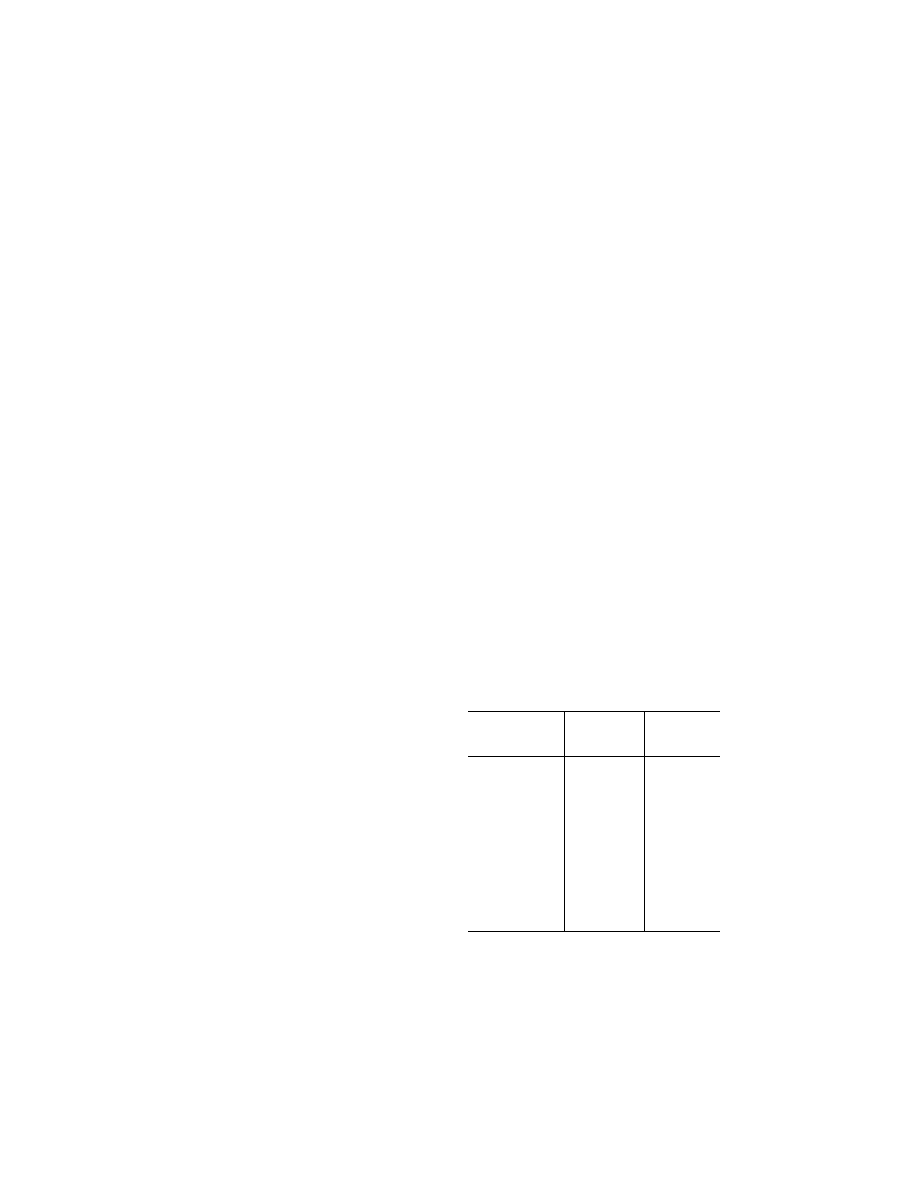
753
Federal Aviation Administration, DOT
§ 91.607
Airplane Flight Manual for the ele-
vation of the airport and for the ambi-
ent temperature existing at the time of
takeoff;
(2) Normal consumption of fuel and
oil in flight to the airport of intended
landing and to the alternate airports
will leave a weight on arrival not in ex-
cess of the landing weight specified in
the Airplane Flight Manual for the ele-
vation of each of the airports involved
and for the ambient temperatures ex-
pected at the time of landing;
(3) The takeoff weight does not ex-
ceed the weight shown in the Airplane
Flight Manual to correspond with the
minimum distances required for take-
off, considering the elevation of the
airport, the runway to be used, the ef-
fective runway gradient, the ambient
temperature and wind component at
the time of takeoff, and, if operating
limitations exist for the minimum dis-
tances required for takeoff from wet
runways, the runway surface condition
(dry or wet). Wet runway distances as-
sociated with grooved or porous fric-
tion course runways, if provided in the
Airplane Flight Manual, may be used
only for runways that are grooved or
treated with a porous friction course
(PFC) overlay, and that the operator
determines are designed, constructed,
and maintained in a manner acceptable
to the Administrator.
(4) Where the takeoff distance in-
cludes a clearway, the clearway dis-
tance is not greater than one-half of—
(i) The takeoff run, in the case of air-
planes certificated after September 30,
1958, and before August 30, 1959; or
(ii) The runway length, in the case of
airplanes certificated after August 29,
1959.
(c) No person may take off a turbine-
engine-powered transport category air-
plane certificated after August 29, 1959,
unless, in addition to the requirements
of paragraph (b) of this section—
(1) The accelerate-stop distance is no
greater than the length of the runway
plus the length of the stopway (if
present); and
(2) The takeoff distance is no greater
than the length of the runway plus the
length of the clearway (if present); and
(3) The takeoff run is no greater than
the length of the runway.
[Doc. No. 18334, 54 FR 34318, Aug. 18, 1989, as
amended by Amdt. 91–256, 63 FR 8321, Feb. 18,
1998]
§ 91.607
Emergency exits for airplanes
carrying passengers for hire.
(a) Notwithstanding any other provi-
sion of this chapter, no person may op-
erate a large airplane (type certificated
under the Civil Air Regulations effec-
tive before April 9, 1957) in passenger-
carrying operations for hire, with more
than the number of occupants—
(1) Allowed under Civil Air Regula-
tions § 4b.362 (a), (b), and (c) as in effect
on December 20, 1951; or
(2) Approved under Special Civil Air
Regulations SR–387, SR–389, SR–389A,
or SR–389B, or under this section as in
effect.
However, an airplane type listed in the
following table may be operated with
up to the listed number of occupants
(including crewmembers) and the cor-
responding number of exits (including
emergency exits and doors) approved
for the emergency exit of passengers or
with an occupant-exit configuration
approved under paragraph (b) or (c) of
this section.
Airplane type
Maximum num-
ber of occupants
including all
crewmembers
Corresponding
number of exits
authorized for
passenger use
B–307 ........................
61 4
B–377 ........................
96 9
C–46 ..........................
67 4
CV–240 ......................
53 6
CV–340 and CV–440
53
6
DC–3 .........................
35 4
DC–3 (Super) ............
39
5
DC–4 .........................
86 5
DC–6 .........................
87 7
DC–6B .......................
112 11
L–18 ...........................
17 3
L–049, L–649, L–749
87
7
L–1049 series ............
96
9
M–202 ........................
53 6
M–404 ........................
53 7
Viscount 700 series ...
53
7
(b) Occupants in addition to those au-
thorized under paragraph (a) of this
section may be carried as follows:
(1) For each additional floor-level
exit at least 24 inches wide by 48 inches
high, with an unobstructed 20-inch-
wide access aisleway between the exit
and the main passenger aisle, 12 addi-
tional occupants.
VerDate Sep<11>2014
14:00 Mar 14, 2024
Jkt 262047
PO 00000
Frm 00763
Fmt 8010
Sfmt 8010
Q:\14\14V2.TXT
PC31
aworley on LAPBH6H6L3 with DISTILLER

754
14 CFR Ch. I (1–1–24 Edition)
§ 91.609
(2) For each additional window exit
located over a wing that meets the re-
quirements of the airworthiness stand-
ards under which the airplane was type
certificated or that is large enough to
inscribe an ellipse 19
×
26 inches, eight
additional occupants.
(3) For each additional window exit
that is not located over a wing but that
otherwise complies with paragraph
(b)(2) of this section, five additional oc-
cupants.
(4) For each airplane having a ratio
(as computed from the table in para-
graph (a) of this section) of maximum
number of occupants to number of
exits greater than 14:1, and for each
airplane that does not have at least
one full-size, door-type exit in the side
of the fuselage in the rear part of the
cabin, the first additional exit must be
a floor-level exit that complies with
paragraph (b)(1) of this section and
must be located in the rear part of the
cabin on the opposite side of the fuse-
lage from the main entrance door.
However, no person may operate an
airplane under this section carrying
more than 115 occupants unless there is
such an exit on each side of the fuse-
lage in the rear part of the cabin.
(c) No person may eliminate any ap-
proved exit except in accordance with
the following:
(1) The previously authorized max-
imum number of occupants must be re-
duced by the same number of addi-
tional occupants authorized for that
exit under this section.
(2) Exits must be eliminated in ac-
cordance with the following priority
schedule: First, non-over-wing window
exits; second, over-wing window exits;
third, floor-level exits located in the
forward part of the cabin; and fourth,
floor-level exits located in the rear of
the cabin.
(3) At least one exit must be retained
on each side of the fuselage regardless
of the number of occupants.
(4) No person may remove any exit
that would result in a ratio of max-
imum number of occupants to approved
exits greater than 14:1.
(d) This section does not relieve any
person operating under part 121 of this
chapter from complying with § 121.291.
§ 91.609
Flight data recorders and
cockpit voice recorders.
(a) No holder of an air carrier oper-
ating certificate or an operating cer-
tificate may conduct any operation
under this part with an aircraft listed
in the holder’s operations specifica-
tions or current list of aircraft used in
air transportation unless that aircraft
complies with any applicable flight re-
corder and cockpit voice recorder re-
quirements of the part under which its
certificate is issued except that the op-
erator may—
(1) Ferry an aircraft with an inoper-
ative flight recorder or cockpit voice
recorder from a place where repair or
replacement cannot be made to a place
where they can be made;
(2) Continue a flight as originally
planned, if the flight recorder or cock-
pit voice recorder becomes inoperative
after the aircraft has taken off;
(3) Conduct an airworthiness flight
test during which the flight recorder or
cockpit voice recorder is turned off to
test it or to test any communications
or electrical equipment installed in the
aircraft; or
(4) Ferry a newly acquired aircraft
from the place where possession of it is
taken to a place where the flight re-
corder or cockpit voice recorder is to
be installed.
(b) Notwithstanding paragraphs (c)
and (e) of this section, an operator
other than the holder of an air carrier
or a commercial operator certificate
may—
(1) Ferry an aircraft with an inoper-
ative flight recorder or cockpit voice
recorder from a place where repair or
replacement cannot be made to a place
where they can be made;
(2) Continue a flight as originally
planned if the flight recorder or cock-
pit voice recorder becomes inoperative
after the aircraft has taken off;
(3) Conduct an airworthiness flight
test during which the flight recorder or
cockpit voice recorder is turned off to
test it or to test any communications
or electrical equipment installed in the
aircraft;
(4) Ferry a newly acquired aircraft
from a place where possession of it was
taken to a place where the flight re-
corder or cockpit voice recorder is to
be installed; or
VerDate Sep<11>2014
14:00 Mar 14, 2024
Jkt 262047
PO 00000
Frm 00764
Fmt 8010
Sfmt 8010
Q:\14\14V2.TXT
PC31
aworley on LAPBH6H6L3 with DISTILLER

755
Federal Aviation Administration, DOT
§ 91.609
(5) Operate an aircraft:
(i) For not more than 15 days while
the flight recorder and/or cockpit voice
recorder is inoperative and/or removed
for repair provided that the aircraft
maintenance records contain an entry
that indicates the date of failure, and a
placard is located in view of the pilot
to show that the flight recorder or
cockpit voice recorder is inoperative.
(ii) For not more than an additional
15 days, provided that the requirements
in paragraph (b)(5)(i) are met and that
a certificated pilot, or a certificated
person authorized to return an aircraft
to service under § 43.7 of this chapter,
certifies in the aircraft maintenance
records that additional time is required
to complete repairs or obtain a replace-
ment unit.
(c)(1) No person may operate a U.S.
civil registered, multiengine, turbine-
powered airplane or rotorcraft having a
passenger seating configuration, ex-
cluding any pilot seats of 10 or more
that has been manufactured after Octo-
ber 11, 1991, unless it is equipped with
one or more approved flight recorders
that utilize a digital method of record-
ing and storing data and a method of
readily retrieving that data from the
storage medium, that are capable of re-
cording the data specified in appendix
E to this part, for an airplane, or ap-
pendix F to this part, for a rotorcraft,
of this part within the range, accuracy,
and recording interval specified, and
that are capable of retaining no less
than 8 hours of aircraft operation.
(2) All airplanes subject to paragraph
(c)(1) of this section that are manufac-
tured before April 7, 2010, by April 7,
2012, must meet the requirements of
§ 23.1459(a)(7) or § 25.1459(a)(8) of this
chapter, as applicable.
(3) All airplanes and rotorcraft sub-
ject to paragraph (c)(1) of this section
that are manufactured on or after
April 7, 2010, must meet the flight data
recorder requirements of § 23.1459,
§ 25.1459, § 27.1459, or § 29.1459 of this
chapter, as applicable, and retain at
least the last 25 hours of recorded in-
formation using a recorder that meets
the standards of TSO–C124a, or later re-
vision.
(d) Whenever a flight recorder, re-
quired by this section, is installed, it
must be operated continuously from
the instant the airplane begins the
takeoff roll or the rotorcraft begins
lift-off until the airplane has com-
pleted the landing roll or the rotorcraft
has landed at its destination.
(e) Unless otherwise authorized by
the Administrator, after October 11,
1991, no person may operate a U.S. civil
registered multiengine, turbine-pow-
ered airplane or rotorcraft having a
passenger seating configuration of six
passengers or more and for which two
pilots are required by type certifi-
cation or operating rule unless it is
equipped with an approved cockpit
voice recorder that:
(1) Is installed in compliance with
§ 23.1457(a)(1) and (2), (b), (c), (d)(1)(i),
(2) and (3), (e), (f), and (g); § 25.1457(a)(1)
and (2), (b), (c), (d)(1)(i), (2) and (3), (e),
(f), and (g); § 27.1457(a)(1) and (2), (b),
(c), (d)(1)(i), (2) and (3), (e), (f), and (g);
or § 29.1457(a)(1) and (2), (b), (c), (d)(1)(i),
(2) and (3), (e), (f), and (g) of this chap-
ter, as applicable; and
(2) Is operated continuously from the
use of the checklist before the flight to
completion of the final checklist at the
end of the flight.
(f) In complying with this section, an
approved cockpit voice recorder having
an erasure feature may be used, so that
at any time during the operation of the
recorder, information recorded more
than 15 minutes earlier may be erased
or otherwise obliterated.
(g) In the event of an accident or oc-
currence requiring immediate notifica-
tion to the National Transportation
Safety Board under 49 CFR part 830 of
its regulations that results in the ter-
mination of the flight, any operator
who has installed approved flight re-
corders and approved cockpit voice re-
corders shall keep the recorded infor-
mation for at least 60 days or, if re-
quested by the Administrator or the
Board, for a longer period. Information
obtained from the record is used to as-
sist in determining the cause of acci-
dents or occurrences in connection
with the investigation under 49 CFR
part 830. The Administrator does not
use the cockpit voice recorder record
in any civil penalty or certificate ac-
tion.
(h) All airplanes required by this sec-
tion to have a cockpit voice recorder
and a flight data recorder, that are
VerDate Sep<11>2014
14:00 Mar 14, 2024
Jkt 262047
PO 00000
Frm 00765
Fmt 8010
Sfmt 8010
Q:\14\14V2.TXT
PC31
aworley on LAPBH6H6L3 with DISTILLER

756
14 CFR Ch. I (1–1–24 Edition)
§ 91.611
manufactured before April 7, 2010, must
by April 7, 2012, have a cockpit voice
recorder that also—
(1) Meets the requirements of
§ 23.1457(d)(6) or § 25.1457(d)(6) of this
chapter, as applicable; and
(2) If transport category, meets the
requirements of § 25.1457(a)(3), (a)(4),
and (a)(5) of this chapter.
(i) All airplanes or rotorcraft re-
quired by this section to have a cockpit
voice recorder and flight data recorder,
that are manufactured on or after
April 7, 2010, must have a cockpit voice
recorder installed that also—
(1) Is installed in accordance with the
requirements of § 23.1457 (except for
paragraphs (a)(6) and (d)(5)); § 25.1457
(except for paragraphs (a)(6) and (d)(5));
§ 27.1457 (except for paragraphs (a)(6)
and (d)(5)); or § 29.1457 (except for para-
graphs (a)(6) and (d)(5)) of this chapter,
as applicable; and
(2) Retains at least the last 2 hours of
recorded information using a recorder
that meets the standards of TSO–C123a,
or later revision.
(3) For all airplanes or rotorcraft
manufactured on or after April 6, 2012,
also meets the requirements of
§ 23.1457(a)(6) and (d)(5); § 25.1457(a)(6)
and (d)(5); § 27.1457(a)(6) and (d)(5); or
§ 29.1457(a)(6) and (d)(5) of this chapter,
as applicable.
(j) All airplanes or rotorcraft re-
quired by this section to have a cockpit
voice recorder and a flight data re-
corder, that install datalink commu-
nication equipment on or after April 6,
2012, must record all datalink messages
as required by the certification rule ap-
plicable to the aircraft.
(k) An aircraft operated under this
part under deviation authority from
part 125 of this chapter must comply
with all of the applicable flight data
recorder requirements of part 125 appli-
cable to the aircraft, notwithstanding
such deviation authority.
[Doc. No. 18334, 54 FR 34318, Aug. 18, 1989, as
amended by Amdt. 91–226, 56 FR 51621, Oct.
11, 1991; Amdt. 91–228, 57 FR 19353, May 5,
1992; Amdt. 91–300, 73 FR 12564, Mar. 7, 2008;
Amdt. 91–304, 73 FR 73178, Dec. 2, 2008; Amdt.
91–300, 74 FR 32800, July 9, 2009; Amdt. 91–313,
75 FR 17045, Apr. 5, 2010; Docket No. FAA–
2022–1355, Amdt. No. 91–366, 87 FR 75846, Dec.
9, 2022]
§ 91.611
Authorization for ferry flight
with one engine inoperative.
(a)
General. The holder of an air car-
rier operating certificate or an oper-
ating certificate issued under part 125
may conduct a ferry flight of a four-en-
gine airplane or a turbine-engine-pow-
ered airplane equipped with three en-
gines, with one engine inoperative, to a
base for the purpose of repairing that
engine subject to the following:
(1) The airplane model has been test
flown and found satisfactory for safe
flight in accordance with paragraph (b)
or (c) of this section, as appropriate.
However, each operator who before No-
vember 19, 1966, has shown that a model
of airplane with an engine inoperative
is satisfactory for safe flight by a test
flight conducted in accordance with
performance data contained in the ap-
plicable Airplane Flight Manual under
paragraph (a)(2) of this section need
not repeat the test flight for that
model.
(2) The approved Airplane Flight
Manual contains the following per-
formance data and the flight is con-
ducted in accordance with that data:
(i) Maximum weight.
(ii) Center of gravity limits.
(iii) Configuration of the inoperative
propeller (if applicable).
(iv) Runway length for takeoff (in-
cluding temperature accountability).
(v) Altitude range.
(vi) Certificate limitations.
(vii) Ranges of operational limits.
(viii) Performance information.
(ix) Operating procedures.
(3) The operator has FAA approved
procedures for the safe operation of the
airplane, including specific require-
ments for—
(i) Limiting the operating weight on
any ferry flight to the minimum nec-
essary for the flight plus the necessary
reserve fuel load;
(ii) A limitation that takeoffs must
be made from dry runways unless,
based on a showing of actual operating
takeoff techniques on wet runways
with one engine inoperative, takeoffs
with full controllability from wet run-
ways have been approved for the spe-
cific model aircraft and included in the
Airplane Flight Manual:
VerDate Sep<11>2014
14:00 Mar 14, 2024
Jkt 262047
PO 00000
Frm 00766
Fmt 8010
Sfmt 8010
Q:\14\14V2.TXT
PC31
aworley on LAPBH6H6L3 with DISTILLER

757
Federal Aviation Administration, DOT
§ 91.611
(iii) Operations from airports where
the runways may require a takeoff or
approach over populated areas; and
(iv) Inspection procedures for deter-
mining the operating condition of the
operative engines.
(4) No person may take off an air-
plane under this section if—
(i) The initial climb is over thickly
populated areas; or
(ii) Weather conditions at the takeoff
or destination airport are less than
those required for VFR flight.
(5) Persons other than required flight
crewmembers shall not be carried dur-
ing the flight.
(6) No person may use a flight crew-
member for flight under this section
unless that crewmember is thoroughly
familiar with the operating procedures
for one-engine inoperative ferry flight
contained in the certificate holder’s
manual and the limitations and per-
formance information in the Airplane
Flight Manual.
(b)
Flight tests: reciprocating-engine-
powered airplanes. The airplane per-
formance of a reciprocating-engine-
powered airplane with one engine inop-
erative must be determined by flight
test as follows:
(1) A speed not less than 1.3 V
S1
must
be chosen at which the airplane may be
controlled satisfactorily in a climb
with the critical engine inoperative
(with its propeller removed or in a con-
figuration desired by the operator and
with all other engines operating at the
maximum power determined in para-
graph (b)(3) of this section.
(2) The distance required to accel-
erate to the speed listed in paragraph
(b)(1) of this section and to climb to 50
feet must be determined with—
(i) The landing gear extended;
(ii) The critical engine inoperative
and its propeller removed or in a con-
figuration desired by the operator; and
(iii) The other engines operating at
not more than maximum power estab-
lished under paragraph (b)(3) of this
section.
(3) The takeoff, flight and landing
procedures, such as the approximate
trim settings, method of power applica-
tion, maximum power, and speed must
be established.
(4) The performance must be deter-
mined at a maximum weight not great-
er than the weight that allows a rate of
climb of at least 400 feet per minute in
the en route configuration set forth in
§ 25.67(d) of this chapter in effect on
January 31, 1977, at an altitude of 5,000
feet.
(5) The performance must be deter-
mined using temperature account-
ability for the takeoff field length,
computed in accordance with § 25.61 of
this chapter in effect on January 31,
1977.
(c)
Flight tests: Turbine-engine-powered
airplanes. The airplane performance of
a turbine-engine-powered airplane with
one engine inoperative must be deter-
mined by flight tests, including at
least three takeoff tests, in accordance
with the following:
(1) Takeoff speeds V
R
and V
2
, not less
than the corresponding speeds under
which the airplane was type certifi-
cated under § 25.107 of this chapter,
must be chosen at which the airplane
may be controlled satisfactorily with
the critical engine inoperative (with
its propeller removed or in a configura-
tion desired by the operator, if applica-
ble) and with all other engines oper-
ating at not more than the power se-
lected for type certification as set
forth in § 25.101 of this chapter.
(2) The minimum takeoff field length
must be the horizontal distance re-
quired to accelerate and climb to the
35-foot height at V
2
speed (including
any additional speed increment ob-
tained in the tests) multiplied by 115
percent and determined with—
(i) The landing gear extended;
(ii) The critical engine inoperative
and its propeller removed or in a con-
figuration desired by the operator (if
applicable); and
(iii) The other engine operating at
not more than the power selected for
type certification as set forth in § 25.101
of this chapter.
(3) The takeoff, flight, and landing
procedures such as the approximate
trim setting, method of power applica-
tion, maximum power, and speed must
be established. The airplane must be
satisfactorily controllable during the
entire takeoff run when operated ac-
cording to these procedures.
VerDate Sep<11>2014
14:00 Mar 14, 2024
Jkt 262047
PO 00000
Frm 00767
Fmt 8010
Sfmt 8010
Q:\14\14V2.TXT
PC31
aworley on LAPBH6H6L3 with DISTILLER

758
14 CFR Ch. I (1–1–24 Edition)
§ 91.613
(4) The performance must be deter-
mined at a maximum weight not great-
er than the weight determined under
§ 25.121(c) of this chapter but with—
(i) The actual steady gradient of the
final takeoff climb requirement not
less than 1.2 percent at the end of the
takeoff path with two critical engines
inoperative; and
(ii) The climb speed not less than the
two-engine inoperative trim speed for
the actual steady gradient of the final
takeoff climb prescribed by paragraph
(c)(4)(i) of this section.
(5) The airplane must be satisfac-
torily controllable in a climb with two
critical engines inoperative. Climb per-
formance may be shown by calcula-
tions based on, and equal in accuracy
to, the results of testing.
(6) The performance must be deter-
mined using temperature account-
ability for takeoff distance and final
takeoff climb computed in accordance
with § 25.101 of this chapter.
For the purpose of paragraphs (c)(4)
and (5) of this section,
two critical en-
gines means two adjacent engines on
one side of an airplane with four en-
gines, and the center engine and one
outboard engine on an airplane with
three engines.
§ 91.613
Materials for compartment in-
teriors.
(a) No person may operate an air-
plane that conforms to an amended or
supplemental type certificate issued in
accordance with SFAR No. 41 for a
maximum certificated takeoff weight
in excess of 12,500 pounds unless within
1 year after issuance of the initial air-
worthiness certificate under that
SFAR the airplane meets the compart-
ment interior requirements set forth in
§ 25.853 (a), (b), (b–1), (b–2), and (b–3) of
this chapter in effect on September 26,
1978.
(b) Thermal/acoustic insulation ma-
terials. For transport category air-
planes type certificated after January
1, 1958:
(1) For airplanes manufactured before
September 2, 2005, when thermal/acous-
tic insulation is installed in the fuse-
lage as replacements after September
2, 2005, the insulation must meet the
flame propagation requirements of
§ 25.856 of this chapter, effective Sep-
tember 2, 2003, if it is:
(i) Of a blanket construction or
(ii) Installed around air ducting.
(2) For airplanes manufactured after
September 2, 2005, thermal/acoustic in-
sulation materials installed in the fu-
selage must meet the flame propaga-
tion requirements of § 25.856 of this
chapter, effective September 2, 2003.
[Doc. No. 18334, 54 FR 34318, Aug. 18, 1989, as
amended by Amdt. 91–279, 68 FR 45083, July
31, 2003; Amdt. 91–290, 70 FR 77752, Dec. 30,
2005]
§§ 91.615–91.699
[Reserved]
Subpart H—Foreign Aircraft Oper-
ations and Operations of U.S.-
Registered Civil Aircraft Out-
side of the United States; and
Rules Governing Persons on
Board Such Aircraft
S
OURCE
: Docket No. 18334, 54 FR 34320, Aug.
18, 1989, unless otherwise noted.
§ 91.701
Applicability.
(a) This subpart applies to the oper-
ations of civil aircraft of U.S. registry
outside of the United States and the
operations of foreign civil aircraft
within the United States.
(b) Section 91.702 of this subpart also
applies to each person on board an air-
craft operated as follows:
(1) A U.S. registered civil aircraft op-
erated outside the United States;
(2) Any aircraft operated outside the
United States—
(i) That has its next scheduled des-
tination or last place of departure in
the United States if the aircraft next
lands in the United States; or
(ii) If the aircraft lands in the United
States with the individual still on the
aircraft regardless of whether it was a
scheduled or otherwise planned landing
site.
[Doc. No. FAA–1998–4954, 64 FR 1079, Jan. 7,
1999]
VerDate Sep<11>2014
14:00 Mar 14, 2024
Jkt 262047
PO 00000
Frm 00768
Fmt 8010
Sfmt 8010
Q:\14\14V2.TXT
PC31
aworley on LAPBH6H6L3 with DISTILLER

759
Federal Aviation Administration, DOT
§ 91.707
§ 91.702
Persons on board.
Section 91.11 of this part (Prohibi-
tions on interference with crew-
members) applies to each person on
board an aircraft.
[Doc. No. FAA–1998–4954, 64 FR 1079, Jan. 7,
1999]
§ 91.703
Operations of civil aircraft of
U.S. registry outside of the United
States.
(a) Each person operating a civil air-
craft of U.S. registry outside of the
United States shall—
(1) When over the high seas, comply
with Annex 2 (Rules of the Air) to the
Convention on International Civil
Aviation and with §§ 91.117(c), 91.127,
91.129, and 91.131;
(2) When within a foreign country,
comply with the regulations relating
to the flight and maneuver of aircraft
there in force;
(3) Except for §§ 91.117(a), 91.307(b),
91.309, 91.323, and 91.711, comply with
this part so far as it is not inconsistent
with applicable regulations of the for-
eign country where the aircraft is oper-
ated or Annex 2 of the Convention on
International Civil Aviation; and
(4) When operating within airspace
designated as Reduced Vertical Separa-
tion Minimum (RVSM) airspace, com-
ply with § 91.706.
(5) For aircraft subject to ICAO
Annex 16, carry on board the aircraft
documents that summarize the noise
operating characteristics and certifi-
cations of the aircraft that dem-
onstrate compliance with this part and
part 36 of this chapter.
(b) Annex 2 to the Convention on
International Civil Aviation, Rules of
the Air, Tenth Edition—July 2005, with
Amendments through Amendment 45,
applicable November 10, 2016, is incor-
porated by reference into this section
with the approval of the Director of the
Federal Register under 5 U.S.C. 552(a)
and 1 CFR part 51. To enforce any edi-
tion other than that specified in this
section, the FAA must publish a docu-
ment in the F
EDERAL
R
EGISTER
and the
material must be available to the pub-
lic. All approved material is available
for inspection at U.S. Department of
Transportation, Docket Operations,
West Building Ground Floor, Room
W12–140, 1200 New Jersey Avenue SE.,
Washington, DC 20590 and is available
from the International Civil Aviation
Organization (ICAO), Marketing and
Customer Relations Unit, 999 Robert
Bourassa Boulevard, Montreal, Quebec
H3C 5H7, Canada;
http://store1.icao.int/;
or by contacting the ICAO Marketing
and Customer Relations Unit by tele-
phone at 514–954–8022 or by email at
sales@icao.int.
For questions about
ICAO Annex 2, contact the FAA’s Of-
fice of International Affairs at (202)
267–1000. It is also available for inspec-
tion at the National Archives and
Records Administration (NARA). For
information on the availability of this
material at NARA, call 202–741–6030, or
go to
http://www.archives.gov/fed-
eral
_
register/code
_
of
_
federal
_
regulations/
ibr
_
locations.html.
[Doc. No. 18834, 54 FR 34320, Aug. 18, 1989, as
amended by Amdt. 91–227, 56 FR 65661, Dec.
17, 1991; Amdt. 91–254, 62 FR 17487, Apr. 9,
1997; 69 FR 18803, Apr. 9, 2004; Amdt. 91–299, 73
FR 10143, Feb. 26, 2008; Amdt. 91–312, 75 FR
9333, Mar. 2, 2010; Docket FAA–2016–9154,
Amdt. 91–348, 82 FR 39664, Aug. 22, 2017]
§ 91.705
[Reserved]
§ 91.706
Operations within airspace
designed as Reduced Vertical Sepa-
ration Minimum Airspace.
(a) Except as provided in paragraph
(b) of this section, no person may oper-
ate a civil aircraft of U.S. registry in
airspace designated as Reduced
Vertical Separation Minimum (RVSM)
airspace unless:
(1) The operator and the operator’s
aircraft comply with the requirements
of appendix G of this part; and
(2) The operator is authorized by the
Administrator to conduct such oper-
ations.
(b) The Administrator may authorize
a deviation from the requirements of
this section in accordance with Section
5 of appendix G to this part.
[Doc. No. 28870, 62 FR 17487, Apr. 9, 1997]
§ 91.707
Flights between Mexico or
Canada and the United States.
Unless otherwise authorized by ATC,
no person may operate a civil aircraft
between Mexico or Canada and the
United States without filing an IFR or
VFR flight plan, as appropriate.
VerDate Sep<11>2014
14:00 Mar 14, 2024
Jkt 262047
PO 00000
Frm 00769
Fmt 8010
Sfmt 8010
Q:\14\14V2.TXT
PC31
aworley on LAPBH6H6L3 with DISTILLER

760
14 CFR Ch. I (1–1–24 Edition)
§ 91.709
§ 91.709
Operations to Cuba.
No person may operate a civil air-
craft from the United States to Cuba
unless—
(a) Departure is from an inter-
national airport of entry designated in
§ 6.13 of the Air Commerce Regulations
of the Bureau of Customs (19 CFR 6.13);
and
(b) In the case of departure from any
of the 48 contiguous States or the Dis-
trict of Columbia, the pilot in com-
mand of the aircraft has filed—
(1) A DVFR or IFR flight plan as pre-
scribed in § 99.11 or § 99.13 of this chap-
ter; and
(2) A written statement, within 1
hour before departure, with the Office
of Immigration and Naturalization
Service at the airport of departure,
containing—
(i) All information in the flight plan;
(ii) The name of each occupant of the
aircraft;
(iii) The number of occupants of the
aircraft; and
(iv) A description of the cargo, if any.
This section does not apply to the oper-
ation of aircraft by a scheduled air car-
rier over routes authorized in oper-
ations specifications issued by the Ad-
ministrator.
(Approved by the Office of Management and
Budget under control number 2120–0005)
§ 91.711
Special rules for foreign civil
aircraft.
(a)
General. In addition to the other
applicable regulations of this part,
each person operating a foreign civil
aircraft within the United States shall
comply with this section.
(b)
VFR. No person may conduct VFR
operations which require two-way
radio communications under this part
unless at least one crewmember of that
aircraft is able to conduct two-way
radio communications in the English
language and is on duty during that op-
eration.
(c)
IFR. No person may operate a for-
eign civil aircraft under IFR unless—
(1) That aircraft is equipped with—
(i) Radio equipment allowing two-
way radio communication with ATC
when it is operated in controlled air-
space; and
(ii) Navigation equipment suitable
for the route to be flown.
(2) Each person piloting the air-
craft—
(i) Holds a current United States in-
strument rating or is authorized by his
foreign airman certificate to pilot
under IFR; and
(ii) Is thoroughly familiar with the
United States en route, holding, and
letdown procedures; and
(3) At least one crewmember of that
aircraft is able to conduct two-way ra-
diotelephone communications in the
English language and that crewmember
is on duty while the aircraft is ap-
proaching, operating within, or leaving
the United States.
(d)
Over water. Each person operating
a foreign civil aircraft over water off
the shores of the United States shall
give flight notification or file a flight
plan in accordance with the Supple-
mentary Procedures for the ICAO re-
gion concerned.
(e)
Flight at and above FL 240. If VOR
navigation equipment is required under
paragraph (c)(1)(ii) of this section, no
person may operate a foreign civil air-
craft within the 50 States and the Dis-
trict of Columbia at or above FL 240,
unless the aircraft is equipped with ap-
proved DME or a suitable RNAV sys-
tem. When the DME or RNAV system
required by this paragraph fails at and
above FL 240, the pilot in command of
the aircraft must notify ATC imme-
diately and may then continue oper-
ations at and above FL 240 to the next
airport of intended landing where re-
pairs or replacement of the equipment
can be made. A foreign civil aircraft
may be operated within the 50 States
and the District of Columbia at or
above FL 240 without DME or an RNAV
system when operated for the following
purposes, and ATC is notified before
each takeoff:
(1) Ferry flights to and from a place
in the United States where repairs or
alterations are to be made.
(2) Ferry flights to a new country of
registry.
(3) Flight of a new aircraft of U.S.
manufacture for the purpose of—
(i) Flight testing the aircraft;
(ii) Training foreign flight crews in
the operation of the aircraft; or
VerDate Sep<11>2014
14:00 Mar 14, 2024
Jkt 262047
PO 00000
Frm 00770
Fmt 8010
Sfmt 8010
Q:\14\14V2.TXT
PC31
aworley on LAPBH6H6L3 with DISTILLER

761
Federal Aviation Administration, DOT
§ 91.801
(iii) Ferrying the aircraft for export
delivery outside the United States.
(4) Ferry, demonstration, and test
flight of an aircraft brought to the
United States for the purpose of dem-
onstration or testing the whole or any
part thereof.
[Doc. No. 18834, 54 FR 34320, Aug. 18, 1989, as
amended by Amdt. 91–227, 56 FR 65661, Dec.
17, 1991; Amdt. 91–296, 72 FR 31679, June 7,
2007]
§ 91.713
Operation of civil aircraft of
Cuban registry.
No person may operate a civil air-
craft of Cuban registry except in con-
trolled airspace and in accordance with
air traffic clearance or air traffic con-
trol instructions that may require use
of specific airways or routes and land-
ings at specific airports.
§ 91.715
Special flight authorizations
for foreign civil aircraft.
(a) Foreign civil aircraft may be op-
erated without airworthiness certifi-
cates required under § 91.203 if a special
flight authorization for that operation
is issued under this section. Applica-
tion for a special flight authorization
must be made to the appropriate Flight
Standards Division Manager, or Air-
craft Certification Service Division Di-
rector. However, in the case of an air-
craft to be operated in the U.S. for the
purpose of demonstration at an air-
show, the application may be made to
the appropriate Flight Standards Divi-
sion Manager or Aircraft Certification
Service Division Director responsible
for the airshow location.
(b) The Administrator may issue a
special flight authorization for a for-
eign civil aircraft subject to any condi-
tions and limitations that the Admin-
istrator considers necessary for safe
operation in the U.S. airspace.
(c) No person may operate a foreign
civil aircraft under a special flight au-
thorization unless that operation also
complies with part 375 of the Special
Regulations of the Department of
Transportation (14 CFR part 375).
(Approved by the Office of Management and
Budget under control number 2120–0005)
[Doc. No. 18334, 54 FR 34320, Aug. 18, 1989, as
amended by Amdt. 91–212, 54 FR 39293, Sept.
25, 1989; Docket FAA–2018–0119, Amdt. 91–350,
83 FR 9171, Mar. 5, 2018]
§§ 91.717–91.799
[Reserved]
Subpart I—Operating Noise Limits
S
OURCE
: Docket No. 18334, 54 FR 34321, Aug.
18, 1989, unless otherwise noted.
§ 91.801
Applicability: Relation to part
36.
(a) This subpart prescribes operating
noise limits and related requirements
that apply, as follows, to the operation
of civil aircraft in the United States.
(1) Sections 91.803, 91.805, 91.807,
91.809, and 91.811 apply to civil subsonic
jet (turbojet) airplanes with maximum
weights of more than 75,000 pounds
and—
(i) If U.S. registered, that have stand-
ard airworthiness certificates; or
(ii) If foreign registered, that would
be required by this chapter to have a
U.S. standard airworthiness certificate
in order to conduct the operations in-
tended for the airplane were it reg-
istered in the United States. Those sec-
tions apply to operations to or from
airports in the United States under
this part and parts 121, 125, 129, and 135
of this chapter.
(2) Section 91.813 applies to U.S. oper-
ators of civil subsonic jet (turbojet)
airplanes covered by this subpart. This
section applies to operators operating
to or from airports in the United
States under this part and parts 121,
125, and 135, but not to those operating
under part 129 of this chapter.
(3) Sections 91.803, 91.819, and 91.821
apply to U.S.-registered civil super-
sonic airplanes having standard air-
worthiness certificates and to foreign-
registered civil supersonic airplanes
that, if registered in the United States,
would be required by this chapter to
have U.S. standard airworthiness cer-
tificates in order to conduct the oper-
ations intended for the airplane. Those
sections apply to operations under this
part and under parts 121, 125, 129, and
135 of this chapter.
(b) Unless otherwise specified, as
used in this subpart ‘‘part 36’’ refers to
14 CFR part 36, including the noise lev-
els under appendix C of that part, not-
withstanding the provisions of that
part excepting certain airplanes from
the specified noise requirements. For
purposes of this subpart, the various
VerDate Sep<11>2014
14:00 Mar 14, 2024
Jkt 262047
PO 00000
Frm 00771
Fmt 8010
Sfmt 8010
Q:\14\14V2.TXT
PC31
aworley on LAPBH6H6L3 with DISTILLER

762
14 CFR Ch. I (1–1–24 Edition)
§ 91.803
stages of noise levels, the terms used to
describe airplanes with respect to those
levels, and the terms ‘‘subsonic air-
plane’’ and ‘‘supersonic airplane’’ have
the meanings specified under part 36 of
this chapter. For purposes of this sub-
part, for subsonic airplanes operated in
foreign air commerce in the United
States, the Administrator may accept
compliance with the noise require-
ments under annex 16 of the Inter-
national Civil Aviation Organization
when those requirements have been
shown to be substantially compatible
with, and achieve results equivalent to
those achievable under, part 36 for that
airplane. Determinations made under
these provisions are subject to the lim-
itations of § 36.5 of this chapter as if
those noise levels were part 36 noise
levels.
(c) Sections 91.851 through 91.877 of
this subpart prescribe operating noise
limits and related requirements that
apply to any civil subsonic jet (tur-
bojet) airplane (for which an airworthi-
ness certificate other than an experi-
mental certificate has been issued by
the Administrator) with a maximum
certificated takeoff weight of more
than 75,000 pounds operating to or from
an airport in the 48 contiguous United
States and the District of Columbia
under this part, parts 121, 125, 129, or
135 of this chapter on and after Sep-
tember 25, 1991.
(d) Section 91.877 prescribes reporting
requirements that apply to any civil
subsonic jet (turbojet) airplane with a
maximum weight of more than 75,000
pounds operated by an air carrier or
foreign air carrier between the contig-
uous United States and the State of
Hawaii, between the State of Hawaii
and any point outside of the 48 contig-
uous United States, or between the is-
lands of Hawaii in turnaround service,
under part 121 or 129 of this chapter on
or after November 5, 1990.
(e) Sections 91.881 through 91.883 of
this subpart prescribe operating noise
limits and related requirements that
apply to any civil subsonic jet airplane
with a maximum takeoff weight of
75,000 pounds or less and for which an
airworthiness certificate (other than
an experimental certificate) has been
issued, operating to or from an airport
in the contiguous United States under
this part, part 121, 125, 129, or 135 of
this chapter on and after December 31,
2015.
[Doc. No. 18334, 54 FR 34321, Aug. 18, 1989;
Amdt. 91–211, 54 FR 41211, Oct. 5, 1989, as
amended by Amdt. 91–225, 56 FR 48658, Sept.
25, 1991; Amdt. 91–252, 61 FR 66185, Dec. 16,
1996; Amdt. 91–275, 67 FR 45237, July 8, 2002;
Amdt. 91–276, 67 FR 46571, July 15, 2002;
Amdt. 91–328, 78 FR 39583, July 2, 2013]
§ 91.803
Part 125 operators: Designa-
tion of applicable regulations.
For airplanes covered by this subpart
and operated under part 125 of this
chapter, the following regulations
apply as specified:
(a) For each airplane operation to
which requirements prescribed under
this subpart applied before November
29, 1980, those requirements of this sub-
part continue to apply.
(b) For each subsonic airplane oper-
ation to which requirements prescribed
under this subpart did not apply before
November 29, 1980, because the airplane
was not operated in the United States
under this part or part 121, 129, or 135 of
this chapter, the requirements pre-
scribed under § 91.805 of this subpart
apply.
(c) For each supersonic airplane oper-
ation to which requirements prescribed
under this subpart did not apply before
November 29, 1980, because the airplane
was not operated in the United States
under this part or part 121, 129, or 135 of
this chapter, the requirements of
§§ 91.819 and 91.821 of this subpart apply.
(d) For each airplane required to op-
erate under part 125 for which a devi-
ation under that part is approved to
operate, in whole or in part, under this
part or part 121, 129, or 135 of this chap-
ter, notwithstanding the approval, the
requirements prescribed under para-
graphs (a), (b), and (c) of this section
continue to apply.
[Doc. No. 18334, 54 FR 34321, Aug. 18, 1989, as
amended by Amdt. 91–276, 67 FR 46571, July
15, 2002]
§ 91.805
Final compliance: Subsonic
airplanes.
Except as provided in §§ 91.809 and
91.811, on and after January 1, 1985, no
person may operate to or from an air-
port in the United States any subsonic
airplane covered by this subpart unless
VerDate Sep<11>2014
14:00 Mar 14, 2024
Jkt 262047
PO 00000
Frm 00772
Fmt 8010
Sfmt 8010
Q:\14\14V2.TXT
PC31
aworley on LAPBH6H6L3 with DISTILLER

763
Federal Aviation Administration, DOT
§ 91.818
that airplane has been shown to com-
ply with Stage 2 or Stage 3 noise levels
under part 36 of this chapter.
§§ 91.807–91.813
[Reserved]
§ 91.815
Agricultural and fire fighting
airplanes: Noise operating limita-
tions.
(a) This section applies to propeller-
driven, small airplanes having standard
airworthiness certificates that are de-
signed for ‘‘agricultural aircraft oper-
ations’’ (as defined in § 137.3 of this
chapter, as effective on January 1, 1966)
or for dispensing fire fighting mate-
rials.
(b) If the Airplane Flight Manual, or
other approved manual material infor-
mation, markings, or placards for the
airplane indicate that the airplane has
not been shown to comply with the
noise limits under part 36 of this chap-
ter, no person may operate that air-
plane, except—
(1) To the extent necessary to accom-
plish the work activity directly associ-
ated with the purpose for which it is
designed;
(2) To provide flight crewmember
training in the special purpose oper-
ation for which the airplane is de-
signed; and
(3) To conduct ‘‘nondispensing aerial
work operations’’ in accordance with
the requirements under § 137.29(c) of
this chapter.
§ 91.817
Civil aircraft sonic boom.
(a) No person may operate a civil air-
craft in the United States at a true
flight Mach number greater than 1 ex-
cept in compliance with conditions and
limitations in an authorization to ex-
ceed Mach 1 issued to the operator in
accordance with § 91.818.
(b) In addition, no person may oper-
ate a civil aircraft for which the max-
imum operating limit speed M
M0
ex-
ceeds a Mach number of 1, to or from
an airport in the United States, un-
less—
(1) Information available to the
flight crew includes flight limitations
that ensure that flights entering or
leaving the United States will not
cause a sonic boom to reach the surface
within the United States; and
(2) The operator complies with the
flight limitations prescribed in para-
graph (b)(1) of this section or complies
with conditions and limitations in an
authorization to exceed Mach 1 issued
in accordance with § 91.818.
(Approved by the Office of Management and
Budget under control number 2120–0005)
[Docket No. 18334, 54 FR 34321, Aug. 18, 1989,
as amended by Amdt. No. 91–362, 86 FR 3792,
Jan. 15, 2021]
§ 91.818
Special flight authorization to
exceed Mach 1.
For all civil aircraft, any operation
that exceeds Mach 1 may be conducted
only in accordance with a special flight
authorization issued to an operator in
accordance with the requirements of
this section.
(a)
Application. Application for a spe-
cial flight authorization to exceed
Mach 1 must be made to the FAA Of-
fice of Environment and Energy for
consideration by the Administrator.
Each application must include:
(1) The name of the operator;
(2) The number and model(s) of the
aircraft to be operated;
(3) The number of proposed flights;
(4) The date range during which the
flight(s) would be conducted;
(5) The time of day the flight(s)
would be conducted. Proposed night op-
erations may require further justifica-
tion for their necessity;
(6) A description of the flight area re-
quested by the applicant, including any
environmental information required to
be submitted pursuant to paragraph (c)
of this section;
(7) All conditions and limitations on
the flight(s) that will ensure that no
measurable sonic boom overpressure
will reach the surface outside of the
proposed flight area; and
(8) The reason(s) that operation at a
speed greater than Mach 1 is necessary.
A special flight authorization to exceed
Mach 1 may be granted only for oper-
ations that are intended to:
(i) Show compliance with airworthi-
ness requirements;
(ii) Determine the sonic boom char-
acteristics of an aircraft;
(iii) Establish a means of reducing or
eliminating the effects of sonic boom,
including flight profiles and special
features of an aircraft;
VerDate Sep<11>2014
14:00 Mar 14, 2024
Jkt 262047
PO 00000
Frm 00773
Fmt 8010
Sfmt 8010
Q:\14\14V2.TXT
PC31
aworley on LAPBH6H6L3 with DISTILLER

764
14 CFR Ch. I (1–1–24 Edition)
§ 91.819
(iv) Demonstrate the conditions and
limitations under which speeds in ex-
cess of Mach 1 will not cause a measur-
able sonic boom overpressure to reach
the surface; or
(v) Measure the noise characteristics
of an aircraft to demonstrate compli-
ance with noise requirements imposed
under this chapter, or to determine the
limits for operation in accordance with
§ 91.817(b).
(9) For any purpose listed in para-
graph (a)(8) of this section, each appli-
cant must indicate why its intended
operation cannot be safely or properly
accomplished over the ocean at a dis-
tance ensuring that no sonic boom
overpressure reaches any land surface
in the United States.
(b)
Operation outside a test area. An
applicant may apply for an authoriza-
tion to conduct flights outside a test
area under certain conditions and limi-
tations upon a conservative showing
that:
(1) Flight(s) within a test area have
been conducted in accordance with an
authorization issued for the purpose
specified in paragraph (a)(8)(iv) of this
section;
(2) The results of the flight test(s) re-
quired by paragraph (b)(1) of this sec-
tion demonstrate that a speed in excess
of Mach 1 does not cause a measurable
sonic boom overpressure to reach the
surface; and
(3) The conditions and limitations de-
termined by the test(s) represent all
foreseeable operating conditions and
are effective on all flights conducted
under an authorization.
(c)
Environmental findings. (1) No spe-
cial flight authorization will be grant-
ed if the Administrator finds that such
action is necessary to protect or en-
hance the environment.
(2) The Administrator is required to
consider the potential environmental
impacts resulting from the issuance of
an authorization for a particular flight
area pursuant to the National Environ-
mental Policy Act of 1969 (NEPA) (42
U.S.C 4321
et seq.), all applicable regula-
tions implementing NEPA, and related
Executive orders and guidance. Accord-
ingly, each applicant must provide in-
formation that sufficiently describes
the potential environmental impact of
any flight in excess of Mach 1, includ-
ing the effect of a sonic boom reaching
the surface in the proposed flight area,
to enable the FAA to determine wheth-
er such impacts are significant within
the meaning of NEPA.
(d)
Issuance. An authorization to op-
erate a civil aircraft in excess of Mach
1 may be issued only after an applicant
has submitted the information de-
scribed in this section and the Admin-
istrator has taken the required action
regarding the environmental findings
described in paragraph (c) of this sec-
tion.
(e)
Duration. (1) An authorization to
exceed Mach 1 will be granted for the
time the Administrator determines
necessary to conduct the flights for the
described purposes.
(2) An authorization to exceed Mach 1
is effective until it expires or is surren-
dered.
(3) An authorization to exceed Mach 1
may be terminated, suspended, or
amended by the Administrator at any
time the Administrator finds that such
action is necessary to protect the envi-
ronment.
(4) The holder of an authorization to
exceed Mach 1 may request reconsider-
ation of a termination, amendment, or
suspension issued under paragraph
(e)(3) of this section within 30 days of
notice of the action. Failure to request
reconsideration and provide informa-
tion why the Administrator’s action is
not appropriate will result in perma-
nent termination of the authorization.
(5) Findings made by and actions
taken by the Administrator under this
section do not affect any certificate
issued under chapter 447 of Title 49 of
the United States Code.
[Docket No. FAA-2019-0451; Amdt. No. 91–362,
86 FR 3792, Jan. 15, 2021]
§ 91.819
Civil supersonic airplanes that
do not comply with part 36.
(a)
Applicability. This section applies
to civil supersonic airplanes that have
not been shown to comply with the
Stage 2 noise limits of part 36 in effect
on October 13, 1977, using applicable
trade-off provisions, and that are oper-
ated in the United States, after July
31, 1978.
VerDate Sep<11>2014
14:00 Mar 14, 2024
Jkt 262047
PO 00000
Frm 00774
Fmt 8010
Sfmt 8010
Q:\14\14V2.TXT
PC31
aworley on LAPBH6H6L3 with DISTILLER

765
Federal Aviation Administration, DOT
§ 91.851
(b)
Airport use. Except in an emer-
gency, the following apply to each per-
son who operates a civil supersonic air-
plane to or from an airport in the
United States:
(1) Regardless of whether a type de-
sign change approval is applied for
under part 21 of this chapter, no person
may land or take off an airplane cov-
ered by this section for which the type
design is changed, after July 31, 1978, in
a manner constituting an ‘‘acoustical
change’’ under § 21.93 unless the acous-
tical change requirements of part 36
are complied with.
(2) No flight may be scheduled, or
otherwise planned, for takeoff or land-
ing after 10 p.m. and before 7 a.m. local
time.
§ 91.821
Civil supersonic airplanes:
Noise limits.
Except for Concorde airplanes having
flight time before January 1, 1980, no
person may operate in the United
States, a civil supersonic airplane that
does not comply with Stage 2 noise
limits of part 36 in effect on October 13,
1977, using applicable trade-off provi-
sions.
§§ 91.823–91.849
[Reserved]
§ 91.851
Definitions.
For the purposes of §§ 91.851 through
91.877 of this subpart:
Chapter 4 noise level means a noise
level at or below the maximum noise
level prescribed in Chapter 4, Para-
graph 4.4, Maximum Noise Levels, of
the International Civil Aviation Orga-
nization (ICAO) Annex 16, Volume I,
Amendment 7, effective March 21, 2002.
The Director of the Federal Register in
accordance with 5 U.S.C. 552(a) and 1
CFR part 51 approved the incorporation
by reference of this document, which
can be obtained from the International
Civil Aviation Organization (ICAO),
Document Sales Unit, 999 University
Street, Montreal, Quebec H3C 5H7, Can-
ada. Also, you may obtain documents
on the Internet at
http://www.ICAO.int/
eshop/index.cfm. Copies may be reviewed
at the U.S. Department of Transpor-
tation, Docket Operations, West Build-
ing Ground Floor, Room W12–140, 1200
New Jersey Avenue, SE., Washington,
DC 20590 or at the National Archives
and Records Administration (NARA).
For information on the availability of
this material at NARA, call 202–741–
6030, or go to:
http://www.archives.gov/
federal
_
register/
code
_
of
_
federal
_
regulations/
ibr
_
locations.html.
Contiguous United States means the
area encompassed by the 48 contiguous
United States and the District of Co-
lumbia.
Fleet means those civil subsonic jet
(turbojet) airplanes with a maximum
certificated weight of more than 75,000
pounds that are listed on an operator’s
operations specifications as eligible for
operation in the contiguous United
States.
Import means a change in ownership
of an airplane from a non-U.S. person
to a U.S. person when the airplane is
brought into the United States for op-
eration.
Operations specifications means an
enumeration of airplanes by type,
model, series, and serial number oper-
ated by the operator or foreign air car-
rier on a given day, regardless of how
or whether such airplanes are formally
listed or designated by the operator.
Owner means any person that has in-
dicia of ownership sufficient to register
the airplane in the United States pur-
suant to part 47 of this chapter.
New entrant means an air carrier or
foreign air carrier that, on or before
November 5, 1990, did not conduct oper-
ations under part 121 or 129 of this
chapter using an airplane covered by
this subpart to or from any airport in
the contiguous United States, but that
initiates such operation after that
date.
Stage 2 noise levels mean the require-
ments for Stage 2 noise levels as de-
fined in part 36 of this chapter in effect
on November 5, 1990.
Stage 3 noise levels mean the require-
ments for Stage 3 noise levels as de-
fined in part 36 of this chapter in effect
on November 5, 1990.
Stage 4 noise level means a noise level
at or below the Stage 4 noise limit pre-
scribed in part 36 of this chapter.
Stage 2 airplane means a civil sub-
sonic jet (turbojet) airplane with a
maximum certificated weight of 75,000
pounds or more that complies with
VerDate Sep<11>2014
14:00 Mar 14, 2024
Jkt 262047
PO 00000
Frm 00775
Fmt 8010
Sfmt 8010
Q:\14\14V2.TXT
PC31
aworley on LAPBH6H6L3 with DISTILLER

766
14 CFR Ch. I (1–1–24 Edition)
§ 91.853
Stage 2 noise levels as defined in part
36 of this chapter.
Stage 3 airplane means a civil sub-
sonic jet (turbojet) airplane with a
maximum certificated weight of 75,000
pounds or more that complies with
Stage 3 noise levels as defined in part
36 of this chapter.
Stage 4 airplane means an airplane
that has been shown not to exceed the
Stage 4 noise limit prescribed in part 36
of this chapter. A Stage 4 airplane
complies with all of the noise oper-
ating rules of this part.
Stage 5 airplane means an airplane
that has been shown not to exceed the
Stage 5 noise limit prescribed in part 36
of this chapter. A Stage 5 airplane
complies with all of the noise oper-
ating rules of this part.
Stage 5 noise level means a noise level
at or below the Stage 5 noise limit pre-
scribed in part 36 of this chapter.
[Doc. No. 26433, 56 FR 48658, Sept. 25, 1991, as
amended by Amdt. 91–252, 61 FR 66185, Dec.
16, 1996; Amdt. 91–275, 67 FR 45237, July 8,
2002; Amdt. 91–288, 70 FR 38749, July 5, 2005; 72
FR 68475, Dec. 5, 2007; Docket FAA–2015–3782,
Amdt. 91–349, 82 FR 46132, Oct. 4, 2017]
§ 91.853
Final compliance: Civil sub-
sonic airplanes.
Except as provided in § 91.873, after
December 31, 1999, no person shall oper-
ate to or from any airport in the con-
tiguous United States any airplane
subject to § 91.801(c), unless that air-
plane has been shown to comply with
Stage 3, Stage 4, or Stage 5 noise lev-
els.
[Docket FAA–2015–3782, Amdt. 91–349, 82 FR
46132, Oct. 4, 2017]
§ 91.855
Entry and nonaddition rule.
No person may operate any airplane
subject to § 91.801(c) of this subpart to
or from an airport in the contiguous
United States unless one or more of the
following apply:
(a) The airplane complies with Stage
3, Stage 4, or Stage 5 noise levels.
(b) The airplane complies with Stage
2 noise levels and was owned by a U.S.
person on and since November 5, 1990.
Stage 2 airplanes that meet these cri-
teria and are leased to foreign airlines
are also subject to the return provi-
sions of paragraph (e) of this section.
(c) The airplane complies with Stage
2 noise levels, is owned by a non-U.S.
person, and is the subject of a binding
lease to a U.S. person effective before
and on September 25, 1991. Any such
airplane may be operated for the term
of the lease in effect on that date, and
any extensions thereof provided for in
that lease.
(d) The airplane complies with Stage
2 noise levels and is operated by a for-
eign air carrier.
(e) The airplane complies with Stage
2 noise levels and is operated by a for-
eign operator other than for the pur-
pose of foreign air commerce.
(f) The airplane complies with Stage
2 noise levels and—
(1) On November 5, 1990, was owned
by:
(i) A corporation, trust, or partner-
ship organized under the laws of the
United States or any State (including
individual States, territories, posses-
sions, and the District of Columbia);
(ii) An individual who is a citizen of
the United States; or
(iii) An entity owned or controlled by
a corporation, trust, partnership, or in-
dividual described in paragraph (f)(1) (i)
or (ii) of this section; and
(2) Enters into the United States not
later than 6 months after the expira-
tion of a lease agreement (including
any extensions thereof) between an
owner described in paragraph (f)(1) of
this section and a foreign airline.
(g) The airplane complies with Stage
2 noise levels and was purchased by the
importer under a written contract exe-
cuted before November 5, 1990.
(h) Any Stage 2 airplane described in
this section is eligible for operation in
the contiguous United States only as
provided under § 91.865 or 91.867.
[Doc. No. 26433, 56 FR 48658, Sept. 25, 1991; 56
FR 51167, Oct. 10, 1991, as amended by Amdt.
91–288, 70 FR 38750, July 5, 2005; Docket FAA–
2015–3782, Amdt. 91–349, 82 FR 46132, Oct. 4,
2017]
§ 91.857
Stage 2 operations outside of
the 48 contiguous United States.
An operator of a Stage 2 airplane
that is operating only between points
outside the contiguous United States
on or after November 5, 1990, must in-
clude in its operations specifications a
statement that such airplane may not
VerDate Sep<11>2014
14:00 Mar 14, 2024
Jkt 262047
PO 00000
Frm 00776
Fmt 8010
Sfmt 8010
Q:\14\14V2.TXT
PC31
aworley on LAPBH6H6L3 with DISTILLER

767
Federal Aviation Administration, DOT
§ 91.861
be used to provide air transportation to
or from any airport in the contiguous
United States.
[Doc. No. FAA–2002–12771, 67 FR 46571, July
15, 2002]
§ 91.858
Special flight authorizations
for non-revenue Stage 2 operations.
(a) After December 31, 1999, any oper-
ator of a Stage 2 airplane over 75,000
pounds may operate that airplane in
nonrevenue service in the contiguous
United States only for the following
purposes:
(1) Sell, lease, or scrap the airplane;
(2) Obtain modifications to meet
Stage 3, Stage 4, or Stage 5 noise lev-
els.
(3) Obtain scheduled heavy mainte-
nance or significant modifications;
(4) Deliver the airplane to a lessee or
return it to a lessor;
(5) Park or store the airplane; and
(6) Prepare the airplane for any of
the purposes listed in paragraph (a)(1)
thru (a)(5) of this section.
(b) An operator of a Stage 2 airplane
that needs to operate in the contiguous
United States for any of the purposes
listed above may apply to FAA’s Office
of Environment and Energy for a spe-
cial flight authorization. The applicant
must file in advance. Applications are
due 30 days in advance of the planned
flight and must provide the informa-
tion necessary for the FAA to deter-
mine that the planned flight is within
the limits prescribed in the law.
[Doc. No. FAA–2002–12771, 67 FR 46571, July
15, 2002, as amended by Docket FAA–2015–
3782, Amdt. 91–349, 82 FR 46132, Oct. 4, 2017]
§ 91.859
Modification to meet Stage 3,
Stage 4, or Stage 5 noise levels.
For an airplane subject to § 91.801(c)
of this subpart and otherwise prohib-
ited from operation to or from an air-
port in the contiguous United States
by § 91.855, any person may apply for a
special flight authorization for that
airplane to operate in the contiguous
United States for the purpose of ob-
taining modifications to meet Stage 3,
Stage 4, or Stage 5 noise levels.
[Docket FAA–2015–3782, Amdt. 91–349, 82 FR
46132, Oct. 4, 2017]
§ 91.861
Base level.
(a)
U.S. Operators. The base level of a
U.S. operator is equal to the number of
owned or leased Stage 2 airplanes sub-
ject to § 91.801(c) of this subpart that
were listed on that operator’s oper-
ations specifications for operations to
or from airports in the contiguous
United States on any one day selected
by the operator during the period Jan-
uary 1, 1990, through July 1, 1991, plus
or minus adjustments made pursuant
to paragraphs (a) (1) and (2).
(1) The base level of a U.S. operator
shall be increased by a number equal to
the total of the following—
(i) The number of Stage 2 airplanes
returned to service in the United
States pursuant to § 91.855(f);
(ii) The number of Stage 2 airplanes
purchased pursuant to § 91.855(g); and
(iii) Any U.S. operator base level ac-
quired with a Stage 2 airplane trans-
ferred from another person under
§ 91.863.
(2) The base level of a U.S. operator
shall be decreased by the amount of
U.S. operator base level transferred
with the corresponding number of
Stage 2 airplanes to another person
under § 91.863.
(b) Foreign air carriers. The base
level of a foreign air carrier is equal to
the number of owned or leased Stage 2
airplanes that were listed on that car-
rier’s U.S. operations specifications on
any one day during the period January
1, 1990, through July 1, 1991, plus or
minus any adjustments to the base lev-
els made pursuant to paragraphs (b) (1)
and (2).
(1) The base level of a foreign air car-
rier shall be increased by the amount
of foreign air carrier base level ac-
quired with a Stage 2 airplane from an-
other person under § 91.863.
(2) The base level of a foreign air car-
rier shall be decreased by the amount
of foreign air carrier base level trans-
ferred with a Stage 2 airplane to an-
other person under § 91.863.
(c) New entrants do not have a base
level.
[Doc. No. 26433, 56 FR 48659, Sept. 25, 1991; 56
FR 51167, Oct. 10, 1991]
VerDate Sep<11>2014
14:00 Mar 14, 2024
Jkt 262047
PO 00000
Frm 00777
Fmt 8010
Sfmt 8010
Q:\14\14V2.TXT
PC31
aworley on LAPBH6H6L3 with DISTILLER

768
14 CFR Ch. I (1–1–24 Edition)
§ 91.863
§ 91.863
Transfers of Stage 2 airplanes
with base level.
(a) Stage 2 airplanes may be trans-
ferred with or without the cor-
responding amount of base level. Base
level may not be transferred without
the corresponding number of Stage 2
airplanes.
(b) No portion of a U.S. operator’s
base level established under § 91.861(a)
may be used for operations by a foreign
air carrier. No portion of a foreign air
carrier’s base level established under
§ 91.861(b) may be used for operations
by a U.S. operator.
(c) Whenever a transfer of Stage 2
airplanes with base level occurs, the
transferring and acquiring parties
shall, within 10 days, jointly submit
written notification of the transfer to
the FAA, Office of Environment and
Energy. Such notification shall state:
(1) The names of the transferring and
acquiring parties;
(2) The name, address, and telephone
number of the individual responsible
for submitting the notification on be-
half of the transferring and acquiring
parties;
(3) The total number of Stage 2 air-
planes transferred, listed by airplane
type, model, series, and serial number;
(4) The corresponding amount of base
level transferred and whether it is U.S.
operator or foreign air carrier base
level; and
(5) The effective date of the trans-
action.
(d) If, taken as a whole, a transaction
or series of transactions made pursuant
to this section does not produce an in-
crease or decrease in the number of
Stage 2 airplanes for either the acquir-
ing or transferring operator, such
transaction or series of transactions
may not be used to establish compli-
ance with the requirements of § 91.865.
[Doc. No. 26433, 56 FR 48659, Sept. 25, 1991]
§ 91.865
Phased compliance for opera-
tors with base level.
Except as provided in paragraph (a)
of this section, each operator that op-
erates an airplane under part 91, 121,
125, 129, or 135 of this chapter, regard-
less of the national registry of the air-
plane, shall comply with paragraph (b)
or (d) of this section at each interim
compliance date with regard to its sub-
sonic airplane fleet covered by
§ 91.801(c) of this subpart.
(a) This section does not apply to
new entrants covered by § 91.867 or to
foreign operators not engaged in for-
eign air commerce.
(b) Each operator that chooses to
comply with this paragraph pursuant
to any interim compliance requirement
shall reduce the number of Stage 2 air-
planes it operates that are eligible for
operation in the contiguous United
States to a maximum of:
(1) After December 31, 1994, 75 percent
of the base level held by the operator;
(2) After December 31, 1996, 50 percent
of the base level held by the operator;
(3) After December 31, 1998, 25 percent
of the base level held by the operator.
(c) Except as provided under § 91.871,
the number of Stage 2 airplanes that
must be reduced at each compliance
date contained in paragraph (b) of this
section shall be determined by ref-
erence to the amount of base level held
by the operator on that compliance
date, as calculated under § 91.861.
(d) Each operator that chooses to
comply with this paragraph pursuant
to any interim compliance requirement
shall operate a fleet that consists of:
(1) After December 31, 1994, not less
than 55 percent Stage 3 airplanes;
(2) After December 31, 1996, not less
than 65 percent Stage 3 airplanes;
(3) After December 31, 1998, not less
than 75 percent Stage 3 airplanes.
(e) Calculations resulting in fractions
may be rounded to permit the contin-
ued operation of the next whole num-
ber of Stage 2 airplanes.
[Doc. No. 26433, 56 FR 48659, Sept. 25, 1991]
§ 91.867
Phased compliance for new
entrants.
(a) New entrant U.S. air carriers.
(1) A new entrant initiating oper-
ations under part 121 of this chapter on
or before December 31, 1994, may ini-
tiate service without regard to the per-
centage of its fleet composed of Stage
3 airplanes.
(2) After December 31, 1994, at least 25
percent of the fleet of a new entrant
must comply with Stage 3 noise levels.
(3) After December 31, 1996, at least 50
percent of the fleet of a new entrant
must comply with Stage 3 noise levels.
VerDate Sep<11>2014
14:00 Mar 14, 2024
Jkt 262047
PO 00000
Frm 00778
Fmt 8010
Sfmt 8010
Q:\14\14V2.TXT
PC31
aworley on LAPBH6H6L3 with DISTILLER

769
Federal Aviation Administration, DOT
§ 91.871
(4) After December 31, 1998, at least 75
percent of the fleet of a new entrant
must comply with Stage 3 noise levels.
(b) New entrant foreign air carriers.
(1) A new entrant foreign air carrier
initiating part 129 operations on or be-
fore December 31, 1994, may initiate
service without regard to the percent-
age of its fleet composed of Stage 3 air-
planes.
(2) After December 31, 1994, at least 25
percent of the fleet on U.S. operations
specifications of a new entrant foreign
air carrier must comply with Stage 3
noise levels.
(3) After December 31, 1996, at least 50
percent of the fleet on U.S. operations
specifications of a new entrant foreign
air carrier must comply with Stage 3
noise levels.
(4) After December 31, 1998, at least 75
percent of the fleet on U.S. operations
specifications of a new entrant foreign
air carrier must comply with Stage 3
noise levels.
(c) Calculations resulting in fractions
may be rounded to permit the contin-
ued operation of the next whole num-
ber of Stage 2 airplanes.
[Doc. No. 26433, 56 FR 48659, Sept. 25, 1991, as
amended by Amdt. 91–252, 61 FR 66185, Dec.
16, 1996]
§ 91.869
Carry-forward compliance.
(a) Any operator that exceeds the re-
quirements of paragraph (b) of § 91.865
of this part on or before December 31,
1994, or on or before December 31, 1996,
may claim a credit that may be applied
at a subsequent interim compliance
date.
(b) Any operator that eliminates or
modifies more Stage 2 airplanes pursu-
ant to § 91.865(b) than required as of De-
cember 31, 1994, or December 31, 1996,
may count the number of additional
Stage 2 airplanes reduced as a credit
toward—
(1) The number of Stage 2 airplanes it
would otherwise be required to reduce
following a subsequent interim compli-
ance date specified in § 91.865(b); or
(2) The number of Stage 3 airplanes it
would otherwise be required to operate
in its fleet following a subsequent in-
terim compliance date to meet the per-
centage requirements specified in
§ 91.865(d).
[Doc. No. 26433, 56 FR 48659, Sept. 25, 1991; 56
FR 65783, Dec. 18, 1991]
§ 91.871
Waivers from interim compli-
ance requirements.
(a) Any U.S. operator or foreign air
carrier subject to the requirements of
§ 91.865 or 91.867 of this subpart may re-
quest a waiver from any individual
compliance requirement.
(b) Applications must be filed with
the Secretary of Transportation at
least 120 days prior to the compliance
date from which the waiver is re-
quested.
(c) Applicants must show that a
grant of waiver would be in the public
interest, and must include in its appli-
cation its plans and activities for modi-
fying its fleet, including evidence of
good faith efforts to comply with the
requirements of § 91.865 or § 91.867. The
application should contain all informa-
tion the applicant considers relevant,
including, as appropriate, the fol-
lowing:
(1) The applicant’s balance sheet and
cash flow positions;
(2) The composition of the applicant’s
current fleet; and
(3) The applicant’s delivery position
with respect to new airplanes or noise-
abatement equipment.
(d) Waivers will be granted only upon
a showing by the applicant that com-
pliance with the requirements of
§ 91.865 or 91.867 at a particular interim
compliance date is financially onerous,
physically impossible, or techno-
logically infeasible, or that it would
have an adverse effect on competition
or on service to small communities.
(e) The conditions of any waiver
granted under this section shall be de-
termined by the circumstances pre-
sented in the application, but in no
case may the term extend beyond the
next interim compliance date.
(f) A summary of any request for a
waiver under this section will be pub-
lished in the F
EDERAL
R
EGISTER
, and
public comment will be invited. Unless
the Secretary finds that circumstances
require otherwise, the public comment
period will be at least 14 days.
[Doc. No. 26433, 56 FR 48660, Sept. 25, 1991]
VerDate Sep<11>2014
14:00 Mar 14, 2024
Jkt 262047
PO 00000
Frm 00779
Fmt 8010
Sfmt 8010
Q:\14\14V2.TXT
PC31
aworley on LAPBH6H6L3 with DISTILLER

770
14 CFR Ch. I (1–1–24 Edition)
§ 91.873
§ 91.873
Waivers from final compli-
ance.
(a) A U.S. air carrier or a foreign air
carrier may apply for a waiver from
the prohibition contained in § 91.853 of
this part for its remaining Stage 2 air-
planes, provided that, by July 1, 1999,
at least 85 percent of the airplanes used
by the carrier to provide service to or
from an airport in the contiguous
United States will comply with the
Stage 3 noise levels.
(b) An application for the waiver de-
scribed in paragraph (a) of this section
must be filed with the Secretary of
Transportation no later than January
1, 1999, or, in the case of a foreign air
carrier, no later than April 20, 2000.
Such application must include a plan
with firm orders for replacing or modi-
fying all airplanes to comply with
Stage 3 noise levels at the earliest
practicable time.
(c) To be eligible to apply for the
waiver under this section, a new en-
trant U.S. air carrier must initiate
service no later than January 1, 1999,
and must comply fully with all provi-
sions of this section.
(d) The Secretary may grant a waiver
under this section if the Secretary
finds that granting such waiver is in
the public interest. In making such a
finding, the Secretary shall include
consideration of the effect of granting
such waiver on competition in the air
carrier industry and the effect on small
community air service, and any other
information submitted by the appli-
cant that the Secretary considers rel-
evant.
(e) The term of any waiver granted
under this section shall be determined
by the circumstances presented in the
application, but in no case will the
waiver permit the operation of any
Stage 2 airplane covered by this sub-
chapter in the contiguous United
States after December 31, 2003.
(f) A summary of any request for a
waiver under this section will be pub-
lished in the F
EDERAL
R
EGISTER
, and
public comment will be invited. Unless
the secretary finds that circumstances
require otherwise, the public comment
period will be at least 14 days.
[Doc. No. 26433, 56 FR 48660, Sept. 25, 1991; 56
FR 51167 Oct. 10, 1991; Amdt. 91–276, 67 FR
46571, July 15, 2002]
§ 91.875
Annual progress reports.
(a) Each operator subject to § 91.865
or § 91.867 of this chapter shall submit
an annual report to the FAA, Office of
Environment and Energy, on the
progress it has made toward complying
with the requirements of that section.
Such reports shall be submitted no
later than 45 days after the end of a
calendar year. All progress reports
must provide the information through
the end of the calendar year, be cer-
tified by the operator as true and com-
plete (under penalty of 18 U.S.C. 1001),
and include the following information:
(1) The name and address of the oper-
ator;
(2) The name, title, and telephone
number of the person designated by the
operator to be responsible for ensuring
the accuracy of the information in the
report;
(3) The operator’s progress during the
reporting period toward compliance
with the requirements of § 91.853,
§ 91.865 or § 91.867. For airplanes on U.S.
operations specifications, each oper-
ator shall identify the airplanes by
type, model, series, and serial number.
(i) Each Stage 2 airplane added or re-
moved from operation or U.S. oper-
ations specifications (grouped sepa-
rately by those airplanes acquired with
and without base level);
(ii) Each Stage 2 airplane modified to
Stage 3 noise levels (identifying the
manufacturer and model of noise
abatement retrofit equipment;
(iii) Each Stage 3 airplane on U.S. op-
erations specifications as of the last
day of the reporting period; and
(iv) For each Stage 2 airplane trans-
ferred or acquired, the name and ad-
dress of the recipient or transferor;
and, if base level was transferred, the
person to or from whom base level was
transferred or acquired pursuant to
Section 91.863 along with the effective
date of each base level transaction, and
the type of base level transferred or ac-
quired.
(b) Each operator subject to § 91.865
or § 91.867 of this chapter shall submit
an initial progress report covering the
period from January 1, 1990, through
December 31, 1991, and provide:
(1) For each operator subject to
§ 91.865:
VerDate Sep<11>2014
14:00 Mar 14, 2024
Jkt 262047
PO 00000
Frm 00780
Fmt 8010
Sfmt 8010
Q:\14\14V2.TXT
PC31
aworley on LAPBH6H6L3 with DISTILLER

771
Federal Aviation Administration, DOT
§ 91.877
(i) The date used to establish its base
level pursuant to § 91.861(a); and
(ii) A list of those Stage 2 airplanes
(by type, model, series and serial num-
ber) in its base level, including adjust-
ments made pursuant to § 91.861 after
the date its base level was established.
(2) For each U.S. operator:
(i) A plan to meet the compliance
schedules in § 91.865 or § 91.867 and the
final compliance date of § 91.853, includ-
ing the schedule for delivery of replace-
ment Stage 3 airplanes or the installa-
tion of noise abatement retrofit equip-
ment; and
(ii) A separate list (by type, model,
series, and serial number) of those air-
planes included in the operator’s base
level, pursuant to § 91.861(a)(1) (i) and
(ii), under the categories ‘‘returned’’ or
‘‘purchased,’’ along with the date each
was added to its operations specifica-
tions.
(c) Each operator subject to § 91.865 or
§ 91.867 of this chapter shall submit sub-
sequent annual progress reports cov-
ering the calendar year preceding the
report and including any changes in
the information provided in paragraphs
(a) and (b) of this section; including the
use of any carry-forward credits pursu-
ant to § 91.869.
(d) An operator may request, in any
report, that specific planning data be
considered proprietary.
(e) If an operator’s actions during
any reporting period cause it to
achieve compliance with § 91.853, the re-
port should include a statement to that
effect. Further progress reports are not
required unless there is any change in
the information reported pursuant to
paragraph (a) of this section.
(f) For each U.S. operator subject to
§ 91.865, progress reports submitted for
calendar years 1994, 1996, and 1998, shall
also state how the operator achieved
compliance with the requirements of
that section, i.e.—
(1) By reducing the number of Stage
2 airplanes in its fleet to no more than
the maximum permitted percentage of
its base level under § 91.865(b), or
(2) By operating a fleet that consists
of at least the minimum required per-
centage of Stage 3 airplanes under
§ 91.865(d).
(Approved by the Office of Management and
Budget under control number 2120–0553)
[Doc. No. 26433, 56 FR 48660, Sept. 25, 1991; 56
FR 51168, Oct. 10, 1991, as amended by 57 FR
5977, Feb. 19, 1992]
§ 91.877
Annual reporting of Hawaiian
operations.
(a) Each air carrier or foreign air car-
rier subject to § 91.865 or § 91.867 of this
part that conducts operations between
the contiguous United States and the
State of Hawaii, between the State of
Hawaii and any point outside of the
contiguous United States, or between
the islands of Hawaii in turnaround
service, on or since November 5, 1990,
shall include in its annual report the
information described in paragraph (c)
of this section.
(b) Each air carrier or foreign air car-
rier not subject to § 91.865 or § 91.867 of
this part that conducts operations be-
tween the contiguous U.S. and the
State of Hawaii, between the State of
Hawaii and any point outside of the
contiguous United States, or between
the islands of Hawaii in turnaround
service, on or since November 5, 1990,
shall submit an annual report to the
FAA, Office of Environment and En-
ergy, on its compliance with the Ha-
waiian operations provisions of 49
U.S.C. 47528. Such reports shall be sub-
mitted no later than 45 days after the
end of a calendar year. All progress re-
ports must provide the information
through the end of the calendar year,
be certified by the operator as true and
complete (under penalty of 18 U.S.C.
1001), and include the following infor-
mation—
(1) The name and address of the air
carrier or foreign air carrier;
(2) The name, title, and telephone
number of the person designated by the
air carrier or foreign air carrier to be
responsible for ensuring the accuracy
of the information in the report; and
(3) The information specified in para-
graph (c) of this section.
(c) The following information must
be included in reports filed pursuant to
this section—
(1) For operations conducted between
the contiguous United States and the
State of Hawaii—
VerDate Sep<11>2014
14:00 Mar 14, 2024
Jkt 262047
PO 00000
Frm 00781
Fmt 8010
Sfmt 8010
Q:\14\14V2.TXT
PC31
aworley on LAPBH6H6L3 with DISTILLER

772
14 CFR Ch. I (1–1–24 Edition)
§§ 91.879–91.880
(i) The number of Stage 2 airplanes
used to conduct such operations as of
November 5, 1990;
(ii) Any change to that number dur-
ing the calendar year being reported,
including the date of such change;
(2) For air carriers that conduct
inter-island turnaround service in the
State of Hawaii—
(i) The number of Stage 2 airplanes
used to conduct such operations as of
November 5, 1990;
(ii) Any change to that number dur-
ing the calendar year being reported,
including the date of such change;
(iii) For an air carrier that provided
inter-island trunaround service within
the state of Hawaii on November 5,
1990, the number reported under para-
graph (c)(2)(i) of this section may in-
clude all Stage 2 airplanes with a max-
imum certificated takeoff weight of
more than 75,000 pounds that were
owned or leased by the air carrier on
November 5, 1990, regardless of whether
such airplanes were operated by that
air carrier or foreign air carrier on
that date.
(3) For operations conducted between
the State of Hawaii and a point outside
the contiguous United States—
(i) The number of Stage 2 airplanes
used to conduct such operations as of
November 5, 1990; and
(ii) Any change to that number dur-
ing the calendar year being reported,
including the date of such change.
(d) Reports or amended reports for
years predating this regulation are re-
quired to be filed concurrently with the
next annual report.
[Doc. No. 28213, 61 FR 66185, Dec. 16, 1996]
§§ 91.879–91.880
[Reserved]
§ 91.881
Final compliance: Civil sub-
sonic jet airplanes weighing 75,000
pounds or less.
Except as provided in § 91.883, after
December 31, 2015, a person may not op-
erate to or from an airport in the con-
tiguous United States a civil subsonic
jet airplane subject to § 91.801(e) of this
subpart that weighs less than 75,000
pounds unless that airplane has been
shown to comply with Stage 3, Stage 4,
or Stage 5 noise levels.
[Docket FAA–2015–3782, Amdt. 91–349, 82 FR
46132, Oct. 4, 2017]
§ 91.883
Special flight authorizations
for jet airplanes weighing 75,000
pounds or less.
(a) After December 31, 2015, an oper-
ator of a jet airplane weighing 75,000
pounds or less that does not comply
with Stage 3 noise levels may, when
granted a special flight authorization
by the FAA, operate that airplane in
the contiguous United States only for
one of the following purposes:
(1) To sell, lease, or use the airplane
outside the 48 contiguous States;
(2) To scrap the airplane;
(3) To obtain modifications to the
airplane to meet Stage 3, Stage 4, or
Stage 5 noise levels.
(4) To perform scheduled heavy main-
tenance or significant modifications on
the airplane at a maintenance facility
located in the contiguous 48 States;
(5) To deliver the airplane to an oper-
ator leasing the airplane from the
owner or return the airplane to the les-
sor;
(6) To prepare, park, or store the air-
plane in anticipation of any of the ac-
tivities described in paragraphs (a)(1)
through (a)(5) of this section;
(7) To provide transport of persons
and goods in the relief of an emergency
situation; or
(8) To divert the airplane to an alter-
native airport in the 48 contiguous
States on account of weather, mechan-
ical, fuel, air traffic control, or other
safety reasons while conducting a
flight in order to perform any of the
activities described in paragraphs (a)(1)
through (a)(7) of this section.
(b) An operator of an affected air-
plane may apply for a special flight au-
thorization for one of the purposes list-
ed in paragraph (a) of this section by
filing an application with the FAA’s
Office of Environment and Energy. Ex-
cept for emergency relief authoriza-
tions sought under paragraph (a)(7) of
this section, applications must be filed
at least 30 days in advance of the
planned flight. All applications must
provide the information necessary for
the FAA to determine that the planned
flight is within the limits prescribed in
the law.
[Doc. No. FAA–2013–0503, 78 FR 39583, July 2,
2013, as amended by Docket FAA–2015–3782,
Amdt. 91–349, 82 FR 46132, Oct. 4, 2017]
VerDate Sep<11>2014
14:00 Mar 14, 2024
Jkt 262047
PO 00000
Frm 00782
Fmt 8010
Sfmt 8010
Q:\14\14V2.TXT
PC31
aworley on LAPBH6H6L3 with DISTILLER

773
Federal Aviation Administration, DOT
§ 91.1001
§§ 91.884–91.899
[Reserved]
Subpart J—Waivers
§ 91.901
[Reserved]
§ 91.903
Policy and procedures.
(a) The Administrator may issue a
certificate of waiver authorizing the
operation of aircraft in deviation from
any rule listed in this subpart if the
Administrator finds that the proposed
operation can be safely conducted
under the terms of that certificate of
waiver.
(b) An application for a certificate of
waiver under this part is made on a
form and in a manner prescribed by the
Administrator and may be submitted
to any FAA office.
(c) A certificate of waiver is effective
as specified in that certificate of waiv-
er.
[Doc. No. 18334, 54 FR 34325, Aug. 18, 1989]
§ 91.905
List of rules subject to waiv-
ers.
Sec.
91.107
Use of safety belts.
91.111
Operating near other aircraft.
91.113
Right-of-way rules: Except water op-
erations.
91.115
Right-of-way rules: Water operations.
91.117
Aircraft speed.
91.119
Minimum safe altitudes: General.
91.121
Altimeter settings.
91.123
Compliance with ATC clearances and
instructions.
91.125
ATC light signals.
91.126
Operating on or in the vicinity of an
airport in Class G airspace.
91.127
Operating on or in the vicinity of an
airport in Class E airspace.
91.129
Operations in Class D airspace.
91.130
Operations in Class C airspace.
91.131
Operations in Class B airspace.
91.133
Restricted and prohibited areas.
91.135
Operations in Class A airspace.
91.137
Temporary flight restrictions.
91.141
Flight restrictions in the proximity
of the Presidential and other parties.
91.143
Flight limitation in the proximity of
space flight operations.
91.153
VFR flight plan: Information re-
quired.
91.155
Basic VFR weather minimums
91.157
Special VFR weather minimums.
91.159
VFR cruising altitude or flight level.
91.169
IFR flight plan: Information required.
91.173
ATC clearance and flight plan re-
quired.
91.175
Takeoff and landing under IFR.
91.176
Operations below DA/DH or MDA
using an enhanced flight vision system
(EFVS) under IFR.
91.177
Minimum altitudes for IFR oper-
ations.
91.179
IFR cruising altitude or flight level.
91.181
Course to be flown.
91.183
IFR radio communications.
91.185
IFR operations: Two-way radio com-
munications failure.
91.187
Operation under IFR in controlled
airspace: Malfunction reports.
91.209
Aircraft lights.
91.303
Aerobatic flights.
91.305
Flight test areas.
91.311
Towing: Other than under § 91.309.
91.313(e)
Restricted category civil aircraft:
Operating limitations.
91.515
Flight altitude rules.
91.707
Flights between Mexico or Canada
and the United States.
91.713
Operation of civil aircraft of Cuban
registry.
[Doc. No. 18334, 54 FR 34325, Aug. 18, 1989, as
amended by Amdt. 91–227, 56 FR 65661, Dec.
17, 1991; Docket FAA–2013–0485, Amdt. 91–345,
81 FR 90175, Dec. 13, 2016; Docket FAA–2016–
9154, Amdt. 91–348, 82 FR 39664, Aug. 22, 2017]
§§ 91.907–91.999
[Reserved]
Subpart K—Fractional Ownership
Operations
S
OURCE
: Docket No. FAA–2001–10047, 68 FR
54561, Sept. 17, 2003, unless otherwise noted.
§ 91.1001
Applicability.
(a) This subpart prescribes rules, in
addition to those prescribed in other
subparts of this part, that apply to
fractional owners and fractional owner-
ship program managers governing—
(1) The provision of program manage-
ment services in a fractional ownership
program;
(2) The operation of a fractional own-
ership program aircraft in a fractional
ownership program; and
(3) The operation of a program air-
craft included in a fractional ownership
program managed by an affiliate of the
manager of the program to which the
owner belongs.
(b) As used in this part—
(1)
Affiliate of a program manager
means a manager that, directly, or in-
directly, through one or more inter-
mediaries, controls, is controlled by, or
is under common control with, another
program manager. The holding of at
least forty percent (40 percent) of the
VerDate Sep<11>2014
14:00 Mar 14, 2024
Jkt 262047
PO 00000
Frm 00783
Fmt 8010
Sfmt 8010
Q:\14\14V2.TXT
PC31
aworley on LAPBH6H6L3 with DISTILLER

774
14 CFR Ch. I (1–1–24 Edition)
§ 91.1001
equity and forty percent (40 percent) of
the voting power of an entity will be
presumed to constitute control for pur-
poses of determining an affiliation
under this subpart.
(2) A
dry-lease aircraft exchange means
an arrangement, documented by the
written program agreements, under
which the program aircraft are avail-
able, on an as needed basis without
crew, to each fractional owner.
(3) A
fractional owner or owner means
an individual or entity that possesses a
minimum fractional ownership interest
in a program aircraft and that has en-
tered into the applicable program
agreements; provided, however, that in
the case of the flight operations de-
scribed in paragraph (b)(6)(ii) of this
section, and solely for purposes of re-
quirements pertaining to those flight
operations, the fractional owner oper-
ating the aircraft will be deemed to be
a fractional owner in the program man-
aged by the affiliate.
(4) A
fractional ownership interest
means the ownership of an interest or
holding of a multi-year leasehold inter-
est and/or a multi-year leasehold inter-
est that is convertible into an owner-
ship interest in a program aircraft.
(5) A
fractional ownership program or
program means any system of aircraft
ownership and exchange that consists
of all of the following elements:
(i) The provision for fractional own-
ership program management services
by a single fractional ownership pro-
gram manager on behalf of the frac-
tional owners.
(ii) Two or more airworthy aircraft.
(iii) One or more fractional owners
per program aircraft, with at least one
program aircraft having more than one
owner.
(iv) Possession of at least a minimum
fractional ownership interest in one or
more program aircraft by each frac-
tional owner.
(v) A dry-lease aircraft exchange ar-
rangement among all of the fractional
owners.
(vi) Multi-year program agreements
covering the fractional ownership,
fractional ownership program manage-
ment services, and dry-lease aircraft
exchange aspects of the program.
(6) A
fractional ownership program air-
craft or program aircraft means:
(i) An aircraft in which a fractional
owner has a minimal fractional owner-
ship interest and that has been in-
cluded in the dry-lease aircraft ex-
change pursuant to the program agree-
ments, or
(ii) In the case of a fractional owner
from one program operating an aircraft
in a different fractional ownership pro-
gram managed by an affiliate of the op-
erating owner’s program manager, the
aircraft being operated by the frac-
tional owner, so long as the aircraft is:
(A) Included in the fractional owner-
ship program managed by the affiliate
of the operating owner’s program man-
ager, and
(B) Included in the operating owner’s
program’s dry-lease aircraft exchange
pursuant to the program agreements of
the operating owner’s program.
(iii) An aircraft owned in whole or in
part by the program manager that has
been included in the dry-lease aircraft
exchange and is used to supplement
program operations.
(7) A
Fractional Ownership Program
Flight or Program Flight means a flight
under this subpart when one or more
passengers or property designated by a
fractional owner are on board the air-
craft.
(8)
Fractional ownership program man-
agement services or program management
services mean administrative and avia-
tion support services furnished in ac-
cordance with the applicable require-
ments of this subpart or provided by
the program manager on behalf of the
fractional owners, including, but not
limited to, the—
(i) Establishment and implementa-
tion of program safety guidelines;
(ii) Employment, furnishing, or con-
tracting of pilots and other crew-
members;
(iii) Training and qualification of pi-
lots and other crewmembers and per-
sonnel;
(iv) Scheduling and coordination of
the program aircraft and crews;
(v) Maintenance of program aircraft;
(vi) Satisfaction of recordkeeping re-
quirements;
(vii) Development and use of a pro-
gram operations manual and proce-
dures; and
(viii) Application for and mainte-
nance of management specifications
VerDate Sep<11>2014
14:00 Mar 14, 2024
Jkt 262047
PO 00000
Frm 00784
Fmt 8010
Sfmt 8010
Q:\14\14V2.TXT
PC31
aworley on LAPBH6H6L3 with DISTILLER

775
Federal Aviation Administration, DOT
§ 91.1005
and other authorizations and approv-
als.
(9) A
fractional ownership program
manager or program manager means the
entity that offers fractional ownership
program management services to frac-
tional owners, and is designated in the
multi-year program agreements ref-
erenced in paragraph (b)(5)(vi) of this
section to fulfill the requirements of
this chapter applicable to the manager
of the program containing the aircraft
being flown. When a fractional owner is
operating an aircraft in a fractional
ownership program managed by an af-
filiate of the owner’s program man-
ager, the references in this subpart to
the flight-related responsibilities of
the program manager apply, with re-
spect to that particular flight, to the
affiliate of the owner’s program man-
ager rather than to the owner’s pro-
gram manager.
(10) A
minimum fractional ownership
interest means—
(i) A fractional ownership interest
equal to, or greater than, one-sixteenth
(
1
⁄
16
) of at least one subsonic, fixed-wing
or powered-lift program aircraft; or
(ii) A fractional ownership interest
equal to, or greater than, one-thirty-
second (
1
⁄
32
) of at least one rotorcraft
program aircraft.
(c) The rules in this subpart that
refer to a fractional owner or a frac-
tional ownership program manager
also apply to any person who engages
in an operation governed by this sub-
part without the management speci-
fications required by this subpart.
[Docket No. FAA–2001–10047, 68 FR 54561,
Sept. 17, 2003, as amended by Docket No.
FAA–2022–1355, Amdt. No. 91–366, 87 FR 75846,
Dec. 9, 2022]
§ 91.1002
Compliance date.
No person that conducted flights be-
fore November 17, 2003 under a program
that meets the definition of fractional
ownership program in § 91.1001 may
conduct such flights after February 17,
2005 unless it has obtained manage-
ment specifications under this subpart.
[Doc. No. FAA–2001–10047, 68 FR 54561, Sept.
17, 2003; 69 FR 74413, Dec. 14, 2004]
§ 91.1003
Management contract be-
tween owner and program man-
ager.
Each owner must have a contract
with the program manager that—
(a) Requires the program manager to
ensure that the program conforms to
all applicable requirements of this
chapter.
(b) Provides the owner the right to
inspect and to audit, or have a designee
of the owner inspect and audit, the
records of the program manager per-
taining to the operational safety of the
program and those records required to
show compliance with the management
specifications and all applicable regu-
lations. These records include, but are
not limited to, the management speci-
fications, authorizations, approvals,
manuals, log books, and maintenance
records maintained by the program
manager.
(c) Designates the program manager
as the owner’s agent to receive service
of notices pertaining to the program
that the FAA seeks to provide to own-
ers and authorizes the FAA to send
such notices to the program manager
in its capacity as the agent of the
owner for such service.
(d) Acknowledges the FAA’s right to
contact the owner directly if the Ad-
ministrator determines that direct
contact is necessary.
§ 91.1005
Prohibitions and limitations.
(a) Except as provided in § 91.321 or
§ 91.501, no owner may carry persons or
property for compensation or hire on a
program flight.
(b) During the term of the multi-year
program agreements under which a
fractional owner has obtained a min-
imum fractional ownership interest in
a program aircraft, the flight hours
used during that term by the owner on
program aircraft must not exceed the
total hours associated with the frac-
tional owner’s share of ownership.
(c) No person may sell or lease an air-
craft interest in a fractional ownership
program that is smaller than that pre-
scribed in the definition of ‘‘minimum
fractional ownership interest’’ in
§ 91.1001(b)(10) unless flights associated
with that interest are operated under
part 121 or 135 of this chapter and are
VerDate Sep<11>2014
14:00 Mar 14, 2024
Jkt 262047
PO 00000
Frm 00785
Fmt 8010
Sfmt 8010
Q:\14\14V2.TXT
PC31
aworley on LAPBH6H6L3 with DISTILLER

776
14 CFR Ch. I (1–1–24 Edition)
§ 91.1007
conducted by an air carrier or commer-
cial operator certificated under part
119 of this chapter.
§ 91.1007
Flights conducted under part
121 or part 135 of this chapter.
(a) Except as provided in § 91.501(b),
when a nonprogram aircraft is used to
substitute for a program flight, the
flight must be operated in compliance
with part 121 or part 135 of this chap-
ter, as applicable.
(b) A program manager who holds a
certificate under part 119 of this chap-
ter may conduct a flight for the use of
a fractional owner under part 121 or
part 135 of this chapter if the aircraft is
listed on that certificate holder’s oper-
ations specifications for part 121 or
part 135, as applicable.
(c) The fractional owner must be in-
formed when a flight is being con-
ducted as a program flight or is being
conducted under part 121 or part 135 of
this chapter.
O
PERATIONAL
C
ONTROL
§ 91.1009
Clarification of operational
control.
(a) An owner is in operational control
of a program flight when the owner—
(1) Has the rights and is subject to
the limitations set forth in §§ 91.1003
through 91.1013;
(2) Has directed that a program air-
craft carry passengers or property des-
ignated by that owner; and
(3) The aircraft is carrying those pas-
sengers or property.
(b) An owner is not in operational
control of a flight in the following cir-
cumstances:
(1) A program aircraft is used for a
flight for administrative purposes such
as demonstration, positioning,
ferrying, maintenance, or crew train-
ing, and no passengers or property des-
ignated by such owner are being car-
ried; or
(2) The aircraft being used for the
flight is being operated under part 121
or 135 of this chapter.
§ 91.1011
Operational control respon-
sibilities and delegation.
(a) Each owner in operational control
of a program flight is ultimately re-
sponsible for safe operations and for
complying with all applicable require-
ments of this chapter, including those
related to airworthiness and operations
in connection with the flight. Each
owner may delegate some or all of the
performance of the tasks associated
with carrying out this responsibility to
the program manager, and may rely on
the program manager for aviation ex-
pertise and program management serv-
ices. When the owner delegates per-
formance of tasks to the program man-
ager or relies on the program man-
ager’s expertise, the owner and the pro-
gram manager are jointly and individ-
ually responsible for compliance.
(b) The management specifications,
authorizations, and approvals required
by this subpart are issued to, and in
the sole name of, the program manager
on behalf of the fractional owners col-
lectively. The management specifica-
tions, authorizations, and approvals
will not be affected by any change in
ownership of a program aircraft, as
long as the aircraft remains a program
aircraft in the identified program.
§ 91.1013
Operational control briefing
and acknowledgment.
(a) Upon the signing of an initial pro-
gram management services contract,
or a renewal or extension of a program
management services contract, the
program manager must brief the frac-
tional owner on the owner’s oper-
ational control responsibilities, and
the owner must review and sign an ac-
knowledgment of these operational
control responsibilities. The acknowl-
edgment must be included with the
program management services con-
tract. The acknowledgment must de-
fine when a fractional owner is in oper-
ational control and the owner’s respon-
sibilities and liabilities under the pro-
gram. These include:
(1) Responsibility for compliance
with the management specifications
and all applicable regulations.
(2) Enforcement actions for any non-
compliance.
(3) Liability risk in the event of a
flight-related occurrence that causes
personal injury or property damage.
(b) The fractional owner’s signature
on the acknowledgment will serve as
the owner’s affirmation that the owner
has read, understands, and accepts the
VerDate Sep<11>2014
14:00 Mar 14, 2024
Jkt 262047
PO 00000
Frm 00786
Fmt 8010
Sfmt 8010
Q:\14\14V2.TXT
PC31
aworley on LAPBH6H6L3 with DISTILLER

777
Federal Aviation Administration, DOT
§ 91.1015
operational control responsibilities de-
scribed in the acknowledgment.
(c) Each program manager must en-
sure that the fractional owner or own-
er’s representatives have access to the
acknowledgments for such owner’s pro-
gram aircraft. Each program manager
must ensure that the FAA has access
to the acknowledgments for all pro-
gram aircraft.
P
ROGRAM
M
ANAGEMENT
§ 91.1014
Issuing or denying manage-
ment specifications.
(a) A person applying to the Adminis-
trator for management specifications
under this subpart must submit an ap-
plication—
(1) In a form and manner prescribed
by the Administrator; and
(2) Containing any information the
Administrator requires the applicant
to submit.
(b) Management specifications will
be issued to the program manager on
behalf of the fractional owners if, after
investigation, the Administrator finds
that the applicant:
(1) Meets the applicable requirements
of this subpart; and
(2) Is properly and adequately
equipped in accordance with the re-
quirements of this chapter and is able
to conduct safe operations under appro-
priate provisions of part 91 of this
chapter and management specifica-
tions issued under this subpart.
(c) An application for management
specifications will be denied if the Ad-
ministrator finds that the applicant is
not properly or adequately equipped or
is not able to conduct safe operations
under this part.
§ 91.1015
Management specifications.
(a) Each person conducting oper-
ations under this subpart or furnishing
fractional ownership program manage-
ment services to fractional owners
must do so in accordance with manage-
ment specifications issued by the Ad-
ministrator to the fractional ownership
program manager under this subpart.
Management specifications must in-
clude:
(1) The current list of all fractional
owners and types of aircraft, registra-
tion markings and serial numbers;
(2) The authorizations, limitations,
and certain procedures under which
these operations are to be conducted,
(3) Certain other procedures under
which each class and size of aircraft is
to be operated;
(4) Authorization for an inspection
program approved under § 91.1109, in-
cluding the type of aircraft, the reg-
istration markings and serial numbers
of each aircraft to be operated under
the program. No person may conduct
any program flight using any aircraft
not listed.
(5) Time limitations, or standards for
determining time limitations, for over-
hauls, inspections, and checks for air-
frames, engines, propellers, rotors, ap-
pliances, and emergency equipment of
aircraft.
(6) The specific location of the pro-
gram manager’s principal base of oper-
ations and, if different, the address
that will serve as the primary point of
contact for correspondence between the
FAA and the program manager and the
name and mailing address of the pro-
gram manager’s agent for service;
(7) Other business names the program
manager may use;
(8) Authorization for the method of
controlling weight and balance of air-
craft;
(9) Any authorized deviation and ex-
emption that applies to the person con-
ducting operations under this subpart;
and
(10) Any other information the Ad-
ministrator determines is necessary.
(b) The program manager may keep
the current list of all fractional owners
required by paragraph (a)(1) of this sec-
tion at its principal base of operation
or other location approved by the Ad-
ministrator and referenced in its man-
agement specifications. Each program
manager shall make this list of owners
available for inspection by the Admin-
istrator.
(c) Management specifications issued
under this subpart are effective un-
less—
(1) The management specifications
are amended as provided in § 91.1017; or
(2) The Administrator suspends or re-
vokes the management specifications.
(d) At least 30 days before it proposes
to establish or change the location of
its principal base of operations, its
VerDate Sep<11>2014
14:00 Mar 14, 2024
Jkt 262047
PO 00000
Frm 00787
Fmt 8010
Sfmt 8010
Q:\14\14V2.TXT
PC31
aworley on LAPBH6H6L3 with DISTILLER

778
14 CFR Ch. I (1–1–24 Edition)
§ 91.1017
main operations base, or its main
maintenance base, a program manager
must provide written notification to
the Flight Standards office that issued
the program manager’s management
specifications.
(e) Each program manager must
maintain a complete and separate set
of its management specifications at its
principal base of operations, or at a
place approved by the Administrator,
and must make its management speci-
fications available for inspection by
the Administrator and the fractional
owner(s) to whom the program man-
ager furnishes its services for review
and audit.
(f) Each program manager must in-
sert pertinent excerpts of its manage-
ment specifications, or references
thereto, in its program manual and
must—
(1) Clearly identify each such excerpt
as a part of its management specifica-
tions; and
(2) State that compliance with each
management specifications require-
ment is mandatory.
(g) Each program manager must keep
each of its employees and other persons
who perform duties material to its op-
erations informed of the provisions of
its management specifications that
apply to that employee’s or person’s
duties and responsibilities.
(h) A program manager may obtain
approval to provide a temporary docu-
ment verifying a flightcrew member’s
airman certificate and medical certifi-
cate privileges under an approved cer-
tificate verification plan set forth in
the program manager’s management
specifications. A document provided by
the program manager may be carried
as an airman certificate or medical
certificate on flights within the United
States for up to 72 hours.
[Docket No. FAA–2001–10047, 68 FR 54561,
Sept. 17, 2003, as amended by Docket FAA–
2018–0119, Amdt. 91–350, 83 FR 9171, Mar. 5,
2018; Amdt. 60–6, 83 FR 30282, June 27, 2018;
Docket No. FAA–2022–1563; Amdt. Nos. 91–370,
88 FR 48087, July 26, 2023]
§ 91.1017
Amending program man-
ager’s management specifications.
(a) The Administrator may amend
any management specifications issued
under this subpart if—
(1) The Administrator determines
that safety and the public interest re-
quire the amendment of any manage-
ment specifications; or
(2) The program manager applies for
the amendment of any management
specifications, and the Administrator
determines that safety and the public
interest allows the amendment.
(b) Except as provided in paragraph
(e) of this section, when the Adminis-
trator initiates an amendment of a pro-
gram manager’s management specifica-
tions, the following procedure applies:
(1) The Flight Standards office that
issued the program manager’s manage-
ment specifications will notify the pro-
gram manager in writing of the pro-
posed amendment.
(2) The Flight Standards office that
issued the program manager’s manage-
ment specifications will set a reason-
able period (but not less than 7 days)
within which the program manager
may submit written information,
views, and arguments on the amend-
ment.
(3) After considering all material pre-
sented, the Flight Standards office
that issued the program manager’s
management specifications will notify
the program manager of—
(i) The adoption of the proposed
amendment,
(ii) The partial adoption of the pro-
posed amendment, or
(iii) The withdrawal of the proposed
amendment.
(4) If the Flight Standards office that
issued the program manager’s manage-
ment specifications issues an amend-
ment of the management specifica-
tions, it becomes effective not less
than 30 days after the program man-
ager receives notice of it unless—
(i) The Flight Standards office that
issued the program manager’s manage-
ment specifications finds under para-
graph (e) of this section that there is
an emergency requiring immediate ac-
tion with respect to safety; or
(ii) The program manager petitions
for reconsideration of the amendment
under paragraph (d) of this section.
(c) When the program manager ap-
plies for an amendment to its manage-
ment specifications, the following pro-
cedure applies:
VerDate Sep<11>2014
14:00 Mar 14, 2024
Jkt 262047
PO 00000
Frm 00788
Fmt 8010
Sfmt 8010
Q:\14\14V2.TXT
PC31
aworley on LAPBH6H6L3 with DISTILLER

779
Federal Aviation Administration, DOT
§ 91.1019
(1) The program manager must file
an application to amend its manage-
ment specifications—
(i) At least 90 days before the date
proposed by the applicant for the
amendment to become effective, unless
a shorter time is approved, in cases
such as mergers, acquisitions of oper-
ational assets that require an addi-
tional showing of safety (for example,
proving tests or validation tests), and
resumption of operations following a
suspension of operations as a result of
bankruptcy actions.
(ii) At least 15 days before the date
proposed by the applicant for the
amendment to become effective in all
other cases.
(2) The application must be sub-
mitted to the Flight Standards office
that issued the program manager’s
management specifications in a form
and manner prescribed by the Adminis-
trator.
(3) After considering all material pre-
sented, the Flight Standards office
that issued the program manager’s
management specifications will notify
the program manager of—
(i) The adoption of the applied for
amendment;
(ii) The partial adoption of the ap-
plied for amendment; or
(iii) The denial of the applied for
amendment. The program manager
may petition for reconsideration of a
denial under paragraph (d) of this sec-
tion.
(4) If the Flight Standards office that
issued the program manager’s manage-
ment specifications approves the
amendment, following coordination
with the program manager regarding
its implementation, the amendment is
effective on the date the Administrator
approves it.
(d) When a program manager seeks
reconsideration of a decision of the
Flight Standards office that issued the
program manager’s management speci-
fications concerning the amendment of
management specifications, the fol-
lowing procedure applies:
(1) The program manager must peti-
tion for reconsideration of that deci-
sion within 30 days of the date that the
program manager receives a notice of
denial of the amendment of its man-
agement specifications, or of the date
it receives notice of an FAA-initiated
amendment of its management speci-
fications, whichever circumstance ap-
plies.
(2) The program manager must ad-
dress its petition to the Executive Di-
rector, Flight Standards Service.
(3) A petition for reconsideration, if
filed within the 30-day period, suspends
the effectiveness of any amendment
issued by the Flight Standards office
that issued the program manager’s
management specifications unless that
office has found, under paragraph (e) of
this section, that an emergency exists
requiring immediate action with re-
spect to safety.
(4) If a petition for reconsideration is
not filed within 30 days, the procedures
of paragraph (c) of this section apply.
(e) If the Flight Standards office that
issued the program manager’s manage-
ment specifications finds that an emer-
gency exists requiring immediate ac-
tion with respect to safety that makes
the procedures set out in this section
impracticable or contrary to the public
interest—
(1) The Flight Standards office
amends the management specifications
and makes the amendment effective on
the day the program manager receives
notice of it; and
(2) In the notice to the program man-
ager, the Flight Standards office will
articulate the reasons for its finding
that an emergency exists requiring im-
mediate action with respect to safety
or that makes it impracticable or con-
trary to the public interest to stay the
effectiveness of the amendment.
[Docket No. FAA–2001–10047, 68 FR 54561,
Sept. 17, 2003, as amended by Docket FAA–
2018–0119, Amdt. 91–350, 83 FR 9171, Mar. 5,
2018]
§ 91.1019
Conducting tests and inspec-
tions.
(a) At any time or place, the Admin-
istrator may conduct an inspection or
test, other than an en route inspection,
to determine whether a program man-
ager under this subpart is complying
with title 49 of the United States Code,
applicable regulations, and the pro-
gram manager’s management specifica-
tions.
(b) The program manager must—
VerDate Sep<11>2014
14:00 Mar 14, 2024
Jkt 262047
PO 00000
Frm 00789
Fmt 8010
Sfmt 8010
Q:\14\14V2.TXT
PC31
aworley on LAPBH6H6L3 with DISTILLER

780
14 CFR Ch. I (1–1–24 Edition)
§ 91.1021
(1) Make available to the Adminis-
trator at the program manager’s prin-
cipal base of operations, or at a place
approved by the Administrator, the
program manager’s management speci-
fications; and
(2) Allow the Administrator to make
any test or inspection, other than an
en route inspection, to determine com-
pliance respecting any matter stated in
paragraph (a) of this section.
(c) Each employee of, or person used
by, the program manager who is re-
sponsible for maintaining the program
manager’s records required by or nec-
essary to demonstrate compliance with
this subpart must make those records
available to the Administrator.
(d) The Administrator may deter-
mine a program manager’s continued
eligibility to hold its management
specifications on any grounds listed in
paragraph (a) of this section, or any
other appropriate grounds.
(e) Failure by any program manager
to make available to the Administrator
upon request, the management speci-
fications, or any required record, docu-
ment, or report is grounds for suspen-
sion of all or any part of the program
manager’s management specifications.
§ 91.1021
Internal safety reporting and
incident/accident response.
(a) Each program manager must es-
tablish an internal anonymous safety
reporting procedure that fosters an en-
vironment of safety without any poten-
tial for retribution for filing the re-
port.
(b) Each program manager must es-
tablish procedures to respond to an
aviation incident/accident.
§ 91.1023
Program operating manual
requirements.
(a) Each program manager must pre-
pare and keep current a program oper-
ating manual setting forth procedures
and policies acceptable to the Adminis-
trator. The program manager’s man-
agement, flight, ground, and mainte-
nance personnel must use this manual
to conduct operations under this sub-
part. However, the Administrator may
authorize a deviation from this para-
graph if the Administrator finds that,
because of the limited size of the oper-
ation, part of the manual is not nec-
essary for guidance of management,
flight, ground, or maintenance per-
sonnel.
(b) Each program manager must
maintain at least one copy of the man-
ual at its principal base of operations.
(c) No manual may be contrary to
any applicable U.S. regulations, foreign
regulations applicable to the program
flights in foreign countries, or the pro-
gram manager’s management specifica-
tions.
(d) The program manager must make
a copy of the manual, or appropriate
portions of the manual (and changes
and additions), available to its mainte-
nance and ground operations personnel
and must furnish the manual to—
(1) Its crewmembers; and
(2) Representatives of the Adminis-
trator assigned to the program man-
ager.
(e) Each employee of the program
manager to whom a manual or appro-
priate portions of it are furnished
under paragraph (d)(1) of this section
must keep it up-to-date with the
changes and additions furnished to
them.
(f) The program manager must en-
sure the appropriate parts of the man-
ual are accessible to flight, ground, and
maintenance personnel at all times
when such personnel are performing
their assigned duties.
(g) The information and instructions
contained in the manual must be dis-
played clearly and be retrievable in the
English language.
(h) Program managers that are also
certificated to operate under part 121
or 135 of this chapter may be author-
ized to use the operating manual re-
quired by those parts to meet the man-
ual requirements of subpart K, pro-
vided:
(1) The policies and procedures are
consistent for both operations, or
(2) When policies and procedures are
different, the applicable policies and
procedures are identified and used.
[Docket No. FAA–2001–10047, 68 FR 54561,
Sept. 17, 2003, as amended by Docket No.
FAA–2022–0912; Amdt. No. 91–368, 88 FR 34443,
May 30, 2023]
VerDate Sep<11>2014
14:00 Mar 14, 2024
Jkt 262047
PO 00000
Frm 00790
Fmt 8010
Sfmt 8010
Q:\14\14V2.TXT
PC31
aworley on LAPBH6H6L3 with DISTILLER

781
Federal Aviation Administration, DOT
§ 91.1025
§ 91.1025
Program operating manual
contents.
Each program operating manual
accessed in paper format must display
the date of last revision on each page.
Each program operating manual
accessed in electronic format must dis-
play the date of last revision in a man-
ner in which a person can immediately
ascertain it. Unless otherwise author-
ized by the Administrator, the manual
must include the following:
(a) Procedures for ensuring compli-
ance with aircraft weight and balance
limitations;
(b) Copies of the program manager’s
management specifications or appro-
priate extracted information, including
area of operations authorized, category
and class of aircraft authorized, crew
complements, and types of operations
authorized;
(c) Procedures for complying with ac-
cident notification requirements;
(d) Procedures for ensuring that the
pilot in command knows that required
airworthiness inspections have been
made and that the aircraft has been ap-
proved for return to service in compli-
ance with applicable maintenance re-
quirements;
(e) Procedures for reporting and re-
cording mechanical irregularities that
come to the attention of the pilot in
command before, during, and after
completion of a flight;
(f) Procedures to be followed by the
pilot in command for determining that
mechanical irregularities or defects re-
ported for previous flights have been
corrected or that correction of certain
mechanical irregularities or defects
have been deferred;
(g) Procedures to be followed by the
pilot in command to obtain mainte-
nance, preventive maintenance, and
servicing of the aircraft at a place
where previous arrangements have not
been made by the program manager or
owner, when the pilot is authorized to
so act for the operator;
(h) Procedures under § 91.213 for the
release of, and continuation of flight if
any item of equipment required for the
particular type of operation becomes
inoperative or unserviceable en route;
(i) Procedures for refueling aircraft,
eliminating fuel contamination, pro-
tecting from fire (including electro-
static protection), and supervising and
protecting passengers during refueling;
(j) Procedures to be followed by the
pilot in command in the briefing under
§ 91.1035.
(k) Procedures for ensuring compli-
ance with emergency procedures, in-
cluding a list of the functions assigned
each category of required crew-
members in connection with an emer-
gency and emergency evacuation du-
ties;
(l) The approved aircraft inspection
program, when applicable;
(m) Procedures for the evacuation of
persons who may need the assistance of
another person to move expeditiously
to an exit if an emergency occurs;
(n) Procedures for performance plan-
ning that take into account take off,
landing and en route conditions;
(o) An approved Destination Airport
Analysis, when required by § 91.1037(c),
that includes the following elements,
supported by aircraft performance data
supplied by the aircraft manufacturer
for the appropriate runway condi-
tions—
(1) Pilot qualifications and experi-
ence;
(2) Aircraft performance data to in-
clude normal, abnormal and emergency
procedures as supplied by the aircraft
manufacturer;
(3) Airport facilities and topography;
(4) Runway conditions (including
contamination);
(5) Airport or area weather reporting;
(6) Appropriate additional runway
safety margins, if required;
(7) Airplane inoperative equipment;
(8) Environmental conditions; and
(9) Other criteria that affect aircraft
performance.
(p) A suitable system (which may in-
clude a coded or electronic system)
that provides for preservation and re-
trieval of maintenance recordkeeping
information required by § 91.1113 in a
manner acceptable to the Adminis-
trator that provides—
(1) A description (or reference to date
acceptable to the Administrator) of the
work performed:
(2) The name of the person per-
forming the work if the work is per-
formed by a person outside the organi-
zation of the program manager; and
VerDate Sep<11>2014
14:00 Mar 14, 2024
Jkt 262047
PO 00000
Frm 00791
Fmt 8010
Sfmt 8010
Q:\14\14V2.TXT
PC31
aworley on LAPBH6H6L3 with DISTILLER

782
14 CFR Ch. I (1–1–24 Edition)
§ 91.1027
(3) The name or other positive identi-
fication of the individual approving the
work.
(q) Flight locating and scheduling
procedures; and
(r) Other procedures and policy in-
structions regarding program oper-
ations that are issued by the program
manager or required by the Adminis-
trator.
[Docket No. FAA–2001–10047, 68 FR 54561,
Sept. 17, 2003, as amended by Docket No.
FAA–2022–0912; Amdt. No. 91–368, 88 FR 34443,
May 30, 2023]
§ 91.1027
Recordkeeping.
(a) Each program manager must keep
at its principal base of operations or at
other places approved by the Adminis-
trator, and must make available for in-
spection by the Administrator all of
the following:
(1) The program manager’s manage-
ment specifications.
(2) A current list of the aircraft used
or available for use in operations under
this subpart, the operations for which
each is equipped (for example, RNP5/10,
RVSM.).
(3) An individual record of each pilot
used in operations under this subpart,
including the following information:
(i) The full name of the pilot.
(ii) The pilot certificate (by type and
number) and ratings that the pilot
holds.
(iii) The pilot’s aeronautical experi-
ence in sufficient detail to determine
the pilot’s qualifications to pilot air-
craft in operations under this subpart.
(iv) The pilot’s current duties and the
date of the pilot’s assignment to those
duties.
(v) The effective date and class of the
medical certificate that the pilot
holds.
(vi) The date and result of each of the
initial and recurrent competency tests
and proficiency checks required by this
subpart and the type of aircraft flown
during that test or check.
(vii) The pilot’s flight time in suffi-
cient detail to determine compliance
with the flight time limitations of this
subpart.
(viii) The pilot’s check pilot author-
ization, if any.
(ix) Any action taken concerning the
pilot’s release from employment for
physical or professional disqualifica-
tion; and
(x) The date of the satisfactory com-
pletion of initial, transition, upgrade,
and differences training and each re-
current training phase required by this
subpart.
(4) An individual record for each
flight attendant used in operations
under this subpart, including the fol-
lowing information:
(i) The full name of the flight attend-
ant, and
(ii) The date and result of training
required by § 91.1063, as applicable.
(5) A current list of all fractional
owners and associated aircraft. This
list or a reference to its location must
be included in the management speci-
fications and should be of sufficient de-
tail to determine the minimum frac-
tional ownership interest of each air-
craft.
(b) Each program manager must keep
each record required by paragraph
(a)(2) of this section for at least 6
months, and must keep each record re-
quired by paragraphs (a)(3) and (a)(4) of
this section for at least 12 months.
When an employee is no longer em-
ployed or affiliated with the program
manager or fractional owner, each
record required by paragraphs (a)(3)
and (a)(4) of this section must be re-
tained for at least 12 months.
(c) Each program manager is respon-
sible for the preparation and accuracy
of a load manifest in duplicate con-
taining information concerning the
loading of the aircraft. The manifest
must be prepared before each takeoff
and must include—
(1) The number of passengers;
(2) The total weight of the loaded air-
craft;
(3) The maximum allowable takeoff
weight for that flight;
(4) The center of gravity limits;
(5) The center of gravity of the load-
ed aircraft, except that the actual cen-
ter of gravity need not be computed if
the aircraft is loaded according to a
loading schedule or other approved
method that ensures that the center of
gravity of the loaded aircraft is within
approved limits. In those cases, an
entry must be made on the manifest in-
dicating that the center of gravity is
VerDate Sep<11>2014
14:00 Mar 14, 2024
Jkt 262047
PO 00000
Frm 00792
Fmt 8010
Sfmt 8010
Q:\14\14V2.TXT
PC31
aworley on LAPBH6H6L3 with DISTILLER

783
Federal Aviation Administration, DOT
§ 91.1033
within limits according to a loading
schedule or other approved method;
(6) The registration number of the
aircraft or flight number;
(7) The origin and destination; and
(8) Identification of crewmembers
and their crew position assignments.
(d) The pilot in command of the air-
craft for which a load manifest must be
prepared must carry a copy of the com-
pleted load manifest in the aircraft to
its destination. The program manager
must keep copies of completed load
manifest for at least 30 days at its prin-
cipal operations base, or at another lo-
cation used by it and approved by the
Administrator.
(e) Each program manager is respon-
sible for providing a written document
that states the name of the entity hav-
ing operational control on that flight
and the part of this chapter under
which the flight is operated. The pilot
in command of the aircraft must carry
a copy of the document in the aircraft
to its destination. The program man-
ager must keep a copy of the document
for at least 30 days at its principal op-
erations base, or at another location
used by it and approved by the Admin-
istrator.
(f) Records may be kept either in
paper or other form acceptable to the
Administrator.
(g) Program managers that are also
certificated to operate under part 121
or 135 of this chapter may satisfy the
recordkeeping requirements of this sec-
tion and of § 91.1113 with records main-
tained to fulfill equivalent obligations
under part 121 or 135 of this chapter.
[Docket No. FAA–2001–10047, 68 FR 54561,
Sept. 17, 2003, as amended by Docket FAA–
2016–9154, Amdt. 91–348, 82 FR 39664, Aug. 22,
2017]
§ 91.1029
Flight scheduling and locat-
ing requirements.
(a) Each program manager must es-
tablish and use an adequate system to
schedule and release program aircraft.
(b) Except as provided in paragraph
(d) of this section, each program man-
ager must have adequate procedures es-
tablished for locating each flight, for
which a flight plan is not filed, that—
(1) Provide the program manager
with at least the information required
to be included in a VFR flight plan;
(2) Provide for timely notification of
an FAA facility or search and rescue
facility, if an aircraft is overdue or
missing; and
(3) Provide the program manager
with the location, date, and estimated
time for reestablishing radio or tele-
phone communications, if the flight
will operate in an area where commu-
nications cannot be maintained.
(c) Flight locating information must
be retained at the program manager’s
principal base of operations, or at
other places designated by the program
manager in the flight locating proce-
dures, until the completion of the
flight.
(d) The flight locating requirements
of paragraph (b) of this section do not
apply to a flight for which an FAA
flight plan has been filed and the flight
plan is canceled within 25 nautical
miles of the destination airport.
§ 91.1031
Pilot in command or second
in command: Designation required.
(a) Each program manager must des-
ignate a—
(1) Pilot in command for each pro-
gram flight; and
(2) Second in command for each pro-
gram flight requiring two pilots.
(b) The pilot in command, as des-
ignated by the program manager, must
remain the pilot in command at all
times during that flight.
§ 91.1033
Operating information re-
quired.
(a) Each program manager must, for
all program operations, provide the fol-
lowing materials, in current and appro-
priate form, accessible to the pilot at
the pilot station, and the pilot must
use them—
(1) A cockpit checklist;
(2) For multiengine aircraft or for
aircraft with retractable landing gear,
an emergency cockpit checklist con-
taining the procedures required by
paragraph (c) of this section, as appro-
priate;
(3) At least one set of pertinent aero-
nautical charts; and
(4) For IFR operations, at least one
set of pertinent navigational en route,
terminal area, and instrument ap-
proach procedure charts.
VerDate Sep<11>2014
14:00 Mar 14, 2024
Jkt 262047
PO 00000
Frm 00793
Fmt 8010
Sfmt 8010
Q:\14\14V2.TXT
PC31
aworley on LAPBH6H6L3 with DISTILLER

784
14 CFR Ch. I (1–1–24 Edition)
§ 91.1035
(b) Each cockpit checklist required
by paragraph (a)(1) of this section must
contain the following procedures:
(1) Before starting engines;
(2) Before takeoff;
(3) Cruise;
(4) Before landing;
(5) After landing; and
(6) Stopping engines.
(c) Each emergency cockpit checklist
required by paragraph (a)(2) of this sec-
tion must contain the following proce-
dures, as appropriate:
(1) Emergency operation of fuel, hy-
draulic, electrical, and mechanical sys-
tems.
(2) Emergency operation of instru-
ments and controls.
(3) Engine inoperative procedures.
(4) Any other emergency procedures
necessary for safety.
§ 91.1035
Passenger awareness.
(a) Prior to each takeoff, the pilot in
command of an aircraft carrying pas-
sengers on a program flight must en-
sure that all passengers have been oral-
ly briefed on—
(1)
Smoking: Each passenger must be
briefed on when, where, and under what
conditions smoking is prohibited. This
briefing must include a statement, as
appropriate, that the regulations re-
quire passenger compliance with light-
ed passenger information signs and no
smoking placards, prohibit smoking in
lavatories, and require compliance
with crewmember instructions with re-
gard to these items;
(2)
Use of safety belts, shoulder har-
nesses, and child restraint systems: Each
passenger must be briefed on when,
where and under what conditions it is
necessary to have his or her safety belt
and, if installed, his or her shoulder
harness fastened about him or her, and
if a child is being transported, the ap-
propriate use of child restraint sys-
tems, if available. This briefing must
include a statement, as appropriate,
that the regulations require passenger
compliance with the lighted passenger
information sign and/or crewmember
instructions with regard to these
items;
(3) The placement of seat backs in an
upright position before takeoff and
landing;
(4) Location and means for opening
the passenger entry door and emer-
gency exits;
(5) Location of survival equipment;
(6) Ditching procedures and the use of
flotation equipment required under
§ 91.509 for a flight over water;
(7) The normal and emergency use of
oxygen installed in the aircraft; and
(8) Location and operation of fire ex-
tinguishers.
(b) Prior to each takeoff, the pilot in
command of an aircraft carrying pas-
sengers on a program flight must en-
sure that each person who may need
the assistance of another person to
move expeditiously to an exit if an
emergency occurs and that person’s at-
tendant, if any, has received a briefing
as to the procedures to be followed if
an evacuation occurs. This paragraph
does not apply to a person who has
been given a briefing before a previous
leg of that flight in the same aircraft.
(c) Prior to each takeoff, the pilot in
command must advise the passengers
of the name of the entity in oper-
ational control of the flight.
(d) The oral briefings required by
paragraphs (a), (b), and (c) of this sec-
tion must be given by the pilot in com-
mand or another crewmember.
(e) The oral briefing required by
paragraph (a) of this section may be de-
livered by means of an approved re-
cording playback device that is audible
to each passenger under normal noise
levels.
(f) The oral briefing required by para-
graph (a) of this section must be sup-
plemented by printed cards that must
be carried in the aircraft in locations
convenient for the use of each pas-
senger. The cards must—
(1) Be appropriate for the aircraft on
which they are to be used;
(2) Contain a diagram of, and method
of operating, the emergency exits; and
(3) Contain other instructions nec-
essary for the use of emergency equip-
ment on board the aircraft.
§ 91.1037
Large transport category air-
planes: Turbine engine powered;
Limitations; Destination and alter-
nate airports.
(a) No program manager or any other
person may permit a turbine engine
powered large transport category air-
plane on a program flight to take off
VerDate Sep<11>2014
14:00 Mar 14, 2024
Jkt 262047
PO 00000
Frm 00794
Fmt 8010
Sfmt 8010
Q:\14\14V2.TXT
PC31
aworley on LAPBH6H6L3 with DISTILLER

785
Federal Aviation Administration, DOT
§ 91.1037
that airplane at a weight that (allow-
ing for normal consumption of fuel and
oil in flight to the destination or alter-
nate airport) the weight of the airplane
on arrival would exceed the landing
weight in the Airplane Flight Manual
for the elevation of the destination or
alternate airport and the ambient tem-
perature expected at the time of land-
ing.
(b) Except as provided in paragraph
(c) of this section, no program manager
or any other person may permit a tur-
bine engine powered large transport
category airplane on a program flight
to take off that airplane unless its
weight on arrival, allowing for normal
consumption of fuel and oil in flight (in
accordance with the landing distance
in the Airplane Flight Manual for the
elevation of the destination airport and
the wind conditions expected there at
the time of landing), would allow a full
stop landing at the intended destina-
tion airport within 60 percent of the ef-
fective length of each runway described
below from a point 50 feet above the
intersection of the obstruction clear-
ance plane and the runway. For the
purpose of determining the allowable
landing weight at the destination air-
port, the following is assumed:
(1) The airplane is landed on the most
favorable runway and in the most fa-
vorable direction, in still air.
(2) The airplane is landed on the most
suitable runway considering the prob-
able wind velocity and direction and
the ground handling characteristics of
that airplane, and considering other
conditions such as landing aids and ter-
rain.
(c) A program manager or other per-
son flying a turbine engine powered
large transport category airplane on a
program flight may permit that air-
plane to take off at a weight in excess
of that allowed by paragraph (b) of this
section if all of the following condi-
tions exist:
(1) The operation is conducted in ac-
cordance with an approved Destination
Airport Analysis in that person’s pro-
gram operating manual that contains
the elements listed in § 91.1025(o).
(2) The airplane’s weight on arrival,
allowing for normal consumption of
fuel and oil in flight (in accordance
with the landing distance in the Air-
plane Flight Manual for the elevation
of the destination airport and the wind
conditions expected there at the time
of landing), would allow a full stop
landing at the intended destination air-
port within 80 percent of the effective
length of each runway described below
from a point 50 feet above the intersec-
tion of the obstruction clearance plane
and the runway. For the purpose of de-
termining the allowable landing weight
at the destination airport, the fol-
lowing is assumed:
(i) The airplane is landed on the most
favorable runway and in the most fa-
vorable direction, in still air.
(ii) The airplane is landed on the
most suitable runway considering the
probable wind velocity and direction
and the ground handling characteris-
tics of that airplane, and considering
other conditions such as landing aids
and terrain.
(3) The operation is authorized by
management specifications.
(d) No program manager or other per-
son may select an airport as an alter-
nate airport for a turbine engine pow-
ered large transport category airplane
unless (based on the assumptions in
paragraph (b) of this section) that air-
plane, at the weight expected at the
time of arrival, can be brought to a full
stop landing within 80 percent of the
effective length of the runway from a
point 50 feet above the intersection of
the obstruction clearance plane and
the runway.
(e) Unless, based on a showing of ac-
tual operating landing techniques on
wet runways, a shorter landing dis-
tance (but never less than that re-
quired by paragraph (b) or (c) of this
section) has been approved for a spe-
cific type and model airplane and in-
cluded in the Airplane Flight Manual,
no person may take off a turbojet air-
plane when the appropriate weather re-
ports or forecasts, or any combination
of them, indicate that the runways at
the destination or alternate airport
may be wet or slippery at the esti-
mated time of arrival unless the effec-
tive runway length at the destination
airport is at least 115 percent of the
runway length required under para-
graph (b) or (c) of this section.
VerDate Sep<11>2014
14:00 Mar 14, 2024
Jkt 262047
PO 00000
Frm 00795
Fmt 8010
Sfmt 8010
Q:\14\14V2.TXT
PC31
aworley on LAPBH6H6L3 with DISTILLER

786
14 CFR Ch. I (1–1–24 Edition)
§ 91.1039
§ 91.1039
IFR takeoff, approach and
landing minimums.
(a) No pilot on a program aircraft op-
erating a program flight may begin an
instrument approach procedure to an
airport unless—
(1) Either that airport or the alter-
nate airport has a weather reporting
facility operated by the U.S. National
Weather Service, a source approved by
the U.S. National Weather Service, or a
source approved by the Administrator;
and
(2) The latest weather report issued
by the weather reporting facility in-
cludes a current local altimeter setting
for the destination airport. If no local
altimeter setting is available at the
destination airport, the pilot must ob-
tain the current local altimeter setting
from a source provided by the facility
designated on the approach chart for
the destination airport.
(b) For flight planning purposes, if
the destination airport does not have a
weather reporting facility described in
paragraph (a)(1) of this section, the
pilot must designate as an alternate an
airport that has a weather reporting
facility meeting that criteria.
(c) The MDA or Decision Altitude
and visibility landing minimums pre-
scribed in part 97 of this chapter or in
the program manager’s management
specifications are increased by 100 feet
and
1
⁄
2
mile respectively, but not to ex-
ceed the ceiling and visibility mini-
mums for that airport when used as an
alternate airport, for each pilot in
command of a turbine-powered aircraft
who has not served at least 100 hours as
pilot in command in that type of air-
craft.
(d) No person may take off an air-
craft under IFR from an airport where
weather conditions are at or above
takeoff minimums but are below au-
thorized IFR landing minimums unless
there is an alternate airport within one
hour’s flying time (at normal cruising
speed, in still air) of the airport of de-
parture.
(e) Except as provided in § 91.176 of
this chapter, each pilot making an IFR
takeoff or approach and landing at an
airport must comply with applicable
instrument approach procedures and
takeoff and landing weather minimums
prescribed by the authority having ju-
risdiction over the airport. In addition,
no pilot may take off at that airport
when the visibility is less than 600 feet,
unless otherwise authorized in the pro-
gram manager’s management specifica-
tions for EFVS operations.
[Docket No. FAA–2001–10047, 68 FR 54561,
Sept. 17, 2003, as amended by Docket FAA–
2013–0485, Amdt. 91–345, 81 FR 90175, Dec. 13,
2016]
§ 91.1041
Aircraft proving and valida-
tion tests.
(a) No program manager may permit
the operation of an aircraft, other than
a turbojet aircraft, for which two pilots
are required by the type certification
requirements of this chapter for oper-
ations under VFR, if it has not pre-
viously proved such an aircraft in oper-
ations under this part in at least 25
hours of proving tests acceptable to the
Administrator including—
(1) Five hours of night time, if night
flights are to be authorized;
(2) Five instrument approach proce-
dures under simulated or actual condi-
tions, if IFR flights are to be author-
ized; and
(3) Entry into a representative num-
ber of en route airports as determined
by the Administrator.
(b) No program manager may permit
the operation of a turbojet airplane if
it has not previously proved a turbojet
airplane in operations under this part
in at least 25 hours of proving tests ac-
ceptable to the Administrator includ-
ing—
(1) Five hours of night time, if night
flights are to be authorized;
(2) Five instrument approach proce-
dures under simulated or actual condi-
tions, if IFR flights are to be author-
ized; and
(3) Entry into a representative num-
ber of en route airports as determined
by the Administrator.
(c) No program manager may carry
passengers in an aircraft during prov-
ing tests, except those needed to make
the tests and those designated by the
Administrator to observe the tests.
However, pilot flight training may be
conducted during the proving tests.
(d) Validation testing is required to
determine that a program manager is
capable of conducting operations safely
VerDate Sep<11>2014
14:00 Mar 14, 2024
Jkt 262047
PO 00000
Frm 00796
Fmt 8010
Sfmt 8010
Q:\14\14V2.TXT
PC31
aworley on LAPBH6H6L3 with DISTILLER

787
Federal Aviation Administration, DOT
§ 91.1047
and in compliance with applicable reg-
ulatory standards. Validation tests are
required for the following authoriza-
tions:
(1) The addition of an aircraft for
which two pilots are required for oper-
ations under VFR or a turbojet air-
plane, if that aircraft or an aircraft of
the same make or similar design has
not been previously proved or validated
in operations under this part.
(2) Operations outside U.S. airspace.
(3) Class II navigation authoriza-
tions.
(4) Special performance or oper-
ational authorizations.
(e) Validation tests must be accom-
plished by test methods acceptable to
the Administrator. Actual flights may
not be required when an applicant can
demonstrate competence and compli-
ance with appropriate regulations
without conducting a flight.
(f) Proving tests and validation tests
may be conducted simultaneously
when appropriate.
(g) The Administrator may authorize
deviations from this section if the Ad-
ministrator finds that special cir-
cumstances make full compliance with
this section unnecessary.
§ 91.1043
[Reserved]
§ 91.1045
Additional equipment re-
quirements.
No person may operate a program
aircraft on a program flight unless the
aircraft is equipped with the fol-
lowing—
(a) Airplanes having a passenger-seat
configuration of more than 30 seats or
a payload capacity of more than 7,500
pounds:
(1) A cockpit voice recorder as re-
quired by § 121.359 of this chapter as ap-
plicable to the aircraft specified in
that section.
(2) A flight recorder as required by
§ 121.343 or § 121.344 of this chapter as
applicable to the aircraft specified in
that section.
(3) A terrain awareness and warning
system as required by § 121.354 of this
chapter as applicable to the aircraft
specified in that section.
(4) A traffic alert and collision avoid-
ance system as required by § 121.356 of
this chapter as applicable to the air-
craft specified in that section.
(5) Airborne weather radar as re-
quired by § 121.357 of this chapter, as
applicable to the aircraft specified in
that section.
(b) Airplanes having a passenger-seat
configuration of 30 seats or fewer, ex-
cluding each crewmember, and a pay-
load capacity of 7,500 pounds or less,
and any rotorcraft (as applicable):
(1) A cockpit voice recorder as re-
quired by § 135.151 of this chapter as ap-
plicable to the aircraft specified in
that section.
(2) A flight recorder as required by
§ 135.152 of this chapter as applicable to
the aircraft specified in that section.
(3) A terrain awareness and warning
system as required by § 135.154 of this
chapter as applicable to the aircraft
specified in that section.
(4) A traffic alert and collision avoid-
ance system as required by § 135.180 of
this chapter as applicable to the air-
craft specified in that section.
(5) As applicable to the aircraft speci-
fied in that section, either:
(i) Airborne thunderstorm detection
equipment as required by § 135.173 of
this chapter; or
(ii) Airborne weather radar as re-
quired by § 135.175 of this chapter.
§ 91.1047
Drug and alcohol misuse edu-
cation program.
(a) Each program manager must pro-
vide each direct employee performing
flight crewmember, flight attendant,
flight instructor, or aircraft mainte-
nance duties with drug and alcohol
misuse education.
(b) No program manager may use any
contract employee to perform flight
crewmember, flight attendant, flight
instructor, or aircraft maintenance du-
ties for the program manager unless
that contract employee has been pro-
vided with drug and alcohol misuse
education.
(c) Program managers must disclose
to their owners and prospective owners
the existence of a company drug and
alcohol misuse testing program. If the
program manager has implemented a
company testing program, the program
manager’s disclosure must include the
following:
(1) Information on the substances
that they test for, for example, alcohol
and a list of the drugs;
VerDate Sep<11>2014
14:00 Mar 14, 2024
Jkt 262047
PO 00000
Frm 00797
Fmt 8010
Sfmt 8010
Q:\14\14V2.TXT
PC31
aworley on LAPBH6H6L3 with DISTILLER

788
14 CFR Ch. I (1–1–24 Edition)
§ 91.1049
(2) The categories of employees test-
ed, the types of tests, for example, pre-
employment, random, reasonable
cause/suspicion, post accident, return
to duty and follow-up; and
(3) The degree to which the program
manager’s company testing program is
comparable to the federally mandated
drug and alcohol testing program re-
quired under part 120 of this chapter re-
garding the information in paragraphs
(c)(1) and (c)(2) of this section.
(d) If a program aircraft is operated
on a program flight into an airport at
which no maintenance personnel are
available that are subject to the re-
quirements of paragraphs (a) or (b) of
this section and emergency mainte-
nance is required, the program man-
ager may use persons not meeting the
requirements of paragraphs (a) or (b) of
this section to provide such emergency
maintenance under both of the fol-
lowing conditions:
(1) The program manager must notify
the Drug Abatement Program Division,
AAM–800, 800 Independence Avenue,
SW., Washington, DC 20591 in writing
within 10 days after being provided
emergency maintenance in accordance
with this paragraph. The program man-
ager must retain copies of all such
written notifications for two years.
(2) The aircraft must be reinspected
by maintenance personnel who meet
the requirements of paragraph (a) or
(b) of this section when the aircraft is
next at an airport where such mainte-
nance personnel are available.
(e) For purposes of this section,
emergency maintenance means main-
tenance that—
(1) Is not scheduled, and
(2) Is made necessary by an aircraft
condition not discovered prior to the
departure for that location.
(f) Notwithstanding paragraphs (a)
and (b) of this section, drug and alcohol
misuse education conducted under an
FAA-approved drug and alcohol misuse
prevention program may be used to
satisfy these requirements.
[Doc. No. FAA–2001–10047, 68 FR 54561, Sept.
17, 2003, as amended by Amdt. 91–307, 74 FR
22653, May 14, 2009]
§ 91.1049
Personnel.
(a) Each program manager and each
fractional owner must use in program
operations on program aircraft flight
crews meeting § 91.1053 criteria and
qualified under the appropriate regula-
tions. The program manager must pro-
vide oversight of those crews.
(b) Each program manager must em-
ploy (either directly or by contract) an
adequate number of pilots per program
aircraft. Flight crew staffing must be
determined based on the following fac-
tors, at a minimum:
(1) Number of program aircraft.
(2) Program manager flight, duty,
and rest time considerations, and in all
cases within the limits set forth in
§§ 91.1057 through 91.1061.
(3) Vacations.
(4) Operational efficiencies.
(5) Training.
(6) Single pilot operations, if author-
ized by deviation under paragraph (d)
of this section.
(c) Each program manager must pub-
lish pilot and flight attendant duty
schedules sufficiently in advance to
follow the flight, duty, and rest time
limits in §§ 91.1057 through 91.1061 in
program operations.
(d) Unless otherwise authorized by
the Administrator, when any program
aircraft is flown in program operations
with passengers onboard, the crew
must consist of at least two qualified
pilots employed or contracted by the
program manager or the fractional
owner.
(e) The program manager must en-
sure that trained and qualified sched-
uling or flight release personnel are on
duty to schedule and release program
aircraft during all hours that such air-
craft are available for program oper-
ations.
§ 91.1050
Employment of former FAA
employees.
(a) Except as specified in paragraph
(c) of this section, no fractional owner
or fractional ownership program man-
ager may knowingly employ or make a
contractual arrangement which per-
mits an individual to act as an agent or
representative of the fractional owner
or fractional ownership program man-
ager in any matter before the Federal
Aviation Administration if the indi-
vidual, in the preceding 2 years—
(1) Served as, or was directly respon-
sible for the oversight of, a Flight
VerDate Sep<11>2014
14:00 Mar 14, 2024
Jkt 262047
PO 00000
Frm 00798
Fmt 8010
Sfmt 8010
Q:\14\14V2.TXT
PC31
aworley on LAPBH6H6L3 with DISTILLER

789
Federal Aviation Administration, DOT
§ 91.1053
Standards Service aviation safety in-
spector; and
(2) Had direct responsibility to in-
spect, or oversee the inspection of, the
operations of the fractional owner or
fractional ownership program manager.
(b) For the purpose of this section, an
individual shall be considered to be
acting as an agent or representative of
a fractional owner or fractional owner-
ship program manager in a matter be-
fore the agency if the individual makes
any written or oral communication on
behalf of the fractional owner or frac-
tional ownership program manager to
the agency (or any of its officers or em-
ployees) in connection with a par-
ticular matter, whether or not involv-
ing a specific party and without regard
to whether the individual has partici-
pated in, or had responsibility for, the
particular matter while serving as a
Flight Standards Service aviation safe-
ty inspector.
(c) The provisions of this section do
not prohibit a fractional owner or frac-
tional ownership program manager
from knowingly employing or making
a contractual arrangement which per-
mits an individual to act as an agent or
representative of the fractional owner
or fractional ownership program man-
ager in any matter before the Federal
Aviation Administration if the indi-
vidual was employed by the fractional
owner or fractional ownership program
manager before October 21, 2011.
[Doc. No. FAA–2008–1154, 76 FR 52235, Aug. 22,
2011]
§ 91.1051
Pilot safety background
check.
Within 90 days of an individual begin-
ning service as a pilot, the program
manager must request the following in-
formation:
(a) FAA records pertaining to—
(1) Current pilot certificates and as-
sociated type ratings.
(2) Current medical certificates.
(3) Summaries of legal enforcement
actions resulting in a finding by the
Administrator of a violation.
(b) Records from all previous employ-
ers during the five years preceding the
date of the employment application
where the applicant worked as a pilot.
If any of these firms are in bankruptcy,
the records must be requested from the
trustees in bankruptcy for those em-
ployees. If the previous employer is no
longer in business, a documented good
faith effort must be made to obtain the
records. Records from previous employ-
ers must include, as applicable—
(1) Crew member records.
(2) Drug testing—collection, testing,
and rehabilitation records pertaining
to the individual.
(3) Alcohol misuse prevention pro-
gram records pertaining to the indi-
vidual.
(4) The applicant’s individual record
that includes certifications, ratings,
aeronautical experience, effective date
and class of the medical certificate.
E
FFECTIVE
D
ATE
N
OTE
: By Docket No.:
FAA–2020–0246; Amdt. No. 91–363, 86 FR 31060,
June 10, 2021, § 91.1051 was removed, effective
Sept. 9, 2024.
§ 91.1053
Crewmember experience.
(a) No program manager or owner
may use any person, nor may any per-
son serve, as a pilot in command or
second in command of a program air-
craft, or as a flight attendant on a pro-
gram aircraft, in program operations
under this subpart unless that person
has met the applicable requirements of
part 61 of this chapter and has the fol-
lowing experience and ratings:
(1) Total flight time for all pilots:
(i) Pilot in command—A minimum of
1,500 hours.
(ii) Second in command—A minimum
of 500 hours.
(2) For multi-engine turbine-powered
fixed-wing and powered-lift aircraft,
the following FAA certification and
ratings requirements:
(i) Pilot in command—Airline trans-
port pilot and applicable type ratings.
(ii) Second in command—Commercial
pilot and instrument ratings.
(iii) Flight attendant (if required or
used)—Appropriately trained per-
sonnel.
(3) For all other aircraft, the fol-
lowing FAA certification and rating re-
quirements:
(i) Pilot in command—Commercial
pilot and instrument ratings.
(ii) Second in command—Commercial
pilot and instrument ratings.
(iii) Flight attendant (if required or
used)—Appropriately trained per-
sonnel.
VerDate Sep<11>2014
14:00 Mar 14, 2024
Jkt 262047
PO 00000
Frm 00799
Fmt 8010
Sfmt 8010
Q:\14\14V2.TXT
PC31
aworley on LAPBH6H6L3 with DISTILLER

790
14 CFR Ch. I (1–1–24 Edition)
§ 91.1055
(b) The Administrator may authorize
deviations from paragraph (a)(1) of this
section if the Flight Standards office
that issued the program manager’s
management specifications finds that
the crewmember has comparable expe-
rience, and can effectively perform the
functions associated with the position
in accordance with the requirements of
this chapter. Grants of deviation under
this paragraph may be granted after
consideration of the size and scope of
the operation, the qualifications of the
intended personnel and the cir-
cumstances set forth in § 91.1055(b)(1)
through (3). The Administrator may, at
any time, terminate any grant of devi-
ation authority issued under this para-
graph.
[Docket No. FAA–2001–10047, 68 FR 54561,
Sept. 17, 2003, as amended by Docket FAA–
2018–0119, Amdt. 91–350, 83 FR 9171, Mar. 5,
2018]
§ 91.1055
Pilot operating limitations
and pairing requirement.
(a) If the second in command of a
fixed-wing program aircraft has fewer
than 100 hours of flight time as second
in command flying in the aircraft
make and model and, if a type rating is
required, in the type aircraft being
flown, and the pilot in command is not
an appropriately qualified check pilot,
the pilot in command shall make all
takeoffs and landings in any of the fol-
lowing situations:
(1) Landings at the destination air-
port when a Destination Airport Anal-
ysis is required by § 91.1037(c); and
(2) In any of the following conditions:
(i) The prevailing visibility for the
airport is at or below
3
⁄
4
mile.
(ii) The runway visual range for the
runway to be used is at or below 4,000
feet.
(iii) The runway to be used has
water, snow, slush, ice or similar con-
tamination that may adversely affect
aircraft performance.
(iv) The braking action on the run-
way to be used is reported to be less
than ‘‘good.’’
(v) The crosswind component for the
runway to be used is in excess of 15
knots.
(vi) Windshear is reported in the vi-
cinity of the airport.
(vii) Any other condition in which
the pilot in command determines it to
be prudent to exercise the pilot in com-
mand’s authority.
(b) No program manager may release
a program flight under this subpart un-
less, for that aircraft make or model
and, if a type rating is required, for
that type aircraft, either the pilot in
command or the second in command
has at least 75 hours of flight time, ei-
ther as pilot in command or second in
command. The Administrator may,
upon application by the program man-
ager, authorize deviations from the re-
quirements of this paragraph by an ap-
propriate amendment to the manage-
ment specifications in any of the fol-
lowing circumstances:
(1) A newly authorized program man-
ager does not employ any pilots who
meet the minimum requirements of
this paragraph.
(2) An existing program manager
adds to its fleet a new category and
class aircraft not used before in its op-
eration.
(3) An existing program manager es-
tablishes a new base to which it assigns
pilots who will be required to become
qualified on the aircraft operated from
that base.
(c) No person may be assigned in the
capacity of pilot in command in a pro-
gram operation to more than two air-
craft types that require a separate type
rating.
§ 91.1057
Flight, duty and rest time re-
quirements: All crewmembers.
(a) For purposes of this subpart—
Augmented flight crew means at least
three pilots.
Calendar day means the period of
elapsed time, using Coordinated Uni-
versal Time or local time that begins
at midnight and ends 24 hours later at
the next midnight.
Duty period means the period of
elapsed time between reporting for an
assignment involving flight time and
release from that assignment by the
program manager. All time between
these two points is part of the duty pe-
riod, even if flight time is interrupted
by nonflight-related duties. The time is
calculated using either Coordinated
Universal Time or local time to reflect
the total elapsed time.
VerDate Sep<11>2014
14:00 Mar 14, 2024
Jkt 262047
PO 00000
Frm 00800
Fmt 8010
Sfmt 8010
Q:\14\14V2.TXT
PC31
aworley on LAPBH6H6L3 with DISTILLER

791
Federal Aviation Administration, DOT
§ 91.1057
Extension of flight time means an in-
crease in the flight time because of cir-
cumstances beyond the control of the
program manager or flight crew-
member (such as adverse weather) that
are not known at the time of departure
and that prevent the flightcrew from
reaching the destination within the
planned flight time.
Flight attendant means an individual,
other than a flight crewmember, who is
assigned by the program manager, in
accordance with the required minimum
crew complement under the program
manager’s management specifications
or in addition to that minimum com-
plement, to duty in an aircraft during
flight time and whose duties include
but are not necessarily limited to
cabin-safety-related responsibilities.
Multi-time zone flight means an eas-
terly or westerly flight or multiple
flights in one direction in the same
duty period that results in a time zone
difference of 5 or more hours and is
conducted in a geographic area that is
south of 60 degrees north latitude and
north of 60 degrees south latitude.
Reserve status means that status in
which a flight crewmember, by ar-
rangement with the program manager:
Holds himself or herself fit to fly to the
extent that this is within the control
of the flight crewmember; remains
within a reasonable response time of
the aircraft as agreed between the
flight crewmember and the program
manager; and maintains a ready means
whereby the flight crewmember may be
contacted by the program manager.
Reserve status is not part of any duty
period or rest period.
Rest period means a period of time re-
quired pursuant to this subpart that is
free of all responsibility for work or
duty prior to the commencement of, or
following completion of, a duty period,
and during which the flight crew-
member or flight attendant cannot be
required to receive contact from the
program manager. A rest period does
not include any time during which the
program manager imposes on a flight
crewmember or flight attendant any
duty or restraint, including any actual
work or present responsibility for work
should the occasion arise.
Standby means that portion of a duty
period during which a flight crew-
member is subject to the control of the
program manager and holds himself or
herself in a condition of readiness to
undertake a flight. Standby is not part
of any rest period.
(b) A program manager may assign a
crewmember and a crewmember may
accept an assignment for flight time
only when the applicable requirements
of this section and §§ 91.1059–91.1062 are
met.
(c) No program manager may assign
any crewmember to any duty during
any required rest period.
(d) Time spent in transportation, not
local in character, that a program
manager requires of a crewmember and
provides to transport the crewmember
to an airport at which he or she is to
serve on a flight as a crewmember, or
from an airport at which he or she was
relieved from duty to return to his or
her home station, is not considered
part of a rest period.
(e) A flight crewmember may con-
tinue a flight assignment if the flight
to which he or she is assigned would
normally terminate within the flight
time limitations, but because of cir-
cumstances beyond the control of the
program manager or flight crew-
member (such as adverse weather con-
ditions), is not at the time of departure
expected to reach its destination with-
in the planned flight time. The exten-
sion of flight time under this para-
graph may not exceed the maximum
time limits set forth in § 91.1059.
(f) Each flight assignment must pro-
vide for at least 10 consecutive hours of
rest during the 24-hour period that pre-
cedes the completion time of the as-
signment.
(g) The program manager must pro-
vide each crewmember at least 13 rest
periods of at least 24 consecutive hours
each in each calendar quarter.
(h) A flight crewmember may decline
a flight assignment if, in the flight
crewmember’s determination, to do so
would not be consistent with the stand-
ard of safe operation required under
this subpart, this part, and applicable
provisions of this title.
(i) Any rest period required by this
subpart may occur concurrently with
any other rest period.
(j) If authorized by the Adminis-
trator, a program manager may use the
VerDate Sep<11>2014
14:00 Mar 14, 2024
Jkt 262047
PO 00000
Frm 00801
Fmt 8010
Sfmt 8010
Q:\14\14V2.TXT
PC31
aworley on LAPBH6H6L3 with DISTILLER
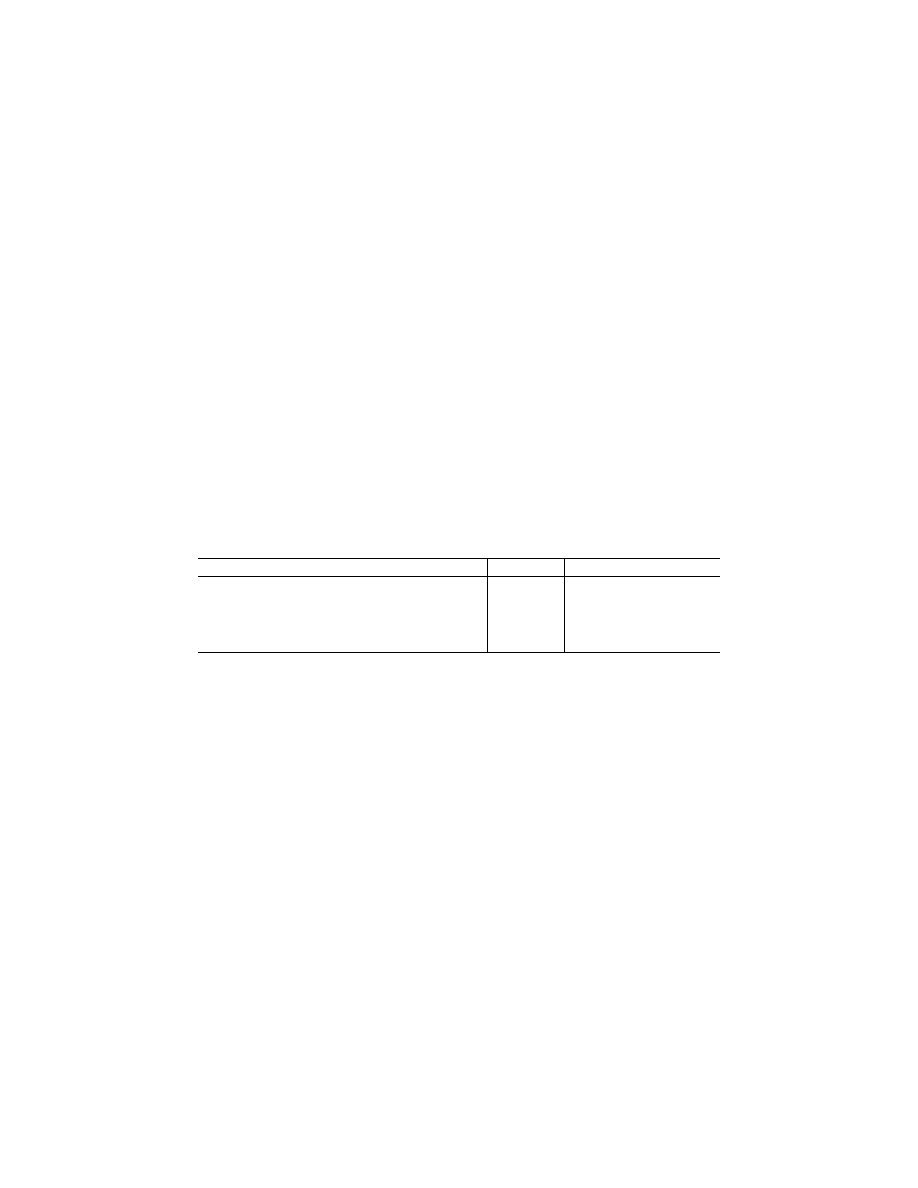
792
14 CFR Ch. I (1–1–24 Edition)
§ 91.1059
applicable unscheduled flight time lim-
itations, duty period limitations, and
rest requirements of part 121 or part 135
of this chapter instead of the flight
time limitations, duty period limita-
tions, and rest requirements of this
subpart.
§ 91.1059
Flight time limitations and
rest requirements: One or two pilot
crews.
(a) No program manager may assign
any flight crewmember, and no flight
crewmember may accept an assign-
ment, for flight time as a member of a
one- or two-pilot crew if that crew-
member’s total flight time in all com-
mercial flying will exceed—
(1) 500 hours in any calendar quarter;
(2) 800 hours in any two consecutive
calendar quarters;
(3) 1,400 hours in any calendar year.
(b) Except as provided in paragraph
(c) of this section, during any 24 con-
secutive hours the total flight time of
the assigned flight, when added to any
commercial flying by that flight crew-
member, may not exceed—
(1) 8 hours for a flight crew con-
sisting of one pilot; or
(2) 10 hours for a flight crew con-
sisting of two pilots qualified under
this subpart for the operation being
conducted.
(c) No program manager may assign
any flight crewmember, and no flight
crewmember may accept an assign-
ment, if that crewmember’s flight time
or duty period will exceed, or rest time
will be less than—
Normal duty
Extension of flight time
(1) Minimum Rest Immediately Before Duty ..........................................
10 Hours ...........
10 Hours.
(2) Duty Period .......................................................................................
Up to 14 Hours
Up to 14 Hours.
(3) Flight Time For 1 Pilot ......................................................................
Up to 8 Hours ...
Exceeding 8 Hours up to 9 Hours.
(4) Flight Time For 2 Pilots ....................................................................
Up to 10 Hours
Exceeding 10 Hours up to 12 Hours.
(5) Minimum After Duty Rest .................................................................
10 Hours ...........
12 Hours.
(6) Minimum After Duty Rest Period for Multi-Time Zone Flights .........
14 Hours ...........
18 Hours.
§ 91.1061
Augmented flight crews.
(a) No program manager may assign
any flight crewmember, and no flight
crewmember may accept an assign-
ment, for flight time as a member of an
augmented crew if that crewmember’s
total flight time in all commercial fly-
ing will exceed—
(1) 500 hours in any calendar quarter;
(2) 800 hours in any two consecutive
calendar quarters;
(3) 1,400 hours in any calendar year.
(b) No program manager may assign
any pilot to an augmented crew, unless
the program manager ensures:
(1) Adequate sleeping facilities are
installed on the aircraft for the pilots.
(2) No more than 8 hours of flight
deck duty is accrued in any 24 consecu-
tive hours.
(3) For a three-pilot crew, the crew
must consist of at least the following:
(i) A pilot in command (PIC) who
meets the applicable flight crew-
member requirements of this subpart
and § 61.57 of this chapter.
(ii) A PIC qualified pilot who meets
the applicable flight crewmember re-
quirements of this subpart and § 61.57(c)
and (d) of this chapter.
(iii) A second in command (SIC) who
meets the SIC qualifications of this
subpart. For flight under IFR, that per-
son must also meet the recent instru-
ment experience requirements of part
61 of this chapter.
(4) For a four-pilot crew, at least
three pilots who meet the conditions of
paragraph (b)(3) of this section, plus a
fourth pilot who meets the SIC quali-
fications of this subpart. For flight
under IFR, that person must also meet
the recent instrument experience re-
quirements of part 61 of this chapter.
(c) No program manager may assign
any flight crewmember, and no flight
crewmember may accept an assign-
ment, if that crewmember’s flight time
or duty period will exceed, or rest time
will be less than—
VerDate Sep<11>2014
14:00 Mar 14, 2024
Jkt 262047
PO 00000
Frm 00802
Fmt 8010
Sfmt 8010
Q:\14\14V2.TXT
PC31
aworley on LAPBH6H6L3 with DISTILLER
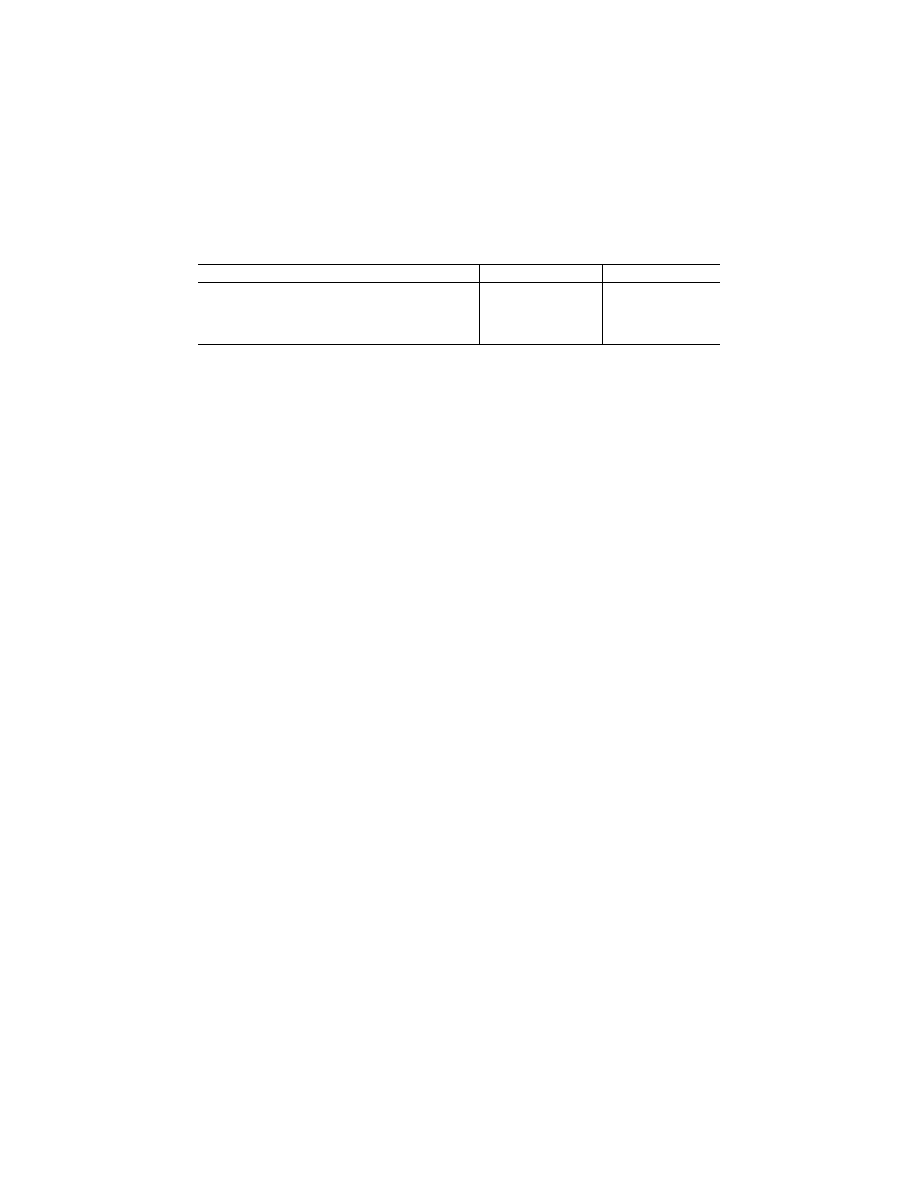
793
Federal Aviation Administration, DOT
§ 91.1062
3-Pilot crew
4-Pilot crew
(1) Minimum Rest Immediately Before Duty .......................................
10 Hours .............................
10 Hours
(2) Duty Period ....................................................................................
Up to 16 Hours ...................
Up to 18 Hours
(3) Flight Time .....................................................................................
Up to 12 Hours ...................
Up to 16 Hours
(4) Minimum After Duty Rest ..............................................................
12 Hours .............................
18 Hours
(5) Minimum After Duty Rest Period for Multi-Time Zone Flights ......
18 hours .............................
24 hours
§ 91.1062
Duty periods and rest re-
quirements: Flight attendants.
(a) Except as provided in paragraph
(b) of this section, a program manager
may assign a duty period to a flight at-
tendant only when the assignment
meets the applicable duty period limi-
tations and rest requirements of this
paragraph.
(1) Except as provided in paragraphs
(a)(4), (a)(5), and (a)(6) of this section,
no program manager may assign a
flight attendant to a scheduled duty
period of more than 14 hours.
(2) Except as provided in paragraph
(a)(3) of this section, a flight attendant
scheduled to a duty period of 14 hours
or less as provided under paragraph
(a)(1) of this section must be given a
scheduled rest period of at least 9 con-
secutive hours. This rest period must
occur between the completion of the
scheduled duty period and the com-
mencement of the subsequent duty pe-
riod.
(3) The rest period required under
paragraph (a)(2) of this section may be
scheduled or reduced to 8 consecutive
hours if the flight attendant is pro-
vided a subsequent rest period of at
least 10 consecutive hours; this subse-
quent rest period must be scheduled to
begin no later than 24 hours after the
beginning of the reduced rest period
and must occur between the comple-
tion of the scheduled duty period and
the commencement of the subsequent
duty period.
(4) A program manager may assign a
flight attendant to a scheduled duty
period of more than 14 hours, but no
more than 16 hours, if the program
manager has assigned to the flight or
flights in that duty period at least one
flight attendant in addition to the min-
imum flight attendant complement re-
quired for the flight or flights in that
duty period under the program man-
ager’s management specifications.
(5) A program manager may assign a
flight attendant to a scheduled duty
period of more than 16 hours, but no
more than 18 hours, if the program
manager has assigned to the flight or
flights in that duty period at least two
flight attendants in addition to the
minimum flight attendant complement
required for the flight or flights in that
duty period under the program man-
ager’s management specifications.
(6) A program manager may assign a
flight attendant to a scheduled duty
period of more than 18 hours, but no
more than 20 hours, if the scheduled
duty period includes one or more
flights that land or take off outside the
48 contiguous states and the District of
Columbia, and if the program manager
has assigned to the flight or flights in
that duty period at least three flight
attendants in addition to the minimum
flight attendant complement required
for the flight or flights in that duty pe-
riod under the program manager’s
management specifications.
(7) Except as provided in paragraph
(a)(8) of this section, a flight attendant
scheduled to a duty period of more
than 14 hours but no more than 20
hours, as provided in paragraphs (a)(4),
(a)(5), and (a)(6) of this section, must be
given a scheduled rest period of at least
12 consecutive hours. This rest period
must occur between the completion of
the scheduled duty period and the com-
mencement of the subsequent duty pe-
riod.
(8) The rest period required under
paragraph (a)(7) of this section may be
scheduled or reduced to 10 consecutive
hours if the flight attendant is pro-
vided a subsequent rest period of at
least 14 consecutive hours; this subse-
quent rest period must be scheduled to
begin no later than 24 hours after the
beginning of the reduced rest period
and must occur between the comple-
tion of the scheduled duty period and
the commencement of the subsequent
duty period.
(9) Notwithstanding paragraphs
(a)(4), (a)(5), and (a)(6) of this section, if
VerDate Sep<11>2014
14:00 Mar 14, 2024
Jkt 262047
PO 00000
Frm 00803
Fmt 8010
Sfmt 8010
Q:\14\14V2.TXT
PC31
aworley on LAPBH6H6L3 with DISTILLER

794
14 CFR Ch. I (1–1–24 Edition)
§ 91.1063
a program manager elects to reduce
the rest period to 10 hours as author-
ized by paragraph (a)(8) of this section,
the program manager may not sched-
ule a flight attendant for a duty period
of more than 14 hours during the 24-
hour period commencing after the be-
ginning of the reduced rest period.
(b) Notwithstanding paragraph (a) of
this section, a program manager may
apply the flight crewmember flight
time and duty limitations and rest re-
quirements of this part to flight at-
tendants for all operations conducted
under this part provided that the pro-
gram manager establishes written pro-
cedures that—
(1) Apply to all flight attendants used
in the program manager’s operation;
(2) Include the flight crewmember
rest and duty requirements of §§ 91.1057,
91.1059, and 91.1061, as appropriate to
the operation being conducted, except
that rest facilities on board the air-
craft are not required;
(3) Include provisions to add one
flight attendant to the minimum flight
attendant complement for each flight
crewmember who is in excess of the
minimum number required in the air-
craft type certificate data sheet and
who is assigned to the aircraft under
the provisions of § 91.1061; and
(4) Are approved by the Adminis-
trator and described or referenced in
the program manager’s management
specifications.
§ 91.1063
Testing and training: Appli-
cability and terms used.
(a) Sections 91.1065 through 91.1107:
(1) Prescribe the tests and checks re-
quired for pilots and flight attendant
crewmembers and for the approval of
check pilots in operations under this
subpart;
(2) Prescribe the requirements for es-
tablishing and maintaining an ap-
proved training program for crew-
members, check pilots and instructors,
and other operations personnel em-
ployed or used by the program manager
in program operations;
(3) Prescribe the requirements for the
qualification, approval and use of air-
craft simulators and flight training de-
vices in the conduct of an approved
training program; and
(4) Permits training center personnel
authorized under part 142 of this chap-
ter who meet the requirements of
§ 91.1075 to conduct training, testing
and checking under contract or other
arrangements to those persons subject
to the requirements of this subpart.
(b) If authorized by the Adminis-
trator, a program manager may com-
ply with the applicable training and
testing sections of part 121, subparts N
and O of this chapter instead of
§§ 91.1065 through 91.1107, provided that
the following additional limitations
and allowances apply to program man-
agers so authorized:
(1)
Operating experience and operations
familiarization. Program managers are
not required to comply with the oper-
ating experience requirements of
§ 121.434 or the operations familiariza-
tion requirements of § 121.435 of this
chapter.
(2)
Upgrade training. (i) Each program
manager must include in upgrade
ground training for pilots, instruction
in at least the subjects identified in
§ 121.419(a) of this chapter, as applicable
to their assigned duties; and, for pilots
serving in crews of two or more pilots,
beginning on April 27, 2022, instruction
and facilitated discussion in the sub-
jects identified in § 121.419(c) of this
chapter.
(ii) Each program manager must in-
clude in upgrade flight training for pi-
lots, flight training for the maneuvers
and procedures required in § 121.424(a),
(c), (e), and (f) of this chapter; and, for
pilots serving in crews of two or more
pilots, beginning on April 27, 2022, the
flight training required in § 121.424(b) of
this chapter.
(3)
Initial and recurrent leadership and
command and mentoring training. Pro-
gram managers are not required to in-
clude leadership and command training
in §§ 121.409(b)(2)(ii)(B)(
6), 121.419(c)(1),
121.424(b) and 121.427(d)(1) of this chap-
ter, and mentoring training in
§§ 121.419(c)(2) and 121.427(d)(1) of this
chapter in initial and recurrent train-
ing for pilots in command who serve in
operations that use only one pilot.
(4)
One-time leadership and command
and mentoring training. Section 121.429
of this chapter does not apply to pro-
gram managers conducting operations
VerDate Sep<11>2014
14:00 Mar 14, 2024
Jkt 262047
PO 00000
Frm 00804
Fmt 8010
Sfmt 8010
Q:\14\14V2.TXT
PC31
aworley on LAPBH6H6L3 with DISTILLER

795
Federal Aviation Administration, DOT
§ 91.1065
under this subpart when those oper-
ations use only one pilot.
(c) If authorized by the Adminis-
trator, a program manager may com-
ply with the applicable training and
testing sections of subparts G and H of
part 135 of this chapter instead of
§§ 91.1065 through 91.1107, except for the
operating experience requirements of
§ 135.244 of this chapter.
(d) For the purposes of this subpart,
the following terms and definitions
apply:
(1)
Initial training. The training re-
quired for crewmembers who have not
qualified and served in the same capac-
ity on an aircraft.
(2)
Transition training. The training
required for crewmembers who have
qualified and served in the same capac-
ity on another aircraft.
(3)
Upgrade training. The training re-
quired for crewmembers who have
qualified and served as second in com-
mand on a particular aircraft type, be-
fore they serve as pilot in command on
that aircraft.
(4)
Differences training. The training
required for crewmembers who have
qualified and served on a particular
type aircraft, when the Administrator
finds differences training is necessary
before a crewmember serves in the
same capacity on a particular vari-
ation of that aircraft.
(5)
Recurrent training. The training
required for crewmembers to remain
adequately trained and currently pro-
ficient for each aircraft crewmember
position, and type of operation in
which the crewmember serves.
(6)
In flight. The maneuvers, proce-
dures, or functions that will be con-
ducted in the aircraft.
(7)
Training center. An organization
governed by the applicable require-
ments of part 142 of this chapter that
conducts training, testing, and check-
ing under contract or other arrange-
ment to program managers subject to
the requirements of this subpart.
(8)
Requalification training. The train-
ing required for crewmembers pre-
viously trained and qualified, but who
have become unqualified because of not
having met within the required period
any of the following:
(i) Recurrent crewmember training
requirements of § 91.1107.
(ii) Instrument proficiency check re-
quirements of § 91.1069.
(iii) Testing requirements of § 91.1065.
(iv) Recurrent flight attendant test-
ing requirements of § 91.1067.
[Docket No. FAA–2001–10047, 68 FR 54561,
Sept. 17, 2003, as amended by Amdt. 61-144, 85
FR 10920, Feb. 25, 2020]
§ 91.1065
Initial and recurrent pilot
testing requirements.
(a) No program manager or owner
may use a pilot, nor may any person
serve as a pilot, unless, since the begin-
ning of the 12th month before that
service, that pilot has passed either a
written or oral test (or a combination),
given by the Administrator or an au-
thorized check pilot, on that pilot’s
knowledge in the following areas—
(1) The appropriate provisions of
parts 61 and 91 of this chapter and the
management specifications and the op-
erating manual of the program man-
ager;
(2) For each type of aircraft to be
flown by the pilot, the aircraft power-
plant, major components and systems,
major appliances, performance and op-
erating limitations, standard and
emergency operating procedures, and
the contents of the accepted operating
manual or equivalent, as applicable;
(3) For each type of aircraft to be
flown by the pilot, the method of deter-
mining compliance with weight and
balance limitations for takeoff, landing
and en route operations;
(4) Navigation and use of air naviga-
tion aids appropriate to the operation
or pilot authorization, including, when
applicable, instrument approach facili-
ties and procedures;
(5) Air traffic control procedures, in-
cluding IFR procedures when applica-
ble;
(6) Meteorology in general, including
the principles of frontal systems, icing,
fog, thunderstorms, and windshear,
and, if appropriate for the operation of
the program manager, high altitude
weather;
(7) Procedures for—
(i) Recognizing and avoiding severe
weather situations;
(ii) Escaping from severe weather sit-
uations, in case of inadvertent encoun-
ters, including low-altitude windshear
(except that rotorcraft aircraft pilots
VerDate Sep<11>2014
14:00 Mar 14, 2024
Jkt 262047
PO 00000
Frm 00805
Fmt 8010
Sfmt 8010
Q:\14\14V2.TXT
PC31
aworley on LAPBH6H6L3 with DISTILLER

796
14 CFR Ch. I (1–1–24 Edition)
§ 91.1067
are not required to be tested on escap-
ing from low-altitude windshear); and
(iii) Operating in or near thunder-
storms (including best penetration al-
titudes), turbulent air (including clear
air turbulence), icing, hail, and other
potentially hazardous meteorological
conditions; and
(8) New equipment, procedures, or
techniques, as appropriate.
(b) No program manager or owner
may use a pilot, nor may any person
serve as a pilot, in any aircraft unless,
since the beginning of the 12th month
before that service, that pilot has
passed a competency check given by
the Administrator or an authorized
check pilot in that class of aircraft, if
single-engine aircraft other than tur-
bojet, or that type of aircraft, if rotor-
craft, multiengine aircraft, or turbojet
airplane, to determine the pilot’s com-
petence in practical skills and tech-
niques in that aircraft or class of air-
craft. The extent of the competency
check will be determined by the Ad-
ministrator or authorized check pilot
conducting the competency check. The
competency check may include any of
the maneuvers and procedures cur-
rently required for the original
issuance of the particular pilot certifi-
cate required for the operations au-
thorized and appropriate to the cat-
egory, class and type of aircraft in-
volved. For the purposes of this para-
graph, type, as to an airplane, means
any one of a group of airplanes deter-
mined by the Administrator to have a
similar means of propulsion, the same
manufacturer, and no significantly dif-
ferent handling or flight characteris-
tics. For the purposes of this para-
graph, type, as to a rotorcraft, means a
basic make and model.
(c) The instrument proficiency check
required by § 91.1069 may be substituted
for the competency check required by
this section for the type of aircraft
used in the check.
(d) For the purpose of this subpart,
competent performance of a procedure
or maneuver by a person to be used as
a pilot requires that the pilot be the
obvious master of the aircraft, with the
successful outcome of the maneuver
never in doubt.
(e) The Administrator or authorized
check pilot certifies the competency of
each pilot who passes the knowledge or
flight check in the program manager’s
pilot records.
(f) All or portions of a required com-
petency check may be given in an air-
craft simulator or other appropriate
training device, if approved by the Ad-
ministrator.
(g) If the program manager is author-
ized to conduct EFVS operations, the
competency check in paragraph (b) of
this section must include tasks appro-
priate to the EFVS operations the cer-
tificate holder is authorized to con-
duct.
[Docket No. FAA–2001–10047, 68 FR 54561,
Sept. 17, 2003, as amended by Docket FAA–
2013–0485, Amdt. 91–345, 81 FR 90175, Dec. 13,
2016]
§ 91.1067
Initial and recurrent flight
attendant crewmember testing re-
quirements.
No program manager or owner may
use a flight attendant crewmember,
nor may any person serve as a flight
attendant crewmember unless, since
the beginning of the 12th month before
that service, the program manager has
determined by appropriate initial and
recurrent testing that the person is
knowledgeable and competent in the
following areas as appropriate to as-
signed duties and responsibilities—
(a) Authority of the pilot in com-
mand;
(b) Passenger handling, including
procedures to be followed in handling
deranged persons or other persons
whose conduct might jeopardize safety;
(c) Crewmember assignments, func-
tions, and responsibilities during ditch-
ing and evacuation of persons who may
need the assistance of another person
to move expeditiously to an exit in an
emergency;
(d) Briefing of passengers;
(e) Location and operation of port-
able fire extinguishers and other items
of emergency equipment;
(f) Proper use of cabin equipment and
controls;
(g) Location and operation of pas-
senger oxygen equipment;
(h) Location and operation of all nor-
mal and emergency exits, including
evacuation slides and escape ropes; and
(i) Seating of persons who may need
assistance of another person to move
VerDate Sep<11>2014
14:00 Mar 14, 2024
Jkt 262047
PO 00000
Frm 00806
Fmt 8010
Sfmt 8010
Q:\14\14V2.TXT
PC31
aworley on LAPBH6H6L3 with DISTILLER

797
Federal Aviation Administration, DOT
§ 91.1069
rapidly to an exit in an emergency as
prescribed by the program manager’s
operations manual.
§ 91.1069
Flight crew: Instrument pro-
ficiency check requirements.
(a) No program manager or owner
may use a pilot, nor may any person
serve, as a pilot in command of an air-
craft under IFR unless, since the begin-
ning of the 6th month before that serv-
ice, that pilot has passed an instru-
ment proficiency check under this sec-
tion administered by the Adminis-
trator or an authorized check pilot.
(b) No program manager or owner
may use a pilot, nor may any person
serve, as a second command pilot of an
aircraft under IFR unless, since the be-
ginning of the 12th month before that
service, that pilot has passed an instru-
ment proficiency check under this sec-
tion administered by the Adminis-
trator or an authorized check pilot.
(c) No pilot may use any type of pre-
cision instrument approach procedure
under IFR unless, since the beginning
of the 6th month before that use, the
pilot satisfactorily demonstrated that
type of approach procedure. No pilot
may use any type of nonprecision ap-
proach procedure under IFR unless,
since the beginning of the 6th month
before that use, the pilot has satisfac-
torily demonstrated either that type of
approach procedure or any other two
different types of nonprecision ap-
proach procedures. The instrument ap-
proach procedure or procedures must
include at least one straight-in ap-
proach, one circling approach, and one
missed approach. Each type of ap-
proach procedure demonstrated must
be conducted to published minimums
for that procedure.
(d) The instrument proficiency
checks required by paragraphs (a) and
(b) of this section consists of either an
oral or written equipment test (or a
combination) and a flight check under
simulated or actual IFR conditions.
The equipment test includes questions
on emergency procedures, engine oper-
ation, fuel and lubrication systems,
power settings, stall speeds, best en-
gine-out speed, propeller and super-
charger operations, and hydraulic, me-
chanical, and electrical systems, as ap-
propriate. The flight check includes
navigation by instruments, recovery
from simulated emergencies, and
standard instrument approaches in-
volving navigational facilities which
that pilot is to be authorized to use.
(e) Each pilot taking the instrument
proficiency check must show that
standard of competence required by
§ 91.1065(d).
(1) The instrument proficiency check
must—
(i) For a pilot in command of an air-
craft requiring that the PIC hold an
airline transport pilot certificate, in-
clude the procedures and maneuvers for
an airline transport pilot certificate in
the particular type of aircraft, if appro-
priate; and
(ii) For a pilot in command of a
rotorcraft or a second in command of
any aircraft requiring that the SIC
hold a commercial pilot certificate in-
clude the procedures and maneuvers for
a commercial pilot certificate with an
instrument rating and, if required, for
the appropriate type rating.
(2) The instrument proficiency check
must be given by an authorized check
pilot or by the Administrator.
(f) If the pilot is assigned to pilot
only one type of aircraft, that pilot
must take the instrument proficiency
check required by paragraph (a) of this
section in that type of aircraft.
(g) If the pilot in command is as-
signed to pilot more than one type of
aircraft, that pilot must take the in-
strument proficiency check required by
paragraph (a) of this section in each
type of aircraft to which that pilot is
assigned, in rotation, but not more
than one flight check during each pe-
riod described in paragraph (a) of this
section.
(h) If the pilot in command is as-
signed to pilot both single-engine and
multiengine aircraft, that pilot must
initially take the instrument pro-
ficiency check required by paragraph
(a) of this section in a multiengine air-
craft, and each succeeding check alter-
nately in single-engine and multien-
gine aircraft, but not more than one
flight check during each period de-
scribed in paragraph (a) of this section.
(i) All or portions of a required flight
check may be given in an aircraft sim-
ulator or other appropriate training de-
vice, if approved by the Administrator.
VerDate Sep<11>2014
14:00 Mar 14, 2024
Jkt 262047
PO 00000
Frm 00807
Fmt 8010
Sfmt 8010
Q:\14\14V2.TXT
PC31
aworley on LAPBH6H6L3 with DISTILLER

798
14 CFR Ch. I (1–1–24 Edition)
§ 91.1071
§ 91.1071
Crewmember: Tests and
checks, grace provisions, training
to accepted standards.
(a) If a crewmember who is required
to take a test or a flight check under
this subpart, completes the test or
flight check in the month before or
after the month in which it is required,
that crewmember is considered to have
completed the test or check in the
month in which it is required.
(b) If a pilot being checked under this
subpart fails any of the required ma-
neuvers, the person giving the check
may give additional training to the
pilot during the course of the check. In
addition to repeating the maneuvers
failed, the person giving the check may
require the pilot being checked to re-
peat any other maneuvers that are nec-
essary to determine the pilot’s pro-
ficiency. If the pilot being checked is
unable to demonstrate satisfactory
performance to the person conducting
the check, the program manager may
not use the pilot, nor may the pilot
serve, as a flight crewmember in oper-
ations under this subpart until the
pilot has satisfactorily completed the
check. If a pilot who demonstrates un-
satisfactory performance is employed
as a pilot for a certificate holder oper-
ating under part 121, 125, or 135 of this
chapter, he or she must notify that cer-
tificate holder of the unsatisfactory
performance.
§ 91.1073
Training program: General.
(a) Each program manager must have
a training program and must:
(1) Establish, obtain the appropriate
initial and final approval of, and pro-
vide a training program that meets
this subpart and that ensures that each
crewmember, including each flight at-
tendant if the program manager uses a
flight attendant crewmember, flight
instructor, check pilot, and each per-
son assigned duties for the carriage and
handling of hazardous materials (as de-
fined in 49 CFR 171.8) is adequately
trained to perform these assigned du-
ties.
(2) Provide adequate ground and
flight training facilities and properly
qualified ground instructors for the
training required by this subpart.
(3) Provide and keep current for each
aircraft type used and, if applicable,
the particular variations within the
aircraft type, appropriate training ma-
terial, examinations, forms, instruc-
tions, and procedures for use in con-
ducting the training and checks re-
quired by this subpart.
(4) Provide enough flight instructors,
check pilots, and simulator instructors
to conduct required flight training and
flight checks, and simulator training
courses allowed under this subpart.
(b) Whenever a crewmember who is
required to take recurrent training
under this subpart completes the train-
ing in the month before, or the month
after, the month in which that training
is required, the crewmember is consid-
ered to have completed it in the month
in which it was required.
(c) Each instructor, supervisor, or
check pilot who is responsible for a
particular ground training subject, seg-
ment of flight training, course of train-
ing, flight check, or competence check
under this subpart must certify as to
the proficiency and knowledge of the
crewmember, flight instructor, or
check pilot concerned upon completion
of that training or check. That certifi-
cation must be made a part of the
crewmember’s record. When the certifi-
cation required by this paragraph is
made by an entry in a computerized
recordkeeping system, the certifying
instructor, supervisor, or check pilot,
must be identified with that entry.
However, the signature of the certi-
fying instructor, supervisor, or check
pilot is not required for computerized
entries.
(d) Training subjects that apply to
more than one aircraft or crewmember
position and that have been satisfac-
torily completed during previous train-
ing while employed by the program
manager for another aircraft or an-
other crewmember position, need not
be repeated during subsequent training
other than recurrent training.
(e) Aircraft simulators and other
training devices may be used in the
program manager’s training program if
approved by the Administrator.
(f) Each program manager is respon-
sible for establishing safe and efficient
crew management practices for all
phases of flight in program operations
including crew resource management
VerDate Sep<11>2014
14:00 Mar 14, 2024
Jkt 262047
PO 00000
Frm 00808
Fmt 8010
Sfmt 8010
Q:\14\14V2.TXT
PC31
aworley on LAPBH6H6L3 with DISTILLER

799
Federal Aviation Administration, DOT
§ 91.1077
training for all crewmembers used in
program operations.
(g) If an aircraft simulator has been
approved by the Administrator for use
in the program manager’s training pro-
gram, the program manager must en-
sure that each pilot annually com-
pletes at least one flight training ses-
sion in an approved simulator for at
least one program aircraft. The train-
ing session may be the flight training
portion of any of the pilot training or
check requirements of this subpart, in-
cluding the initial, transition, upgrade,
requalification, differences, or recur-
rent training, or the accomplishment
of a competency check or instrument
proficiency check. If there is no ap-
proved simulator for that aircraft type
in operation, then all flight training
and checking must be accomplished in
the aircraft.
§ 91.1075
Training program: Special
rules.
Other than the program manager,
only the following are eligible under
this subpart to conduct training, test-
ing, and checking under contract or
other arrangement to those persons
subject to the requirements of this sub-
part.
(a) Another program manager oper-
ating under this subpart:
(b) A training center certificated
under part 142 of this chapter to con-
duct training, testing, and checking re-
quired by this subpart if the training
center—
(1) Holds applicable training speci-
fications issued under part 142 of this
chapter;
(2) Has facilities, training equipment,
and courseware meeting the applicable
requirements of part 142 of this chap-
ter;
(3) Has approved curriculums, cur-
riculum segments, and portions of cur-
riculum segments applicable for use in
training courses required by this sub-
part; and
(4) Has sufficient instructors and
check pilots qualified under the appli-
cable requirements of §§ 91.1089 through
91.1095 to conduct training, testing, and
checking to persons subject to the re-
quirements of this subpart.
(c) A part 119 certificate holder oper-
ating under part 121 or part 135 of this
chapter.
(d) As authorized by the Adminis-
trator, a training center that is not
certificated under part 142 of this chap-
ter.
§ 91.1077
Training program and revi-
sion: Initial and final approval.
(a) To obtain initial and final ap-
proval of a training program, or a revi-
sion to an approved training program,
each program manager must submit to
the Administrator—
(1) An outline of the proposed or re-
vised curriculum, that provides enough
information for a preliminary evalua-
tion of the proposed training program
or revision; and
(2) Additional relevant information
that may be requested by the Adminis-
trator.
(b) If the proposed training program
or revision complies with this subpart,
the Administrator grants initial ap-
proval in writing after which the pro-
gram manager may conduct the train-
ing under that program. The Adminis-
trator then evaluates the effectiveness
of the training program and advises the
program manager of deficiencies, if
any, that must be corrected.
(c) The Administrator grants final
approval of the proposed training pro-
gram or revision if the program man-
ager shows that the training conducted
under the initial approval in paragraph
(b) of this section ensures that each
person who successfully completes the
training is adequately trained to per-
form that person’s assigned duties.
(d) Whenever the Administrator finds
that revisions are necessary for the
continued adequacy of a training pro-
gram that has been granted final ap-
proval, the program manager must,
after notification by the Adminis-
trator, make any changes in the pro-
gram that are found necessary by the
Administrator. Within 30 days after the
program manager receives the notice,
it may file a petition to reconsider the
notice with the Administrator. The fil-
ing of a petition to reconsider stays the
notice pending a decision by the Ad-
ministrator. However, if the Adminis-
trator finds that there is an emergency
that requires immediate action in the
VerDate Sep<11>2014
14:00 Mar 14, 2024
Jkt 262047
PO 00000
Frm 00809
Fmt 8010
Sfmt 8010
Q:\14\14V2.TXT
PC31
aworley on LAPBH6H6L3 with DISTILLER

800
14 CFR Ch. I (1–1–24 Edition)
§ 91.1079
interest of safety, the Administrator
may, upon a statement of the reasons,
require a change effective without
stay.
§ 91.1079
Training program: Cur-
riculum.
(a) Each program manager must pre-
pare and keep current a written train-
ing program curriculum for each type
of aircraft for each crewmember re-
quired for that type aircraft. The cur-
riculum must include ground and flight
training required by this subpart.
(b) Each training program cur-
riculum must include the following:
(1) A list of principal ground training
subjects, including emergency training
subjects, that are provided.
(2) A list of all the training devices,
mock-ups, systems trainers, procedures
trainers, or other training aids that
the program manager will use.
(3) Detailed descriptions or pictorial
displays of the approved normal, abnor-
mal, and emergency maneuvers, proce-
dures and functions that will be per-
formed during each flight training
phase or flight check, indicating those
maneuvers, procedures and functions
that are to be performed during the
inflight portions of flight training and
flight checks.
§ 91.1081
Crewmember training re-
quirements.
(a) Each program manager must in-
clude in its training program the fol-
lowing initial and transition ground
training as appropriate to the par-
ticular assignment of the crewmember:
(1) Basic indoctrination ground train-
ing for newly hired crewmembers in-
cluding instruction in at least the—
(i) Duties and responsibilities of
crewmembers as applicable;
(ii) Appropriate provisions of this
chapter;
(iii) Contents of the program man-
ager’s management specifications (not
required for flight attendants); and
(iv) Appropriate portions of the pro-
gram manager’s operating manual.
(2) The initial and transition ground
training in §§ 91.1101 and 91.1105, as ap-
plicable.
(3) Emergency training in § 91.1083.
(b) Each training program must pro-
vide the initial and transition flight
training in § 91.1103, as applicable.
(c) Each training program must pro-
vide recurrent ground and flight train-
ing as provided in § 91.1107.
(d) Upgrade training in §§ 91.1101 and
91.1103 for a particular type aircraft
may be included in the training pro-
gram for crewmembers who have quali-
fied and served as second in command
on that aircraft.
(e) In addition to initial, transition,
upgrade and recurrent training, each
training program must provide ground
and flight training, instruction, and
practice necessary to ensure that each
crewmember—
(1) Remains adequately trained and
currently proficient for each aircraft,
crewmember position, and type of oper-
ation in which the crewmember serves;
and
(2) Qualifies in new equipment, facili-
ties, procedures, and techniques, in-
cluding modifications to aircraft.
§ 91.1083
Crewmember emergency
training.
(a) Each training program must pro-
vide emergency training under this sec-
tion for each aircraft type, model, and
configuration, each crewmember, and
each kind of operation conducted, as
appropriate for each crewmember and
the program manager.
(b) Emergency training must provide
the following:
(1) Instruction in emergency assign-
ments and procedures, including co-
ordination among crewmembers.
(2) Individual instruction in the loca-
tion, function, and operation of emer-
gency equipment including—
(i) Equipment used in ditching and
evacuation;
(ii) First aid equipment and its prop-
er use; and
(iii) Portable fire extinguishers, with
emphasis on the type of extinguisher to
be used on different classes of fires.
(3) Instruction in the handling of
emergency situations including—
(i) Rapid decompression;
(ii) Fire in flight or on the surface
and smoke control procedures with em-
phasis on electrical equipment and re-
lated circuit breakers found in cabin
areas;
VerDate Sep<11>2014
14:00 Mar 14, 2024
Jkt 262047
PO 00000
Frm 00810
Fmt 8010
Sfmt 8010
Q:\14\14V2.TXT
PC31
aworley on LAPBH6H6L3 with DISTILLER

801
Federal Aviation Administration, DOT
§ 91.1089
(iii) Ditching and evacuation;
(iv) Illness, injury, or other abnormal
situations involving passengers or
crewmembers; and
(v) Hijacking and other unusual situ-
ations.
(4) Review and discussion of previous
aircraft accidents and incidents involv-
ing actual emergency situations.
(c) Each crewmember must perform
at least the following emergency drills,
using the proper emergency equipment
and procedures, unless the Adminis-
trator finds that, for a particular drill,
the crewmember can be adequately
trained by demonstration:
(1) Ditching, if applicable.
(2) Emergency evacuation.
(3) Fire extinguishing and smoke con-
trol.
(4) Operation and use of emergency
exits, including deployment and use of
evacuation slides, if applicable.
(5) Use of crew and passenger oxygen.
(6) Removal of life rafts from the air-
craft, inflation of the life rafts, use of
lifelines, and boarding of passengers
and crew, if applicable.
(7) Donning and inflation of life vests
and the use of other individual flota-
tion devices, if applicable.
(d) Crewmembers who serve in oper-
ations above 25,000 feet must receive
instruction in the following:
(1) Respiration.
(2) Hypoxia.
(3) Duration of consciousness without
supplemental oxygen at altitude.
(4) Gas expansion.
(5) Gas bubble formation.
(6) Physical phenomena and incidents
of decompression.
§ 91.1085
Hazardous materials recogni-
tion training.
No program manager may use any
person to perform, and no person may
perform, any assigned duties and re-
sponsibilities for the handling or car-
riage of hazardous materials (as de-
fined in 49 CFR 171.8), unless that per-
son has received training in the rec-
ognition of hazardous materials.
§ 91.1087
Approval of aircraft simula-
tors and other training devices.
(a) Training courses using aircraft
simulators and other training devices
may be included in the program man-
ager’s training program if approved by
the Administrator.
(b) Each aircraft simulator and other
training device that is used in a train-
ing course or in checks required under
this subpart must meet the following
requirements:
(1) It must be specifically approved
for—
(i) The program manager; and
(ii) The particular maneuver, proce-
dure, or crewmember function in-
volved.
(2) It must maintain the perform-
ance, functional, and other characteris-
tics that are required for approval.
(3) Additionally, for aircraft simula-
tors, it must be—
(i) Approved for the type aircraft
and, if applicable, the particular vari-
ation within type for which the train-
ing or check is being conducted; and
(ii) Modified to conform with any
modification to the aircraft being sim-
ulated that changes the performance,
functional, or other characteristics re-
quired for approval.
(c) A particular aircraft simulator or
other training device may be used by
more than one program manager.
(d) In granting initial and final ap-
proval of training programs or revi-
sions to them, the Administrator con-
siders the training devices, methods,
and procedures listed in the program
manager’s curriculum under § 91.1079.
§ 91.1089
Qualifications: Check pilots
(aircraft) and check pilots (simu-
lator).
(a) For the purposes of this section
and § 91.1093:
(1) A check pilot (aircraft) is a person
who is qualified to conduct flight
checks in an aircraft, in a flight simu-
lator, or in a flight training device for
a particular type aircraft.
(2) A check pilot (simulator) is a per-
son who is qualified to conduct flight
checks, but only in a flight simulator,
in a flight training device, or both, for
a particular type aircraft.
(3) Check pilots (aircraft) and check
pilots (simulator) are those check pi-
lots who perform the functions de-
scribed in § 91.1073(a)(4) and (c).
(b) No program manager may use a
person, nor may any person serve as a
VerDate Sep<11>2014
14:00 Mar 14, 2024
Jkt 262047
PO 00000
Frm 00811
Fmt 8010
Sfmt 8010
Q:\14\14V2.TXT
PC31
aworley on LAPBH6H6L3 with DISTILLER

802
14 CFR Ch. I (1–1–24 Edition)
§ 91.1091
check pilot (aircraft) in a training pro-
gram established under this subpart
unless, with respect to the aircraft
type involved, that person—
(1) Holds the pilot certificates and
ratings required to serve as a pilot in
command in operations under this sub-
part;
(2) Has satisfactorily completed the
training phases for the aircraft, includ-
ing recurrent training, that are re-
quired to serve as a pilot in command
in operations under this subpart;
(3) Has satisfactorily completed the
proficiency or competency checks that
are required to serve as a pilot in com-
mand in operations under this subpart;
(4) Has satisfactorily completed the
applicable training requirements of
§ 91.1093;
(5) Holds at least a Class III medical
certificate unless serving as a required
crewmember, in which case holds a
Class I or Class II medical certificate
as appropriate; and
(6) Has been approved by the Admin-
istrator for the check pilot duties in-
volved.
(c) No program manager may use a
person, nor may any person serve as a
check pilot (simulator) in a training
program established under this subpart
unless, with respect to the aircraft
type involved, that person meets the
provisions of paragraph (b) of this sec-
tion, or—
(1) Holds the applicable pilot certifi-
cates and ratings, except medical cer-
tificate, required to serve as a pilot in
command in operations under this sub-
part;
(2) Has satisfactorily completed the
appropriate training phases for the air-
craft, including recurrent training,
that are required to serve as a pilot in
command in operations under this sub-
part;
(3) Has satisfactorily completed the
appropriate proficiency or competency
checks that are required to serve as a
pilot in command in operations under
this subpart;
(4) Has satisfactorily completed the
applicable training requirements of
§ 91.1093; and
(5) Has been approved by the Admin-
istrator for the check pilot (simulator)
duties involved.
(d) Completion of the requirements
in paragraphs (b)(2), (3), and (4) or
(c)(2), (3), and (4) of this section, as ap-
plicable, must be entered in the indi-
vidual’s training record maintained by
the program manager.
(e) A check pilot who does not hold
an appropriate medical certificate may
function as a check pilot (simulator),
but may not serve as a flightcrew
member in operations under this sub-
part.
(f) A check pilot (simulator) must ac-
complish the following—
(1) Fly at least two flight segments
as a required crewmember for the type,
class, or category aircraft involved
within the 12-month period preceding
the performance of any check pilot
duty in a flight simulator; or
(2) Before performing any check pilot
duty in a flight simulator, satisfac-
torily complete an approved line-obser-
vation program within the period pre-
scribed by that program.
(g) The flight segments or line-obser-
vation program required in paragraph
(f) of this section are considered to be
completed in the month required if
completed in the month before or the
month after the month in which they
are due.
§ 91.1091
Qualifications: Flight instruc-
tors (aircraft) and flight instructors
(simulator).
(a) For the purposes of this section
and § 91.1095:
(1) A flight instructor (aircraft) is a
person who is qualified to instruct in
an aircraft, in a flight simulator, or in
a flight training device for a particular
type, class, or category aircraft.
(2) A flight instructor (simulator) is a
person who is qualified to instruct in a
flight simulator, in a flight training
device, or in both, for a particular
type, class, or category aircraft.
(3) Flight instructors (aircraft) and
flight instructors (simulator) are those
instructors who perform the functions
described in § 91.1073(a)(4) and (c).
(b) No program manager may use a
person, nor may any person serve as a
flight instructor (aircraft) in a training
program established under this subpart
unless, with respect to the type, class,
or category aircraft involved, that per-
son—
VerDate Sep<11>2014
14:00 Mar 14, 2024
Jkt 262047
PO 00000
Frm 00812
Fmt 8010
Sfmt 8010
Q:\14\14V2.TXT
PC31
aworley on LAPBH6H6L3 with DISTILLER

803
Federal Aviation Administration, DOT
§ 91.1093
(1) Holds the pilot certificates and
ratings required to serve as a pilot in
command in operations under this sub-
part or part 121 or 135 of this chapter;
(2) Has satisfactorily completed the
training phases for the aircraft, includ-
ing recurrent training, that are re-
quired to serve as a pilot in command
in operations under this subpart;
(3) Has satisfactorily completed the
proficiency or competency checks that
are required to serve as a pilot in com-
mand in operations under this subpart;
(4) Has satisfactorily completed the
applicable training requirements of
§ 91.1095; and
(5) Holds at least a Class III medical
certificate.
(c) No program manager may use a
person, nor may any person serve as a
flight instructor (simulator) in a train-
ing program established under this sub-
part, unless, with respect to the type,
class, or category aircraft involved,
that person meets the provisions of
paragraph (b) of this section, or—
(1) Holds the pilot certificates and
ratings, except medical certificate, re-
quired to serve as a pilot in command
in operations under this subpart or
part 121 or 135 of this chapter;
(2) Has satisfactorily completed the
appropriate training phases for the air-
craft, including recurrent training,
that are required to serve as a pilot in
command in operations under this sub-
part;
(3) Has satisfactorily completed the
appropriate proficiency or competency
checks that are required to serve as a
pilot in command in operations under
this subpart; and
(4) Has satisfactorily completed the
applicable training requirements of
§ 91.1095.
(d) Completion of the requirements
in paragraphs (b)(2), (3), and (4) or
(c)(2), (3), and (4) of this section, as ap-
plicable, must be entered in the indi-
vidual’s training record maintained by
the program manager.
(e) A pilot who does not hold a med-
ical certificate may function as a flight
instructor in an aircraft if functioning
as a non-required crewmember, but
may not serve as a flightcrew member
in operations under this subpart.
(f) A flight instructor (simulator)
must accomplish the following—
(1) Fly at least two flight segments
as a required crewmember for the type,
class, or category aircraft involved
within the 12-month period preceding
the performance of any flight instruc-
tor duty in a flight simulator; or
(2) Satisfactorily complete an ap-
proved line-observation program with-
in the period prescribed by that pro-
gram preceding the performance of any
flight instructor duty in a flight simu-
lator.
(g) The flight segments or line-obser-
vation program required in paragraph
(f) of this section are considered com-
pleted in the month required if com-
pleted in the month before, or in the
month after, the month in which they
are due.
[Doc. No. FAA–2001–10047, 68 FR 54561, Sept.
17, 2003, as amended by Amdt. 91–322, 76 FR
31823, June 2, 2011]
§ 91.1093
Initial and transition train-
ing and checking: Check pilots (air-
craft), check pilots (simulator).
(a) No program manager may use a
person nor may any person serve as a
check pilot unless—
(1) That person has satisfactorily
completed initial or transition check
pilot training; and
(2) Within the preceding 24 months,
that person satisfactorily conducts a
proficiency or competency check under
the observation of an FAA inspector or
an aircrew designated examiner em-
ployed by the program manager. The
observation check may be accom-
plished in part or in full in an aircraft,
in a flight simulator, or in a flight
training device.
(b) The observation check required
by paragraph (a)(2) of this section is
considered to have been completed in
the month required if completed in the
month before or the month after the
month in which it is due.
(c) The initial ground training for
check pilots must include the fol-
lowing:
(1) Check pilot duties, functions, and
responsibilities.
(2) The applicable provisions of the
Code of Federal Regulations and the
program manager’s policies and proce-
dures.
VerDate Sep<11>2014
14:00 Mar 14, 2024
Jkt 262047
PO 00000
Frm 00813
Fmt 8010
Sfmt 8010
Q:\14\14V2.TXT
PC31
aworley on LAPBH6H6L3 with DISTILLER

804
14 CFR Ch. I (1–1–24 Edition)
§ 91.1095
(3) The applicable methods, proce-
dures, and techniques for conducting
the required checks.
(4) Proper evaluation of student per-
formance including the detection of—
(i) Improper and insufficient train-
ing; and
(ii) Personal characteristics of an ap-
plicant that could adversely affect
safety.
(5) The corrective action in the case
of unsatisfactory checks.
(6) The approved methods, proce-
dures, and limitations for performing
the required normal, abnormal, and
emergency procedures in the aircraft.
(d) The transition ground training for
a check pilot must include the ap-
proved methods, procedures, and limi-
tations for performing the required
normal, abnormal, and emergency pro-
cedures applicable to the aircraft to
which the check pilot is in transition.
(e) The initial and transition flight
training for a check pilot (aircraft)
must include the following—
(1) The safety measures for emer-
gency situations that are likely to de-
velop during a check;
(2) The potential results of improper,
untimely, or nonexecution of safety
measures during a check;
(3) Training and practice in con-
ducting flight checks from the left and
right pilot seats in the required nor-
mal, abnormal, and emergency proce-
dures to ensure competence to conduct
the pilot flight checks required by this
subpart; and
(4) The safety measures to be taken
from either pilot seat for emergency
situations that are likely to develop
during checking.
(f) The requirements of paragraph (e)
of this section may be accomplished in
full or in part in flight, in a flight sim-
ulator, or in a flight training device, as
appropriate.
(g) The initial and transition flight
training for a check pilot (simulator)
must include the following:
(1) Training and practice in con-
ducting flight checks in the required
normal, abnormal, and emergency pro-
cedures to ensure competence to con-
duct the flight checks required by this
subpart. This training and practice
must be accomplished in a flight simu-
lator or in a flight training device.
(2) Training in the operation of flight
simulators, flight training devices, or
both, to ensure competence to conduct
the flight checks required by this sub-
part.
§ 91.1095
Initial and transition train-
ing and checking: Flight instructors
(aircraft), flight instructors (simu-
lator).
(a) No program manager may use a
person nor may any person serve as a
flight instructor unless—
(1) That person has satisfactorily
completed initial or transition flight
instructor training; and
(2) Within the preceding 24 months,
that person satisfactorily conducts in-
struction under the observation of an
FAA inspector, a program manager
check pilot, or an aircrew designated
examiner employed by the program
manager. The observation check may
be accomplished in part or in full in an
aircraft, in a flight simulator, or in a
flight training device.
(b) The observation check required
by paragraph (a)(2) of this section is
considered to have been completed in
the month required if completed in the
month before, or the month after, the
month in which it is due.
(c) The initial ground training for
flight instructors must include the fol-
lowing:
(1) Flight instructor duties, func-
tions, and responsibilities.
(2) The applicable Code of Federal
Regulations and the program man-
ager’s policies and procedures.
(3) The applicable methods, proce-
dures, and techniques for conducting
flight instruction.
(4) Proper evaluation of student per-
formance including the detection of—
(i) Improper and insufficient train-
ing; and
(ii) Personal characteristics of an ap-
plicant that could adversely affect
safety.
(5) The corrective action in the case
of unsatisfactory training progress.
(6) The approved methods, proce-
dures, and limitations for performing
the required normal, abnormal, and
emergency procedures in the aircraft.
(7) Except for holders of a flight in-
structor certificate—
(i) The fundamental principles of the
teaching-learning process;
VerDate Sep<11>2014
14:00 Mar 14, 2024
Jkt 262047
PO 00000
Frm 00814
Fmt 8010
Sfmt 8010
Q:\14\14V2.TXT
PC31
aworley on LAPBH6H6L3 with DISTILLER

805
Federal Aviation Administration, DOT
§ 91.1101
(ii) Teaching methods and proce-
dures; and
(iii) The instructor-student relation-
ship.
(d) The transition ground training for
flight instructors must include the ap-
proved methods, procedures, and limi-
tations for performing the required
normal, abnormal, and emergency pro-
cedures applicable to the type, class, or
category aircraft to which the flight
instructor is in transition.
(e) The initial and transition flight
training for flight instructors (aircraft)
must include the following—
(1) The safety measures for emer-
gency situations that are likely to de-
velop during instruction;
(2) The potential results of improper
or untimely safety measures during in-
struction;
(3) Training and practice from the
left and right pilot seats in the re-
quired normal, abnormal, and emer-
gency maneuvers to ensure competence
to conduct the flight instruction re-
quired by this subpart; and
(4) The safety measures to be taken
from either the left or right pilot seat
for emergency situations that are like-
ly to develop during instruction.
(f) The requirements of paragraph (e)
of this section may be accomplished in
full or in part in flight, in a flight sim-
ulator, or in a flight training device, as
appropriate.
(g) The initial and transition flight
training for a flight instructor (simu-
lator) must include the following:
(1) Training and practice in the re-
quired normal, abnormal, and emer-
gency procedures to ensure competence
to conduct the flight instruction re-
quired by this subpart. These maneu-
vers and procedures must be accom-
plished in full or in part in a flight sim-
ulator or in a flight training device.
(2) Training in the operation of flight
simulators, flight training devices, or
both, to ensure competence to conduct
the flight instruction required by this
subpart.
§ 91.1097
Pilot and flight attendant
crewmember training programs.
(a) Each program manager must es-
tablish and maintain an approved pilot
training program, and each program
manager who uses a flight attendant
crewmember must establish and main-
tain an approved flight attendant
training program, that is appropriate
to the operations to which each pilot
and flight attendant is to be assigned,
and will ensure that they are ade-
quately trained to meet the applicable
knowledge and practical testing re-
quirements of §§ 91.1065 through 91.1071.
(b) Each program manager required
to have a training program by para-
graph (a) of this section must include
in that program ground and flight
training curriculums for—
(1) Initial training;
(2) Transition training;
(3) Upgrade training;
(4) Differences training;
(5) Recurrent training; and
(6) Requalification training.
(c) Each program manager must pro-
vide current and appropriate study ma-
terials for use by each required pilot
and flight attendant.
(d) The program manager must fur-
nish copies of the pilot and flight at-
tendant crewmember training program,
and all changes and additions, to the
assigned representative of the Admin-
istrator. If the program manager uses
training facilities of other persons, a
copy of those training programs or ap-
propriate portions used for those facili-
ties must also be furnished. Curricula
that follow FAA published curricula
may be cited by reference in the copy
of the training program furnished to
the representative of the Adminis-
trator and need not be furnished with
the program.
§ 91.1099
Crewmember initial and re-
current training requirements.
No program manager may use a per-
son, nor may any person serve, as a
crewmember in operations under this
subpart unless that crewmember has
completed the appropriate initial or re-
current training phase of the training
program appropriate to the type of op-
eration in which the crewmember is to
serve since the beginning of the 12th
month before that service.
§ 91.1101
Pilots: Initial, transition, and
upgrade ground training.
Initial, transition, and upgrade
ground training for pilots must include
VerDate Sep<11>2014
14:00 Mar 14, 2024
Jkt 262047
PO 00000
Frm 00815
Fmt 8010
Sfmt 8010
Q:\14\14V2.TXT
PC31
aworley on LAPBH6H6L3 with DISTILLER

806
14 CFR Ch. I (1–1–24 Edition)
§ 91.1103
instruction in at least the following, as
applicable to their duties:
(a) General subjects—
(1) The program manager’s flight lo-
cating procedures;
(2) Principles and methods for deter-
mining weight and balance, and run-
way limitations for takeoff and land-
ing;
(3) Enough meteorology to ensure a
practical knowledge of weather phe-
nomena, including the principles of
frontal systems, icing, fog, thunder-
storms, windshear and, if appropriate,
high altitude weather situations;
(4) Air traffic control systems, proce-
dures, and phraseology;
(5) Navigation and the use of naviga-
tional aids, including instrument ap-
proach procedures;
(6) Normal and emergency commu-
nication procedures;
(7) Visual cues before and during de-
scent below Decision Altitude or MDA;
and
(8) Other instructions necessary to
ensure the pilot’s competence.
(b) For each aircraft type—
(1) A general description;
(2) Performance characteristics;
(3) Engines and propellers;
(4) Major components;
(5) Major aircraft systems (that is,
flight controls, electrical, and hydrau-
lic), other systems, as appropriate,
principles of normal, abnormal, and
emergency operations, appropriate pro-
cedures and limitations;
(6) Knowledge and procedures for—
(i) Recognizing and avoiding severe
weather situations;
(ii) Escaping from severe weather sit-
uations, in case of inadvertent encoun-
ters, including low-altitude windshear
(except that rotorcraft pilots are not
required to be trained in escaping from
low-altitude windshear);
(iii) Operating in or near thunder-
storms (including best penetration al-
titudes), turbulent air (including clear
air turbulence), inflight icing, hail, and
other potentially hazardous meteoro-
logical conditions; and
(iv) Operating airplanes during
ground icing conditions, (that is, any
time conditions are such that frost,
ice, or snow may reasonably be ex-
pected to adhere to the aircraft), if the
program manager expects to authorize
takeoffs in ground icing conditions, in-
cluding:
(A) The use of holdover times when
using deicing/anti-icing fluids;
(B) Airplane deicing/anti-icing proce-
dures, including inspection and check
procedures and responsibilities;
(C) Communications;
(D) Airplane surface contamination
(that is, adherence of frost, ice, or
snow) and critical area identification,
and knowledge of how contamination
adversely affects airplane performance
and flight characteristics;
(E) Types and characteristics of deic-
ing/anti-icing fluids, if used by the pro-
gram manager;
(F) Cold weather preflight inspection
procedures;
(G) Techniques for recognizing con-
tamination on the airplane;
(7) Operating limitations;
(8) Fuel consumption and cruise con-
trol;
(9) Flight planning;
(10) Each normal and emergency pro-
cedure; and
(11) The approved Aircraft Flight
Manual or equivalent.
§ 91.1103
Pilots: Initial, transition, up-
grade, requalification, and dif-
ferences flight training.
(a) Initial, transition, upgrade, re-
qualification, and differences training
for pilots must include flight and prac-
tice in each of the maneuvers and pro-
cedures contained in each of the cur-
riculums that are a part of the ap-
proved training program.
(b) The maneuvers and procedures re-
quired by paragraph (a) of this section
must be performed in flight, except to
the extent that certain maneuvers and
procedures may be performed in an air-
craft simulator, or an appropriate
training device, as allowed by this sub-
part.
(c) If the program manager’s ap-
proved training program includes a
course of training using an aircraft
simulator or other training device,
each pilot must successfully com-
plete—
(1) Training and practice in the simu-
lator or training device in at least the
VerDate Sep<11>2014
14:00 Mar 14, 2024
Jkt 262047
PO 00000
Frm 00816
Fmt 8010
Sfmt 8010
Q:\14\14V2.TXT
PC31
aworley on LAPBH6H6L3 with DISTILLER

807
Federal Aviation Administration, DOT
§ 91.1109
maneuvers and procedures in this sub-
part that are capable of being per-
formed in the aircraft simulator or
training device; and
(2) A flight check in the aircraft or a
check in the simulator or training de-
vice to the level of proficiency of a
pilot in command or second in com-
mand, as applicable, in at least the ma-
neuvers and procedures that are capa-
ble of being performed in an aircraft
simulator or training device.
§ 91.1105
Flight attendants: Initial and
transition ground training.
Initial and transition ground train-
ing for flight attendants must include
instruction in at least the following—
(a) General subjects—
(1) The authority of the pilot in com-
mand; and
(2) Passenger handling, including pro-
cedures to be followed in handling de-
ranged persons or other persons whose
conduct might jeopardize safety.
(b) For each aircraft type—
(1) A general description of the air-
craft emphasizing physical characteris-
tics that may have a bearing on ditch-
ing, evacuation, and inflight emer-
gency procedures and on other related
duties;
(2) The use of both the public address
system and the means of commu-
nicating with other flight crew-
members, including emergency means
in the case of attempted hijacking or
other unusual situations; and
(3) Proper use of electrical galley
equipment and the controls for cabin
heat and ventilation.
§ 91.1107
Recurrent training.
(a) Each program manager must en-
sure that each crewmember receives
recurrent training and is adequately
trained and currently proficient for the
type aircraft and crewmember position
involved.
(b) Recurrent ground training for
crewmembers must include at least the
following:
(1) A quiz or other review to deter-
mine the crewmember’s knowledge of
the aircraft and crewmember position
involved.
(2) Instruction as necessary in the
subjects required for initial ground
training by this subpart, as appro-
priate, including low-altitude
windshear training and training on op-
erating during ground icing conditions,
as prescribed in § 91.1097 and described
in § 91.1101, and emergency training.
(c) Recurrent flight training for pi-
lots must include, at least, flight train-
ing in the maneuvers or procedures in
this subpart, except that satisfactory
completion of the check required by
§ 91.1065 within the preceding 12 months
may be substituted for recurrent flight
training.
§ 91.1109
Aircraft maintenance: Inspec-
tion program.
Each program manager must estab-
lish an aircraft inspection program for
each make and model program aircraft
and ensure each aircraft is inspected in
accordance with that inspection pro-
gram.
(a) The inspection program must be
in writing and include at least the fol-
lowing information:
(1) Instructions and procedures for
the conduct of inspections for the par-
ticular make and model aircraft, in-
cluding necessary tests and checks.
The instructions and procedures must
set forth in detail the parts and areas
of the airframe, engines, propellers, ro-
tors, and appliances, including survival
and emergency equipment required to
be inspected.
(2) A schedule for performing the in-
spections that must be accomplished
under the inspection program ex-
pressed in terms of the time in service,
calendar time, number of system oper-
ations, or any combination thereof.
(3) The name and address of the per-
son responsible for scheduling the in-
spections required by the inspection
program. A copy of the inspection pro-
gram must be made available to the
person performing inspections on the
aircraft and, upon request, to the Ad-
ministrator.
(b) Each person desiring to establish
or change an approved inspection pro-
gram under this section must submit
the inspection program for approval to
the Flight Standards office that issued
the program manager’s management
specifications. The inspection program
must be derived from one of the fol-
lowing programs:
VerDate Sep<11>2014
14:00 Mar 14, 2024
Jkt 262047
PO 00000
Frm 00817
Fmt 8010
Sfmt 8010
Q:\14\14V2.TXT
PC31
aworley on LAPBH6H6L3 with DISTILLER

808
14 CFR Ch. I (1–1–24 Edition)
§ 91.1111
(1) An inspection program currently
recommended by the manufacturer of
the aircraft, aircraft engines, propel-
lers, appliances, and survival and emer-
gency equipment;
(2) An inspection program that is
part of a continuous airworthiness
maintenance program currently in use
by a person holding an air carrier or
operating certificate issued under part
119 of this chapter and operating that
make and model aircraft under part 121
or 135 of this chapter;
(3) An aircraft inspection program
approved under § 135.419 of this chapter
and currently in use under part 135 of
this chapter by a person holding a cer-
tificate issued under part 119 of this
chapter; or
(4) An airplane inspection program
approved under § 125.247 of this chapter
and currently in use under part 125 of
this chapter.
(5) An inspection program that is
part of the program manager’s contin-
uous airworthiness maintenance pro-
gram under §§ 91.1411 through 91.1443.
(c) The Administrator may require
revision of the inspection program ap-
proved under this section in accordance
with the provisions of § 91.415.
[Docket No. FAA–2001–10047, 68 FR 54561,
Sept. 17, 2003, as amended by Docket FAA–
2018–0119, Amdt. 91–350, 83 FR 9171, Mar. 5,
2018]
§ 91.1111
Maintenance training.
The program manager must ensure
that all employees who are responsible
for maintenance related to program
aircraft undergo appropriate initial
and annual recurrent training and are
competent to perform those duties.
§ 91.1113
Maintenance recordkeeping.
Each fractional ownership program
manager must keep (using the system
specified in the manual required in
§ 91.1025) the records specified in
§ 91.417(a) for the periods specified in
§ 91.417(b).
§ 91.1115
Inoperable instruments and
equipment.
(a) No person may take off an air-
craft with inoperable instruments or
equipment installed unless the fol-
lowing conditions are met:
(1) An approved Minimum Equipment
List exists for that aircraft.
(2) The program manager has been
issued management specifications au-
thorizing operations in accordance
with an approved Minimum Equipment
List. The flight crew must have direct
access at all times prior to flight to all
of the information contained in the ap-
proved Minimum Equipment List
through printed or other means ap-
proved by the Administrator in the
program manager’s management speci-
fications. An approved Minimum
Equipment List, as authorized by the
management specifications, con-
stitutes an approved change to the
type design without requiring recertifi-
cation.
(3) The approved Minimum Equip-
ment List must:
(i) Be prepared in accordance with
the limitations specified in paragraph
(b) of this section.
(ii) Provide for the operation of the
aircraft with certain instruments and
equipment in an inoperable condition.
(4) Records identifying the inoperable
instruments and equipment and the in-
formation required by (a)(3)(ii) of this
section must be available to the pilot.
(5) The aircraft is operated under all
applicable conditions and limitations
contained in the Minimum Equipment
List and the management specifica-
tions authorizing use of the Minimum
Equipment List.
(b) The following instruments and
equipment may not be included in the
Minimum Equipment List:
(1) Instruments and equipment that
are either specifically or otherwise re-
quired by the airworthiness require-
ments under which the airplane is type
certificated and that are essential for
safe operations under all operating
conditions.
(2) Instruments and equipment re-
quired by an airworthiness directive to
be in operable condition unless the air-
worthiness directive provides other-
wise.
(3) Instruments and equipment re-
quired for specific operations by this
part.
(c) Notwithstanding paragraphs (b)(1)
and (b)(3) of this section, an aircraft
with inoperable instruments or equip-
ment may be operated under a special
VerDate Sep<11>2014
14:00 Mar 14, 2024
Jkt 262047
PO 00000
Frm 00818
Fmt 8010
Sfmt 8010
Q:\14\14V2.TXT
PC31
aworley on LAPBH6H6L3 with DISTILLER

809
Federal Aviation Administration, DOT
§ 91.1415
flight permit under §§ 21.197 and 21.199
of this chapter.
(d) A person authorized to use an ap-
proved Minimum Equipment List
issued for a specific aircraft under part
121, 125, or 135 of this chapter must use
that Minimum Equipment List to com-
ply with this section.
§ 91.1411
Continuous airworthiness
maintenance program use by frac-
tional ownership program manager.
Fractional ownership program air-
craft may be maintained under a con-
tinuous airworthiness maintenance
program (CAMP) under §§ 91.1413
through 91.1443. Any program manager
who elects to maintain the program
aircraft using a continuous airworthi-
ness maintenance program must com-
ply with §§ 91.1413 through 91.1443.
§ 91.1413
CAMP: Responsibility for air-
worthiness.
(a) For aircraft maintained in ac-
cordance with a Continuous Airworthi-
ness Maintenance Program, each pro-
gram manager is primarily responsible
for the following:
(1) Maintaining the airworthiness of
the program aircraft, including air-
frames, aircraft engines, propellers, ro-
tors, appliances, and parts.
(2) Maintaining its aircraft in accord-
ance with the requirements of this
chapter.
(3) Repairing defects that occur be-
tween regularly scheduled mainte-
nance required under part 43 of this
chapter.
(b) Each program manager who main-
tains program aircraft under a CAMP
must—
(1) Employ a Director of Maintenance
or equivalent position. The Director of
Maintenance must be a certificated
mechanic with airframe and power-
plant ratings who has responsibility for
the maintenance program on all pro-
gram aircraft maintained under a con-
tinuous airworthiness maintenance
program. This person cannot also act
as Chief Inspector.
(2) Employ a Chief Inspector or
equivalent position. The Chief Inspec-
tor must be a certificated mechanic
with airframe and powerplant ratings
who has overall responsibility for in-
spection aspects of the CAMP. This
person cannot also act as Director of
Maintenance.
(3) Have the personnel to perform the
maintenance of program aircraft, in-
cluding airframes, aircraft engines,
propellers, rotors, appliances, emer-
gency equipment and parts, under its
manual and this chapter; or make ar-
rangements with another person for
the performance of maintenance. How-
ever, the program manager must en-
sure that any maintenance, preventive
maintenance, or alteration that is per-
formed by another person is performed
under the program manager’s oper-
ating manual and this chapter.
§ 91.1415
CAMP: Mechanical reliability
reports.
(a) Each program manager who main-
tains program aircraft under a CAMP
must report the occurrence or detec-
tion of each failure, malfunction, or de-
fect in an aircraft concerning—
(1) Fires during flight and whether
the related fire-warning system func-
tioned properly;
(2) Fires during flight not protected
by related fire-warning system;
(3) False fire-warning during flight;
(4) An exhaust system that causes
damage during flight to the engine, ad-
jacent structure, equipment, or compo-
nents;
(5) An aircraft component that
causes accumulation or circulation of
smoke, vapor, or toxic or noxious
fumes in the crew compartment or pas-
senger cabin during flight;
(6) Engine shutdown during flight be-
cause of flameout;
(7) Engine shutdown during flight
when external damage to the engine or
aircraft structure occurs;
(8) Engine shutdown during flight be-
cause of foreign object ingestion or
icing;
(9) Shutdown of more than one en-
gine during flight;
(10) A propeller feathering system or
ability of the system to control over-
speed during flight;
(11) A fuel or fuel-dumping system
that affects fuel flow or causes haz-
ardous leakage during flight;
(12) An unwanted landing gear exten-
sion or retraction or opening or closing
of landing gear doors during flight;
VerDate Sep<11>2014
14:00 Mar 14, 2024
Jkt 262047
PO 00000
Frm 00819
Fmt 8010
Sfmt 8010
Q:\14\14V2.TXT
PC31
aworley on LAPBH6H6L3 with DISTILLER

810
14 CFR Ch. I (1–1–24 Edition)
§ 91.1417
(13) Brake system components that
result in loss of brake actuating force
when the aircraft is in motion on the
ground;
(14) Aircraft structure that requires
major repair;
(15) Cracks, permanent deformation,
or corrosion of aircraft structures, if
more than the maximum acceptable to
the manufacturer or the FAA; and
(16) Aircraft components or systems
that result in taking emergency ac-
tions during flight (except action to
shut down an engine).
(b) For the purpose of this section,
during flight means the period from the
moment the aircraft leaves the surface
of the earth on takeoff until it touches
down on landing.
(c) In addition to the reports required
by paragraph (a) of this section, each
program manager must report any
other failure, malfunction, or defect in
an aircraft that occurs or is detected at
any time if, in the manager’s opinion,
the failure, malfunction, or defect has
endangered or may endanger the safe
operation of the aircraft.
(d) Each program manager must send
each report required by this section, in
writing, covering each 24-hour period
beginning at 0900 hours local time of
each day and ending at 0900 hours local
time on the next day to the Flight
Standards office that issued the pro-
gram manager’s management specifica-
tions. Each report of occurrences dur-
ing a 24-hour period must be mailed or
transmitted to that office within the
next 72 hours. However, a report that is
due on Saturday or Sunday may be
mailed or transmitted on the following
Monday and one that is due on a holi-
day may be mailed or transmitted on
the next workday. For aircraft oper-
ated in areas where mail is not col-
lected, reports may be mailed or trans-
mitted within 72 hours after the air-
craft returns to a point where the mail
is collected.
(e) The program manager must trans-
mit the reports required by this section
on a form and in a manner prescribed
by the Administrator, and must in-
clude as much of the following as is
available:
(1) The type and identification num-
ber of the aircraft.
(2) The name of the program man-
ager.
(3) The date.
(4) The nature of the failure, mal-
function, or defect.
(5) Identification of the part and sys-
tem involved, including available infor-
mation pertaining to type designation
of the major component and time since
last overhaul, if known.
(6) Apparent cause of the failure,
malfunction or defect (for example,
wear, crack, design deficiency, or per-
sonnel error).
(7) Other pertinent information nec-
essary for more complete identifica-
tion, determination of seriousness, or
corrective action.
(f) A program manager that is also
the holder of a type certificate (includ-
ing a supplemental type certificate), a
Parts Manufacturer Approval, or a
Technical Standard Order Authoriza-
tion, or that is the licensee of a type
certificate need not report a failure,
malfunction, or defect under this sec-
tion if the failure, malfunction, or de-
fect has been reported by it under § 21.3
of this chapter or under the accident
reporting provisions of part 830 of the
regulations of the National Transpor-
tation Safety Board.
(g) No person may withhold a report
required by this section even when not
all information required by this section
is available.
(h) When the program manager re-
ceives additional information, includ-
ing information from the manufacturer
or other agency, concerning a report
required by this section, the program
manager must expeditiously submit it
as a supplement to the first report and
reference the date and place of submis-
sion of the first report.
[Docket No. FAA–2001–10047, 68 FR 54561,
Sept. 17, 2003, as amended by Docket FAA–
2018–0119, Amdt. 91–350, 83 FR 9171, Mar. 5,
2018]
§ 91.1417
CAMP: Mechanical interrup-
tion summary report.
Each program manager who main-
tains program aircraft under a CAMP
must mail or deliver, before the end of
the 10th day of the following month, a
summary report of the following occur-
rences in multiengine aircraft for the
VerDate Sep<11>2014
14:00 Mar 14, 2024
Jkt 262047
PO 00000
Frm 00820
Fmt 8010
Sfmt 8010
Q:\14\14V2.TXT
PC31
aworley on LAPBH6H6L3 with DISTILLER

811
Federal Aviation Administration, DOT
§ 91.1427
preceding month to the Flight Stand-
ards office that issued the management
specifications:
(a) Each interruption to a flight, un-
scheduled change of aircraft en route,
or unscheduled stop or diversion from a
route, caused by known or suspected
mechanical difficulties or malfunctions
that are not required to be reported
under § 91.1415.
(b) The number of propeller
featherings in flight, listed by type of
propeller and engine and aircraft on
which it was installed. Propeller
featherings for training, demonstra-
tion, or flight check purposes need not
be reported.
[Docket No. FAA–2001–10047, 68 FR 54561,
Sept. 17, 2003, as amended by Docket FAA–
2018–0119, Amdt. 91–350, 83 FR 9171, Mar. 5,
2018]
§ 91.1423
CAMP: Maintenance organi-
zation.
(a) Each program manager who main-
tains program aircraft under a CAMP
that has its personnel perform any of
its maintenance (other than required
inspections), preventive maintenance,
or alterations, and each person with
whom it arranges for the performance
of that work, must have an organiza-
tion adequate to perform the work.
(b) Each program manager who has
personnel perform any inspections re-
quired by the program manager’s man-
ual under § 91.1427(b) (2) or (3), (in this
subpart referred to as required inspec-
tions), and each person with whom the
program manager arranges for the per-
formance of that work, must have an
organization adequate to perform that
work.
(c) Each person performing required
inspections in addition to other main-
tenance, preventive maintenance, or
alterations, must organize the perform-
ance of those functions so as to sepa-
rate the required inspection functions
from the other maintenance, preven-
tive maintenance, or alteration func-
tions. The separation must be below
the level of administrative control at
which overall responsibility for the re-
quired inspection functions and other
maintenance, preventive maintenance,
or alterations is exercised.
§ 91.1425
CAMP: Maintenance, preven-
tive maintenance, and alteration
programs.
Each program manager who main-
tains program aircraft under a CAMP
must have an inspection program and a
program covering other maintenance,
preventive maintenance, or alterations
that ensures that—
(a) Maintenance, preventive mainte-
nance, or alterations performed by its
personnel, or by other persons, are per-
formed under the program manager’s
manual;
(b) Competent personnel and ade-
quate facilities and equipment are pro-
vided for the proper performance of
maintenance, preventive maintenance,
or alterations; and
(c) Each aircraft released to service
is airworthy and has been properly
maintained for operation under this
part.
§ 91.1427
CAMP: Manual requirements.
(a) Each program manager who main-
tains program aircraft under a CAMP
must put in the operating manual the
chart or description of the program
manager’s organization required by
§ 91.1423 and a list of persons with
whom it has arranged for the perform-
ance of any of its required inspections,
and other maintenance, preventive
maintenance, or alterations, including
a general description of that work.
(b) Each program manager must put
in the operating manual the programs
required by § 91.1425 that must be fol-
lowed in performing maintenance, pre-
ventive maintenance, or alterations of
that program manager’s aircraft, in-
cluding airframes, aircraft engines,
propellers, rotors, appliances, emer-
gency equipment, and parts, and must
include at least the following:
(1) The method of performing routine
and nonroutine maintenance (other
than required inspections), preventive
maintenance, or alterations.
(2) A designation of the items of
maintenance and alteration that must
be inspected (required inspections) in-
cluding at least those that could result
in a failure, malfunction, or defect en-
dangering the safe operation of the air-
craft, if not performed properly or if
improper parts or materials are used.
VerDate Sep<11>2014
14:00 Mar 14, 2024
Jkt 262047
PO 00000
Frm 00821
Fmt 8010
Sfmt 8010
Q:\14\14V2.TXT
PC31
aworley on LAPBH6H6L3 with DISTILLER

812
14 CFR Ch. I (1–1–24 Edition)
§ 91.1429
(3) The method of performing re-
quired inspections and a designation by
occupational title of personnel author-
ized to perform each required inspec-
tion.
(4) Procedures for the reinspection of
work performed under previous re-
quired inspection findings (buy-back
procedures).
(5) Procedures, standards, and limits
necessary for required inspections and
acceptance or rejection of the items re-
quired to be inspected and for periodic
inspection and calibration of precision
tools, measuring devices, and test
equipment.
(6) Procedures to ensure that all re-
quired inspections are performed.
(7) Instructions to prevent any per-
son who performs any item of work
from performing any required inspec-
tion of that work.
(8) Instructions and procedures to
prevent any decision of an inspector re-
garding any required inspection from
being countermanded by persons other
than supervisory personnel of the in-
spection unit, or a person at the level
of administrative control that has
overall responsibility for the manage-
ment of both the required inspection
functions and the other maintenance,
preventive maintenance, or alterations
functions.
(9) Procedures to ensure that mainte-
nance (including required inspections),
preventive maintenance, or alterations
that are not completed because of work
interruptions are properly completed
before the aircraft is released to serv-
ice.
(c) Each program manager must put
in the manual a suitable system (which
may include an electronic or coded sys-
tem) that provides for the retention of
the following information—
(1) A description (or reference to data
acceptable to the Administrator) of the
work performed;
(2) The name of the person per-
forming the work if the work is per-
formed by a person outside the organi-
zation of the program manager; and
(3) The name or other positive identi-
fication of the individual approving the
work.
(d) For the purposes of this part, the
program manager must prepare that
part of its manual containing mainte-
nance information and instructions, in
whole or in part, in a format accept-
able to the Administrator, that is re-
trievable in the English language.
§ 91.1429
CAMP: Required inspection
personnel.
(a) No person who maintains an air-
craft under a CAMP may use any per-
son to perform required inspections un-
less the person performing the inspec-
tion is appropriately certificated, prop-
erly trained, qualified, and authorized
to do so.
(b) No person may allow any person
to perform a required inspection un-
less, at the time the work was per-
formed, the person performing that in-
spection is under the supervision and
control of the chief inspector.
(c) No person may perform a required
inspection if that person performed the
item of work required to be inspected.
(d) Each program manager must
maintain, or must ensure that each
person with whom it arranges to per-
form required inspections maintains, a
current listing of persons who have
been trained, qualified, and authorized
to conduct required inspections. The
persons must be identified by name, oc-
cupational title, and the inspections
that they are authorized to perform.
The program manager (or person with
whom it arranges to perform its re-
quired inspections) must give written
information to each person so author-
ized, describing the extent of that per-
son’s responsibilities, authorities, and
inspectional limitations. The list must
be made available for inspection by the
Administrator upon request.
§ 91.1431
CAMP: Continuing analysis
and surveillance.
(a) Each program manager who main-
tains program aircraft under a CAMP
must establish and maintain a system
for the continuing analysis and surveil-
lance of the performance and effective-
ness of its inspection program and the
program covering other maintenance,
preventive maintenance, and alter-
ations and for the correction of any de-
ficiency in those programs, regardless
of whether those programs are carried
out by employees of the program man-
ager or by another person.
VerDate Sep<11>2014
14:00 Mar 14, 2024
Jkt 262047
PO 00000
Frm 00822
Fmt 8010
Sfmt 8010
Q:\14\14V2.TXT
PC31
aworley on LAPBH6H6L3 with DISTILLER

813
Federal Aviation Administration, DOT
§ 91.1439
(b) Whenever the Administrator finds
that the programs described in para-
graph (a) of this section does not con-
tain adequate procedures and standards
to meet this part, the program man-
ager must, after notification by the
Administrator, make changes in those
programs requested by the Adminis-
trator.
(c) A program manager may petition
the Administrator to reconsider the
notice to make a change in a program.
The petition must be filed with the Ex-
ecutive Director, Flight Standards
Service, within 30 days after the pro-
gram manager receives the notice. Ex-
cept in the case of an emergency re-
quiring immediate action in the inter-
est of safety, the filing of the petition
stays the notice pending a decision by
the Administrator.
[Docket No. FAA–2001–10047, 68 FR 54561,
Sept. 17, 2003, as amended by Docket FAA–
2018–0119, Amdt. 91–350, 83 FR 9171, Mar. 5,
2018]
§ 91.1433
CAMP: Maintenance and pre-
ventive maintenance training pro-
gram.
Each program manager who main-
tains program aircraft under a CAMP
or a person performing maintenance or
preventive maintenance functions for
it must have a training program to en-
sure that each person (including in-
spection personnel) who determines the
adequacy of work done is fully in-
formed about procedures and tech-
niques and new equipment in use and is
competent to perform that person’s du-
ties.
§ 91.1435
CAMP: Certificate require-
ments.
(a) Except for maintenance, preven-
tive maintenance, alterations, and re-
quired inspections performed by repair
stations located outside the United
States certificated under the provi-
sions of part 145 of this chapter, each
person who is directly in charge of
maintenance, preventive maintenance,
or alterations for a CAMP, and each
person performing required inspections
for a CAMP must hold an appropriate
airman certificate.
(b) For the purpose of this section, a
person ‘‘directly in charge’’ is each per-
son assigned to a position in which
that person is responsible for the work
of a shop or station that performs
maintenance, preventive maintenance,
alterations, or other functions affect-
ing airworthiness. A person who is di-
rectly in charge need not physically
observe and direct each worker con-
stantly but must be available for con-
sultation and decision on matters re-
quiring instruction or decision from
higher authority than that of the per-
son performing the work.
§ 91.1437
CAMP: Authority to perform
and approve maintenance.
A program manager who maintains
program aircraft under a CAMP may
employ maintenance personnel, or
make arrangements with other persons
to perform maintenance and preventive
maintenance as provided in its mainte-
nance manual. Unless properly certifi-
cated, the program manager may not
perform or approve maintenance for re-
turn to service.
§ 91.1439
CAMP: Maintenance record-
ing requirements.
(a) Each program manager who main-
tains program aircraft under a CAMP
must keep (using the system specified
in the manual required in § 91.1427) the
following records for the periods speci-
fied in paragraph (b) of this section:
(1) All the records necessary to show
that all requirements for the issuance
of an airworthiness release under
§ 91.1443 have been met.
(2) Records containing the following
information:
(i) The total time in service of the
airframe, engine, propeller, and rotor.
(ii) The current status of life-limited
parts of each airframe, engine, pro-
peller, rotor, and appliance.
(iii) The time since last overhaul of
each item installed on the aircraft that
are required to be overhauled on a
specified time basis.
(iv) The identification of the current
inspection status of the aircraft, in-
cluding the time since the last inspec-
tions required by the inspection pro-
gram under which the aircraft and its
appliances are maintained.
(v) The current status of applicable
airworthiness directives, including the
date and methods of compliance, and,
if the airworthiness directive involves
VerDate Sep<11>2014
14:00 Mar 14, 2024
Jkt 262047
PO 00000
Frm 00823
Fmt 8010
Sfmt 8010
Q:\14\14V2.TXT
PC31
aworley on LAPBH6H6L3 with DISTILLER

814
14 CFR Ch. I (1–1–24 Edition)
§ 91.1441
recurring action, the time and date
when the next action is required.
(vi) A list of current major alter-
ations and repairs to each airframe, en-
gine, propeller, rotor, and appliance.
(b) Each program manager must re-
tain the records required to be kept by
this section for the following periods:
(1) Except for the records of the last
complete overhaul of each airframe,
engine, propeller, rotor, and appliance
the records specified in paragraph (a)(1)
of this section must be retained until
the work is repeated or superseded by
other work or for one year after the
work is performed.
(2) The records of the last complete
overhaul of each airframe, engine, pro-
peller, rotor, and appliance must be re-
tained until the work is superseded by
work of equivalent scope and detail.
(3) The records specified in paragraph
(a)(2) of this section must be retained
as specified unless transferred with the
aircraft at the time the aircraft is sold.
(c) The program manager must make
all maintenance records required to be
kept by this section available for in-
spection by the Administrator or any
representative of the National Trans-
portation Safety Board.
§ 91.1441
CAMP: Transfer of mainte-
nance records.
When a U.S.-registered fractional
ownership program aircraft maintained
under a CAMP is removed from the list
of program aircraft in the management
specifications, the program manager
must transfer to the purchaser, at the
time of the sale, the following records
of that aircraft, in plain language form
or in coded form that provides for the
preservation and retrieval of informa-
tion in a manner acceptable to the Ad-
ministrator:
(a) The records specified in
§ 91.1439(a)(2).
(b) The records specified in
§ 91.1439(a)(1) that are not included in
the records covered by paragraph (a) of
this section, except that the purchaser
may allow the program manager to
keep physical custody of such records.
However, custody of records by the pro-
gram manager does not relieve the pur-
chaser of its responsibility under
§ 91.1439(c) to make the records avail-
able for inspection by the Adminis-
trator or any representative of the Na-
tional Transportation Safety Board.
§ 91.1443
CAMP: Airworthiness release
or aircraft maintenance log entry.
(a) No program aircraft maintained
under a CAMP may be operated after
maintenance, preventive maintenance,
or alterations are performed unless
qualified, certificated personnel em-
ployed by the program manager pre-
pare, or cause the person with whom
the program manager arranges for the
performance of the maintenance, pre-
ventive maintenance, or alterations, to
prepare—
(1) An airworthiness release; or
(2) An appropriate entry in the air-
craft maintenance log.
(b) The airworthiness release or log
entry required by paragraph (a) of this
section must—
(1) Be prepared in accordance with
the procedure in the program man-
ager’s manual;
(2) Include a certification that—
(i) The work was performed in ac-
cordance with the requirements of the
program manager’s manual;
(ii) All items required to be inspected
were inspected by an authorized person
who determined that the work was sat-
isfactorily completed;
(iii) No known condition exists that
would make the aircraft unairworthy;
(iv) So far as the work performed is
concerned, the aircraft is in condition
for safe operation; and
(3) Be signed by an authorized certifi-
cated mechanic.
(c) Notwithstanding paragraph (b)(3)
of this section, after maintenance, pre-
ventive maintenance, or alterations
performed by a repair station certifi-
cated under the provisions of part 145
of this chapter, the approval for return
to service or log entry required by
paragraph (a) of this section may be
signed by a person authorized by that
repair station.
(d) Instead of restating each of the
conditions of the certification required
by paragraph (b) of this section, the
program manager may state in its
manual that the signature of an au-
thorized certificated mechanic or re-
pairman constitutes that certification.
VerDate Sep<11>2014
14:00 Mar 14, 2024
Jkt 262047
PO 00000
Frm 00824
Fmt 8010
Sfmt 8010
Q:\14\14V2.TXT
PC31
aworley on LAPBH6H6L3 with DISTILLER

815
Federal Aviation Administration, DOT
§ 91.1507
Subpart L—Continued Airworthi-
ness and Safety Improve-
ments
S
OURCE
: Amdt. 91–297, 72 FR 63410, Nov. 8,
2007, unless otherwise noted.
§ 91.1501
Purpose and definition.
(a) This subpart requires operators to
support the continued airworthiness of
each airplane. These requirements may
include, but are not limited to, revising
the inspection program, incorporating
design changes, and incorporating revi-
sions to Instructions for Continued
Airworthiness.
(b) [Reserved]
[Amdt. 91–297, 72 FR 63410, Nov. 8, 2007, as
amended by Docket FAA–2018–0119, Amdt. 91–
350, 83 FR 9171, Mar. 5, 2018]
§ 91.1503
[Reserved]
§ 91.1505
Repairs assessment for pres-
surized fuselages.
(a) No person may operate an Airbus
Model A300 (excluding the -600 series),
British Aerospace Model BAC 1–11, Boe-
ing Model 707, 720, 727, 737 or 747,
McDonnell Douglas Model DC–8, DC–9/
MD–80 or DC–10, Fokker Model F28, or
Lockheed Model L–1011 airplane beyond
applicable flight cycle implementation
time specified below, or May 25, 2001,
whichever occurs later, unless repair
assessment guidelines applicable to the
fuselage pressure boundary (fuselage
skin, door skin, and bulkhead webs) are
incorporated within its inspection pro-
gram. The repair assessment guidelines
must be approved by the responsible
Aircraft Certification Service office for
the type certificate for the affected air-
plane.
(1) For the Airbus Model A300 (ex-
cluding the –600 series), the flight cycle
implementation time is:
(i) Model B2: 36,000 flights.
(ii) Model B4–100 (including Model
B4–2C): 30,000 flights above the window
line, and 36,000 flights below the win-
dow line.
(iii) Model B4–200: 25,500 flights above
the window line, and 34,000 flights
below the window line.
(2) For all models of the British Aero-
space BAC 1–11, the flight cycle imple-
mentation time is 60,000 flights.
(3) For all models of the Boeing 707,
the flight cycle implementation time is
15,000 flights.
(4) For all models of the Boeing 720,
the flight cycle implementation time is
23,000 flights.
(5) For all models of the Boeing 727,
the flight cycle implementation time is
45,000 flights.
(6) For all models of the Boeing 737,
the flight cycle implementation time is
60,000 flights.
(7) For all models of the Boeing 747,
the flight cycle implementation time is
15,000 flights.
(8) For all models of the McDonnell
Douglas DC–8, the flight cycle imple-
mentation time is 30,000 flights.
(9) For all models of the McDonnell
Douglas DC–9/MD–80, the flight cycle
implementation time is 60,000 flights.
(10) For all models of the McDonnell
Douglas DC–10, the flight cycle imple-
mentation time is 30,000 flights.
(11) For all models of the Lockheed
L–1011, the flight cycle implementation
time is 27,000 flights.
(12) For the Fokker F–28 Mark 1000,
2000, 3000, and 4000, the flight cycle im-
plementation time is 60,000 flights.
(b) [Reserved]
[Doc. No. 29104, 65 FR 24125, Apr. 25, 2000; 65
FR 35703, June 5, 2000; 65 FR 50744, Aug. 21,
2000, as amended by Amdt. 91–266, 66 FR
23130, May 7, 2001; Amdt. 91–277, 67 FR 72834,
Dec. 9, 2002; Amdt. 91–283, 69 FR 45941, July
30, 2004. Redesignated and amended by Amdt.
91–297, 72 FR 63410, Nov. 8, 2007; Docket FAA–
2018–0119, Amdt. 91–350, 83 FR 9171, Mar. 5,
2018]
§ 91.1507
Fuel tank system inspection
program.
(a) Except as provided in paragraph
(g) of this section, this section applies
to transport category, turbine-powered
airplanes with a type certificate issued
after January 1, 1958, that, as a result
of original type certification or later
increase in capacity, have—
(1) A maximum type-certificated pas-
senger capacity of 30 or more, or
(2) A maximum payload capacity of
7,500 pounds or more.
(b) For each airplane on which an
auxiliary fuel tank is installed under a
field approval, before June 16, 2008, the
operator must submit to the respon-
sible Aircraft Certification Service Of-
fice proposed maintenance instructions
VerDate Sep<11>2014
14:00 Mar 14, 2024
Jkt 262047
PO 00000
Frm 00825
Fmt 8010
Sfmt 8010
Q:\14\14V2.TXT
PC31
aworley on LAPBH6H6L3 with DISTILLER

816
14 CFR Ch. I (1–1–24 Edition)
§ 91.1603
for the tank that meet the require-
ments of Special Federal Aviation Reg-
ulation No. 88 (SFAR 88) of this chap-
ter.
(c) After December 16, 2008, no oper-
ator may operate an airplane identified
in paragraph (a) of this section unless
the inspection program for that air-
plane has been revised to include appli-
cable inspections, procedures, and limi-
tations for fuel tank systems.
(d) The proposed fuel tank system in-
spection program revisions specified in
paragraph (c) of this section must be
based on fuel tank system Instructions
for Continued Airworthiness (ICA) that
have been developed in accordance
with the applicable provisions of SFAR
88 of this chapter or § 25.1529 and part
25, Appendix H, of this chapter, in ef-
fect on June 6, 2001 (including those de-
veloped for auxiliary fuel tanks, if any,
installed under supplemental type cer-
tificates or other design approval) and
that have been approved by the respon-
sible Aircraft Certification Service Of-
fice.
(e) After December 16, 2008, before re-
turning an airplane to service after any
alterations for which fuel tank ICA are
developed under SFAR 88, or under
§ 25.1529 in effect on June 6, 2001, the op-
erator must include in the inspection
program for the airplane inspections
and procedures for the fuel tank sys-
tem based on those ICA.
(f) The fuel tank system inspection
program changes identified in para-
graphs (d) and (e) of this section and
any later fuel tank system revisions
must be submitted to the Flight Stand-
ards office responsible for review and
approval.
(g) This section does not apply to the
following airplane models:
(1) Bombardier CL–44
(2) Concorde
(3) deHavilland D.H. 106 Comet 4C
(4) VFW-Vereinigte Flugtechnische
Werk VFW–614
(5) Illyushin Aviation IL 96T
(6) Bristol Aircraft Britannia 305
(7) Handley Page Herald Type 300
(8) Avions Marcel Dassault—Breguet
Aviation Mercure 100C
(9) Airbus Caravelle
(10) Lockheed L–300
[Amdt. 91–297, 72 FR 63410, Nov. 8, 2007, as
amended by Docket FAA–2018–0119, Amdt. 91–
350, 83 FR 9172, Mar. 5, 2018]
Subpart M—Special Federal
Aviation Regulations
§ 91.1603
Special Federal Aviation Reg-
ulation No. 112—Prohibition
Against Certain Flights in the Ter-
ritory and Airspace of Libya.
(a)
Applicability. This Special Federal
Aviation Regulation (SFAR) applies to
the following persons:
(1) All U.S. air carriers and U.S. com-
mercial operators;
(2) All persons exercising the privi-
leges of an airman certificate issued by
the FAA, except when such persons are
operating U.S.-registered aircraft for a
foreign air carrier; and
(3) All operators of U.S.-registered
civil aircraft, except when the operator
of such aircraft is a foreign air carrier.
(b)
Flight prohibition. Except as pro-
vided in paragraphs (c) and (d) of this
section, no person described in para-
graph (a) of this section may conduct
flight operations in the territory and
airspace of Libya.
(c)
Permitted operations. This section
does not prohibit persons described in
paragraph (a) of this section from con-
ducting flight operations in the terri-
tory and airspace of Libya, provided
that such flight operations occur under
a contract, grant, or cooperative agree-
ment with a department, agency, or in-
strumentality of the U.S. Government
(or under a subcontract between the
prime contractor of the department,
agency, or instrumentality and the
person described in paragraph (a) of
this section), with the approval of the
FAA, or under an exemption issued by
the FAA. The FAA will consider re-
quests for approval or exemption in a
timely manner, with the order of pref-
erence being: First, for those oper-
ations in support of U.S. Government-
sponsored activities; second, for those
operations in support of government-
sponsored activities of a foreign coun-
try with the support of a U.S. Govern-
ment department, agency, or instru-
mentality; and third, for all other oper-
ations.
VerDate Sep<11>2014
14:00 Mar 14, 2024
Jkt 262047
PO 00000
Frm 00826
Fmt 8010
Sfmt 8010
Q:\14\14V2.TXT
PC31
aworley on LAPBH6H6L3 with DISTILLER

817
Federal Aviation Administration, DOT
§ 91.1609
(d)
Emergency situations. In an emer-
gency that requires immediate decision
and action for the safety of the flight,
the pilot in command of an aircraft
may deviate from this section to the
extent required by that emergency. Ex-
cept for U.S. air carriers and commer-
cial operators that are subject to the
requirements of 14 CFR part 119, 121,
125, or 135, each person who deviates
from this section must, within 10 days
of the deviation, excluding Saturdays,
Sundays, and Federal holidays, submit
to the responsible Flight Standards Of-
fice a complete report of the operations
of the aircraft involved in the devi-
ation, including a description of the de-
viation and the reasons for it.
(e)
Expiration. This SFAR will remain
in effect until March 20, 2025. The FAA
may amend, rescind, or extend this
SFAR, as necessary.
[Docket No FAA–2011–0246; Amdt. No.91–321E,
85 FR 45091, July 27, 2020, as amended by
Docket No. FAA–2011–0246; Amdt. No. 91–
321F, 88 FR 16878, Mar. 21, 2023]
§ 91.1605
Special Federal Aviation Reg-
ulation No. 77—Prohibition Against
Certain Flights in the Baghdad
Flight Information Region (FIR)
(ORBB).
(a)
Applicability. This section applies
to the following persons:
(1) All U.S. air carriers and U.S. com-
mercial operators;
(2) All persons exercising the privi-
leges of an airman certificate issued by
the FAA, except when such persons are
operating U.S.-registered aircraft for a
foreign air carrier; and
(3) All operators of civil aircraft reg-
istered in the United States, except
when the operator of such aircraft is a
foreign air carrier.
(b)
Flight prohibition. Except as pro-
vided in paragraphs (c) and (d) of this
section, no person described in para-
graph (a) of this section may conduct
flight operations in the Baghdad Flight
Information Region (FIR) (ORBB) at
altitudes below Flight Level (FL) 320.
(c)
Permitted operations. This section
does not prohibit persons described in
paragraph (a) of this section from con-
ducting flight operations in the Bagh-
dad FIR (ORBB) at altitudes below
FL320, provided that such flight oper-
ations occur under a contract, grant,
or cooperative agreement with a de-
partment, agency, or instrumentality
of the U.S. Government (or under a
subcontract between the prime con-
tractor of the department, agency, or
instrumentality, and the person de-
scribed in paragraph (a) of this section)
with the approval of the FAA, or under
an exemption issued by the FAA. The
FAA will consider requests for ap-
proval or exemption in a timely man-
ner, with the order of preference being:
first, for those operations in support of
U.S. Government-sponsored activities;
second, for those operations in support
of government-sponsored activities of a
foreign country with the support of a
U.S. Government department, agency,
or instrumentality; and third, for all
other operations.
(d)
Emergency situations. In an emer-
gency that requires immediate decision
and action for the safety of the flight,
the pilot in command of an aircraft
may deviate from this section to the
extent required by that emergency. Ex-
cept for U.S. air carriers and commer-
cial operators that are subject to the
requirements of part 119, 121, 125, or 135
of this chapter, each person who devi-
ates from this section must, within 10
days of the deviation, excluding Satur-
days, Sundays, and Federal holidays,
submit to the responsible Flight Stand-
ards office a complete report of the op-
erations of the aircraft involved in the
deviation, including a description of
the deviation and the reasons for it.
(e)
Expiration. This SFAR will remain
in effect until October 26, 2024. The
FAA may amend, rescind, or extend
this SFAR, as necessary.
[Docket No. FAA–2018–0927, Amdt. No. 91–
353A, 85 FR 65693, Oct. 16, 2020, as amended by
Amdt. No. 91–353B, 87 FR 57390, Sept. 20, 2022]
§ 91.1607
[Reserved]
§ 91.1609
Special Federal Aviation Reg-
ulation No. 114—Prohibition
Against Certain Flights in the Da-
mascus Flight Information Region
(FIR) (OSTT).
(a)
Applicability. This section applies
to the following persons:
(1) All U.S. air carriers and U.S. com-
mercial operators;
(2) All persons exercising the privi-
leges of an airman certificate issued by
the FAA, except when such persons are
VerDate Sep<11>2014
14:00 Mar 14, 2024
Jkt 262047
PO 00000
Frm 00827
Fmt 8010
Sfmt 8010
Q:\14\14V2.TXT
PC31
aworley on LAPBH6H6L3 with DISTILLER

818
14 CFR Ch. I (1–1–24 Edition)
§ 91.1611
operating U.S.-registered aircraft for a
foreign air carrier; and
(3) All operators of U.S.-registered
civil aircraft, except when the operator
of such aircraft is a foreign air carrier.
(b)
Flight prohibition. Except as pro-
vided in paragraphs (c) and (d) of this
section, no person described in para-
graph (a) of this section may conduct
flight operations in the Damascus
Flight Information Region (FIR)
(OSTT).
(c)
Permitted operations. This section
does not prohibit persons described in
paragraph (a) of this section from con-
ducting flight operations in the Damas-
cus Flight Information Region (FIR)
(OSTT), provided that such flight oper-
ations are conducted under a contract,
grant, or cooperative agreement with a
department, agency, or instrumen-
tality of the U.S. government (or under
a subcontract between the prime con-
tractor of the department, agency, or
instrumentality and the person de-
scribed in paragraph (a) of this section)
with the approval of the FAA, or under
an exemption issued by the FAA. The
FAA will consider requests for ap-
proval or exemption in a timely man-
ner, with the order of preference being:
First, for those operations in support
of U.S. government-sponsored activi-
ties; second, for those operations in
support of government-sponsored ac-
tivities of a foreign country with the
support of a U.S. government depart-
ment, agency, or instrumentality; and
third, for all other operations.
(d)
Emergency situations. In an emer-
gency that requires immediate decision
and action for the safety of the flight,
the pilot in command of an aircraft
may deviate from this section to the
extent required by that emergency. Ex-
cept for U.S. air carriers and commer-
cial operators that are subject to the
requirements of 14 CFR part 119, 121,
125, or 135, each person who deviates
from this section must, within 10 days
of the deviation, excluding Saturdays,
Sundays, and Federal holidays, submit
to the responsible Flight Standards of-
fice a complete report of the operations
of the aircraft involved in the devi-
ation, including a description of the de-
viation and the reasons for it.
(e) Expiration. This SFAR will re-
main in effect until December 30, 2028.
The FAA may amend, rescind, or ex-
tend this SFAR, as necessary.
[Docket FAA–2017–0768, Amdt. 91–348, 82 FR
40949, Aug. 29, 2017; Amdt. 91–348A, 82 FR
42592, Sept. 11, 2017, as amended by Amdt. No.
91-348B, 83 FR 63414, Dec. 10, 2018; Amdt. No.
91–348C, 85 FR 75845, Nov. 27, 2020; Amdt. No.
91–348D, 88 FR 89300, Dec. 27, 2023]
§ 91.1611
Special Federal Aviation Reg-
ulation No. 115—Prohibition
Against Certain Flights in Specified
Areas of the Sanaa Flight Informa-
tion Region (FIR) (OYSC).
(a)
Applicability. This Special Federal
Aviation Regulation (SFAR) applies to
the following persons:
(1) All U.S. air carriers and U.S. com-
mercial operators;
(2) All persons exercising the privi-
leges of an airman certificate issued by
the FAA, except when such persons are
operating U.S.-registered aircraft for a
foreign air carrier; and
(3) All operators of U.S.-registered
civil aircraft, except when the operator
of such aircraft is a foreign air carrier.
(b)
Flight prohibition. Except as pro-
vided in paragraphs (c) and (d) of this
section, no person described in para-
graph (a) of this section may conduct
flight operations in the portion of the
Sanaa Flight Information Region (FIR)
(OYSC) that is west of a line drawn di-
rect from KAPET (163322N 0530614E) to
NODMA (152603N 0533359E), northwest
of a line drawn direct from NODMA to
IMPAG (140638N 0503924E) then from
IMPAG to TIMAD (115500N 0463500E),
north of a line drawn direct from
TIMAD to PARIM (123200N 0432720E),
and east of a line drawn direct from
PARIM to RIBOK (154700N 0415230E).
Use of jet route UN303 is not author-
ized.
(c)
Permitted operations. This section
does not prohibit persons described in
paragraph (a) of this section from con-
ducting flight operations in the Sanaa
FIR (OYSC) under the following cir-
cumstances:
(1)
Permitted operations that do not re-
quire an approval or exemption from the
FAA. Flight operations may be con-
ducted in the Sanaa FIR (OYSC) in
that airspace east of a line drawn di-
rect from KAPET (163322N 0530614E) to
NODMA (152603N 0533359E), southeast of
a line drawn direct from NODMA to
IMPAG (140638N 0503924E) then from
VerDate Sep<11>2014
14:00 Mar 14, 2024
Jkt 262047
PO 00000
Frm 00828
Fmt 8010
Sfmt 8010
Q:\14\14V2.TXT
PC31
aworley on LAPBH6H6L3 with DISTILLER

819
Federal Aviation Administration, DOT
§ 91.1613
IMPAG to TIMAD (115500N 0463500E),
south of a line drawn direct from
TIMAD to PARIM (123200N 0432720E),
and west of a line drawn direct from
PARIM to RIBOK (154700N 0415230E).
Use of jet routes UT702 and M999 are
authorized. All flight operations con-
ducted under this subparagraph must
be conducted subject to the approval
of, and in accordance with the condi-
tions established by, the appropriate
authorities of Yemen.
(2)
Operations permitted under an ap-
proval or exemption issued by the FAA.
Flight operations may be conducted in
the Sanaa FIR (OYSC) in that airspace
west of a line drawn direct from
KAPET (163322N 0530614E) to NODMA
(152603N 0533359E), northwest of a line
drawn direct from NODMA to IMPAG
(140638N 0503924E) then from IMPAG to
TIMAD (115500N 0463500E), north of a
line drawn direct from TIMAD to
PARIM (123200N 0432720E), and east of a
line drawn direct from PARIM to
RIBOK (154700N 0415230E) if such flight
operations are conducted under a con-
tract, grant, or cooperative agreement
with a department, agency, or instru-
mentality of the U.S. Government (or
under a subcontract between the prime
contractor of the U.S. Government de-
partment, agency, or instrumentality
and the person subject to paragraph
(a)), with the approval of the FAA, or
under an exemption issued by the FAA.
The FAA will consider requests for ap-
proval or exemption in a timely man-
ner, with the order of preference being:
First, for those operations in support
of U.S. Government-sponsored activi-
ties; second, for those operations in
support of government-sponsored ac-
tivities of a foreign country with the
support of a U.S. government depart-
ment, agency, or instrumentality; and
third, for all other operations.
(d)
Emergency situations. In an emer-
gency that requires immediate decision
and action for the safety of the flight,
the pilot in command of an aircraft
may deviate from this section to the
extent required by that emergency. Ex-
cept for U.S. air carriers and commer-
cial operators that are subject to the
requirements of 14 CFR part 119, 121,
125, or 135, each person who deviates
from this section must, within 10 days
of the deviation, excluding Saturdays,
Sundays, and Federal holidays, submit
to the responsible Flight Standards of-
fice a complete report of the operations
of the aircraft involved in the devi-
ation, including a description of the de-
viation and the reasons for it.
(e)
Expiration. This SFAR will remain
in effect until January 7, 2025. The FAA
may amend, rescind, or extend this
SFAR, as necessary.
[Amdt. 91–340B, 84 FR 67665, Dec. 11, 2019, as
amended by Amdt. 91-340C, 86 FR 69173, Dec.
7, 2021; Docket No. FAA–2015–8672; Amdt. No.
91–340D, 88 FR 65320, Sept. 22, 2023]
§ 91.1613
Special Federal Aviation Reg-
ulation No. 107—Prohibition
Against Certain Flights in the Ter-
ritory and Airspace of Somalia.
(a)
Applicability. This Special Federal
Aviation Regulation (SFAR) applies to
the following persons:
(1) All U.S. air carriers and U.S. com-
mercial operators;
(2) All persons exercising the privi-
leges of an airman certificate issued by
the FAA, except when such persons are
operating U.S.-registered aircraft for a
foreign air carrier; and
(3) All operators of U.S.-registered
civil aircraft, except when the operator
of such aircraft is a foreign air carrier.
(b)
Flight prohibition. Except as pro-
vided in paragraphs (c) and (d) of this
section, no person described in para-
graph (a) of this section may conduct
flight operations in the territory and
airspace of Somalia at altitudes below
Flight Level (FL) 260.
(c)
Permitted operations. This section
does not prohibit persons described in
paragraph (a) of this section from con-
ducting flight operations in the terri-
tory and airspace of Somalia under the
following circumstances:
(1) Overflights of Somalia may be
conducted at altitudes at or above
FL260 subject to the approval of, and in
accordance with the conditions estab-
lished by, the appropriate authorities
of Somalia.
(2) Aircraft departing from Djibouti
Ambouli International Airport (Inter-
national Civil Aviation Organization
(ICAO) code: HDAM) may operate
overwater in the territory and airspace
of Somalia at altitudes below FL260
only to the extent necessary to permit
VerDate Sep<11>2014
14:00 Mar 14, 2024
Jkt 262047
PO 00000
Frm 00829
Fmt 8010
Sfmt 8010
Q:\14\14V2.TXT
PC31
aworley on LAPBH6H6L3 with DISTILLER

820
14 CFR Ch. I (1–1–24 Edition)
§ 91.1615
a climb during takeoff if the operator
of that aircraft:
(i) Receives any necessary approval
from the appropriate authorities of
Djibouti;
(ii) Conducts operations that comply
with applicable conditions established
by the appropriate authorities of
Djibouti and air traffic control instruc-
tions; and
(iii) Is either on a published instru-
ment procedure or under the direction
of air traffic control.
(3) Aircraft descending into Djibouti
Ambouli International Airport (HDAM)
may operate overwater at altitudes
below FL260 in the territory and air-
space of Somalia only to the extent
necessary to permit descent for landing
at Djibouti Ambouli International Air-
port (HDAM), if the operator of that
aircraft:
(i) Receives any necessary approval
from the appropriate authorities of
Djibouti;
(ii) Conducts operations that comply
with applicable conditions established
by the appropriate authorities of
Djibouti and air traffic control instruc-
tions; and
(iii) Is either on a published instru-
ment procedure or under the direction
of air traffic control.
(4) Flight operations may be con-
ducted in the territory and airspace of
Somalia at altitudes below FL260 if
such flight operations are conducted
under a contract, grant, or cooperative
agreement with a department, agency,
or instrumentality of the U.S. Govern-
ment (or under a subcontract between
the prime contractor of the U.S. Gov-
ernment department, agency, or in-
strumentality and the person described
in paragraph (a) of this section) with
the approval of the FAA or under an
exemption issued by the FAA. The
FAA will consider requests for ap-
proval or exemption in a timely man-
ner, with the order of preference being:
First, for those operations in support
of U.S. Government-sponsored activi-
ties; second, for those operations in
support of government-sponsored ac-
tivities of a foreign country with the
support of a U.S. Government depart-
ment, agency, or instrumentality; and
third, for all other operations.
(d)
Emergency situations. In an emer-
gency that requires immediate decision
and action for the safety of the flight,
the pilot in command of an aircraft
may deviate from this section to the
extent required by that emergency. Ex-
cept for U.S. air carriers and commer-
cial operators that are subject to the
requirements of 14 CFR part 119, 121,
125, or 135, each person who deviates
from this section must, within 10 days
of the deviation, excluding Saturdays,
Sundays, and Federal holidays, submit
to the responsible Flight Standards of-
fice a complete report of the operations
of the aircraft involved in the devi-
ation, including a description of the de-
viation and the reasons for it.
(e)
Expiration. This SFAR will remain
in effect until January 7, 2027. The FAA
may amend, rescind, or extend this
SFAR, as necessary.
[Docket FAA–2007–27602, Amdt.91–339, 81 FR
726, Jan. 7, 2016, as amended by Amdt. 91–
339A, 82 FR 58550, Dec. 13, 2017; Docket FAA–
2018–0119, Amdt. 91–350, 83 FR 9172, Mar. 5,
2018; Amdt. 91–339B, 84 FR 67671, Dec. 11, 2019;
Docket No. FAA–2007–27602; Amdt. No. 91–
339C, 87 FR 79245, Dec. 27, 2022]
§ 91.1615
Special Federal Aviation Reg-
ulation No. 79—Prohibition Against
Certain Flights in the Pyongyang
Flight Information Region (FIR)
(ZKKP).
(a)
Applicability. This Special Federal
Aviation Regulation (SFAR) applies to
the following persons:
(1) All U.S. air carriers and U.S. com-
mercial operators;
(2) All persons exercising the privi-
leges of an airman certificate issued by
the FAA, except when such persons are
operating U.S.-registered aircraft for a
foreign air carrier; and
(3) All operators of U.S.-registered
civil aircraft, except when the operator
of such aircraft is a foreign air carrier.
(b)
Flight prohibition. Except as pro-
vided in paragraphs (c) and (d) of this
section, no person described in para-
graph (a) of this section may conduct
flight operations in the Pyongyang
Flight Information Region (FIR)
(ZKKP).
(c)
Permitted operations. This section
does not prohibit persons described in
paragraph (a) of this section from con-
ducting flight operations in the
Pyongyang Flight Information Region
VerDate Sep<11>2014
14:00 Mar 14, 2024
Jkt 262047
PO 00000
Frm 00830
Fmt 8010
Sfmt 8010
Q:\14\14V2.TXT
PC31
aworley on LAPBH6H6L3 with DISTILLER

821
Federal Aviation Administration, DOT
§ 91.1617
(FIR) (ZKKP), provided that such flight
operations are conducted under a con-
tract, grant, or cooperative agreement
with a department, agency, or instru-
mentality of the U.S. government (or
under a subcontract between the prime
contractor of the department, agency,
or instrumentality and the person de-
scribed in paragraph (a) of this section)
with the approval of the FAA, or under
an exemption issued by the FAA. The
FAA will consider requests for ap-
proval or exemption in a timely man-
ner, with the order of preference being:
First, for those operations in support
of U.S. government-sponsored activi-
ties; second, for those operations in
support of government-sponsored ac-
tivities of a foreign country with the
support of a U.S. Government depart-
ment, agency, or instrumentality; and
third, for all other operations.
(d)
Emergency situations. In an emer-
gency that requires immediate decision
and action for the safety of the flight,
the pilot in command of an aircraft
may deviate from this section to the
extent required by that emergency. Ex-
cept for U.S. air carriers and commer-
cial operators that are subject to the
requirements of 14 CFR part 119, 121,
125, or 135, each person who deviates
from this section must, within 10 days
of the deviation, excluding Saturdays,
Sundays, and Federal holidays, submit
to the responsible Flight Standards Of-
fice a complete report of the operations
of the aircraft involved in the devi-
ation, including a description of the de-
viation and the reasons for it.
(e)
Expiration. This SFAR will remain
in effect until September 18, 2028. The
FAA may amend, rescind, or extend
this SFAR, as necessary.
[Docket No. FAA–2018–0838, Amdt. No. 91–352,
83 FR 47064, Sept. 18, 2018, as amended by
Amdt. No. 91–352A, 85 FR 55377, Sept. 8, 2020;
Docket No.: FAA–2018–0838; Amdt. No. 91–
352B, 88 FR 63525, Sept. 15, 2023]
§ 91.1617
Special Federal Aviation Reg-
ulation No. 117—Prohibition
Against Certain Flights in the
Tehran Flight Information Region
(FIR) (OIIX).
(a)
Applicability. This Special Federal
Aviation Regulation (SFAR) applies to
the following persons:
(1) All U.S. air carriers and U.S. com-
mercial operators;
(2) All persons exercising the privi-
leges of an airman certificate issued by
the FAA, except when such persons are
operating U.S.-registered aircraft for a
foreign air carrier; and
(3) All operators of U.S.-registered
civil aircraft, except when the operator
of such aircraft is a foreign air carrier.
(b)
Flight prohibition. Except as pro-
vided in paragraphs (c) and (d) of this
section, no person described in para-
graph (a) of this section may conduct
flight operations in the Tehran Flight
Information Region (FIR) (OIIX).
(c)
Permitted operations. This section
does not prohibit persons described in
paragraph (a) of this section from con-
ducting flight operations in the Tehran
FIR (OIIX), provided that such flight
operations are conducted under a con-
tract, grant, or cooperative agreement
with a department, agency, or instru-
mentality of the U.S. Government (or
under a subcontract between the prime
contractor of the department, agency,
or instrumentality and the person de-
scribed in paragraph (a) of this section)
with the approval of the FAA, or under
an exemption issued by the FAA. The
FAA will consider requests for ap-
proval or exemption in a timely man-
ner, with the order of preference being:
First, for those operations in support
of U.S. Government-sponsored activi-
ties; second, for those operations in
support of government-sponsored ac-
tivities of a foreign country with the
support of a U.S. Government depart-
ment, agency, or instrumentality; and
third, for all other operations.
(d)
Emergency situations. In an emer-
gency that requires immediate decision
and action for the safety of the flight,
the pilot in command of an aircraft
may deviate from this section to the
extent required by that emergency. Ex-
cept for U.S. air carriers and commer-
cial operators that are subject to the
requirements of 14 CFR parts 119, 121,
125, or 135, each person who deviates
from this section must, within 10 days
of the deviation, excluding Saturdays,
Sundays, and Federal holidays, submit
to the responsible Flight Standards Of-
fice a complete report of the operations
of the aircraft involved in the devi-
ation, including a description of the de-
viation and the reasons for it.
VerDate Sep<11>2014
14:00 Mar 14, 2024
Jkt 262047
PO 00000
Frm 00831
Fmt 8010
Sfmt 8010
Q:\14\14V2.TXT
PC31
aworley on LAPBH6H6L3 with DISTILLER

822
14 CFR Ch. I (1–1–24 Edition)
§ 91.1619
(e)
Expiration. This SFAR will remain
in effect until October 31, 2024. The
FAA may amend, rescind, or extend
this SFAR, as necessary.
[Docket No. FAA-2020-0874, Amdt. No. 91-359,
85 FR 68440, Oct. 29, 2020, as amended by
Amdt. No. 91–359A, 87 FR 57384, Sept. 20, 2022]
§ 91.1619
Special Federal Aviation Reg-
ulation No. 119—Prohibition
Against Certain Flights in the
Kabul Flight Information Region
(FIR) (OAKX).
(a)
Applicability. This Special Federal
Aviation Regulation (SFAR) applies to
the following persons:
(1) All U.S. air carriers and U.S. com-
mercial operators;
(2) All persons exercising the privi-
leges of an airman certificate issued by
the FAA, except when such persons are
operating U.S.-registered aircraft for a
foreign air carrier; and
(3) All operators of U.S.-registered
civil aircraft, except when the operator
of such aircraft is a foreign air carrier.
(b)
Flight prohibition. Except as pro-
vided in paragraphs (c) and (d) of this
section, no person described in para-
graph (a) of this section may conduct
flight operations in the Kabul Flight
Information Region (FIR) (OAKX).
(c)
Permitted operations. This section
does not prohibit persons described in
paragraph (a) of this section from con-
ducting flight operations in the Kabul
Flight Information Region (FIR)
(OAKX) under the following cir-
cumstances:
(1) Overflights of the Kabul Flight In-
formation Region (FIR) (OAKX) may
be conducted at altitudes at and above
Flight Level (FL) 320, subject to the
approval of, and in accordance with the
conditions established by, the appro-
priate authorities of Afghanistan.
(2) Flight operations may be con-
ducted in the Kabul Flight Information
Region (FIR) (OAKX) at altitudes
below FL320, provided that such flight
operations occur under a contract,
grant, or cooperative agreement with a
department, agency, or instrumen-
tality of the U.S. Government (or
under a subcontract between the prime
contractor of the U.S. Government de-
partment, agency, or instrumentality
and the person described in paragraph
(a) of this section) with the approval of
the FAA or under an exemption issued
by the FAA. The FAA will consider re-
quests for approval or exemption in a
timely manner, with the order of pref-
erence being: first, for those operations
in support of U.S. Government-spon-
sored activities; second, for those oper-
ations in support of government-spon-
sored activities of a foreign country
with the support of a U.S. Government
department, agency, or instrumen-
tality; and third, for all other oper-
ations.
(d)
Emergency situations. In an emer-
gency that requires immediate decision
and action for the safety of the flight,
the pilot in command of an aircraft
may deviate from this section to the
extent required by that emergency. Ex-
cept for U.S. air carriers and commer-
cial operators that are subject to the
requirements of 14 CFR part 119, 121,
125, or 135, each person who deviates
from this section must, within 10 days
of the deviation, excluding Saturdays,
Sundays, and Federal holidays, submit
to the responsible Flight Standards Of-
fice a complete report of the operations
of the aircraft involved in the devi-
ation, including a description of the de-
viation and the reasons for it.
(e)
Expiration. This SFAR will remain
in effect until July 25, 2025. The FAA
may amend, rescind, or extend this
SFAR as necessary.
[Docket No. FAA–2023–1415; Amdt. No. 91–369,
88 FR 47771, July 25, 2023]
Subpart N—Mitsubishi MU–2B Se-
ries Special Training, Experi-
ence, and Operating Require-
ments
S
OURCE
: Docket FAA–2006–24981, Amdt. 91–
344, 81 FR 61591, Sept. 7, 2016, unless other-
wise noted.
§ 91.1701
Applicability.
(a) On and after November 7, 2016, all
training conducted in an MU–2B must
follow an approved MU–2B training
program that meets the standards of
this subpart.
(b) This subpart applies to all persons
who operate a Mitsubishi MU–2B series
airplane, including those who act as
pilot in command, act as second-in-
VerDate Sep<11>2014
14:00 Mar 14, 2024
Jkt 262047
PO 00000
Frm 00832
Fmt 8010
Sfmt 8010
Q:\14\14V2.TXT
PC31
aworley on LAPBH6H6L3 with DISTILLER

823
Federal Aviation Administration, DOT
§ 91.1705
command, or other persons who manip-
ulate the controls while under the su-
pervision of a pilot in command.
(c) This subpart also applies to those
persons who provide pilot training for a
Mitsubishi MU–2B series airplane. The
requirements in this subpart are in ad-
dition to the requirements of parts 61,
91, and 135 of this chapter.
§ 91.1703
Compliance and eligibility.
(a) Except as provided in paragraph
(b) of this section, no person may ma-
nipulate the controls, act as PIC, act
as second-in-command, or provide pilot
training for a Mitsubishi MU–2B series
airplane unless that person meets the
requirements of this subpart.
(b) A person who does not meet the
requirements of this subpart may ma-
nipulate the controls of a Mitsubishi
MU–2B series airplane if a pilot in com-
mand who meets the requirements of
this subpart is occupying a pilot sta-
tion, no passengers or cargo are carried
on board the airplane, and the flight is
being conducted for one of the fol-
lowing reasons—
(1) The pilot in command is providing
pilot training to the manipulator of
the controls;
(2) The pilot in command is con-
ducting a maintenance test flight with
a second pilot or certificated mechanic;
or
(3) The pilot in command is con-
ducting simulated instrument flight
and is using a safety pilot other than
the pilot in command who manipulates
the controls for the purposes of
§ 91.109(b).
(c) A person is required to complete
Initial/transition training if that person
has fewer than—
(1) 50 hours of documented flight
time manipulating the controls while
serving as pilot in command of a
Mitsubishi MU–2B series airplane in
the preceding 24 months; or
(2) 500 hours of documented flight
time manipulating the controls while
serving as pilot in command of a
Mitsubishi MU–2B series airplane.
(d) A person is eligible to receive
Re-
qualification training in lieu of Initial/
transition training if that person has
at least—
(1) 50 hours of documented flight
time manipulating the controls while
serving as pilot in command of a
Mitsubishi MU–2B series airplane in
the preceding 24 months; or
(2) 500 hours of documented flight
time manipulating the controls while
serving as pilot in command of a
Mitsubishi MU–2B series airplane.
(e) A person is required to complete
Recurrent training within the preceding
12 months. Successful completion of
Initial/transition or Requalification
training within the preceding 12
months satisfies the requirement of
Recurrent training. A person must suc-
cessfully complete Initial/transition
training or Requalification training be-
fore being eligible to receive Recurrent
training.
(f) Successful completion of Initial/
transition training or Requalification
training is a one-time requirement. A
person may elect to retake Initial/tran-
sition training or Requalification
training in lieu of Recurrent training.
(g) A person is required to complete
Differences training in accordance with
an FAA approved MU–2B training pro-
gram if that person operates more than
one MU–2B model as specified in
§ 91.1707(c).
§ 91.1705
Required pilot training.
(a) Except as provided in § 91.1703(b),
no person may manipulate the con-
trols, act as pilot in command, or act
as second-in-command of a Mitsubishi
MU–2B series airplane for the purpose
of flight unless—
(1) The requirements for ground and
flight training on Initial/transition,
Requalification, Recurrent, and Dif-
ferences training have been completed
in accordance with an FAA approved
MU–2B training program that meets
the standards of this subpart; and
(2) That person’s logbook has been
endorsed in accordance with paragraph
(f) of this section.
(b) Except as provided in § 91.1703(b),
no person may manipulate the con-
trols, act as pilot in command, or act
as second-in-command, of a Mitsubishi
MU–2B series airplane for the purpose
of flight unless—
(1) That person satisfactorily com-
pletes, if applicable, annual Recurrent
pilot training on the
Special Emphasis
VerDate Sep<11>2014
14:00 Mar 14, 2024
Jkt 262047
PO 00000
Frm 00833
Fmt 8010
Sfmt 8010
Q:\14\14V2.TXT
PC31
aworley on LAPBH6H6L3 with DISTILLER

824
14 CFR Ch. I (1–1–24 Edition)
§ 91.1705
Items, and all items listed in the Train-
ing Course Final Phase Check in accord-
ance with an FAA approved MU–2B
training program that meets the stand-
ards of this subpart; and
(2) That person’s logbook has been
endorsed in accordance with paragraph
(f) of this section.
(c) Satisfactory completion of the
competency check required by § 135.293
of this chapter within the preceding 12
calendar months may not be sub-
stituted for the Mitsubishi MU–2B se-
ries airplane annual recurrent flight
training of this section.
(d) Satisfactory completion of a Fed-
eral Aviation Administration spon-
sored pilot proficiency program, as de-
scribed in § 61.56(e) of this chapter may
not be substituted for the Mitsubishi
MU–2B series airplane annual recurrent
flight training of this section.
(e) If a person complies with the re-
quirements of paragraph (a) or (b) of
this section in the calendar month be-
fore or the calendar month after the
month in which compliance with these
paragraphs are required, that person is
considered to have accomplished the
training requirement in the month the
training is due.
(f) The endorsement required under
paragraph (a) and (b) of this section
must be made by—
(1) A certificated flight instructor or
a simulator instructor authorized by a
Training Center certificated under part
142 of this chapter and meeting the
qualifications of § 91.1713; or
(2) For persons operating the
Mitsubishi MU–2B series airplane for a
14 CFR part 119 certificate holder with-
in the last 12 calendar months, the part
119 certificate holder’s flight instructor
if authorized by the FAA and if that
flight instructor meets the require-
ments of § 91.1713.
(g) All training conducted for a
Mitsubishi MU–2B series airplane must
be completed in accordance with an
MU–2B series airplane checklist that
has been accepted by the Federal Avia-
tion Administration’s MU–2B Flight
Standardization Board or the applica-
ble MU–2B series checklist (incor-
porated by reference, see § 91.1721).
(h) MU–2B training programs must
contain ground training and flight
training sufficient to ensure pilot pro-
ficiency for the safe operation of MU–
2B aircraft, including:
(1) A ground training curriculum suf-
ficient to ensure pilot knowledge of
MU–2B aircraft, aircraft systems, and
procedures, necessary for safe oper-
ation; and
(2) Flight training curriculum includ-
ing flight training maneuver profiles
sufficient in number and detail to en-
sure pilot proficiency in all MU–2B op-
erations for each MU–2B model in cor-
relation with MU–2B limitations, pro-
cedures, aircraft performance, and MU–
2B Cockpit Checklist procedures appli-
cable to the MU–2B model being
trained. A MU–2B training program
must contain, at a minimum, the fol-
lowing flight training maneuver pro-
files applicable to the MU–2B model
being trained:
(i) Normal takeoff with 5- and 20- de-
grees flaps;
(ii) Takeoff engine failure with 5- and
20- degrees flaps;
(iii) Takeoff engine failure on runway
or rejected takeoff;
(iv) Takeoff engine failure after lift-
off—unable to climb (may be completed
in classroom or flight training device
only);
(v) Steep turns;
(vi) Slow flight maneuvers;
(vii) One engine inoperative maneu-
vering with loss of directional control;
(viii) Approach to stall in clean con-
figuration and with wings level;
(ix) Approach to stall in takeoff con-
figuration with 15- to 30- degrees bank;
(x) Approach to stall in landing con-
figuration with gear down and 40-de-
grees of flaps;
(xi) Accelerated stall with no flaps;
(xii) Emergency descent at low speed;
(xiii) Emergency descent at high
speed;
(xiv) Unusual attitude recovery with
the nose high;
(xv) Unusual attitude recovery with
the nose low;
(xvi) Normal landing with 20- and 40-
degrees flaps;
(xvii) Go around and rejected land-
ing;
(xviii) No flap or 5- degrees flaps
landing;
(xix) One engine inoperative landing
with 5- and 20- degrees flaps;
(xx) Crosswind landing;
VerDate Sep<11>2014
14:00 Mar 14, 2024
Jkt 262047
PO 00000
Frm 00834
Fmt 8010
Sfmt 8010
Q:\14\14V2.TXT
PC31
aworley on LAPBH6H6L3 with DISTILLER
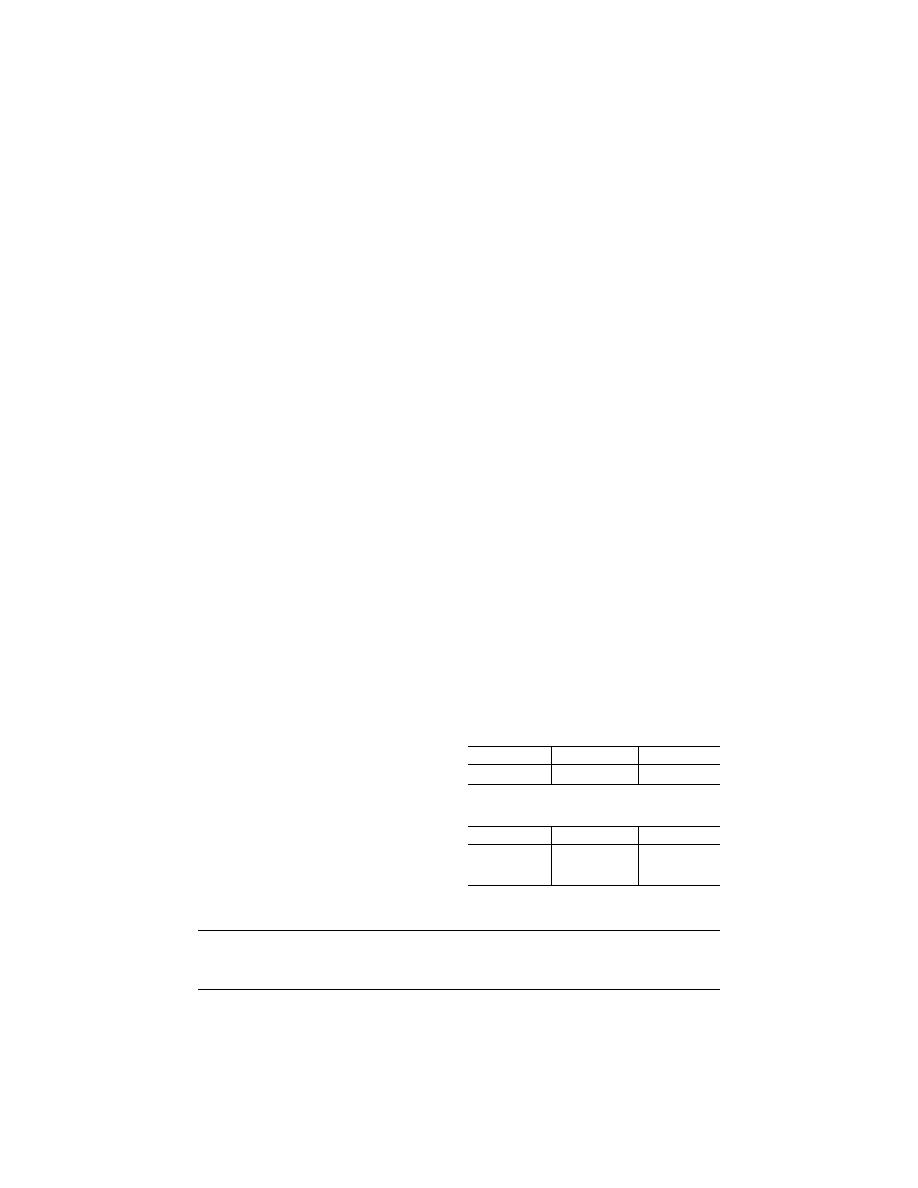
825
Federal Aviation Administration, DOT
§ 91.1707
(xxi) Instrument landing system
(ILS) and missed approach ;
(xxii) Two engine missed approach;
(xxiii) One engine inoperative ILS
and missed approach;
(xxiv) One engine inoperative missed
approach;
(xxv) Non-precision and missed ap-
proach;
(xxvi) Non-precision continuous de-
scent final approach and missed ap-
proach;
(xxvii) One engine inoperative non-
precision and missed approach;
(xxviii) One engine inoperative non-
precision CDFA and missed approach;
(xxix) Circling approach at weather
minimums;
(xxx) One engine inoperative circling
approach at weather minimums.
(3) Flight training must include a
final phase check sufficient to docu-
ment pilot proficiency in the flight
training maneuver profiles at the com-
pletion of training; and
(4) Differences training for applicable
MU–2B model variants sufficient to en-
sure pilot proficiency in each model op-
erated. Current MU–2B differences re-
quirements are specified in § 91.1707(c).
A person must complete Differences
training if a person operates more than
one MU–2B model as specified in
§ 91.1707(c). Differences training be-
tween the factory type design K and M
models of the MU–2B airplane, and the
factory type design J and L models of
the MU–2B airplane, may be accom-
plished with Level A training. All
other factory type design differences
training must be accomplished with
Level B training unless otherwise spec-
ified in § 91.1707(c) . A Level A or B dif-
ferences training is not a recurring an-
nual requirement. Once a person has
completed Initial Level A or B Dif-
ferences training between the applica-
ble different models, no additional dif-
ferences training between those models
is required.
(5) Icing training sufficient to ensure
pilot knowledge and safe operation of
the MU–2B aircraft in icing conditions
as established by the FAA;
(6) Ground and flight training pro-
grams must include training hours
identified by § 91.1707(a) for ground in-
struction, § 91.1707(b) for flight instruc-
tion, and § 91.1707(c) for differences
training.
(i) No training credit is given for sec-
ond-in-command training and no credit
is given for right seat time under this
program. Only the sole manipulator of
the controls of the MU–2B airplane,
flight training device, or Level C or D
simulator can receive training credit
under this program;
(ii) An MU–2B airplane must be oper-
ated in accordance with an FAA ap-
proved MU–2B training program that
meets the standards of this subpart and
the training hours in § 91.1707.
(7) Endorsements given for compli-
ance with paragraph (f) of this section
must be appropriate to the content of
that specific MU–2B training program’s
compliance with standards of this sub-
part.
§ 91.1707
Training program hours.
(a) Ground instruction hours are list-
ed in the following table:
Initial/transition Requalification
Recurrent
20 hours ...............
12 hours ...............
8 hours.
(b) Flight instruction hours are listed
in the following table:
Initial/transition Requalification
Recurrent
12 hours with a
minimum of 6
hours at level E.
8 hours level C or
level E.
4 hours at level E,
or 6 hours at
level C.
(c) Differences training hours are
listed in the following table:
2 factory type design models concurrently ......................
1.5 hours required at level B.
More than 2 factory type design models concurrently ....
3 hours at level B.
Each additional factory type design model added sepa-
rately.
1.5 hours at level B.
(d) Definitions of levels of training as
used in this subpart:
(1) LEVEL A Training—Training that
is conducted through self-instruction
by the pilot.
VerDate Sep<11>2014
14:00 Mar 14, 2024
Jkt 262047
PO 00000
Frm 00835
Fmt 8010
Sfmt 8010
Q:\14\14V2.TXT
PC31
aworley on LAPBH6H6L3 with DISTILLER

826
14 CFR Ch. I (1–1–24 Edition)
§ 91.1709
(2) LEVEL B Training—Training that
is conducted in the classroom environ-
ment with the aid of a qualified in-
structor who meets the requirements
of this subpart.
(3) LEVEL C Training—Training that
is accomplished in an FAA-approved
Level 5 or 6 flight training device. In
addition to the basic FTD require-
ments, the FTD must be representative
of the MU–2B cockpit controls and be
specifically approved by the FAA for
the MU–2B airplane.
(4) Level E Training—Training that
must be accomplished in the MU–2B
airplane, Level C simulator, or Level D
simulator.
§ 91.1709
Training program approval.
To obtain approval for an MU–2B
training program, training providers
must submit a proposed training pro-
gram to the Administrator.
(a) Only training programs approved
by the Administrator may be used to
satisfy the standards of this subpart.
(b) For part 91 training providers,
training programs will be approved for
24 months, unless sooner superseded or
rescinded.
(c) The Administrator may require
revision of an approved MU–2B training
program at any time.
(d) A training provider must present
its approved training program and FAA
approval documentation to any rep-
resentative of the Administrator, upon
request.
§ 91.1711
Aeronautical experience.
No person may act as a pilot in com-
mand of a Mitsubishi MU–2B series air-
plane for the purpose of flight unless
that person holds an airplane category
and multi-engine land class rating, and
has logged a minimum of 100 flight
hours of PIC time in multi-engine air-
planes.
§ 91.1713
Instruction, checking, and
evaluation.
(a)
Flight Instructor (Airplane). No
flight instructor may provide instruc-
tion or conduct a flight review in a
Mitsubishi MU–2B series airplane un-
less that flight instructor
(1) Meets the pilot training and docu-
mentation requirements of § 91.1705 be-
fore giving flight instruction in the
Mitsubishi MU–2B series airplane;
(2) Meets the currency requirements
of §§ 91.1715(a) and 91.1715(c)
(3) Has a minimum total pilot time of
2,000 pilot-in-command hours and 800
pilot-in-command hours in multiengine
airplanes; and
(4) Has:
(i) 300 pilot-in-command hours in the
Mitsubishi MU–2B series airplane, 50
hours of which must have been within
the preceding 12 months; or
(ii) 100 pilot-in-command hours in the
Mitsubishi MU–2B series airplane, 25
hours of which must have been within
the preceding 12 months, and 300 hours
providing instruction in a FAA-ap-
proved Mitsubishi MU–2B simulator or
FAA-approved Mitsubishi MU–2B flight
training device, 25 hours of which must
have been within the preceding 12
months.
(b)
Flight Instructor (Simulator/Flight
Training Device). No flight instructor
may provide instruction for the
Mitsubishi MU–2B series airplane un-
less that instructor meets the require-
ments of this paragraph—
(1) Each flight instructor who pro-
vides flight training for the Mitsubishi
MU–2B series airplane must meet the
pilot training and documentation re-
quirements of § 91.1705 before giving
flight instruction for the Mitsubishi
MU–2B series airplane;
(2) Each flight instructor who pro-
vides flight training for the Mitsubishi
MU–2B series airplane must meet the
currency requirements of § 91.1715(c) be-
fore giving flight instruction for the
Mitsubishi MU–2B series airplane;
(3) Each flight instructor who pro-
vides flight training for the Mitsubishi
MU–2B series airplane must have:
(i) A minimum total pilot time of
2000 pilot–in-command hours and 800
pilot-in-command hours in multiengine
airplanes; and
(ii) Within the preceding 12 months,
either 50 hours of Mitsubishi MU–2B se-
ries airplane pilot-in-command experi-
ence or 50 hours providing simulator or
flight training device instruction for
the Mitsubishi MU–2B.
(c)
Checking and evaluation. No person
may provide checking or evaluation for
the Mitsubishi MU–2B series airplane
VerDate Sep<11>2014
14:00 Mar 14, 2024
Jkt 262047
PO 00000
Frm 00836
Fmt 8010
Sfmt 8010
Q:\14\14V2.TXT
PC31
aworley on LAPBH6H6L3 with DISTILLER

827
Federal Aviation Administration, DOT
§ 91.1717
unless that person meets the require-
ments of this paragraph—
(1) For the purpose of checking, des-
ignated pilot examiners, training cen-
ter evaluators, and check airmen must
have completed the appropriate train-
ing in the Mitsubishi MU–2B series air-
plane in accordance with § 91.1705;
(2) For checking conducted in the
Mitsubishi MU–2B series airplane, each
designated pilot examiner and check
airman must have 100 hours pilot-in-
command flight time in the Mitsubishi
MU–2B series airplane and maintain
currency in accordance with § 91.1715.
§ 91.1715
Currency requirements and
flight review.
(a) The takeoff and landing currency
requirements of § 61.57 of this chapter
must be maintained in the Mitsubishi
MU–2B series airplane. Takeoff and
landings in other multiengine air-
planes do not meet the takeoff and
landing currency requirements for the
Mitsubishi MU–2B series plane. Takeoff
and landings in either the short-body
or long-body Mitsubishi MU–2B model
airplane may be credited toward take-
off and landing currency for both
Mitsubishi MU–2B model groups.
(b) Instrument experience obtained in
other category and class of aircraft
may be used to satisfy the instrument
currency requirements of § 61.57 of this
chapter for the Mitsubishi MU–2B se-
ries airplane.
(c) Satisfactory completion of a
flight review to satisfy the require-
ments of § 61.56 of this chapter is valid
for operation of a Mitsubishi MU–2B se-
ries airplane only if that flight review
is conducted in a Mitsubishi MU–2B se-
ries airplane or an MU–2B Simulator
approved for landings with an approved
course conducted under part 142 of this
chapter. The flight review for
Mitsubishi MU–2B series airplanes
must include the
Special Emphasis
Items, and all items listed in the Train-
ing Course Final Phase Check in accord-
ance with an approved MU–2B Training
Program.
(d) A person who successfully com-
pletes the Initial/transition, Requali-
fication, or Recurrent training require-
ments under § 91.1705 of this chapter
also meet the requirements of § 61.56 of
this chapter and need not accomplish a
separate flight review provided that at
least 1 hour of the flight training was
conducted in the Mitsubishi MU–2B se-
ries airplane or an MU–2B Simulator
approved for landings with an approved
course conducted under part 142 of this
chapter.
[Docket FAA–2006–24981, Amdt. 91–344, 81 FR
61591, Sept. 7, 2016; Amdt. 91–344A, 82 FR
21472, May 9, 2017]
§ 91.1717
Operating requirements.
(a) Except as provided in paragraph
(b) of this section, no person may oper-
ate a Mitsubishi MU–2B airplane in sin-
gle pilot operations unless that air-
plane has a functional autopilot.
(b) A person may operate a
Mitsubishi MU–2B airplane in single
pilot operations without a functional
autopilot when—
(1) Operating under day visual flight
rule requirements; or
(2) Authorized under a FAA approved
minimum equipment list for that air-
plane, operating under instrument
flight rule requirements in daytime
visual meteorological conditions.
(c) No person may operate a
Mitsubishi MU–2B series airplane un-
less a copy of the appropriate
Mitsubishi Heavy Industries MU–2B
Airplane Flight Manual is carried on
board the airplane and is accessible
during each flight at the pilot station.
(d) No person may operate a
Mitsubishi MU–2B series airplane un-
less an MU–2B series airplane check-
list, appropriate for the model being
operated and accepted by the Federal
Aviation Administration MU–2B Flight
Standardization Board, is accessible for
each flight at the pilot station and is
used by the flight crewmembers when
operating the airplane.
(e) No person may operate a
Mitsubishi MU–2B series airplane con-
trary to the standards of this subpart.
(f) If there are any differences be-
tween the training and operating re-
quirements of this subpart and the
MU–2B Airplane Flight Manual’s proce-
dures sections (Normal, Abnormal, and
Emergency) and the MU–2B airplane
series checklist incorporated by ref-
erence in § 91.1721, the person operating
the airplane must operate the airplane
in accordance with the training speci-
fied in this subpart.
VerDate Sep<11>2014
14:00 Mar 14, 2024
Jkt 262047
PO 00000
Frm 00837
Fmt 8010
Sfmt 8010
Q:\14\14V2.TXT
PC31
aworley on LAPBH6H6L3 with DISTILLER

828
14 CFR Ch. I (1–1–24 Edition)
§ 91.1719
§ 91.1719
Credit for prior training.
Initial/transition, requalification, re-
current or Level B differences training
conducted prior to November 7, 2016,
compliant with SFAR No. 108, Section
3 of this part, is considered to be com-
pliant with this subpart, if the student
met the eligibility requirements for
the applicable category of training and
the student’s instructor met the expe-
rience requirements of this subpart.
§ 91.1721
Incorporation by reference.
(a) The Mitsubishi Heavy Industries
MU–2B Cockpit Checklists are incor-
porated by reference into this part. The
Director of the Federal Register ap-
proved this incorporation by reference
in accordance with 5 U.S.C. 552(a) and 1
CFR part 51. All approved material is
available for inspection at U.S. Depart-
ment of Transportation, Docket Man-
agement Facility, Room W 12–140, West
Building Ground Floor, 1200 New Jer-
sey Ave. SE., Washington, DC 20590–
0001, or at the National Archives and
Records Administration, call 202–741–
6030, or go to:
http://www.archives.gov/
federal
_
register/
code
_
of
_
federal
_
regulations/
ibr
_
locations.html.
(b) Mitsubishi Heavy Industries
America, Inc., 4951 Airport Parkway,
Suite 530, Addison, TX 75001.
(1) Mitsubishi Heavy Industries MU–
2B Checklists:
(i) Cockpit Checklist, Model MU–2B–
60, Type Certificate A10SW, MHI Docu-
ment No. YET06220C, accepted by FSB
on February 12, 2007.
(ii) Cockpit Checklist, Model MU–2B–
40, Type Certificate A10SW, MHI Docu-
ment No. YET06256A, accepted by FSB
on February 12, 2007.
(iii) Cockpit Checklist, Model MU–
2B–36A, Type Certificate A10SW, MHI
Document No. YET06257B, accepted by
FSB on February 12, 2007.
(iv) Cockpit Checklist, Model MU–2B–
36, Type Certificate A2PC, MHI Docu-
ment No. YET06252B, accepted by FSB
on February 12, 2007.
(v) Cockpit Checklist, Model MU–2B–
35, Type Certificate A2PC, MHI Docu-
ment No. YET06251B, accepted by FSB
on February 12, 2007.
(vi) Cockpit Checklist, Model MU–2B–
30, Type Certificate A2PC, MHI Docu-
ment No. YET06250A, accepted by FSB
on March 2, 2007.
(vii) Cockpit Checklist, Model MU–
2B–26A, Type Certificate A10SW, MHI
Document No. YET06255A, accepted by
FSB on February 12, 2007.
(viii) Cockpit Checklist, Model MU–
2B–26, Type Certificate A2PC, MHI Doc-
ument No. YET06249A, accepted by
FSB on March 2, 2007.
(ix) Cockpit Checklist, Model MU–2B–
26, Type Certificate A10SW, MHI Docu-
ment No. YET06254A, accepted by FSB
on March 2, 2007.
(x) Cockpit Checklist, Model MU–2B–
25, Type Certificate A10SW, MHI Docu-
ment No. YET06253A, accepted by FSB
on March 2, 2007.
(xi) Cockpit Checklist, Model MU–2B–
25, Type Certificate A2PC, MHI Docu-
ment No. YET06248A, accepted by FSB
on March 2, 2007.
(xii) Cockpit Checklist, Model MU–
2B–20, Type Certificate A2PC, MHI Doc-
ument No. YET06247A, accepted by
FSB on February 12, 2007.
(xiii)–(xiv) [Reserved]
(xv) Cockpit Checklist, Model MU–
2B–15, Type Certificate A2PC, MHI Doc-
ument No. YET06246A, accepted by
FSB on March 2, 2007.
(xvi) Cockpit Checklist, Model MU–
2B–10, Type Certificate A2PC, MHI Doc-
ument No. YET06245A, accepted by
FSB on March 2, 2007.
(xvii) Cockpit Checklist, Model MU–
2B, Type Certificate A2PC, MHI Docu-
ment No. YET06244A, accepted by FSB
on March 2, 2007.
(2) [Reserved]
[Docket FAA–2006–24981, Amdt. 91–344, 81 FR
61591, Sept. 7, 2016; Amdt. 91–344A, 82 FR
21472, May 9, 2017]
A
PPENDIX
A
TO
P
ART
91—C
ATEGORY
II
O
PERATIONS
: M
ANUAL
, I
NSTRU
-
MENTS
, E
QUIPMENT
,
AND
M
AINTE
-
NANCE
1. Category II Manual
(a)
Application for approval. An applicant
for approval of a Category II manual or an
amendment to an approved Category II man-
ual must submit the proposed manual or
amendment to the responsible Flight Stand-
ards office. If the application requests an
evaluation program, it must include the fol-
lowing:
VerDate Sep<11>2014
14:00 Mar 14, 2024
Jkt 262047
PO 00000
Frm 00838
Fmt 8010
Sfmt 8002
Q:\14\14V2.TXT
PC31
aworley on LAPBH6H6L3 with DISTILLER

829
Federal Aviation Administration, DOT
Pt. 91, App. A
(1) The location of the aircraft and the
place where the demonstrations are to be
conducted; and
(2) The date the demonstrations are to
commence (at least 10 days after filing the
application).
(b)
Contents. Each Category II manual
must contain:
(1) The registration number, make, and
model of the aircraft to which it applies;
(2) A maintenance program as specified in
section 4 of this appendix; and
(3) The procedures and instructions related
to recognition of decision height, use of run-
way visual range information, approach
monitoring, the decision region (the region
between the middle marker and the decision
height), the maximum permissible devi-
ations of the basic ILS indicator within the
decision region, a missed approach, use of
airborne low approach equipment, minimum
altitude for the use of the autopilot, instru-
ment and equipment failure warning sys-
tems, instrument failure, and other proce-
dures, instructions, and limitations that
may be found necessary by the Adminis-
trator.
2. Required Instruments and Equipment
The instruments and equipment listed in
this section must be installed in each air-
craft operated in a Category II operation.
This section does not require duplication of
instruments and equipment required by
§ 91.205 or any other provisions of this chap-
ter.
(a)
Group I. (1) Two localizer and glide
slope receiving systems. Each system must
provide a basic ILS display and each side of
the instrument panel must have a basic ILS
display. However, a single localizer antenna
and a single glide slope antenna may be used.
(2) A communications system that does not
affect the operation of at least one of the
ILS systems.
(3) A marker beacon receiver that provides
distinctive aural and visual indications of
the outer and the middle markers.
(4) Two gyroscopic pitch and bank indi-
cating systems.
(5) Two gyroscopic direction indicating
systems.
(6) Two airspeed indicators.
(7) Two sensitive altimeters adjustable for
barometric pressure, each having a placarded
correction for altimeter scale error and for
the wheel height of the aircraft. After June
26, 1979, two sensitive altimeters adjustable
for barometric pressure, having markings at
20-foot intervals and each having a placarded
correction for altimeter scale error and for
the wheel height of the aircraft.
(8) Two vertical speed indicators.
(9) A flight control guidance system that
consists of either an automatic approach
coupler or a flight director system. A flight
director system must display computed in-
formation as steering command in relation
to an ILS localizer and, on the same instru-
ment, either computed information as pitch
command in relation to an ILS glide slope or
basic ILS glide slope information. An auto-
matic approach coupler must provide at
least automatic steering in relation to an
ILS localizer. The flight control guidance
system may be operated from one of the re-
ceiving systems required by subparagraph (1)
of this paragraph.
(10) For Category II operations with deci-
sion heights below 150 feet either a marker
beacon receiver providing aural and visual
indications of the inner marker or a radio al-
timeter.
(b)
Group II. (1) Warning systems for imme-
diate detection by the pilot of system faults
in items (1), (4), (5), and (9) of Group I and, if
installed for use in Category III operations,
the radio altimeter and autothrottle system.
(2) Dual controls.
(3) An externally vented static pressure
system with an alternate static pressure
source.
(4) A windshield wiper or equivalent means
of providing adequate cockpit visibility for a
safe visual transition by either pilot to
touchdown and rollout.
(5) A heat source for each airspeed system
pitot tube installed or an equivalent means
of preventing malfunctioning due to icing of
the pitot system.
3. Instruments and Equipment Approval
(a)
General. The instruments and equip-
ment required by section 2 of this appendix
must be approved as provided in this section
before being used in Category II operations.
Before presenting an aircraft for approval of
the instruments and equipment, it must be
shown that since the beginning of the 12th
calendar month before the date of submis-
sion—
(1) The ILS localizer and glide slope equip-
ment were bench checked according to the
manufacturer’s instructions and found to
meet those standards specified in RTCA
Paper 23–63/DO–117 dated March 14, 1963,
‘‘Standard Adjustment Criteria for Airborne
Localizer and Glide Slope Receivers,’’ which
may be obtained from the RTCA Secretariat,
1425 K St., NW., Washington, DC 20005.
(2) The altimeters and the static pressure
systems were tested and inspected in accord-
ance with appendix E to part 43 of this chap-
ter; and
(3) All other instruments and items of
equipment specified in section 2(a) of this ap-
pendix that are listed in the proposed main-
tenance program were bench checked and
found to meet the manufacturer’s specifica-
tions.
(b)
Flight control guidance system. All com-
ponents of the flight control guidance sys-
tem must be approved as installed by the
evaluation program specified in paragraph
VerDate Sep<11>2014
14:00 Mar 14, 2024
Jkt 262047
PO 00000
Frm 00839
Fmt 8010
Sfmt 8002
Q:\14\14V2.TXT
PC31
aworley on LAPBH6H6L3 with DISTILLER

830
14 CFR Ch. I (1–1–24 Edition)
Pt. 91, App. A
(e) of this section if they have not been ap-
proved for Category III operations under ap-
plicable type or supplemental type certifi-
cation procedures. In addition, subsequent
changes to make, model, or design of the
components must be approved under this
paragraph. Related systems or devices, such
as the autothrottle and computed missed ap-
proach guidance system, must be approved in
the same manner if they are to be used for
Category II operations.
(c)
Radio altimeter. A radio altimeter must
meet the performance criteria of this para-
graph for original approval and after each
subsequent alteration.
(1) It must display to the flight crew clear-
ly and positively the wheel height of the
main landing gear above the terrain.
(2) It must display wheel height above the
terrain to an accuracy of plus or minus 5 feet
or 5 percent, whichever is greater, under the
following conditions:
(i) Pitch angles of zero to plus or minus 5
degrees about the mean approach attitude.
(ii) Roll angles of zero to 20 degrees in ei-
ther direction.
(iii) Forward velocities from minimum ap-
proach speed up to 200 knots.
(iv) Sink rates from zero to 15 feet per sec-
ond at altitudes from 100 to 200 feet.
(3) Over level ground, it must track the ac-
tual altitude of the aircraft without signifi-
cant lag or oscillation.
(4) With the aircraft at an altitude of 200
feet or less, any abrupt change in terrain
representing no more than 10 percent of the
aircraft’s altitude must not cause the altim-
eter to unlock, and indicator response to
such changes must not exceed 0.1 seconds
and, in addition, if the system unlocks for
greater changes, it must reacquire the signal
in less than 1 second.
(5) Systems that contain a push-to-test
feature must test the entire system (with or
without an antenna) at a simulated altitude
of less than 500 feet.
(6) The system must provide to the flight
crew a positive failure warning display any
time there is a loss of power or an absence of
ground return signals within the designed
range of operating altitudes.
(d)
Other instruments and equipment. All
other instruments and items of equipment
required by § 2 of this appendix must be capa-
ble of performing as necessary for Category
II operations. Approval is also required after
each subsequent alteration to these instru-
ments and items of equipment.
(e)
Evaluation program—(1) Application. Ap-
proval by evaluation is requested as a part of
the application for approval of the Category
II manual.
(2)
Demonstrations. Unless otherwise au-
thorized by the Administrator, the evalua-
tion program for each aircraft requires the
demonstrations specified in this paragraph.
At least 50 ILS approaches must be flown
with at least five approaches on each of
three different ILS facilities and no more
than one half of the total approaches on any
one ILS facility. All approaches shall be
flown under simulated instrument conditions
to a 100-foot decision height and 90 percent of
the total approaches made must be success-
ful. A successful approach is one in which—
(i) At the 100-foot decision height, the indi-
cated airspeed and heading are satisfactory
for a normal flare and landing (speed must be
plus or minus 5 knots of programmed air-
speed, but may not be less than computed
threshold speed if autothrottles are used);
(ii) The aircraft at the 100-foot decision
height, is positioned so that the cockpit is
within, and tracking so as to remain within,
the lateral confines of the runway extended;
(iii) Deviation from glide slope after leav-
ing the outer marker does not exceed 50 per-
cent of full-scale deflection as displayed on
the ILS indicator;
(iv) No unusual roughness or excessive at-
titude changes occur after leaving the mid-
dle marker; and
(v) In the case of an aircraft equipped with
an approach coupler, the aircraft is suffi-
ciently in trim when the approach coupler is
disconnected at the decision height to allow
for the continuation of a normal approach
and landing.
(3)
Records. During the evaluation program
the following information must be main-
tained by the applicant for the aircraft with
respect to each approach and made available
to the Adninistrator upon request:
(i) Each deficiency in airborne instruments
and equipment that prevented the initiation
of an approach.
(ii) The reasons for discontinuing an ap-
proach, including the altitude above the run-
way at which it was discontinued.
(iii) Speed control at the 100-foot decision
height if auto throttles are used.
(iv) Trim condition of the aircraft upon
disconnecting the auto coupler with respect
to continuation to flare and landing.
(v) Position of the aircraft at the middle
marker and at the decision height indicated
both on a diagram of the basic ILS display
and a diagram of the runway extended to the
middle marker. Estimated touchdown point
must be indicated on the runway diagram.
(vi) Compatibility of flight director with
the auto coupler, if applicable.
(vii) Quality of overall system perform-
ance.
(4)
Evaluation. A final evaluation of the
flight control guidance system is made upon
successful completion of the demonstrations.
If no hazardous tendencies have been dis-
played or are otherwise known to exist, the
system is approved as installed.
4. Maintenance program
(a) Each maintenance program must con-
tain the following:
VerDate Sep<11>2014
14:00 Mar 14, 2024
Jkt 262047
PO 00000
Frm 00840
Fmt 8010
Sfmt 8002
Q:\14\14V2.TXT
PC31
aworley on LAPBH6H6L3 with DISTILLER

831
Federal Aviation Administration, DOT
Pt. 91, App. D
(1) A list of each instrument and item of
equipment specified in § 2 of this appendix
that is installed in the aircraft and approved
for Category II operations, including the
make and model of those specified in § 2(a).
(2) A schedule that provides for the per-
formance of inspections under subparagraph
(5) of this paragraph within 3 calendar
months after the date of the previous inspec-
tion. The inspection must be performed by a
person authorized by part 43 of this chapter,
except that each alternate inspection may be
replaced by a functional flight check. This
functional flight check must be performed
by a pilot holding a Category II pilot author-
ization for the type aircraft checked.
(3) A schedule that provides for the per-
formance of bench checks for each listed in-
strument and item of equipment that is spec-
ified in section 2(a) within 12 calendar
months after the date of the previous bench
check.
(4) A schedule that provides for the per-
formance of a test and inspection of each
static pressure system in accordance with
appendix E to part 43 of this chapter within
12 calendar months after the date of the pre-
vious test and inspection.
(5) The procedures for the performance of
the periodic inspections and functional flight
checks to determine the ability of each list-
ed instrument and item of equipment speci-
fied in section 2(a) of this appendix to per-
form as approved for Category II operations
including a procedure for recording func-
tional flight checks.
(6) A procedure for assuring that the pilot
is informed of all defects in listed instru-
ments and items of equipment.
(7) A procedure for assuring that the condi-
tion of each listed instrument and item of
equipment upon which maintenance is per-
formed is at least equal to its Category II ap-
proval condition before it is returned to serv-
ice for Category II operations.
(8) A procedure for an entry in the mainte-
nance records required by § 43.9 of this chap-
ter that shows the date, airport, and reasons
for each discontinued Category II operation
because of a malfunction of a listed instru-
ment or item of equipment.
(b)
Bench check. A bench check required by
this section must comply with this para-
graph.
(1) It must be performed by a certificated
repair station holding one of the following
ratings as appropriate to the equipment
checked:
(i) An instrument rating.
(ii) A radio rating.
(2) It must consist of removal of an instru-
ment or item of equipment and performance
of the following:
(i) A visual inspection for cleanliness, im-
pending failure, and the need for lubrication,
repair, or replacement of parts;
(ii) Correction of items found by that vis-
ual inspection; and
(iii) Calibration to at least the manufac-
turer’s specifications unless otherwise speci-
fied in the approved Category II manual for
the aircraft in which the instrument or item
of equipment is installed.
(c)
Extensions. After the completion of one
maintenance cycle of 12 calendar months, a
request to extend the period for checks,
tests, and inspections is approved if it is
shown that the performance of particular
equipment justifies the requested extension.
[Doc. No. 18334, 54 FR 34325, Aug. 18, 1989, as
amended by Amdt. 91–269, 66 FR 41116, Aug. 6,
2001; Docket FAA–2018–0119, Amdt. 91–350, 83
FR 9172, Mar. 5, 2018]
A
PPENDIXES
B—C [R
ESERVED
]
A
PPENDIX
D
TO
P
ART
91—A
IRPORTS
/L
O
-
CATIONS
: S
PECIAL
O
PERATING
R
E
-
STRICTIONS
Section 1. Locations at which the require-
ments of § 91.215(b)(2) and § 91.225(d)(2) apply.
The requirements of §§ 91.215(b)(2) and
91.225(d)(2) apply below 10,000 feet MSL with-
in a 30-nautical-mile radius of each location
in the following list.
Atlanta, GA (Hartsfield-Jackson Atlanta
International Airport)
Baltimore, MD (Baltimore/Washington Inter-
national Thurgood Marshall Airport)
Boston, MA (General Edward Lawrence
Logan International Airport)
Camp Springs, MD (Joint Base Andrews)
Chantilly, VA (Washington Dulles Inter-
national Airport)
Charlotte, NC (Charlotte/Douglas Inter-
national Airport)
Chicago, IL (Chicago-O’Hare International
Airport)
Cleveland, OH (Cleveland-Hopkins Inter-
national Airport)
Covington, KY (Cincinnati/Northern Ken-
tucky International Airport)
Dallas, TX (Dallas/Fort Worth International
Airport)
Denver, CO (Denver International Airport)
Detroit, MI (Detroit Metropolitan Wayne
County Airport)
Honolulu, HI (Honolulu International Air-
port)
Houston, TX (George Bush Intercontinental/
Houston Airport)
Houston, TX (William P. Hobby Airport)
Kansas City, MO (Kansas City International
Airport)
Las Vegas, NV (McCarran International Air-
port)
Los Angeles, CA (Los Angeles International
Airport)
Memphis, TN (Memphis International Air-
port)
Miami, FL (Miami International Airport)
VerDate Sep<11>2014
14:00 Mar 14, 2024
Jkt 262047
PO 00000
Frm 00841
Fmt 8010
Sfmt 8002
Q:\14\14V2.TXT
PC31
aworley on LAPBH6H6L3 with DISTILLER

832
14 CFR Ch. I (1–1–24 Edition)
Pt. 91, App. D
Minneapolis, MN (Minneapolis-St. Paul
International/Wold-Chamberlain Airport)
Newark, NJ (Newark Liberty International
Airport)
New Orleans, LA (Louis Armstrong New Or-
leans International Airport)
New York, NY (John F. Kennedy Inter-
national Airport)
New York, NY (LaGuardia Airport)
Orlando, FL (Orlando International Airport)
Philadelphia, PA (Philadelphia International
Airport)
Phoenix, AZ (Phoenix Sky Harbor Inter-
national Airport)
Pittsburgh, PA (Pittsburgh International
Airport)
St. Louis, MO (Lambert-St. Louis Inter-
national Airport)
Salt Lake City, UT (Salt Lake City Inter-
national Airport)
San Diego, CA (Miramar Marine Corps Air
Station)
San Diego, CA (San Diego International Air-
port)
San Francisco, CA (San Francisco Inter-
national Airport)
Seattle, WA (Seattle-Tacoma International
Airport)
Tampa, FL (Tampa International Airport)
Washington, DC (Ronald Reagan Washington
National Airport)
Section 2. Airports at which the require-
ments of § 91.215(b)(5)(ii) apply. [Reserved]
Section 3. Locations at which fixed-wing
Special VFR operations are prohibited.
The Special VFR weather minimums of
§ 91.157 do not apply to the following air-
ports:
Atlanta, GA (Hartsfield-Jackson Atlanta
International Airport)
Baltimore, MD (Baltimore/Washington Inter-
national Thurgood Marshall Airport)
Boston, MA (General Edward Lawrence
Logan International Airport)
Buffalo, NY (Greater Buffalo International
Airport)
Camp Springs, MD (Joint Base Andrews)
Chicago, IL (Chicago-O’Hare International
Airport)
Cleveland, OH (Cleveland-Hopkins Inter-
national Airport)
Columbus, OH (Port Columbus International
Airport)
Covington, KY (Cincinnati/Northern Ken-
tucky International Airport)
Dallas, TX (Dallas/Fort Worth International
Airport)
Dallas, TX (Dallas Love Field Airport)
Denver, CO (Denver International Airport)
Detroit, MI (Detroit Metropolitan Wayne
County Airport)
Honolulu, HI (Honolulu International Air-
port)
Houston, TX (George Bush Intercontinental/
Houston Airport)
Indianapolis, IN (Indianapolis International
Airport)
Los Angeles, CA (Los Angeles International
Airport)
Louisville, KY (Louisville International Air-
port-Standiford Field)
Memphis, TN (Memphis International Air-
port)
Miami, FL (Miami International Airport)
Minneapolis, MN (Minneapolis-St. Paul
International/Wold-Chamberlain Airport)
Newark, NJ (Newark Liberty International
Airport)
New York, NY (John F. Kennedy Inter-
national Airport)
New York, NY (LaGuardia Airport)
New Orleans, LA (Louis Armstrong New Or-
leans International Airport)
Philadelphia, PA (Philadelphia International
Airport)
Pittsburgh, PA (Pittsburgh International
Airport)
Portland, OR (Portland International Air-
port)
San Francisco, CA (San Francisco Inter-
national Airport)
Seattle, WA (Seattle-Tacoma International
Airport)
St. Louis, MO (Lambert-St. Louis Inter-
national Airport)
Tampa, FL (Tampa International Airport)
Washington, DC (Ronald Reagan Washington
National Airport)
Section 4. Locations at which solo student,
sport, and recreational pilot activity is not
permitted.
Pursuant to § 91.131(b)(2), solo student,
sport, and recreational pilot operations are
not permitted at any of the following air-
ports.
Atlanta, GA (Hartsfield-Jackson Atlanta
International Airport)
Boston, MA (General Edward Lawrence
Logan International Airport)
Camp Springs, MD (Joint Base Andrews)
Chicago, IL (Chicago-O’Hare International
Airport)
Dallas, TX (Dallas/Fort Worth International
Airport)
Los Angeles, CA (Los Angeles International
Airport)
Miami, FL (Miami International Airport)
Newark, NJ (Newark Liberty International
Airport)
New York, NY (John F. Kennedy Inter-
national Airport)
New York, NY (LaGuardia Airport)
San Francisco, CA (San Francisco Inter-
national Airport)
Washington, DC (Ronald Reagan Washington
National Airport)
[Amdt. 91–227, 56 FR 65661, Dec. 17, 1991]
E
DITORIAL
N
OTE
: For F
EDERAL
R
EGISTER
ci-
tations affecting appendix D to part 91, see
the List of CFR Sections Affected, which ap-
pears in the Finding Aids section of the
printed volume and at
www.govinfo.gov.
VerDate Sep<11>2014
14:00 Mar 14, 2024
Jkt 262047
PO 00000
Frm 00842
Fmt 8010
Sfmt 8002
Q:\14\14V2.TXT
PC31
aworley on LAPBH6H6L3 with DISTILLER

833
Federal Aviation Administration, DOT
Pt. 91, App. E
E
FFECTIVE
D
ATE
N
OTE
: By Amdt. 91–236, 59
FR 2918, Jan. 19, 1994, as corrected by Amdt.
91–237, 59 FR 6547, Feb. 11, 1994, appendix D to
part 91 was amended in sections 1 and 3 in
the Denver, CO, entry by revising
‘‘Stapleton’’ to read ‘‘Denver’’ effective Mar.
9, 1994. By Amdt. 91–238, 59 FR 10958, Mar. 9,
1994, the effective date was delayed to May
15, 1994. By Amdt. 91–241, 59 FR 24916, May 13,
1994, the effective date was suspended indefi-
nitely.
A
PPENDIX
E
TO
P
ART
91—A
IRPLANE
F
LIGHT
R
ECORDER
S
PECIFICATIONS
Parameters Range
Installed system
1
min-
imum accuracy (to recov-
ered data)
Sampling interval (per
second)
Resolution
4
read out
Relative Time (From
Recorded on Prior
to Takeoff).
8 hr minimum ..................
±
0.125% per hour ............
1 .................................
1 sec.
Indicated Airspeed .....
Vso to VD (KIAS) ............
±
5% or
±
10 kts., which-
ever is greater. Resolu-
tion 2 kts. below 175
KIAS.
1 .................................
1%
3
Altitude .......................
¥
1,000 ft. to max cert.
alt. of A/C.
±
100 to
±
700 ft. (see
Table 1, TSO C51–a).
1 .................................
25 to 150 ft.
Magnetic Heading .....
360
°
.................................
±
5
°
...................................
1 .................................
1
°
Vertical Acceleration ..
¥
3g to + 6g ....................
±
0.2g in addition to
±
0.3g
maximum datum.
4 (or 1 per second
where peaks, ref. to
1g are recorded).
0.03g.
Longitudinal Accelera-
tion.
±
1.0g ................................
±
1.5% max. range ex-
cluding datum error of
±
5%.
2 .................................
0.01g.
Pitch Attitude .............
100% of usable ...............
±
2
°
...................................
1 .................................
0.8
°
Roll Attitude ...............
±
60
°
or 100% of usable
range, whichever is
greater.
±
2
°
...................................
1 .................................
0.8
°
Stabilizer Trim Posi-
tion, or.
Full Range .......................
±
3% unless higher
uniquely required.
1 .................................
1%
3
Pitch Control Posi-
tion
5
.
Engine Power, Each
Engine:
Full Range .......................
±
3% unless higher
uniquely required.
1 .................................
1%
3
Fan or N
1
Speed
or EPR or
Cockpit indica-
tions Used for
Aircraft Certifi-
cation OR.
Maximum Range .............
±
5% .................................
1 .................................
1%
3
Prop. speed and
Torque (Sam-
ple Once/Sec
as Close to-
gether as Prac-
ticable).
..........................................
..........................................
1 (prop Speed) ..........
1 (torque) ...................
1%
3
1%
3
Altitude Rate
2
(need
depends on altitude
resolution).
±
8,000 fpm ......................
±
10%. Resolution 250
fpm below 12,000 ft. in-
dicated.
1 .................................
250 fpm. below
12,000
Angle of Attack
2
(need depends on
altitude resolution).
¥
20
°
to 40
°
or 100% of
usable range.
±
2
°
...................................
1 .................................
0.8%
3
Radio Transmitter
Keying (Discrete).
On/Off ..............................
..........................................
1.
TE Flaps (Discrete or
Analog).
Each discrete position (U,
D, T/O, AAP) OR.
..........................................
1.
LE Flaps (Discrete or
Analog).
Analog 0–100% range .....
±
3% .................................
1 .................................
1%
3
Each discrete position (U,
D, T/O, AAP) OR.
..........................................
1.
Thrust Reverser,
Each Engine (Dis-
crete).
Analog 0–100% range .....
±
3
°
...................................
1 .................................
1%
3
Stowed or full reverse.
Spoiler/Speedbrake
(Discrete).
Stowed or out ..................
..........................................
1.
VerDate Sep<11>2014
14:00 Mar 14, 2024
Jkt 262047
PO 00000
Frm 00843
Fmt 8010
Sfmt 8002
Q:\14\14V2.TXT
PC31
aworley on LAPBH6H6L3 with DISTILLER
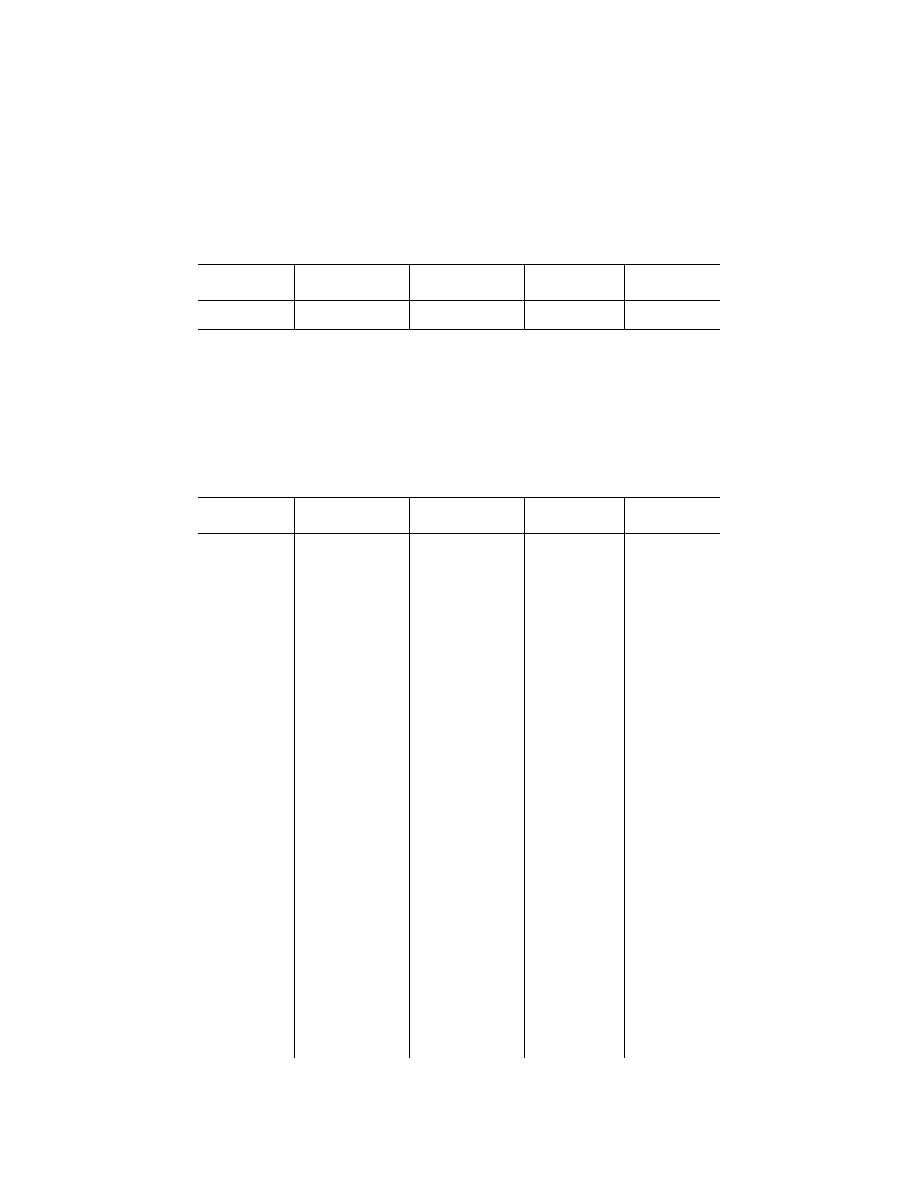
834
14 CFR Ch. I (1–1–24 Edition)
Pt. 91, App. F
Parameters Range
Installed system
1
min-
imum accuracy (to recov-
ered data)
Sampling interval (per
second)
Resolution
4
read out
Autopilot Engaged
(Discrete).
Engaged or Disengaged
..........................................
1.
1
When data sources are aircraft instruments (except altimeters) of acceptable quality to fly the aircraft the recording system
excluding these sensors (but including all other characteristics of the recording system) shall contribute no more than half of the
values in this column.
2
If data from the altitude encoding altimeter (100 ft. resolution) is used, then either one of these parameters should also be re-
corded. If however, altitude is recorded at a minimum resolution of 25 feet, then these two parameters can be omitted.
3
Per cent of full range.
4
This column applies to aircraft manufactured after October 11, 1991.
5
For Pitch Control Position only, for all aircraft manufactured on or after April 6, 2012, the sampling interval (per second) is 8.
Each input must be recorded at this rate. Alternately sampling inputs (interleaving) to meet this sampling interval is prohibited.
[Doc. No. 18334, 54 FR 34327, Aug. 18, 1989, as amended by Amdt. 91–300, 73 FR 12565, Mar. 7,
2008; 73 FR 15280, Mar. 21, 2008; Amdt. 91–313, 75 FR 17046, Apr. 5, 2010; Amdt. 91–329, 78 FR 39971,
July 3, 2013]
A
PPENDIX
F
TO
P
ART
91—H
ELICOPTER
F
LIGHT
R
ECORDER
S
PECIFICATIONS
Parameters Range
Installed system
1
min-
imum accuracy (to recov-
ered data)
Sampling interval (per
second)
Resolution 3 read out
Relative Time (From
Recorded on Prior
to Takeoff).
4 hr minimum ..................
±
0.125% per hour ............
1 .................................
1 sec.
Indicated Airspeed .....
VM in to VD (KIAS) (min-
imum airspeed signal
attainable with installed
pilot-static system).
±
5% or
±
10 kts., which-
ever is greater.
1 .................................
1 kt.
Altitude .......................
¥
1,000 ft. to 20,000 ft.
pressure altitude.
±
100 to
±
700 ft. (see
Table 1, TSO C51–a).
1 .................................
25 to 150 ft.
Magnetic Heading .....
360
°
.................................
±
5
°
...................................
1 .................................
1
°
Vertical Acceleration ..
¥
3g to + 6g ....................
±
0.2g in addition to
±
0.3g
maximum datum.
4 (or 1 per second
where peaks, ref. to
1g are recorded).
0.05g.
Longitudinal Accelera-
tion.
±
1.0g ................................
±
1.5% max. range ex-
cluding datum error of
±
5%.
2 .................................
0.03g.
Pitch Attitude .............
100% of usable range .....
±
2
°
...................................
1 .................................
0.8
°
Roll Attitude ...............
±
60 or 100% of usable
range, whichever is
greater.
±
2
°
...................................
1 .................................
0.8
°
Altitude Rate ..............
±
8,000 fpm ......................
±
10% Resolution 250 fpm
below 12,000 ft. indi-
cated.
1 .................................
250 fpm below
12,000.
Engine Power, Each
Engine
Main Rotor Speed .....
Maximum Range .............
±
5% .................................
1 .................................
1%2.
Free or Power Tur-
bine.
Maximum Range .............
±
5% .................................
1 .................................
1%2.
Engine Torque ...........
Maximum Range .............
±
5% .................................
1 .................................
1%2.
Flight Control
Hydraulic Pressure
Primary (Discrete) .....
High/Low ..........................
..........................................
1.
Secondary—if appli-
cable (Discrete).
High/Low ..........................
..........................................
1.
Radio Transmitter
Keying (Discrete).
On/Off ..............................
..........................................
1.
Autopilot Engaged
(Discrete).
Engaged or Disengaged
..........................................
1.
SAS Status-Engaged
(Discrete).
Engaged or Disengaged
..........................................
1.
SAS Fault Status
(Discrete).
Fault/OK ..........................
..........................................
1.
Flight Controls
Collective
4
.................
Full range ........................
±
3% .................................
2 .................................
1%2.
Pedal Position
4
.........
Full range ........................
±
3% .................................
2 .................................
1%2.
Lat. Cyclic
4
................
Full range ........................
±
3% .................................
2 .................................
1%2.
Long. Cyclic
4
.............
Full range ........................
±
3% .................................
2 .................................
1%2.
VerDate Sep<11>2014
14:00 Mar 14, 2024
Jkt 262047
PO 00000
Frm 00844
Fmt 8010
Sfmt 8002
Q:\14\14V2.TXT
PC31
aworley on LAPBH6H6L3 with DISTILLER
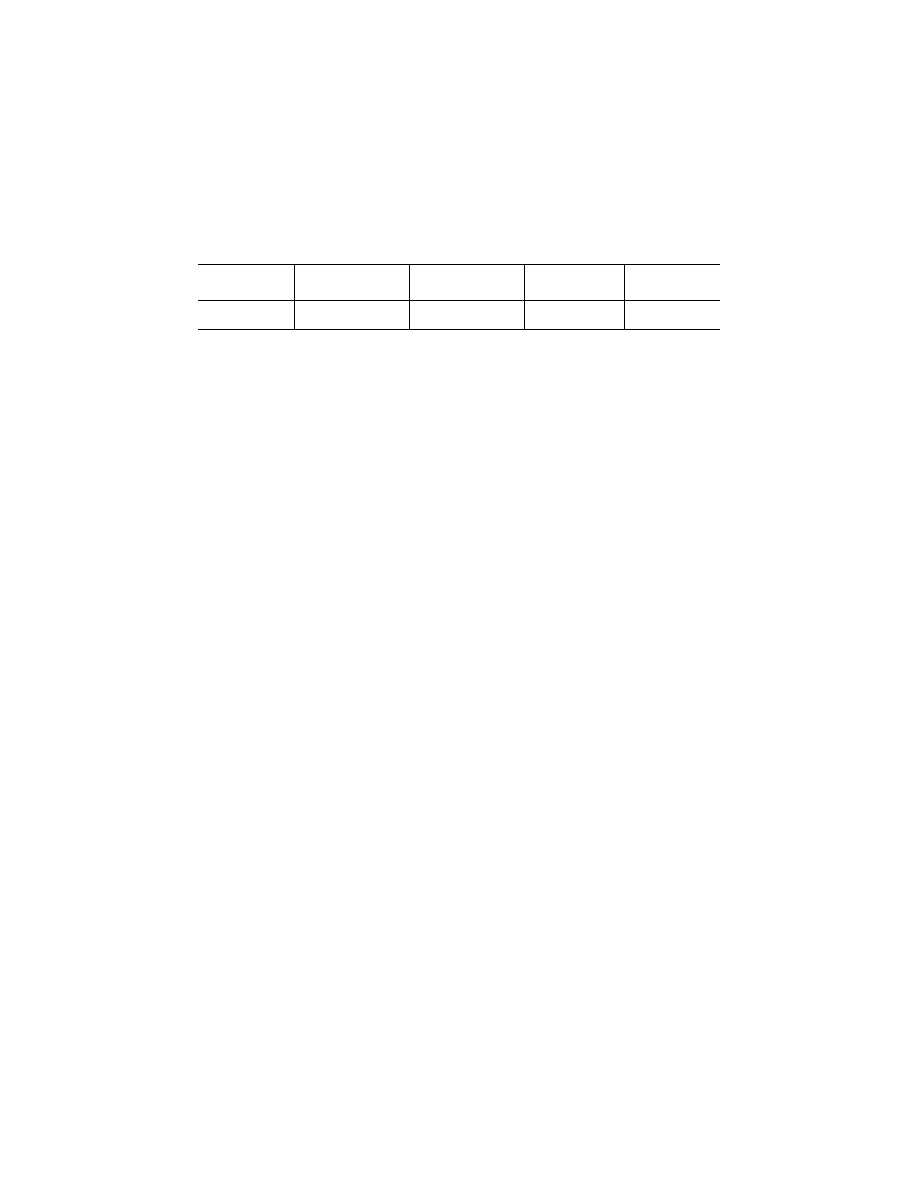
835
Federal Aviation Administration, DOT
Pt. 91, App. G
Parameters Range
Installed system
1
min-
imum accuracy (to recov-
ered data)
Sampling interval (per
second)
Resolution 3 read out
Controllable Stabilator
Position
4
.
Full range ........................
±
3% .................................
2 .................................
1%2.
1
When data sources are aircraft instruments (except altimeters) of acceptable quality to fly the aircraft the recording system
excluding these sensors (but including all other characteristics of the recording system) shall contribute no more than half of the
values in this column.
2
Per cent of full range.
3
This column applies to aircraft manufactured after October 11, 1991.
4
For all aircraft manufactured on or after April 6, 2012, the sampling interval per second is 4.
[Doc. No. 18334, 54 FR 34328, Aug. 18, 1989; 54 FR 41211, Oct. 5, 1989; 54 FR 53036, Dec. 26, 1989;
Amdt. 91–300, 73 FR 12565, Mar. 7, 2008; 73 FR 15280, Mar. 21, 2008; Amdt. 91–313, 75 FR 17046,
Apr. 5, 2010]
A
PPENDIX
G
TO
P
ART
91—O
PERATIONS IN
R
EDUCED
V
ERTICAL
S
EPARATION
M
INIMUM
(RVSM) A
IRSPACE
Section 1. Definitions
Reduced Vertical Separation Minimum
(RVSM) Airspace. Within RVSM airspace, air
traffic control (ATC) separates aircraft by a
minimum of 1,000 feet vertically between FL
290 and FL 410 inclusive. Air-traffic control
notifies operators of RVSM airspace by pro-
viding route planning information.
RVSM Group Aircraft. Aircraft within a
group of aircraft, approved as a group by the
Administrator, in which each of the aircraft
satisfy each of the following:
(a) The aircraft have been manufactured to
the same design, and have been approved
under the same type certificate, amended
type certificate, or supplemental type cer-
tificate.
(b) The static system of each aircraft is in-
stalled in a manner and position that is the
same as those of the other aircraft in the
group. The same static source error correc-
tion is incorporated in each aircraft of the
group.
(c) The avionics units installed in each air-
craft to meet the minimum RVSM equip-
ment requirements of this appendix are:
(1) Manufactured to the same manufac-
turer specification and have the same part
number; or
(2) Of a different manufacturer or part
number, if the applicant demonstrates that
the equipment provides equivalent system
performance.
RVSM Nongroup Aircraft. An aircraft that
is approved for RVSM operations as an indi-
vidual aircraft.
RVSM Flight envelope. An RVSM flight en-
velope includes the range of Mach number,
weight divided by atmospheric pressure
ratio, and altitudes over which an aircraft is
approved to be operated in cruising flight
within RVSM airspace. RVSM flight enve-
lopes are defined as follows:
(a) The
full RVSM flight envelope is bounded
as follows:
(1) The altitude flight envelope extends
from FL 290 upward to the lowest altitude of
the following:
(i) FL 410 (the RVSM altitude limit);
(ii) The maximum certificated altitude for
the aircraft; or
(iii) The altitude limited by cruise thrust,
buffet, or other flight limitations.
(2) The airspeed flight envelope extends:
(i) From the airspeed of the slats/flaps-up
maximum endurance (holding) airspeed, or
the maneuvering airspeed, whichever is
lower;
(ii) To the maximum operating airspeed
(V
mo
/M
mo
), or airspeed limited by cruise
thrust buffet, or other flight limitations,
whichever is lower.
(3) All permissible gross weights within the
flight envelopes defined in paragraphs (1) and
(2) of this definition.
(b) The
basic RVSM flight envelope is the
same as the full RVSM flight envelope ex-
cept that the airspeed flight envelope ex-
tends:
(1) From the airspeed of the slats/flaps-up
maximum endurance (holding) airspeed, or
the maneuver airspeed, whichever is lower;
(2) To the upper Mach/airspeed boundary
defined for the full RVSM flight envelope, or
a specified lower value not less than the
long-range cruise Mach number plus .04
Mach, unless further limited by available
cruise thrust, buffet, or other flight limita-
tions.
Section 2. Aircraft Approval
(a) Except as specified in Section 9 of this
appendix, an operator may be authorized to
conduct RVSM operations if the Adminis-
trator finds that its aircraft comply with
this section.
(b) The applicant for authorization shall
submit the appropriate data package for air-
craft approval. The package must consist of
at least the following:
(1) An identification of the RVSM aircraft
group or the nongroup aircraft;
(2) A definition of the RVSM flight enve-
lopes applicable to the subject aircraft;
VerDate Sep<11>2014
14:00 Mar 14, 2024
Jkt 262047
PO 00000
Frm 00845
Fmt 8010
Sfmt 8002
Q:\14\14V2.TXT
PC31
aworley on LAPBH6H6L3 with DISTILLER

836
14 CFR Ch. I (1–1–24 Edition)
Pt. 91, App. G
(3) Documentation that establishes compli-
ance with the applicable RVSM aircraft re-
quirements of this section; and
(4) The conformity tests used to ensure
that aircraft approved with the data package
meet the RVSM aircraft requirements.
(c)
Altitude-keeping equipment: All aircraft.
To approve an aircraft group or a nongroup
aircraft, the Administrator must find that
the aircraft meets the following require-
ments:
(1) The aircraft must be equipped with two
operational independent altitude measure-
ment systems.
(2) The aircraft must be equipped with at
least one automatic altitude control system
that controls the aircraft altitude—
(i) Within a tolerance band of
±
65 feet
about an acquired altitude when the aircraft
is operated in straight and level flight under
nonturbulent, nongust conditions; or
(ii) Within a tolerance band of
±
130 feet
under nonturbulent, nongust conditions for
aircraft for which application for type cer-
tification occurred on or before April 9, 1997
that are equipped with an automatic altitude
control system with flight management/per-
formance system inputs.
(3) The aircraft must be equipped with an
altitude alert system that signals an alert
when the altitude displayed to the flight
crew deviates from the selected altitude by
more than:
(i)
±
300 feet for aircraft for which applica-
tion for type certification was made on or
before April 9, 1997; or
(ii)
±
200 feet for aircraft for which applica-
tion for type certification is made after
April 9, 1997.
(d)
Altimetry system error containment: Group
aircraft for which application for type certifi-
cation was made on or before April 9, 1997. To
approve group aircraft for which application
for type certification was made on or before
April 9, 1997, the Administrator must find
that the altimetry system error (ASE) is
contained as follows:
(1) At the point in the basic RVSM flight
envelope where mean ASE reaches its largest
absolute value, the absolute value may not
exceed 80 feet.
(2) At the point in the basic RVSM flight
envelope where mean ASE plus three stand-
ard deviations reaches its largest absolute
value, the absolute value may not exceed 200
feet.
(3) At the point in the full RVSM flight en-
velope where mean ASE reaches its largest
absolute value, the absolute value may not
exceed 120 feet.
(4) At the point in the full RVSM flight en-
velope where mean ASE plus three standard
deviations reaches its largest absolute value,
the absolute value may not exceed 245 feet.
(5)
Necessary operating restrictions. If the ap-
plicant demonstrates that its aircraft other-
wise comply with the ASE containment re-
quirements, the Administrator may estab-
lish an operating restriction on that appli-
cant’s aircraft to restrict the aircraft from
operating in areas of the basic RVSM flight
envelope where the absolute value of mean
ASE exceeds 80 feet, and/or the absolute
value of mean ASE plus three standard devi-
ations exceeds 200 feet; or from operating in
areas of the full RVSM flight envelope where
the absolute value of the mean ASE exceeds
120 feet and/or the absolute value of the
mean ASE plus three standard deviations ex-
ceeds 245 feet.
(e)
Altimetry system error containment: Group
aircraft for which application for type certifi-
cation is made after April 9, 1997. To approve
group aircraft for which application for type
certification is made after April 9, 1997, the
Administrator must find that the altimetry
system error (ASE) is contained as follows:
(1) At the point in the full RVSM flight en-
velope where mean ASE reaches its largest
absolute value, the absolute value may not
exceed 80 feet.
(2) At the point in the full RVSM flight en-
velope where mean ASE plus three standard
deviations reaches its largest absolute value,
the absolute value may not exceed 200 feet.
(f)
Altimetry system error containment:
Nongroup aircraft. To approve a nongroup air-
craft, the Administrator must find that the
altimetry system error (ASE) is contained as
follows:
(1) For each condition in the basic RVSM
flight envelope, the largest combined abso-
lute value for residual static source error
plus the avionics error may not exceed 160
feet.
(2) For each condition in the full RVSM
flight envelope, the largest combined abso-
lute value for residual static source error
plus the avionics error may not exceed 200
feet.
(g) Traffic Alert and Collision Avoidance
System (TCAS) Compatibility With RVSM
Operations: All aircraft. After March 31, 2002,
unless otherwise authorized by the Adminis-
trator, if you operate an aircraft that is
equipped with TCAS II in RVSM airspace, it
must be a TCAS II that meets TSO C–119b
(Version 7.0), or a later version.
(h) If the Administrator finds that the ap-
plicant’s aircraft comply with this section,
the Administrator notifies the applicant in
writing.
Section 3. Operator Authorization
(a) Except as specified in Section 9 of this
appendix, authority for an operator to con-
duct flight in airspace where RVSM is ap-
plied is issued in operations specifications, a
Letter of Authorization, or management
specifications issued under subpart K of this
part, as appropriate. To issue an RVSM au-
thorization under this section, the Adminis-
trator must find that the operator’s aircraft
VerDate Sep<11>2014
14:00 Mar 14, 2024
Jkt 262047
PO 00000
Frm 00846
Fmt 8010
Sfmt 8002
Q:\14\14V2.TXT
PC31
aworley on LAPBH6H6L3 with DISTILLER

837
Federal Aviation Administration, DOT
Pt. 91, App. G
have been approved in accordance with Sec-
tion 2 of this appendix and the operator com-
plies with this section.
(b) Except as specified in Section 9 of this
appendix, an applicant seeking authorization
to operate within RVSM airspace must apply
in a form and manner prescribed by the Ad-
ministrator. The application must include
the following:
(1) [Reserved]
(2) For an applicant who operates under
part 121 or 135 of this chapter or under sub-
part K of this part, initial and recurring
pilot training requirements.
(3) Policies and procedures: An applicant
who operates under part 121 or 135 of this
chapter or under subpart K of this part must
submit RVSM policies and procedures that
will enable it to conduct RVSM operations
safely.
(c) In a manner prescribed by the Adminis-
trator, an operator seeking authorization
under this section must provide evidence
that:
(1) It is capable to operate and maintain
each aircraft or aircraft group for which it
applies for approval to operate in RVSM air-
space; and
(2) Each pilot has knowledge of RVSM re-
quirements, policies, and procedures suffi-
cient for the conduct of operations in RVSM
airspace.
Section 4. RVSM Operations
(a) Each person requesting a clearance to
operate within RVSM airspace shall cor-
rectly annotate the flight plan filed with air
traffic control with the status of the oper-
ator and aircraft with regard to RVSM ap-
proval. Each operator shall verify RVSM ap-
plicability for the flight planned route
through the appropriate flight planning in-
formation sources.
(b) No person may show, on the flight plan
filed with air traffic control, an operator or
aircraft as approved for RVSM operations, or
operate on a route or in an area where RVSM
approval is required, unless:
(1) The operator is authorized by the Ad-
ministrator to perform such operations in
accordance with Section 3 or Section 9 of
this appendix, as applicable.
(2) The aircraft—
(i) Has been approved and complies with
Section 2 this appendix; or
(ii) Complies with Section 9 of this appen-
dix.
(3) Each pilot has knowledge of RVSM re-
quirements, policies, and procedures suffi-
cient for the conduct of operations in RVSM
airspace.
Section 5. Deviation Authority Approval
The Administrator may authorize an air-
craft operator to deviate from the require-
ments of §§ 91.180 or 91.706 for a specific flight
in RVSM airspace if—
(a) The operator submits a request in a
time and manner acceptable to the Adminis-
trator; and
(b) At the time of filing the flight plan for
that flight, ATC determines that the aircraft
may be provided appropriate separation and
that the flight will not interfere with, or im-
pose a burden on, RVSM operations.
Section 6. Reporting Altitude-Keeping Errors
Each operator shall report to the Adminis-
trator each event in which the operator’s
aircraft has exhibited the following altitude-
keeping performance:
(a) Total vertical error of 300 feet or more;
(b) Altimetry system error of 245 feet or
more; or
(c) Assigned altitude deviation of 300 feet
or more.
Section 7. Removal or Amendment of Authority
The Administrator may prohibit or re-
strict an operator from conducting oper-
ations in RVSM airspace, if the Adminis-
trator determines that the operator is not
complying, or is unable to comply, with this
appendix or subpart H of this part. Examples
of reasons for amendment, revocation, or re-
striction include, but are not limited to, an
operator’s:
(a) Committing one or more altitude-keep-
ing errors in RVSM airspace;
(b) Failing to make an effective and timely
response to identify and correct an altitude-
keeping error; or
(c) Failing to report an altitude-keeping
error.
Section 8. Airspace Designation
RVSM may be applied in all ICAO Flight
Information Regions (FIRs).
Section 9. Aircraft Equipped With Automatic
Dependent Surveillance—Broadcast Out
An operator is authorized to conduct flight
in airspace in which RVSM is applied pro-
vided:
(a) The aircraft is equipped with the fol-
lowing:
(1) Two operational independent altitude
measurement systems.
(2) At least one automatic altitude control
system that controls the aircraft altitude—
(i) Within a tolerance band of
±
65 feet
about an acquired altitude when the aircraft
is operated in straight and level flight under
nonturbulent, nongust conditions; or
(ii) Within a tolerance band of
±
130 feet
under nonturbulent, nongust conditions for
aircraft for which application for type cer-
tification occurred on or before April 9, 1997,
that are equipped with an automatic altitude
control system with flight management/per-
formance system inputs.
VerDate Sep<11>2014
14:00 Mar 14, 2024
Jkt 262047
PO 00000
Frm 00847
Fmt 8010
Sfmt 8002
Q:\14\14V2.TXT
PC31
aworley on LAPBH6H6L3 with DISTILLER

838
14 CFR Ch. I (1–1–24 Edition)
Pt. 93
(3) An altitude alert system that signals an
alert when the altitude displayed to the
flightcrew deviates from the selected alti-
tude by more than—
(i)
±
300 feet for aircraft for which applica-
tion for type certification was made on or
before April 9, 1997; or
(ii)
±
200 feet for aircraft for which applica-
tion for type certification is made after
April 9, 1997.
(4) A TCAS II that meets TSO C–119b
(Version 7.0), or a later version, if equipped
with TCAS II, unless otherwise authorized
by the Administrator.
(5) Unless authorized by ATC or the foreign
country where the aircraft is operated, an
ADS–B Out system that meets the equip-
ment performance requirements of § 91.227 of
this part. The aircraft must have its height-
keeping performance monitored in a form
and manner acceptable to the Administrator.
(b) The altimetry system error (ASE) of
the aircraft does not exceed 200 feet when op-
erating in RVSM airspace.
[Doc. No. 28870, 62 FR 17487, Apr. 9, 1997, as
amended by Amdt. 91–261, 65 FR 5942, Feb. 7,
2000; Amdt. 91–271, 66 FR 63895, Dec. 10, 2001;
Amdt. 91–274, 68 FR 54584, Sept. 17, 2003;
Amdt. 91–276, 68 FR 70133, Dec. 17, 2003; Dock-
et FAA–2015–1746, Amdt. 91–342, 81 FR 47017,
July 20, 2016; Docket FAA–2016–9154, Amdt.
91–348, 82 FR 39664, Aug. 22, 2017; FAA-2017-
0782, Amdt. No. 91-354, 83 FR 65492, Dec. 21,
2018]
PART 93—SPECIAL AIR TRAFFIC
RULES
S
PECIAL
F
EDERAL
A
VIATION
R
EGULATION
N
O
.
60 [N
OTE
]
Subpart A—General
Sec.
93.1
Applicability.
Subparts B–C
[
Reserved
]
Subpart D—Anchorage, Alaska, Terminal
Area
93.51
Applicability.
93.53
Description of area.
93.55
Subdivision of Terminal Area.
93.57
General rules: All segments.
93.59
General rules: International segment.
93.61
General rules: Lake Hood segment.
93.63
General rules: Merrill segment.
93.65
General rules: Elmendorf segment.
93.67
General rules: Bryant segment.
93.68
General rules: Seward Highway seg-
ment.
93.69
Special requirements, Lake Campbell
and Sixmile Lake Airports.
Subpart E—Flight Restrictions in the Vicinity
of Niagara Falls, New York
93.71
General operating procedures.
Subpart F—Valparaiso, Florida, Terminal
Area
93.80
Applicability.
93.81
Applicability and description of area.
93.83
Aircraft operations.
Subpart G—Special Flight Rules in the
Vicinity of Los Angeles International Airport
93.91
Applicability.
93.93
Description of area.
93.95
General operating procedures.
93.97
Operations in the SFRA.
Subpart H—Mandatory Use of the New
York North Shore Helicopter Route
93.101
Applicability
93.103
Helicopter operations.
Subpart I
[
Reserved
]
Subpart J—Lorain County Regional Airport
Traffic Rule
93.117
Applicability.
93.119
Aircraft operations.
Subpart K—High Density Traffic Airports
93.121
Applicability.
93.123
High density traffic airports.
93.125
Arrival or departure reservation.
93.129
Additional operations.
93.130
Suspension of allocations.
93.133
Exceptions.
Subpart L
[
Reserved
]
Subpart M—Ketchikan International Airport
Traffic Rule
93.151
Applicability.
93.152
Description of area.
93.153
Communications.
93.155
Aircraft operations.
Subpart N—Pearson Field (Vancouver, WA)
Airport Traffic Rule
93.161
Applicability.
93.162
Description of area.
93.163
Aircraft operations.
Subpart O—Special Flight Rules in the
Vicinity of Luke AFB, AZ
93.175
Applicability.
93.176
Description of area.
93.177
Operations in the Special Air Traffic
Rule Area.
VerDate Sep<11>2014
14:00 Mar 14, 2024
Jkt 262047
PO 00000
Frm 00848
Fmt 8010
Sfmt 8006
Q:\14\14V2.TXT
PC31
aworley on LAPBH6H6L3 with DISTILLER


































































































































































